My most current blog entry:
Entries in Old Doors & Windows (41)
Ratchaburi Ramble
 Wednesday, April 6, 2022 at 5:36PM
Wednesday, April 6, 2022 at 5:36PM One of the benefits of having a wife who is a serious golfer is that I get to tag along when she goes on an out-of-Bangkok golf junket with her pals. We were on vacation in the seaside town of Hua Hin and made the short drive north to the Ratchaburi Royal Golf Club early one morning after a spactacular sunrise over the Gulf of Thailand . . . . and while she played a competitive round, I explored the nearby countryside, the old town market in Ratchaburi town, and the 10th century Wat Mahathat Worawihan.
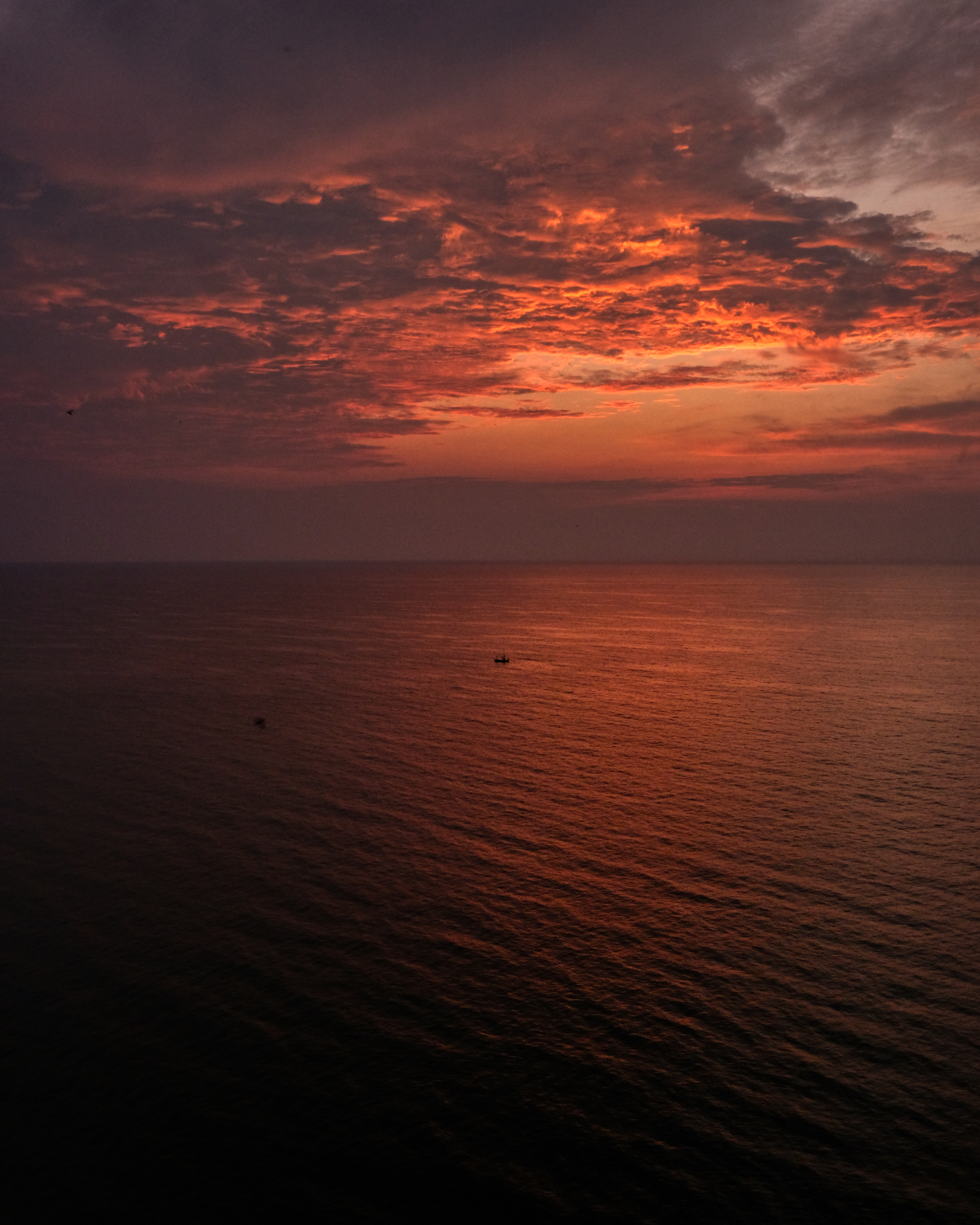 It's nice to sit on the balcony drinking the the first morning cup of coffee while the sun is rising over the Gulf of Thailand. The squid fishermen were returning with their catch after having been out to sea all night.
It's nice to sit on the balcony drinking the the first morning cup of coffee while the sun is rising over the Gulf of Thailand. The squid fishermen were returning with their catch after having been out to sea all night.
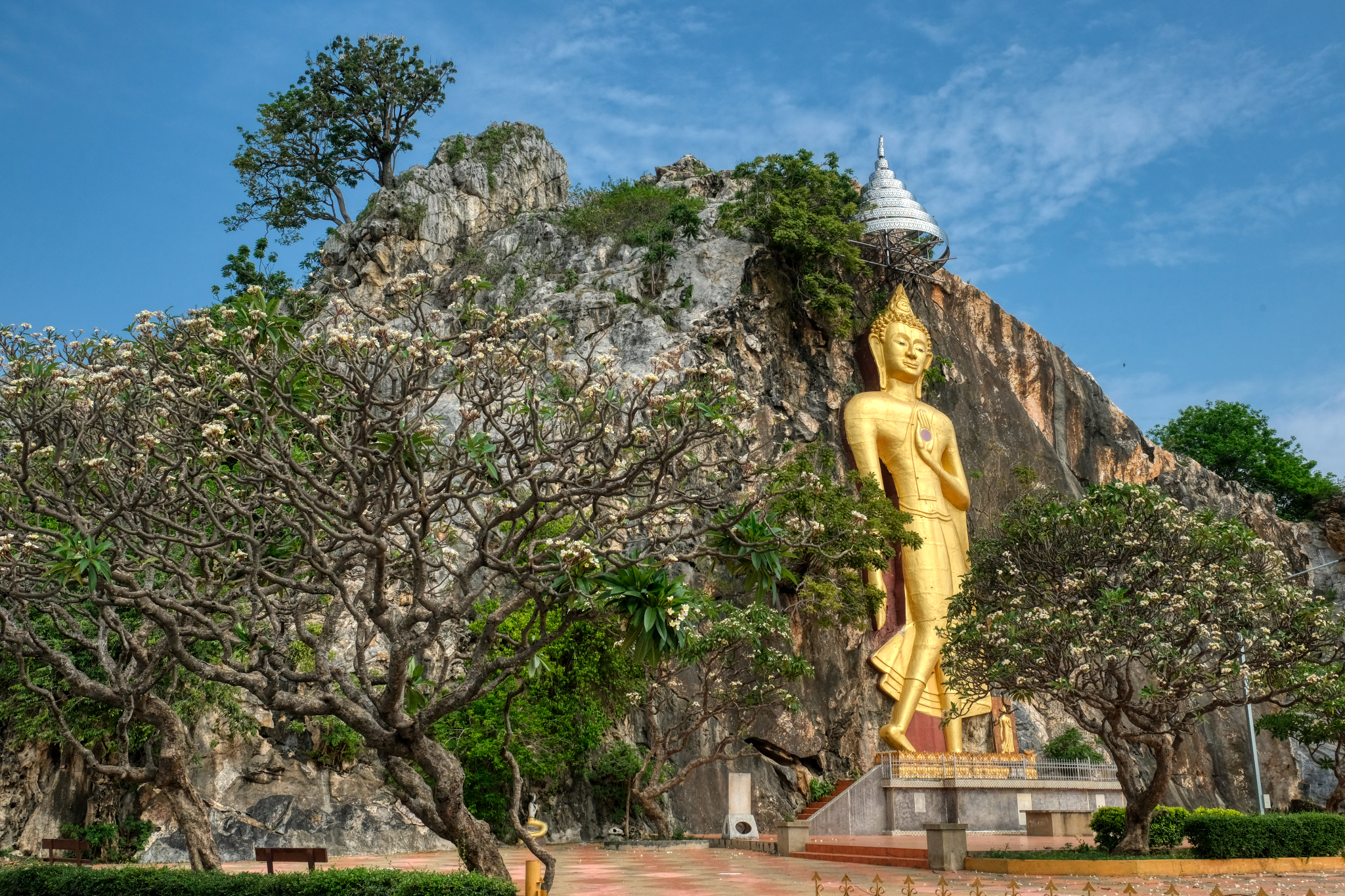 Along the Ratchaburi highway . . . a giant Buddha statue . . . without a place name.
Along the Ratchaburi highway . . . a giant Buddha statue . . . without a place name.
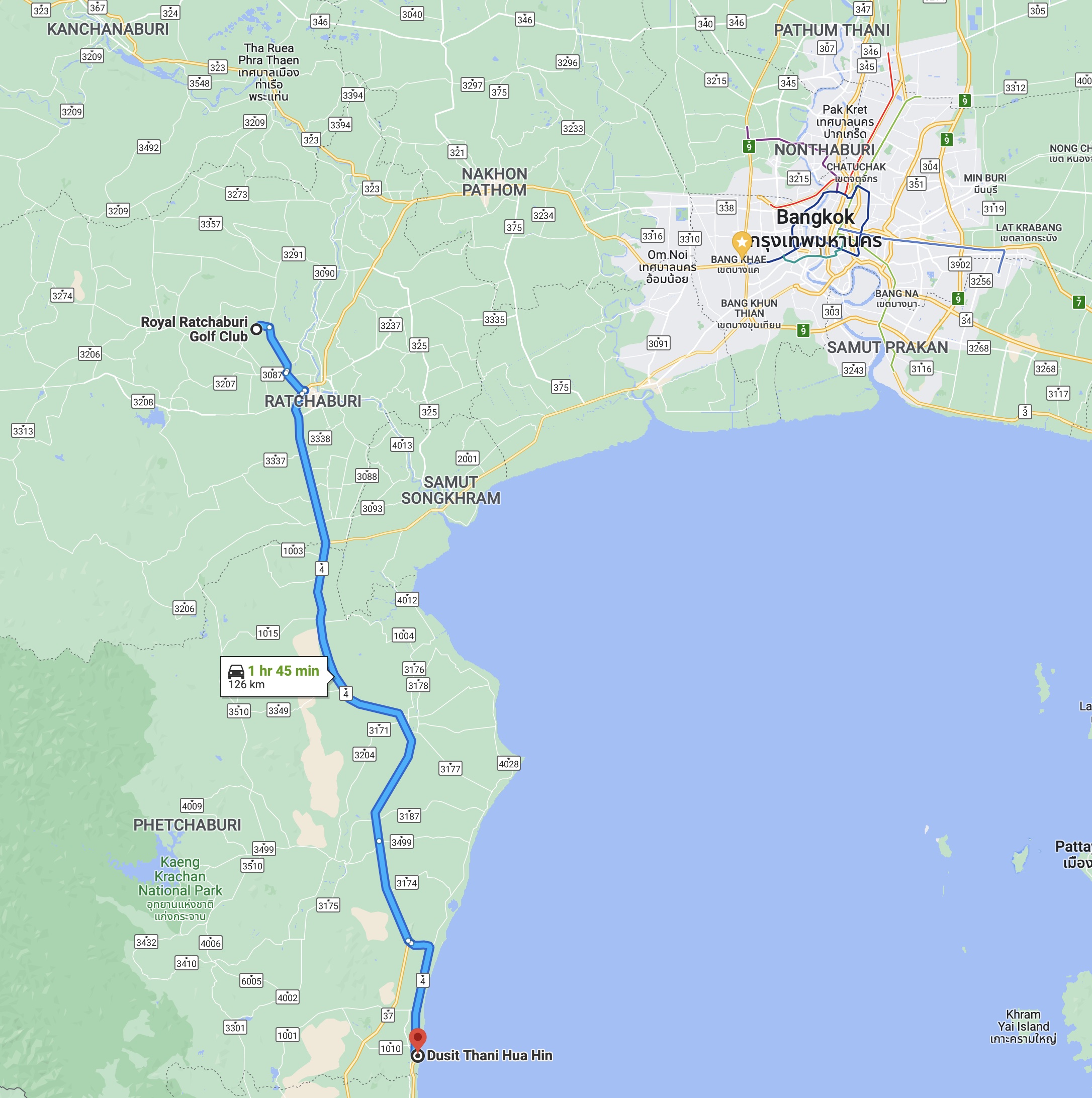 Only an hour and 45 minutes away . . . up and into the hilly Ratchaburi Province.
Only an hour and 45 minutes away . . . up and into the hilly Ratchaburi Province.
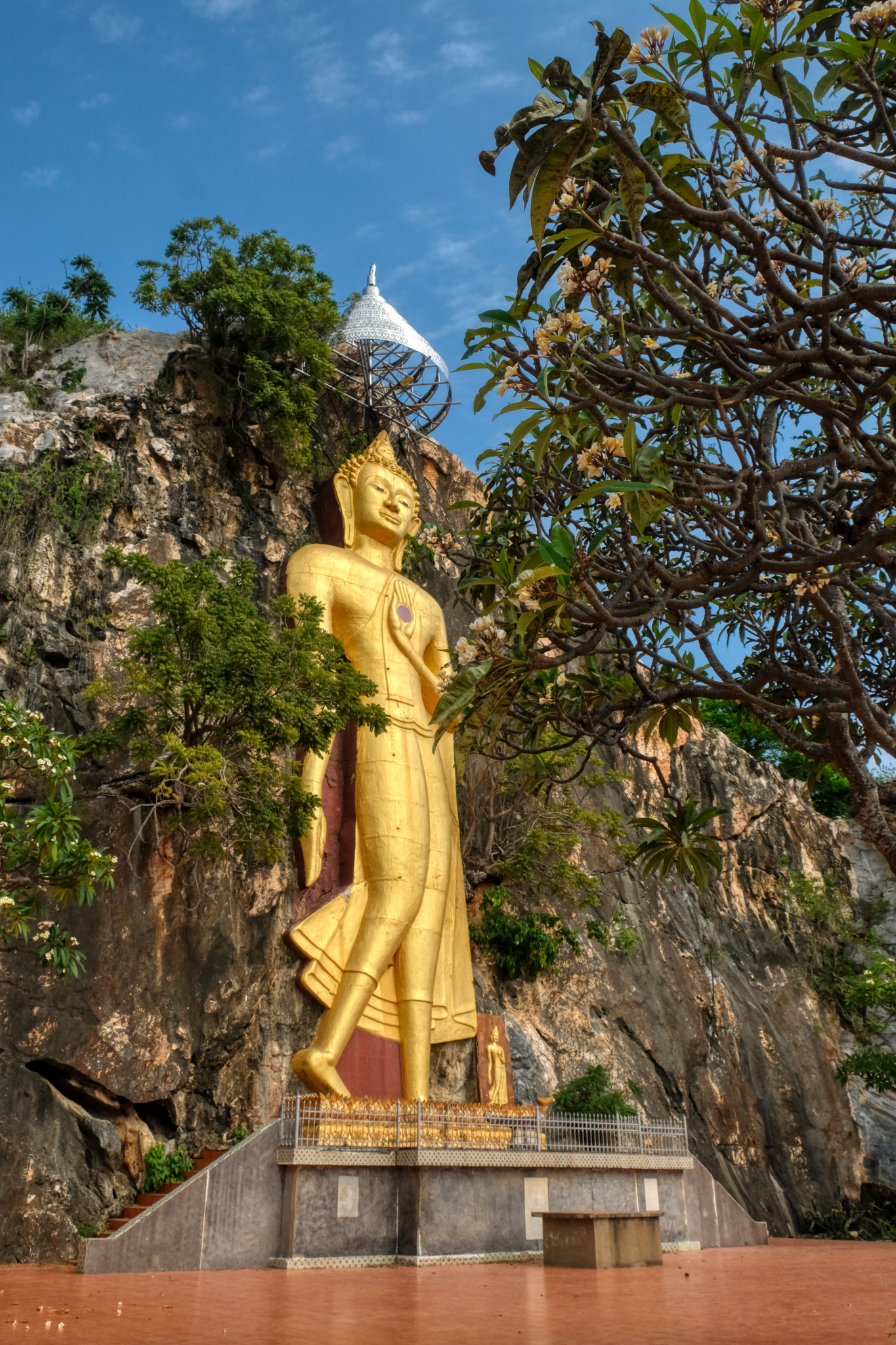 Small provincial roads in Thailand always serve up some amazing sights.
Small provincial roads in Thailand always serve up some amazing sights.
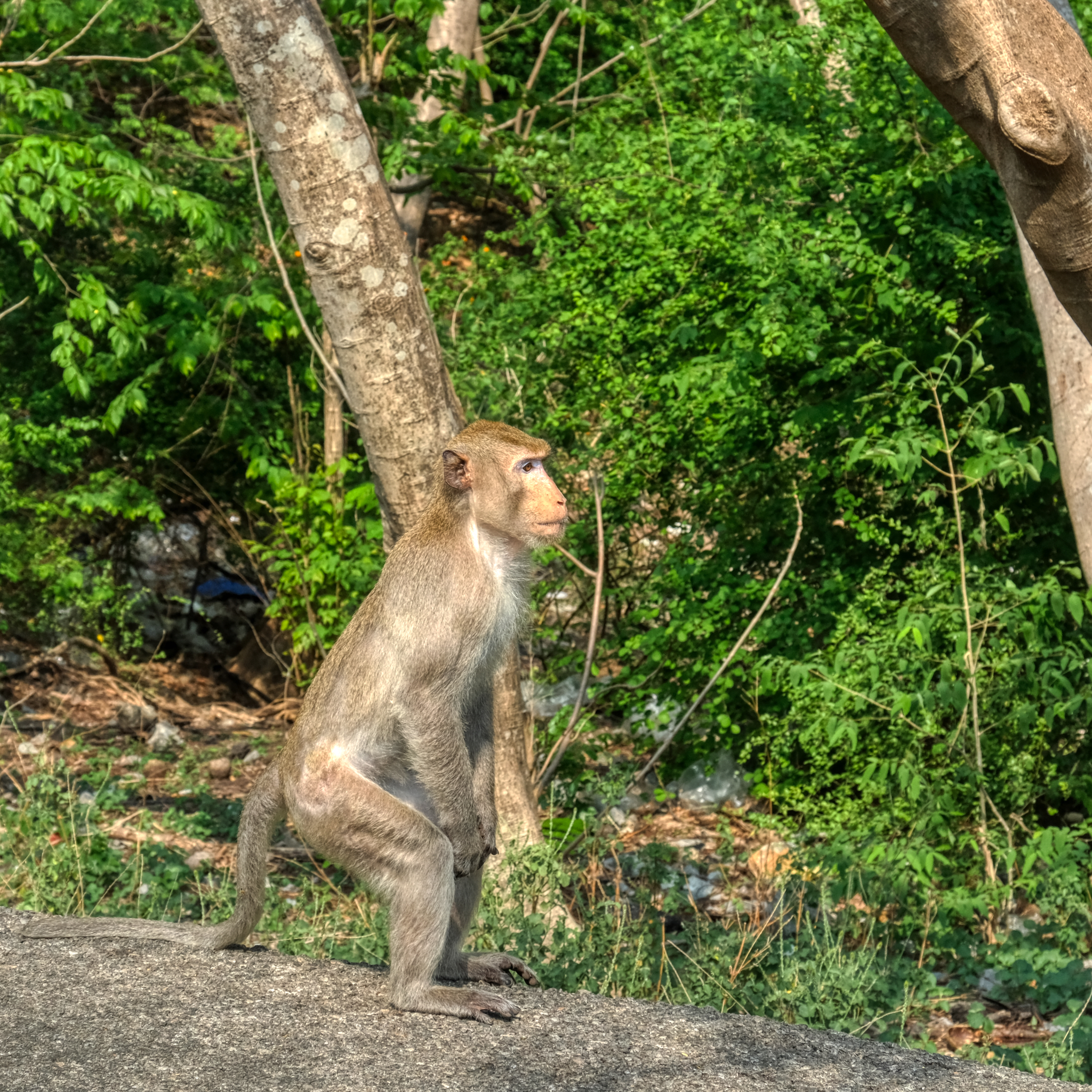 Yes, they have monkeys in Thailand. This one, and about 20 of his buddies kept me from leaving my car to walk up a trail to a large cave Buddha temple.
Yes, they have monkeys in Thailand. This one, and about 20 of his buddies kept me from leaving my car to walk up a trail to a large cave Buddha temple.
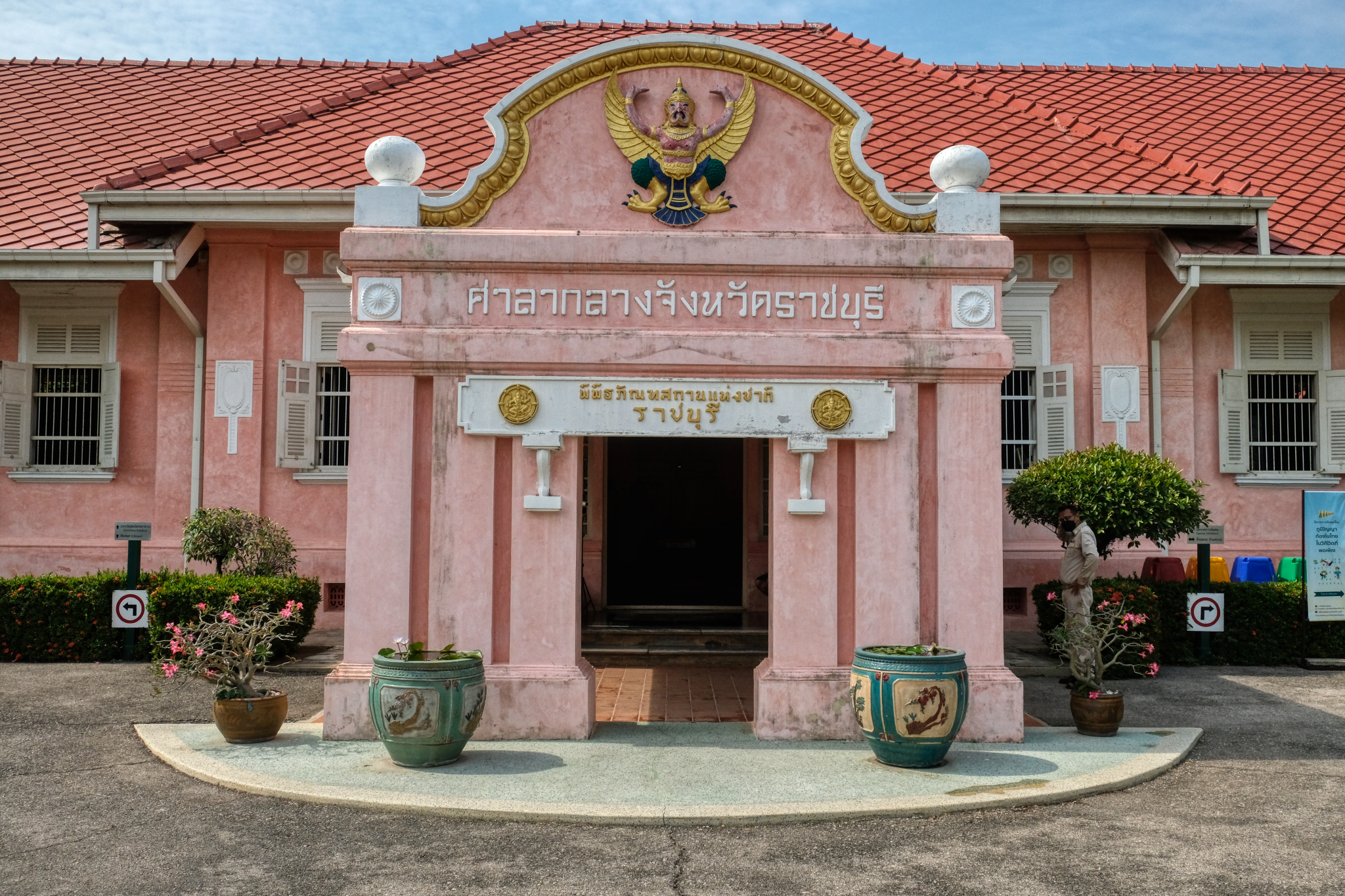 As I was on a 'ramble', I had no particular place to go. I made my way to Ratchaburi, a town I had never visited. I arrived in Ratchaburi on small roads and on the outskirts of town I discovered this wonderful place: The Ratchaburi National Museum.
As I was on a 'ramble', I had no particular place to go. I made my way to Ratchaburi, a town I had never visited. I arrived in Ratchaburi on small roads and on the outskirts of town I discovered this wonderful place: The Ratchaburi National Museum.
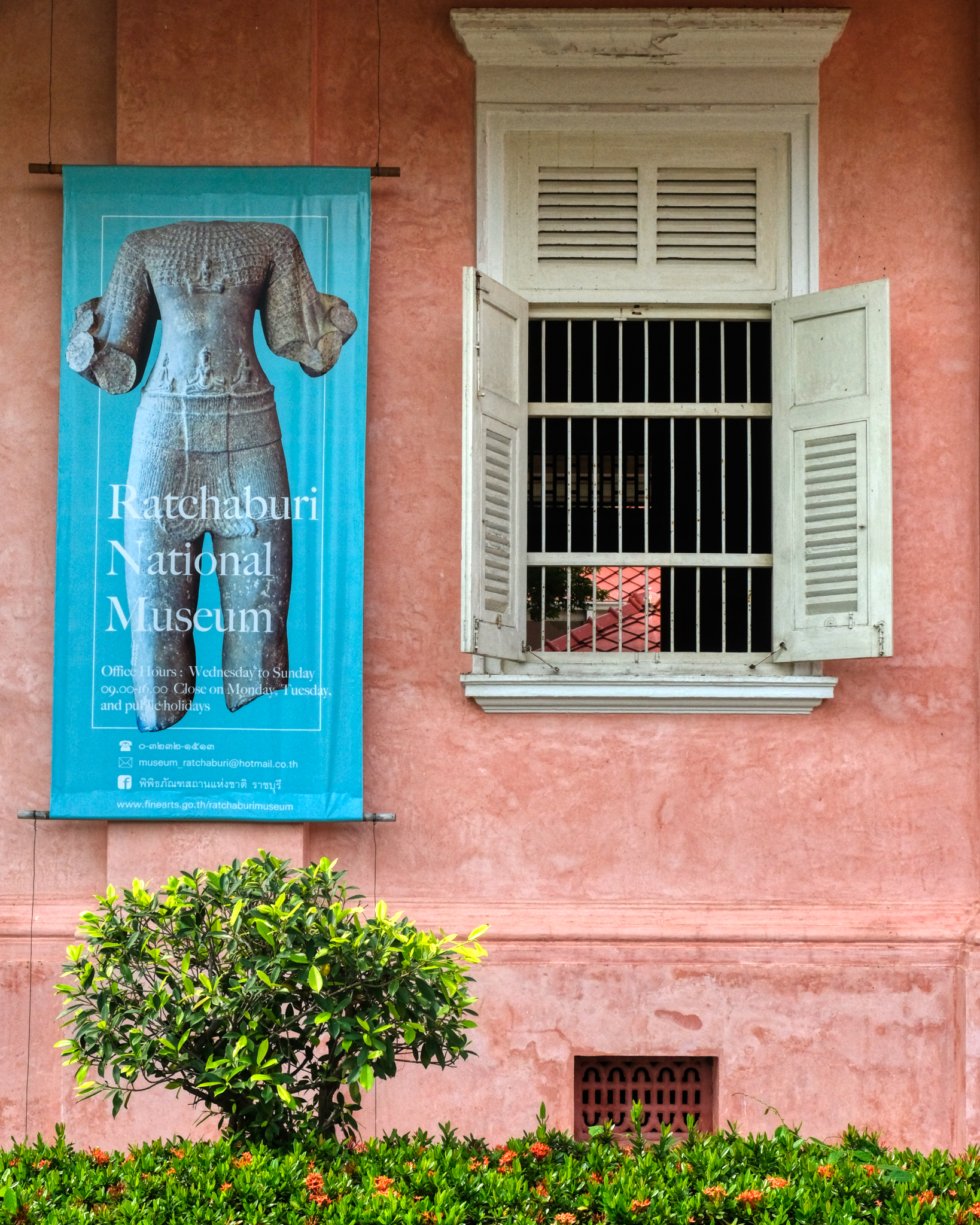 It was a gorgeous building . . . old Thai monumental style.
It was a gorgeous building . . . old Thai monumental style.
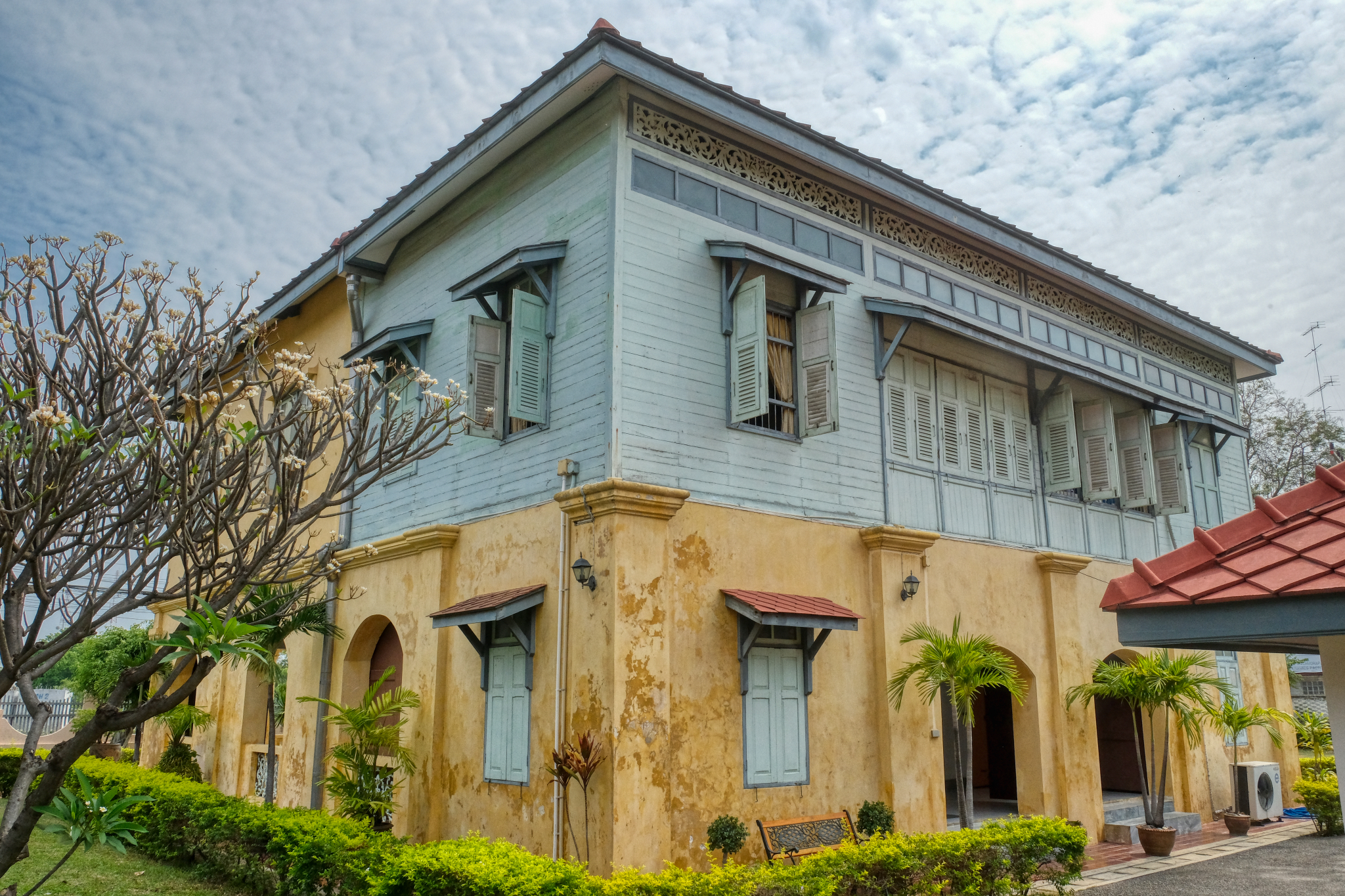 There were two buildings on the museum property. I adored the patina, color, and style of this old gem.
There were two buildings on the museum property. I adored the patina, color, and style of this old gem.
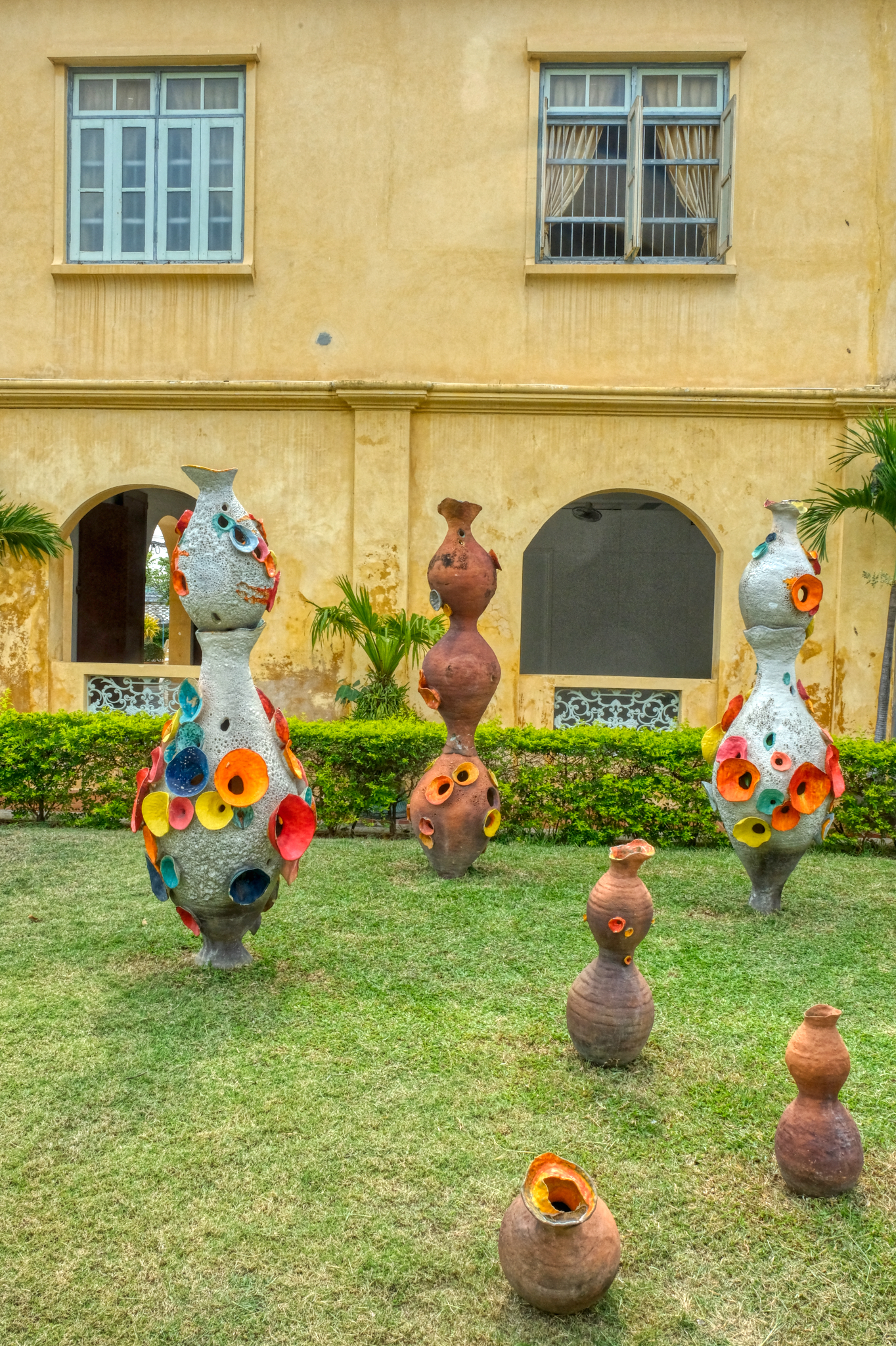 Being a museum, they had yard art too.
Being a museum, they had yard art too.
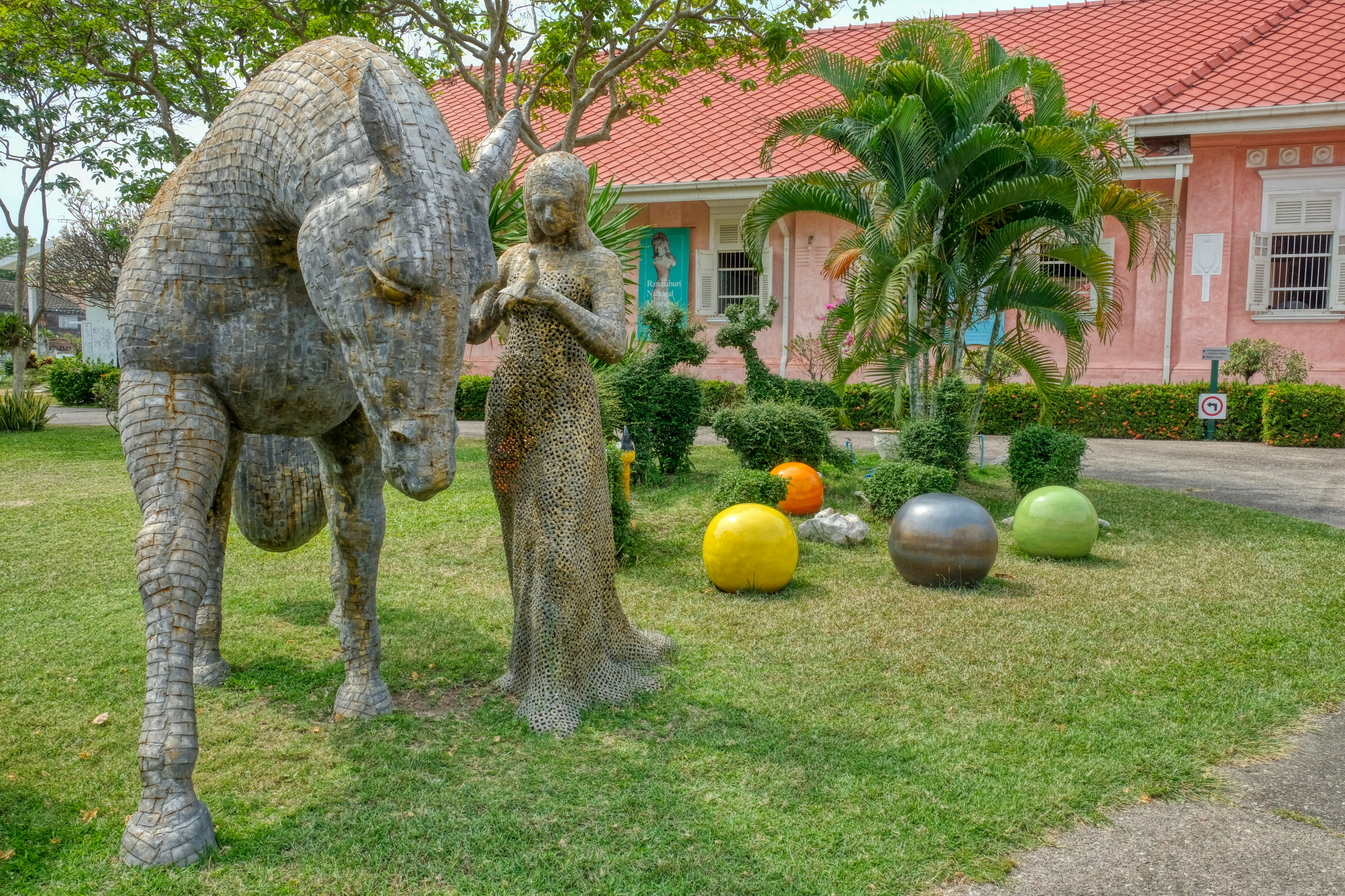 This large metal sculpture was fantastic.
This large metal sculpture was fantastic.
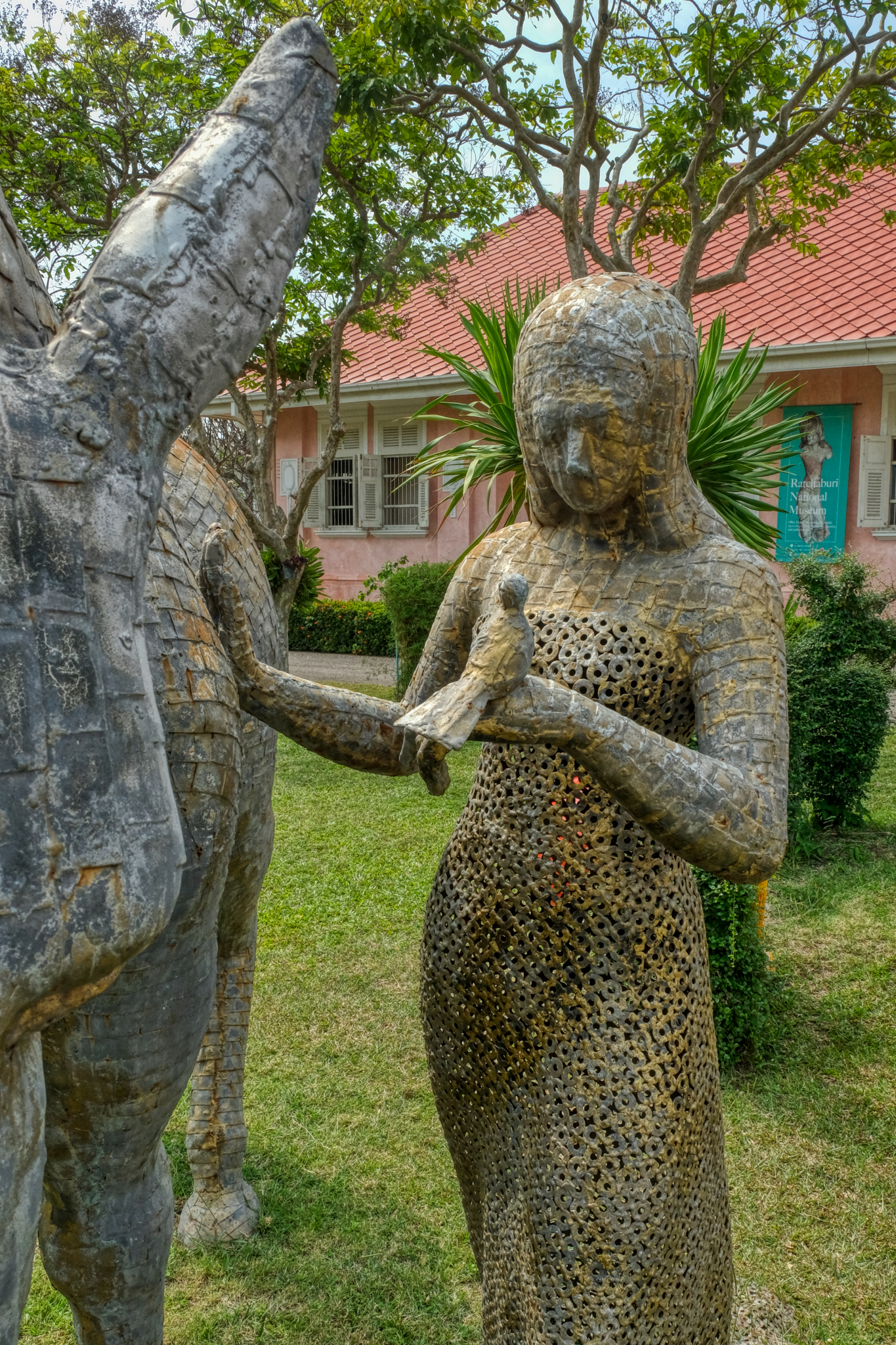 Made entirely of ordinary steel washers and small squares of steel. Amazing.
Made entirely of ordinary steel washers and small squares of steel. Amazing.
 The museum rules strictly prohibited photography of the exhibits . . . and they enforced this rule by having one of the museum staff follow me from room to room. They did, however, allow me to photograph the halls and courtyard when I asked.
The museum rules strictly prohibited photography of the exhibits . . . and they enforced this rule by having one of the museum staff follow me from room to room. They did, however, allow me to photograph the halls and courtyard when I asked.
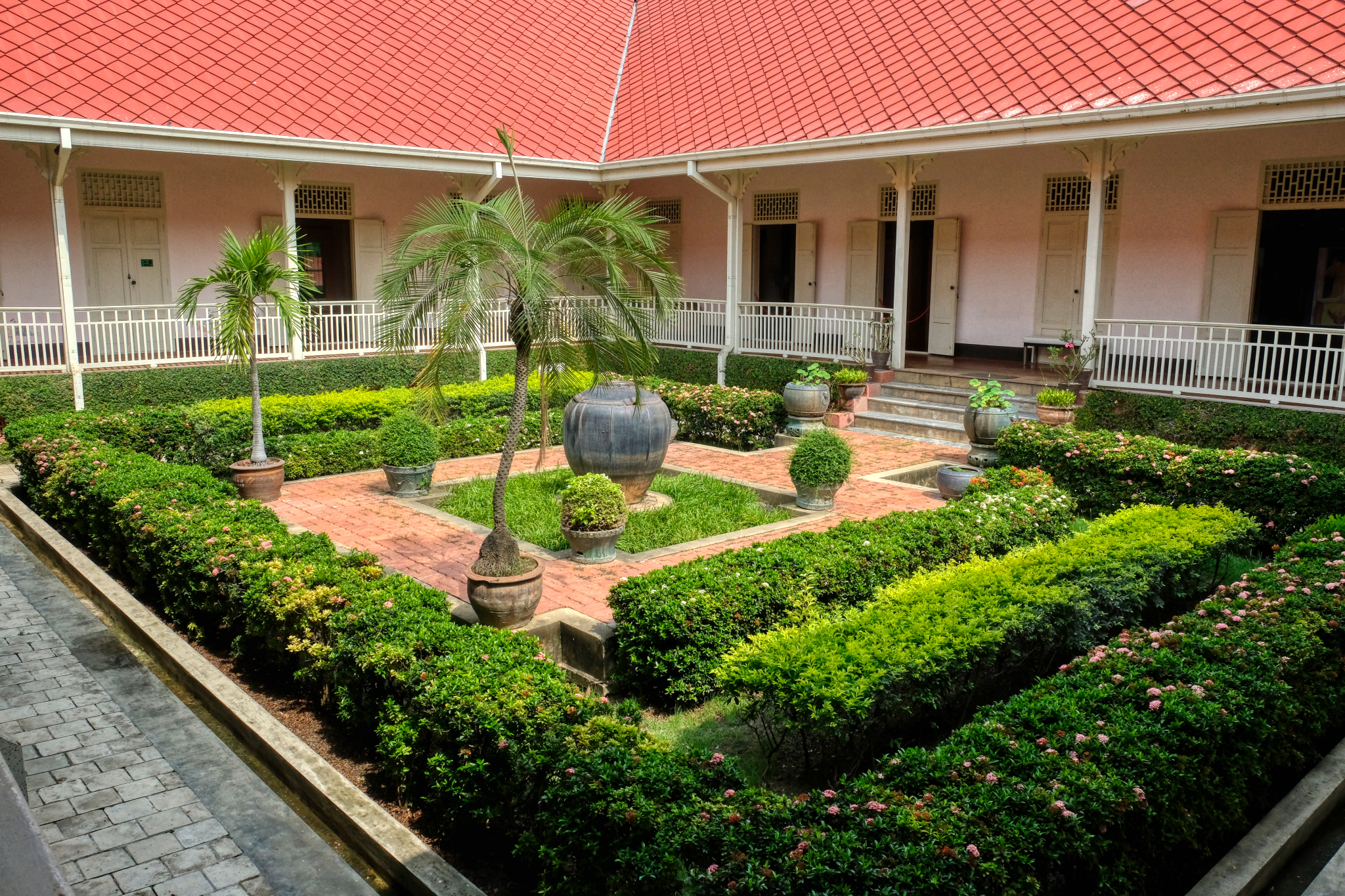 The museum collection was excellent and very well organized. The exhibits began in prehistory and ancient geology of the area and proceeded chronologically as you walked from room to room around the courtyard. It was one of the best, most informative provincial museums I have been to anywhere in the world.
The museum collection was excellent and very well organized. The exhibits began in prehistory and ancient geology of the area and proceeded chronologically as you walked from room to room around the courtyard. It was one of the best, most informative provincial museums I have been to anywhere in the world.
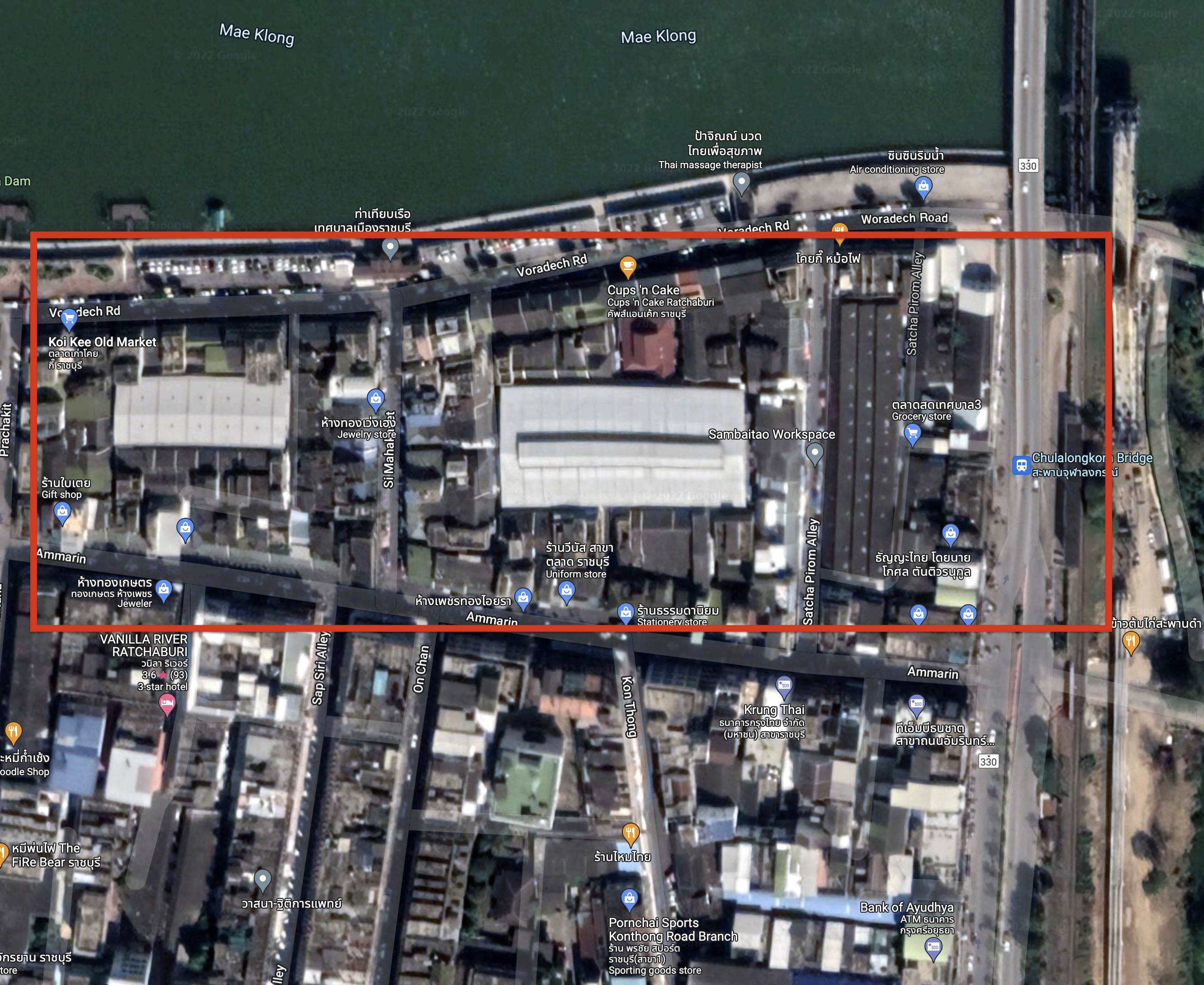 I next drove into the town center and the old city center market. The market occupies the inside center alleyways of several blocks along the Mae Klong River.
I next drove into the town center and the old city center market. The market occupies the inside center alleyways of several blocks along the Mae Klong River.
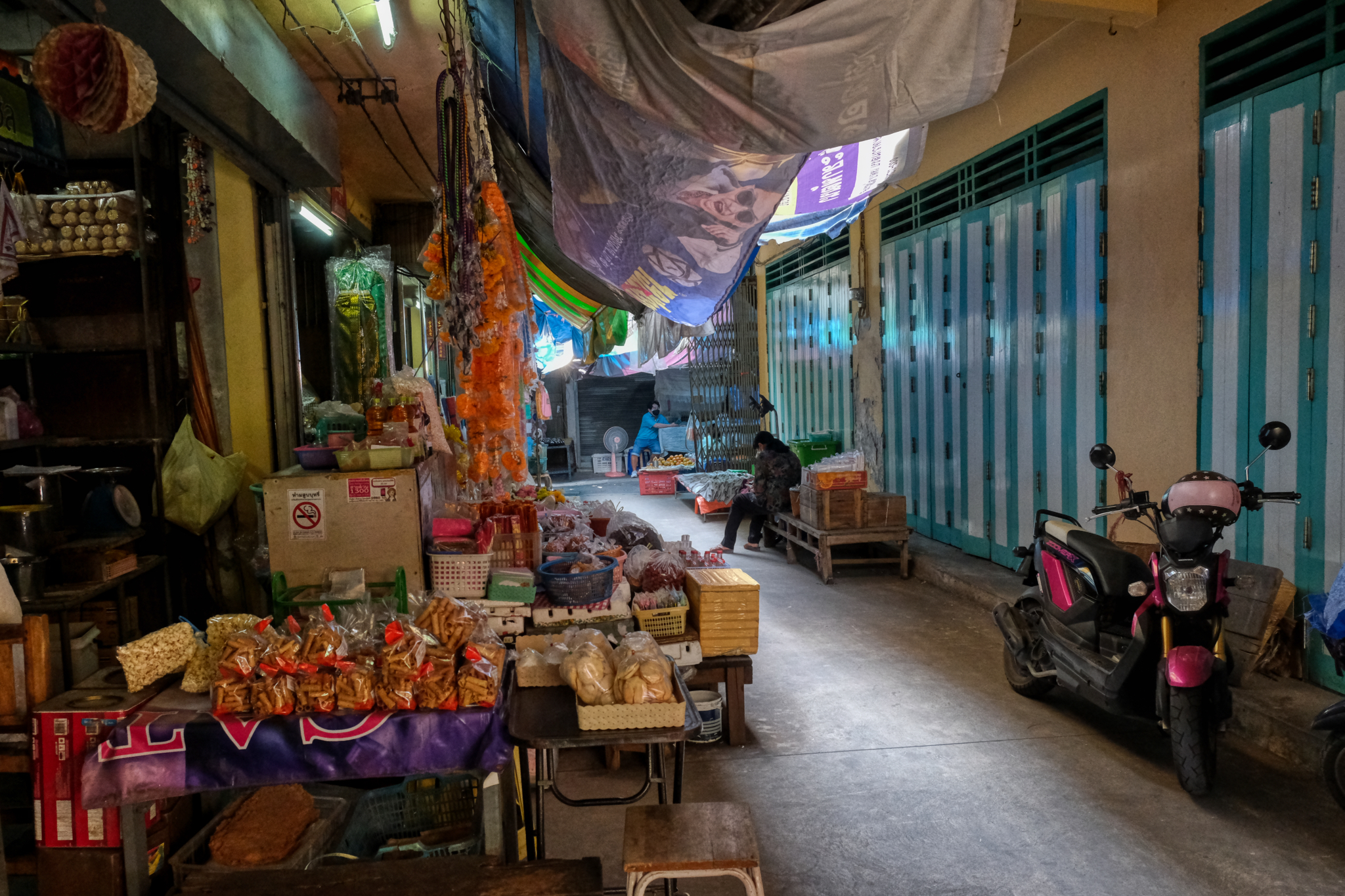 As I left the museum I looked on my GoogleMaps and spotted a river and "Old Town Market" . . . so I drove straight there. I love these old town, city center markets in Thailand's small cities. This market would have been in it's prime during the 1950s and 1960s.
As I left the museum I looked on my GoogleMaps and spotted a river and "Old Town Market" . . . so I drove straight there. I love these old town, city center markets in Thailand's small cities. This market would have been in it's prime during the 1950s and 1960s.
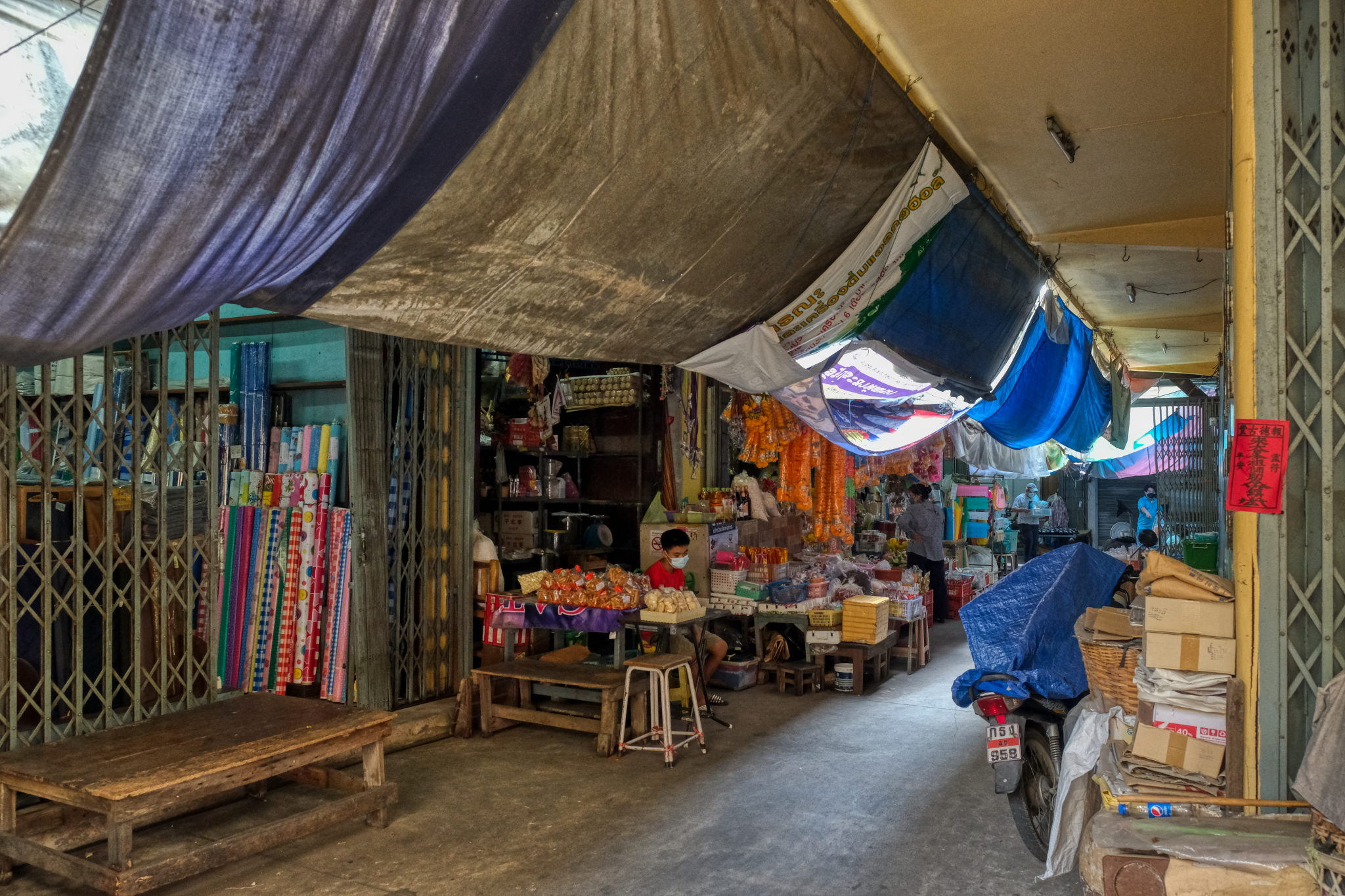 The old markets are the remnants of the oldest parts of Thai cities and maintain an older way of doing business.
The old markets are the remnants of the oldest parts of Thai cities and maintain an older way of doing business.
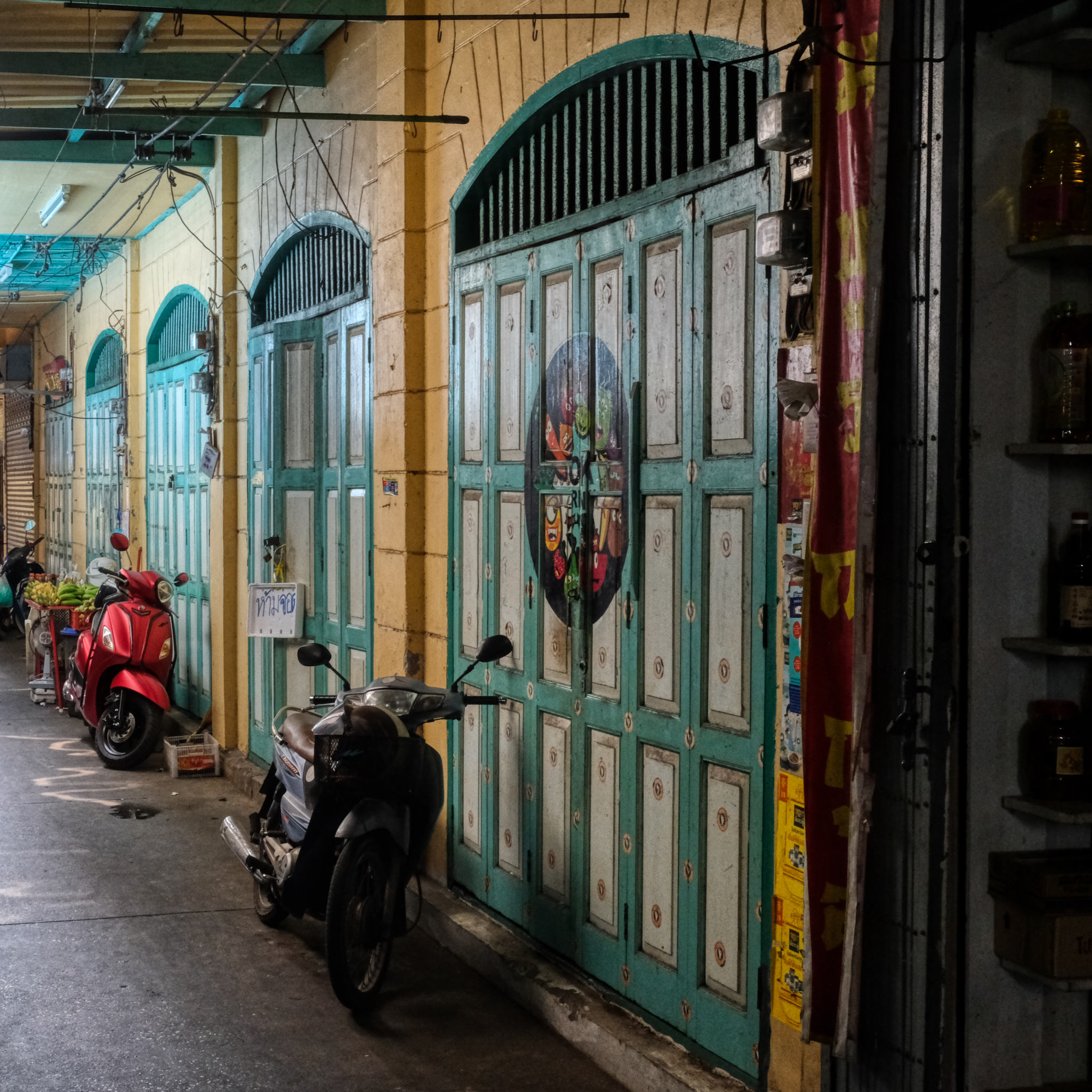 The city or local area government seems to have taken an interest in this old market. Many of the walls and old panel doors seem to have been painted recently. It looked very good.
The city or local area government seems to have taken an interest in this old market. Many of the walls and old panel doors seem to have been painted recently. It looked very good.
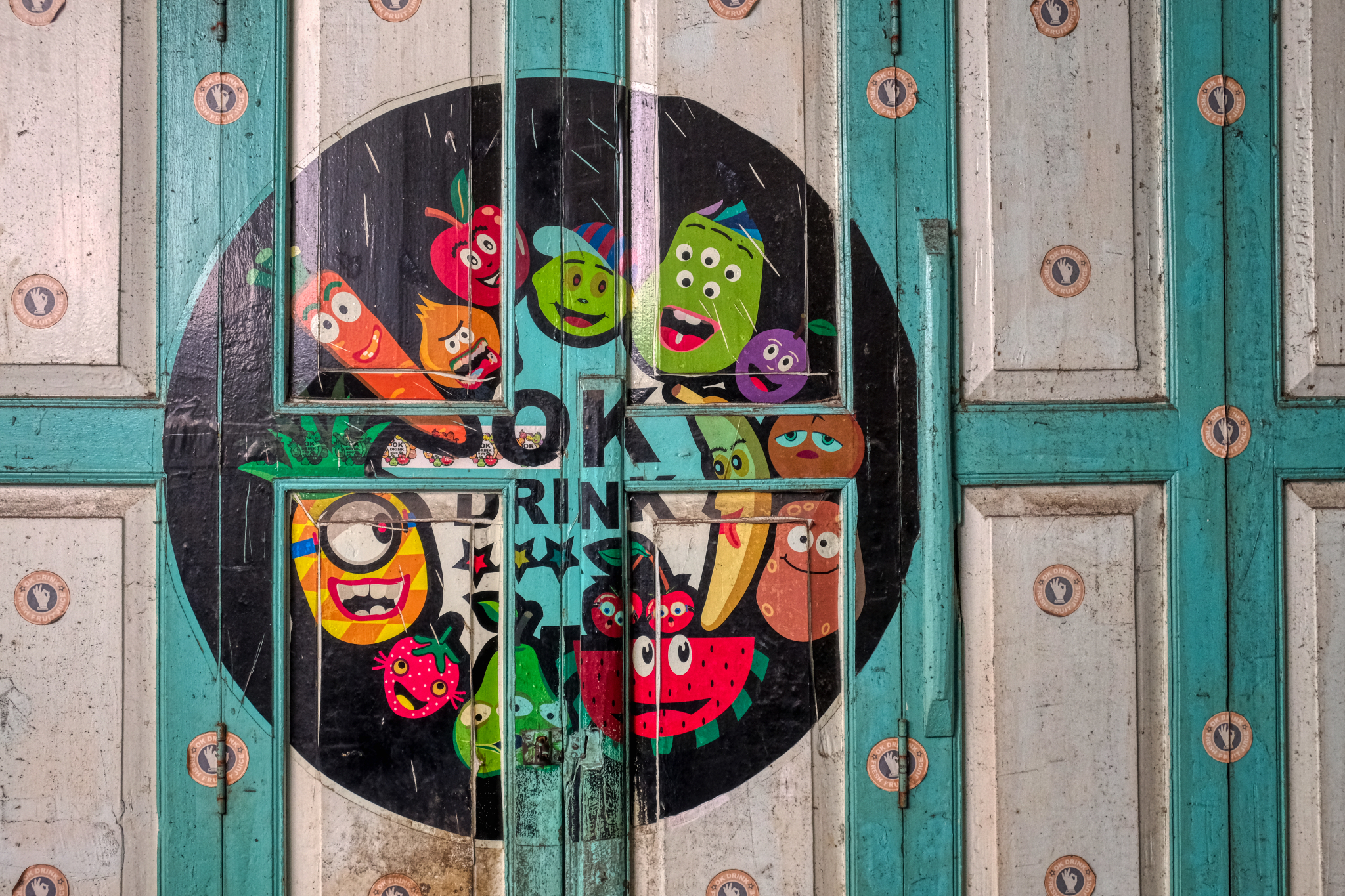 A colorful advertisement on the panel doors.
A colorful advertisement on the panel doors.
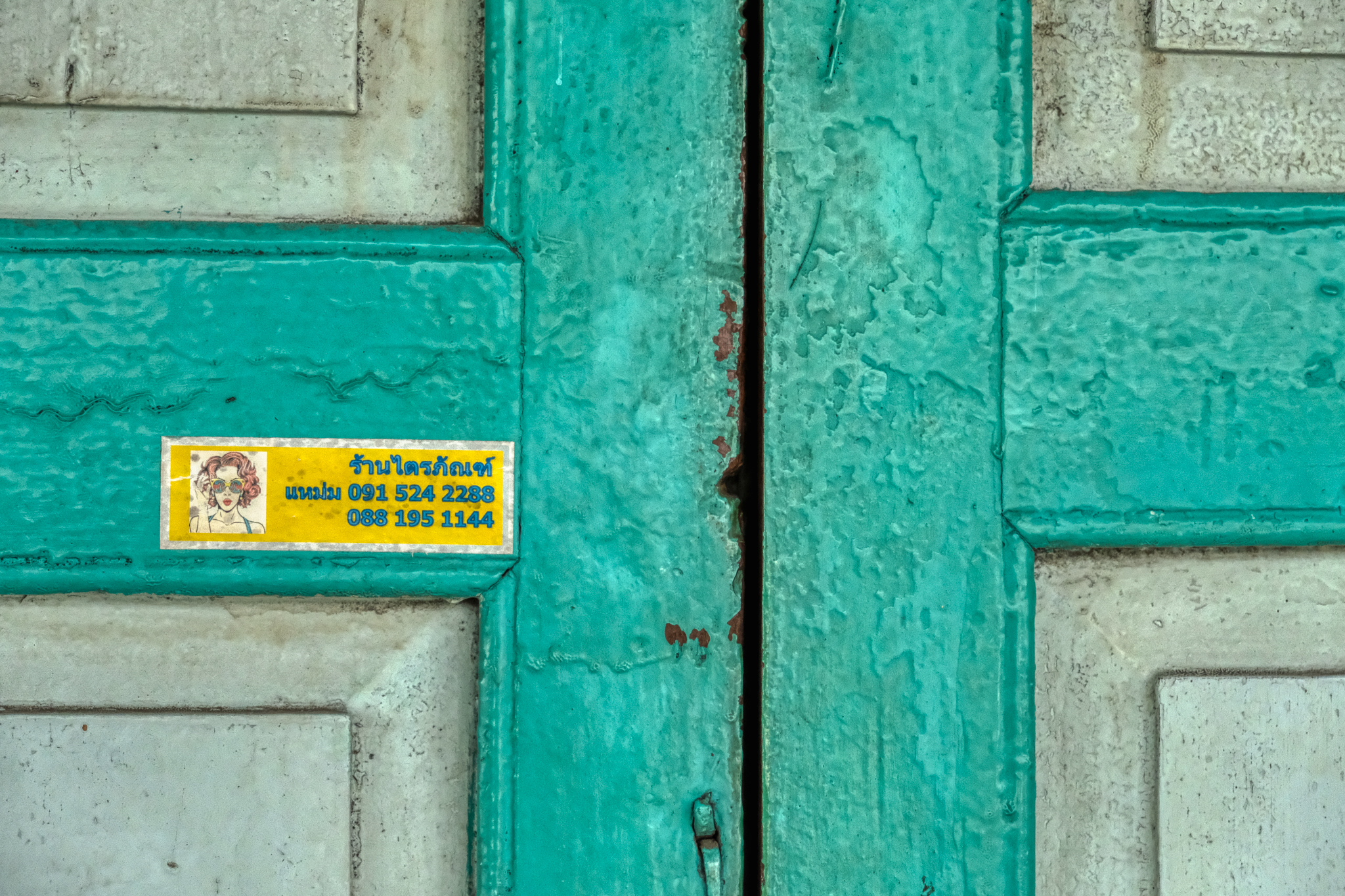 History in paint.
History in paint.
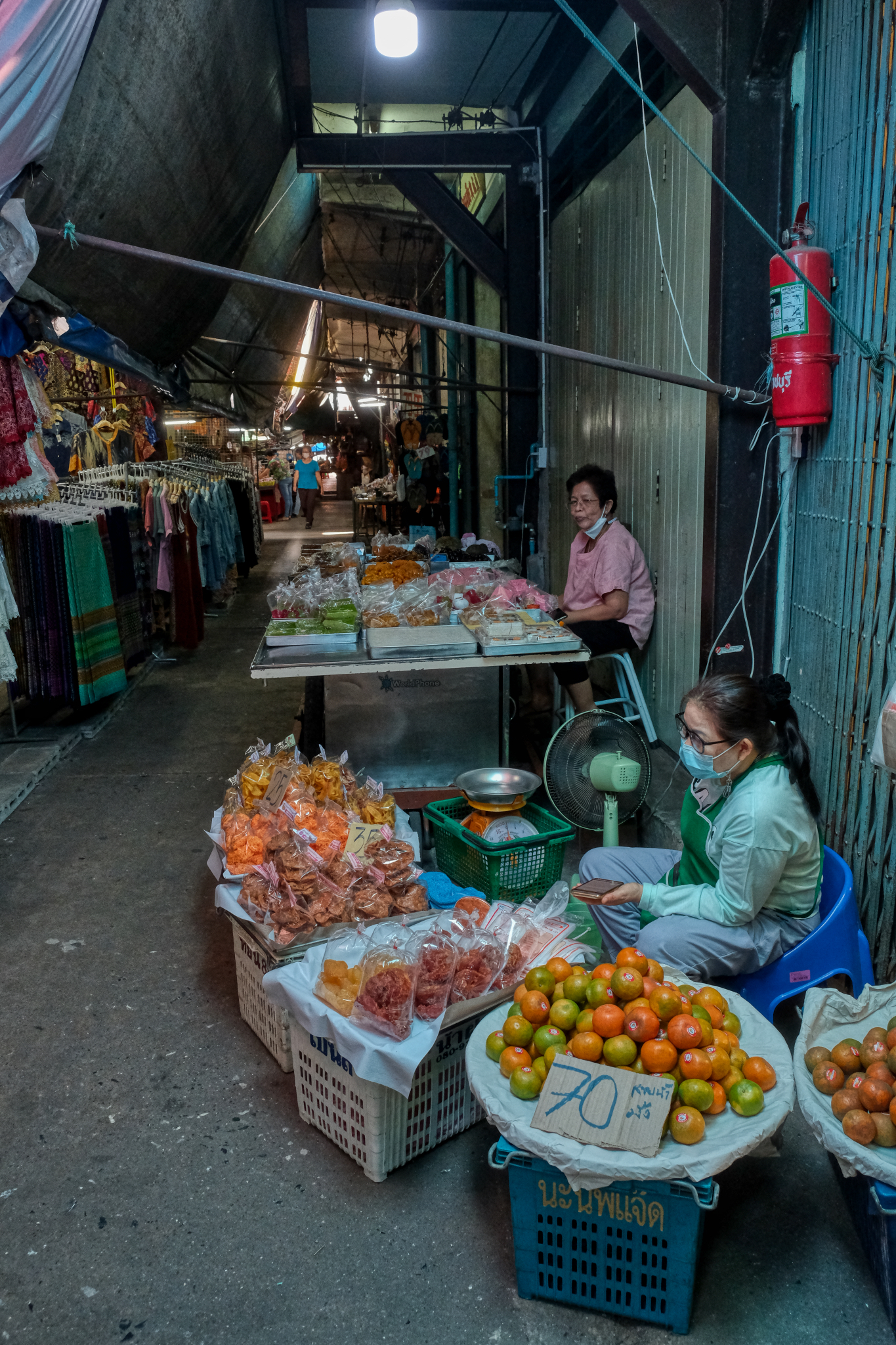 Small business in the alleys, which are themselves lined with very old small shops.
Small business in the alleys, which are themselves lined with very old small shops.
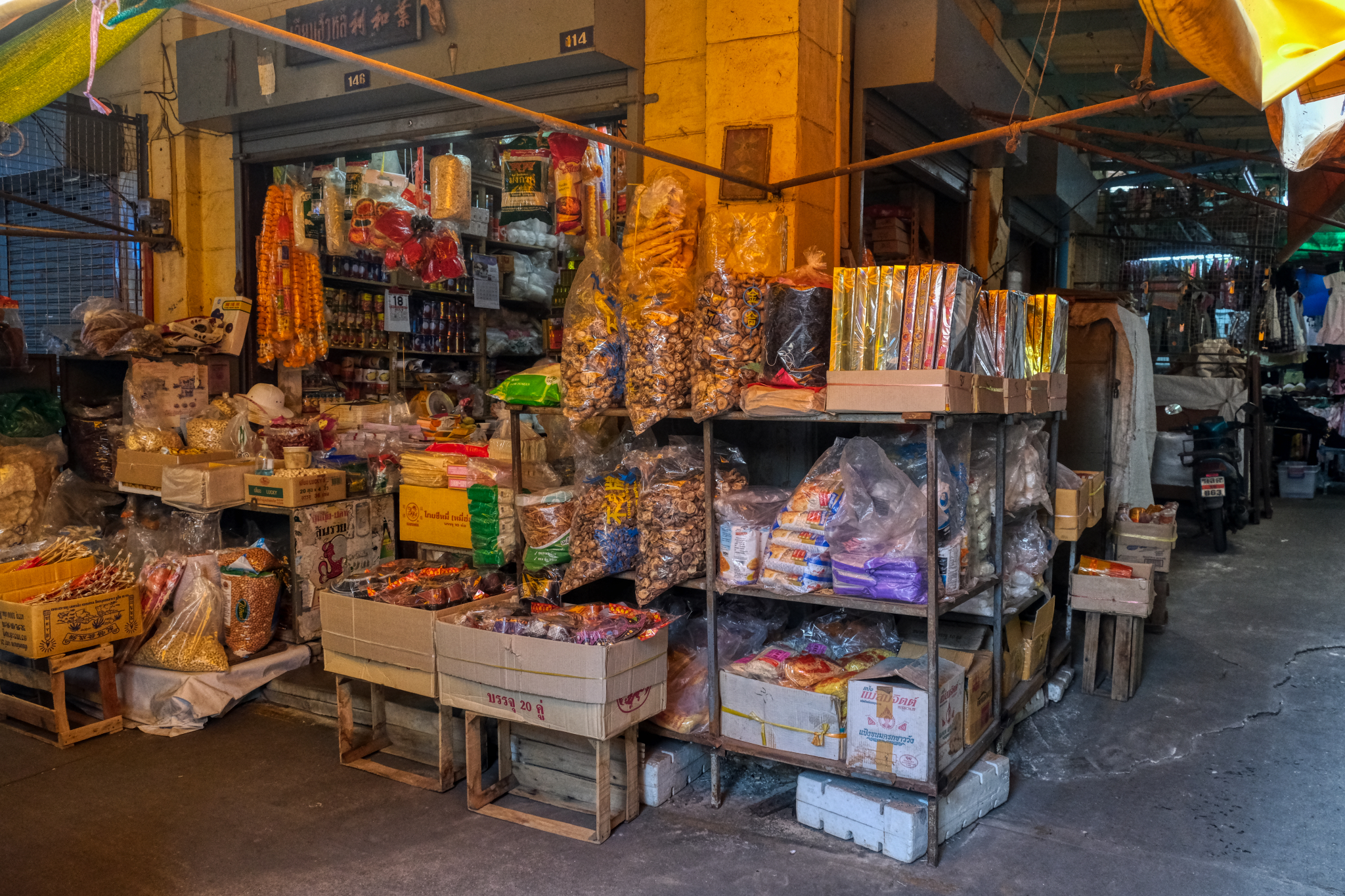 My first thought when seeing this shop was, 'supply and demand.' What kind of world is outside of this market can be deduced by what one sees for sale in it. There is an old pattern of consumption, imbedded in the cultural practices, the anthropology of food, that still demands these items.
My first thought when seeing this shop was, 'supply and demand.' What kind of world is outside of this market can be deduced by what one sees for sale in it. There is an old pattern of consumption, imbedded in the cultural practices, the anthropology of food, that still demands these items.
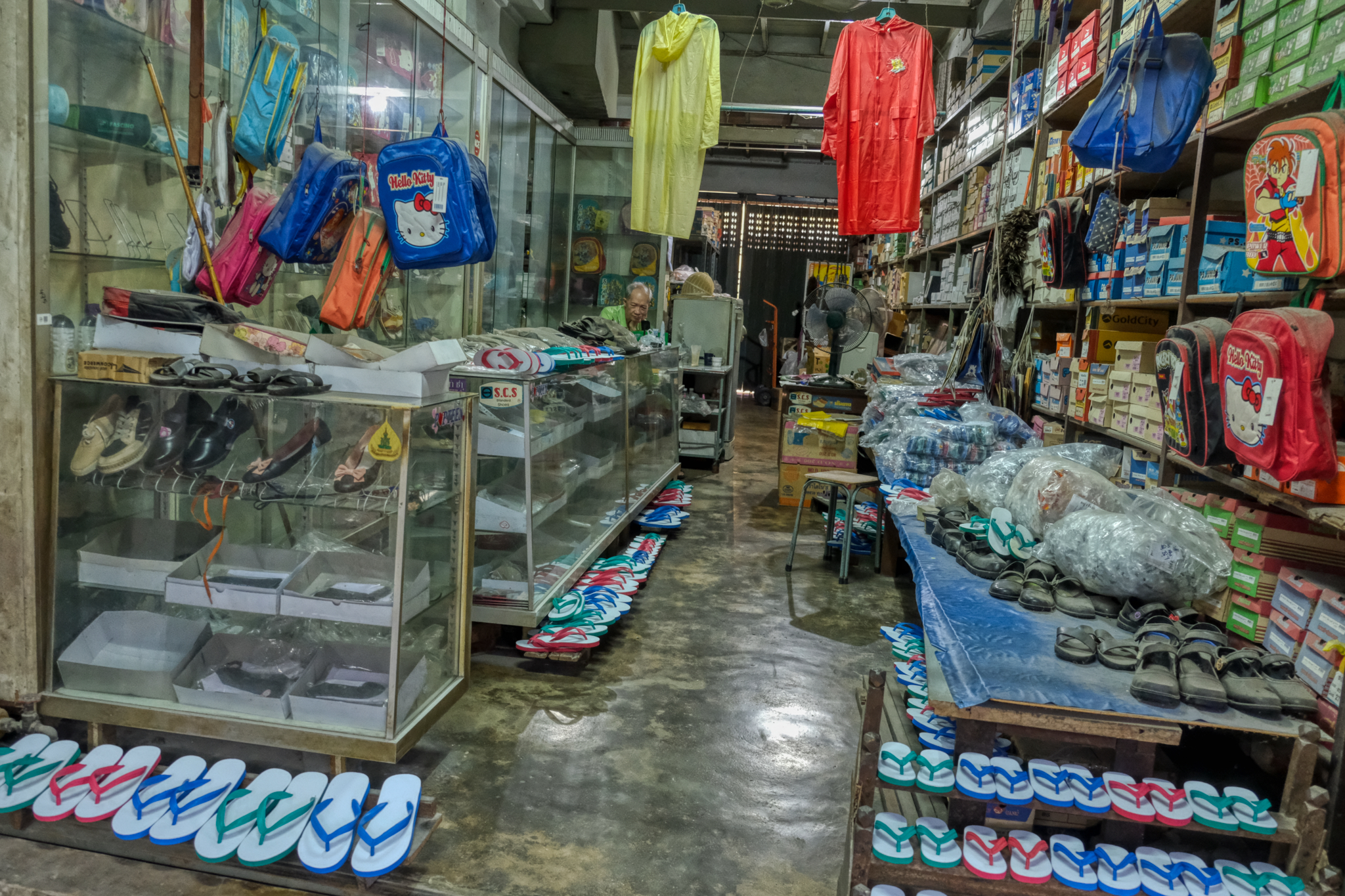 Times change. There was a time, maybe 50 years ago, when this shop was at the center of the Ratchaburi commercial center. You came here, and here only, if you wanted to buy a pair of new shoes. But the city grew in a different direction: what was the busy hub of activity has now became the backwater of the old town 'wet market.' This old man seems to have been here as long as the furniture. He doesn't even bother to dust off the shoes any more.
Times change. There was a time, maybe 50 years ago, when this shop was at the center of the Ratchaburi commercial center. You came here, and here only, if you wanted to buy a pair of new shoes. But the city grew in a different direction: what was the busy hub of activity has now became the backwater of the old town 'wet market.' This old man seems to have been here as long as the furniture. He doesn't even bother to dust off the shoes any more.
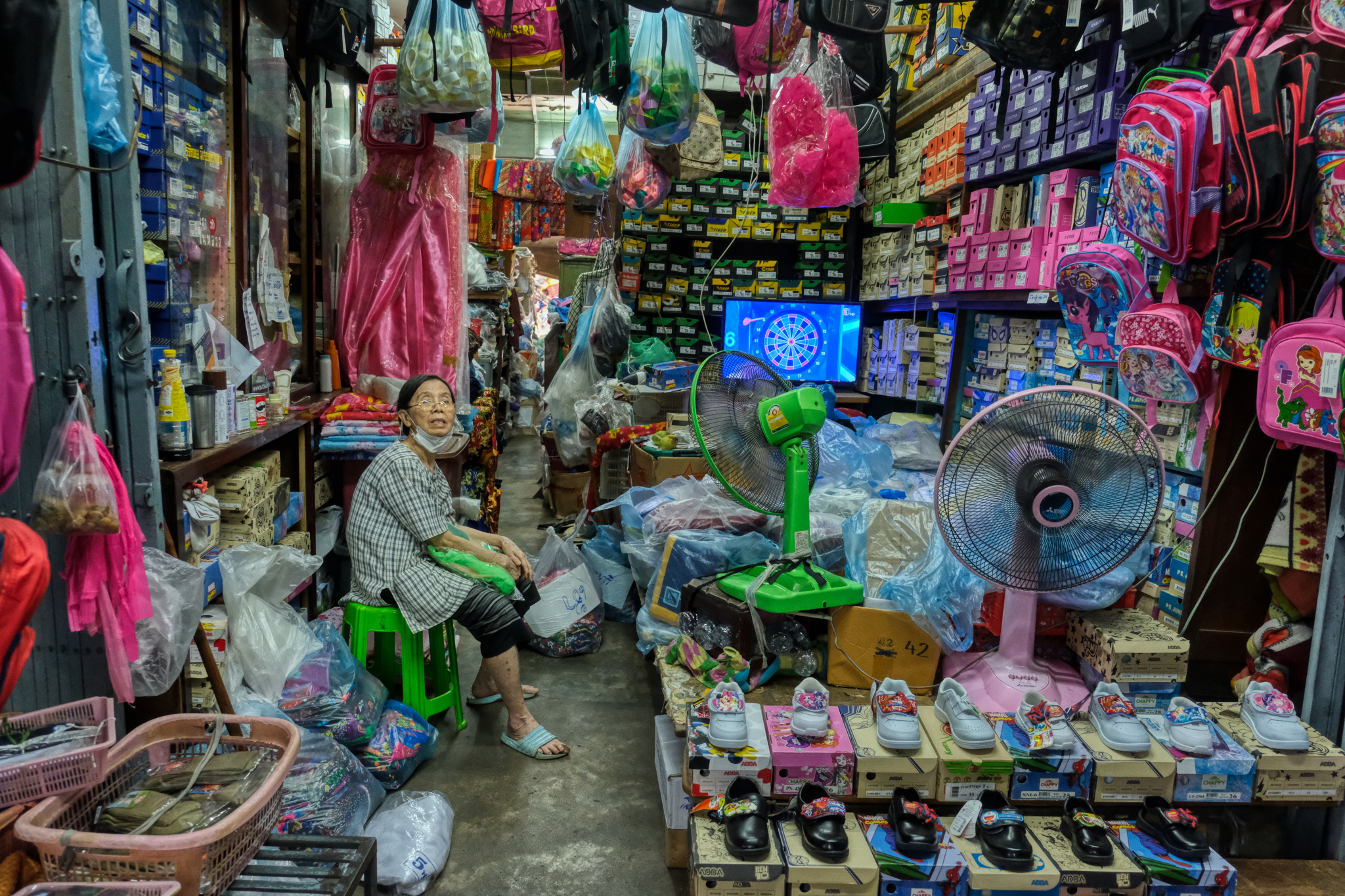 She is still hopeful and making an effort. These shops have suffered terribly during the pandemic: people do not like to congregate in the tight quarters of these narrow alleyways. I am sure she lives in the back of this shop.
She is still hopeful and making an effort. These shops have suffered terribly during the pandemic: people do not like to congregate in the tight quarters of these narrow alleyways. I am sure she lives in the back of this shop.
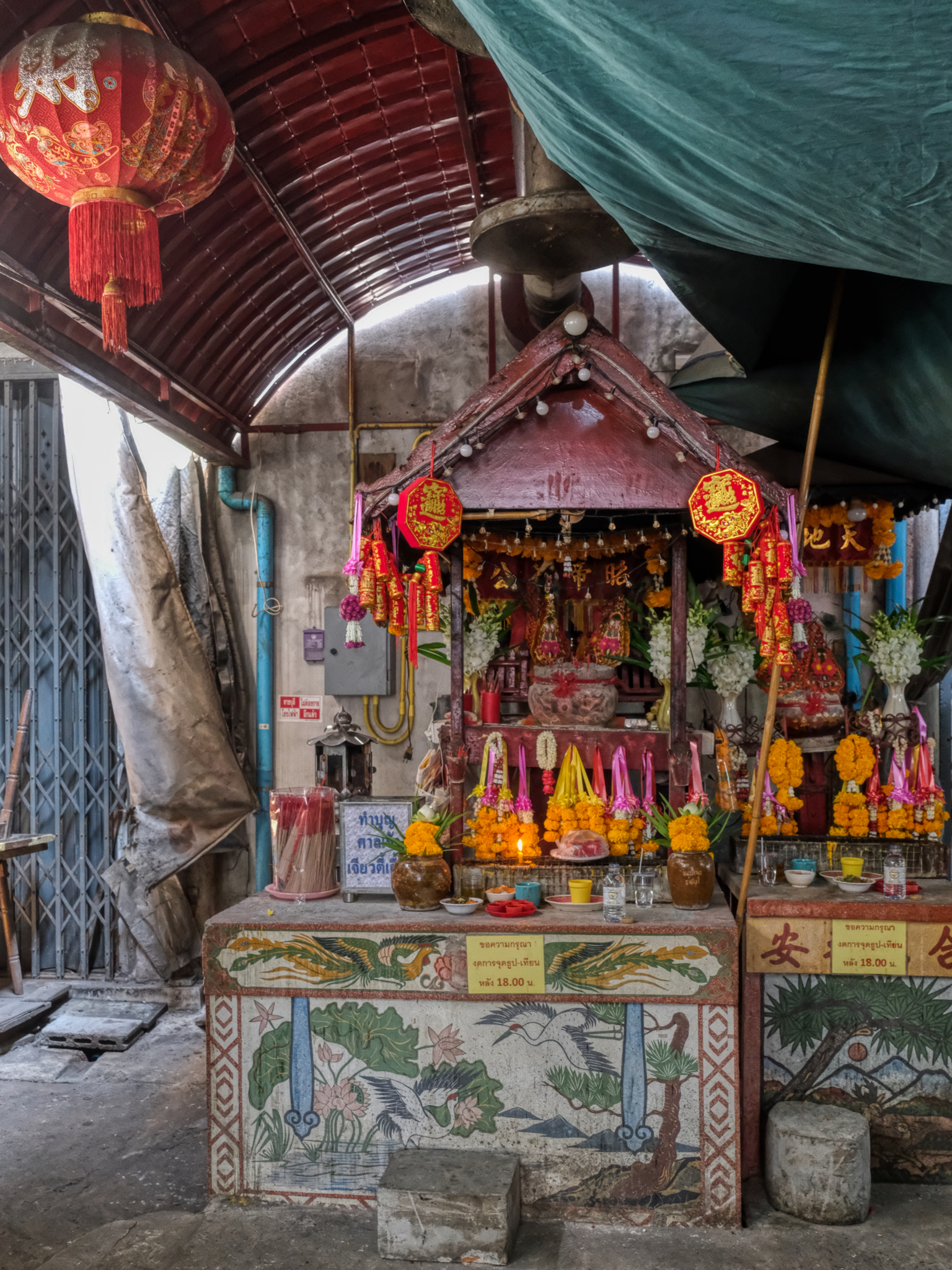 Tucked away deep in the old market is the spirit house/spirit altar for the shopkeepers to leave their offerings in hopes of better luck. The flowers and other offerings were all fresh from this very morning.
Tucked away deep in the old market is the spirit house/spirit altar for the shopkeepers to leave their offerings in hopes of better luck. The flowers and other offerings were all fresh from this very morning.
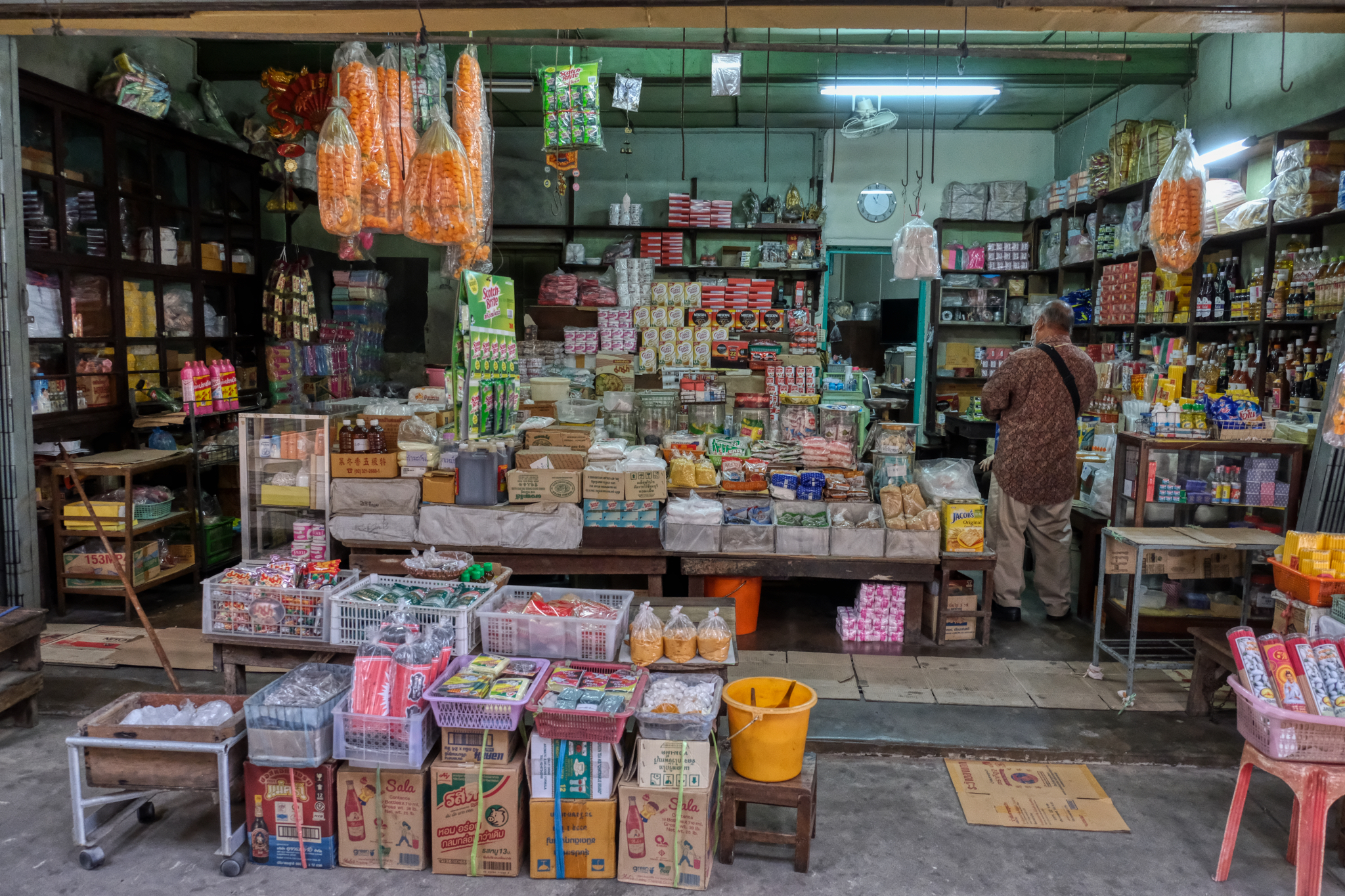 This dry goods shop in the old market seemed to be doing pretty good. You have to remember that less than a mile from this spot there are several multinational big box giant supermarkets. It is hard to understand how these small shops survive. I assume it survives by servicing those who work in the old market itself.
This dry goods shop in the old market seemed to be doing pretty good. You have to remember that less than a mile from this spot there are several multinational big box giant supermarkets. It is hard to understand how these small shops survive. I assume it survives by servicing those who work in the old market itself.
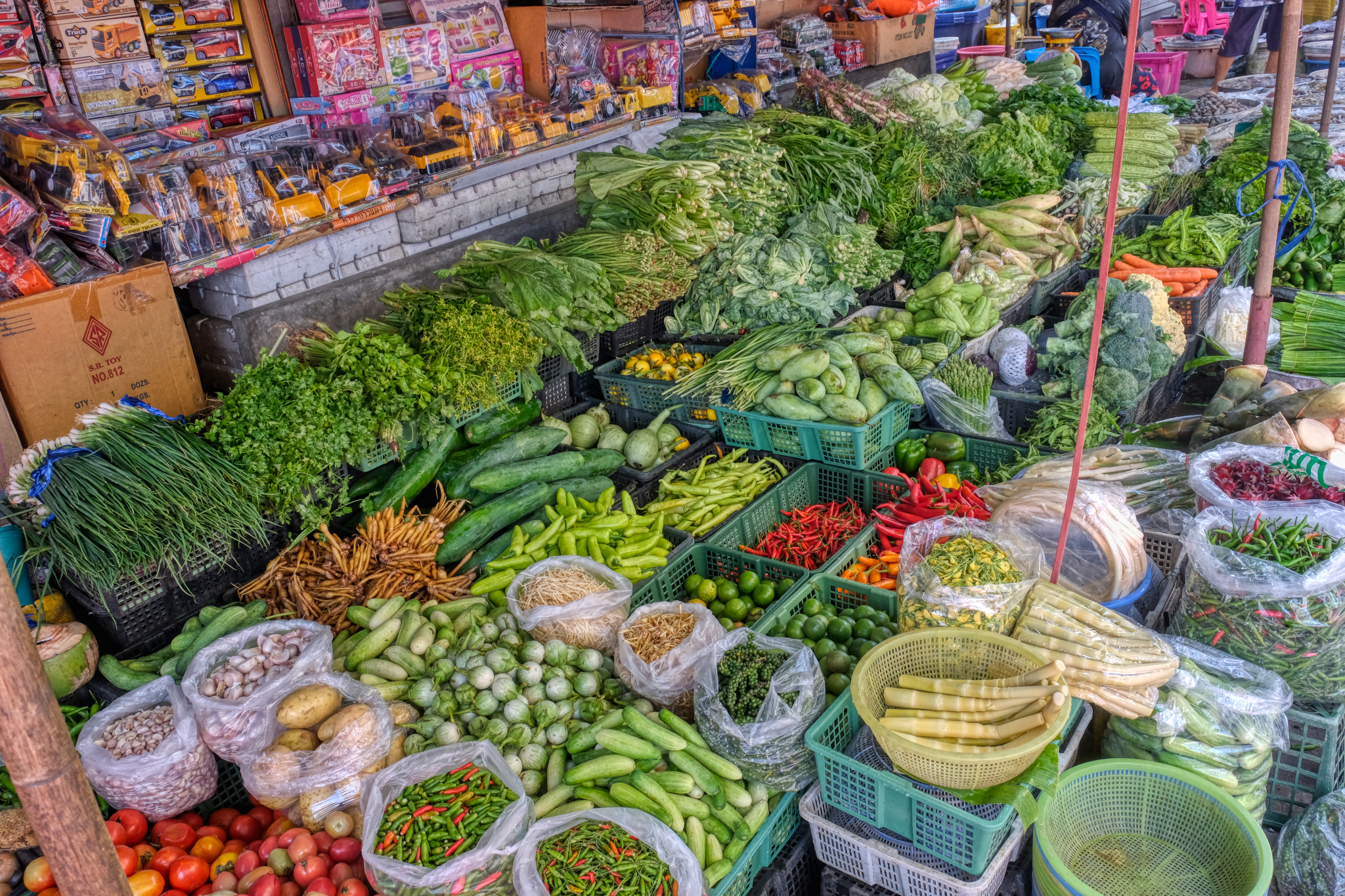 There were many sections of the old town market, and of course, one of them was for fresh fruits and vegetables. So delicious in Thailand.
There were many sections of the old town market, and of course, one of them was for fresh fruits and vegetables. So delicious in Thailand.
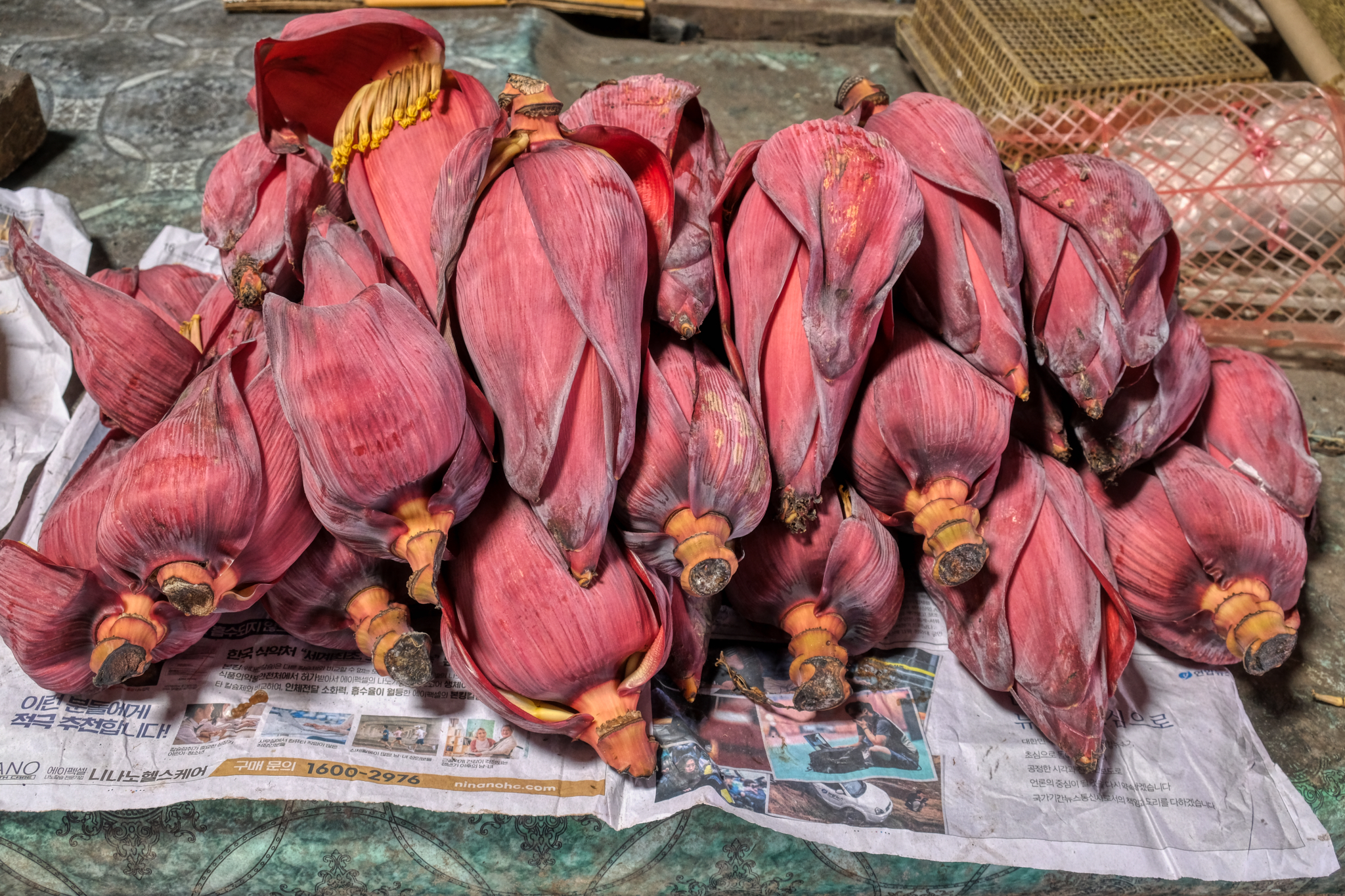 Banana flower hearts . . . used in some Thai dishes.
Banana flower hearts . . . used in some Thai dishes.
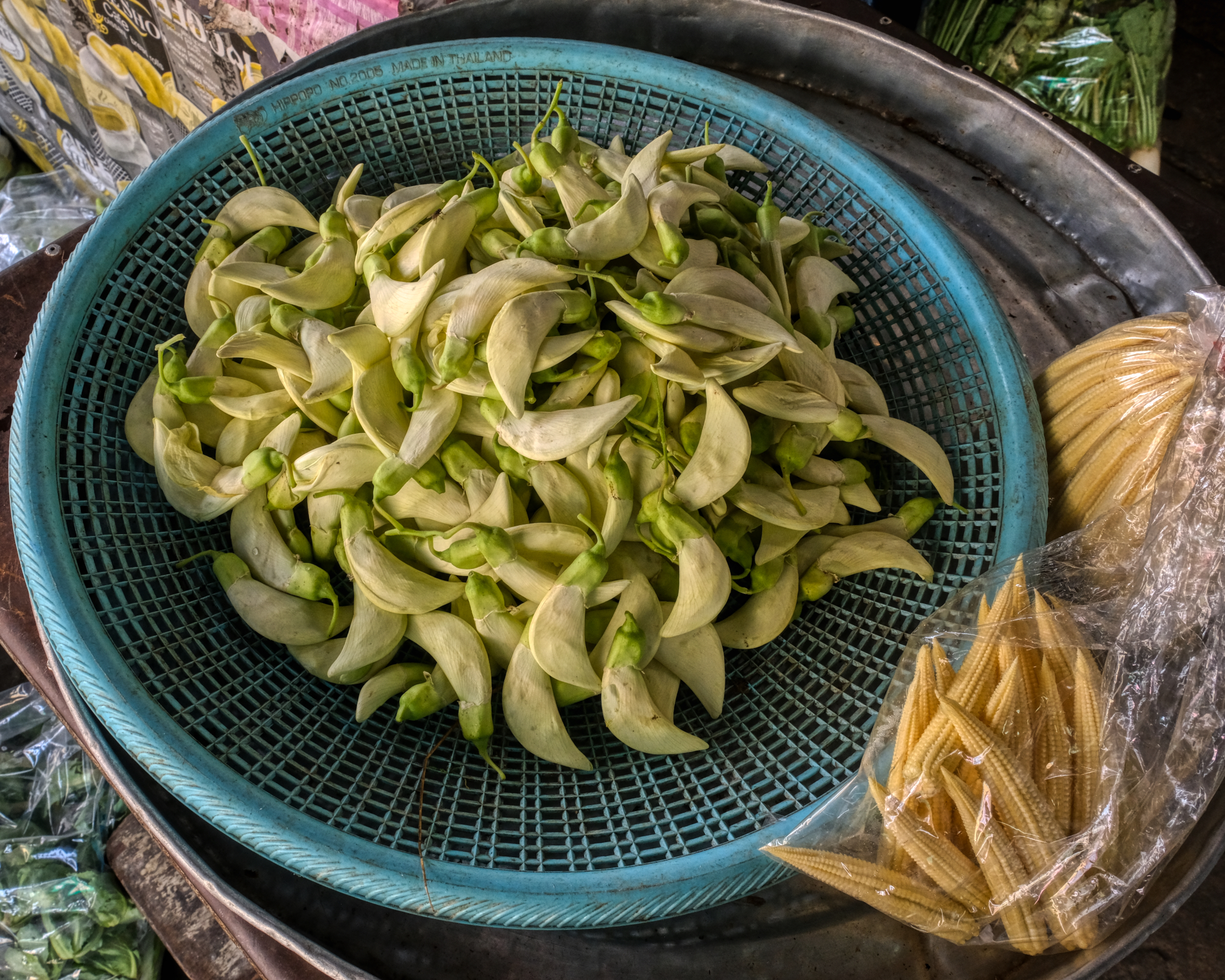 I had never seen this before . . . some kind of flower bud for use in one of the many thousands of Thai dishes.
I had never seen this before . . . some kind of flower bud for use in one of the many thousands of Thai dishes.
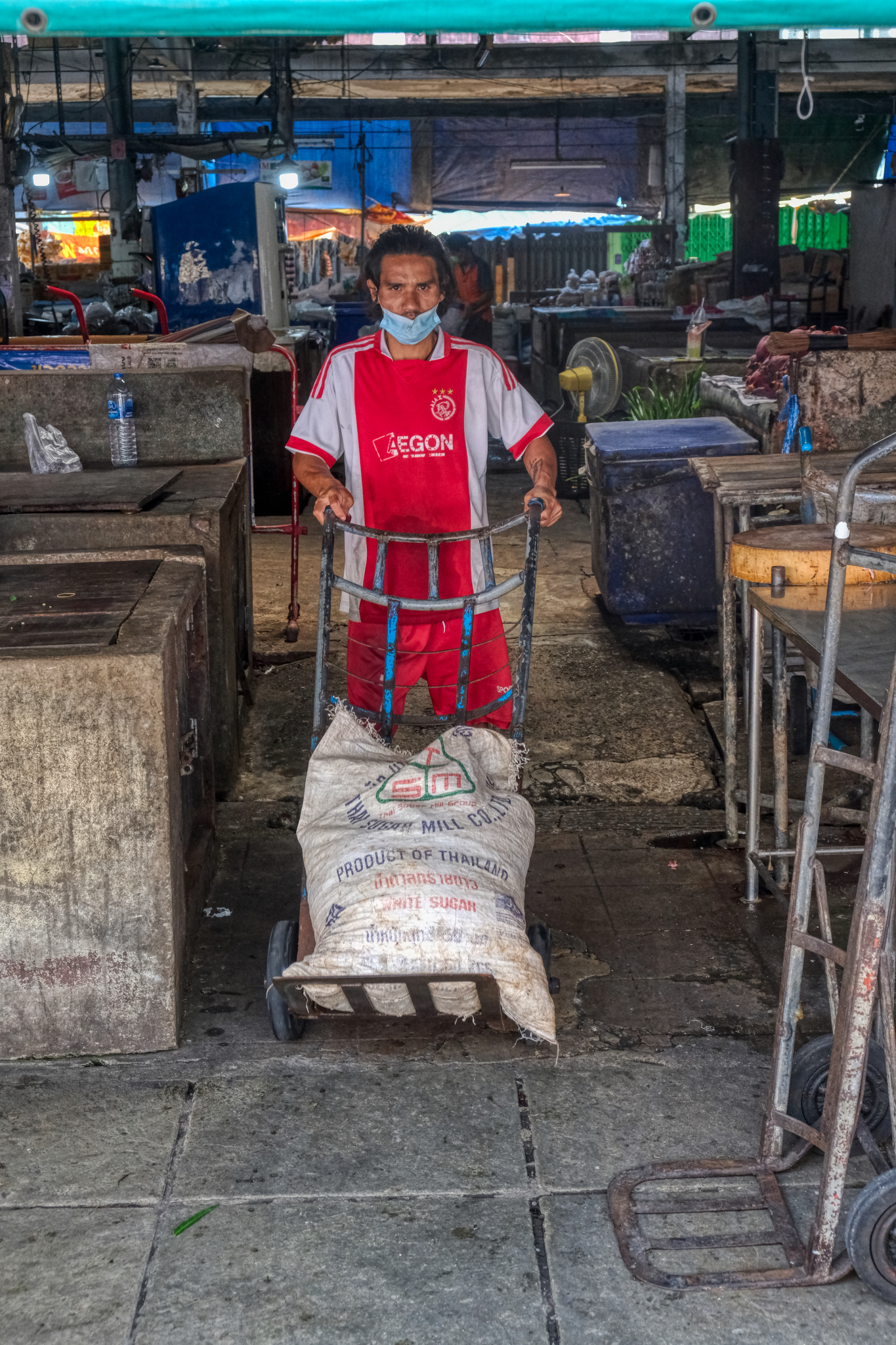 Although most of the market I saw so far was clean, neat, and recently refurbished, I eventually found the oldest part of the market. It was partially abandoned and the commerce there seemed to be left to the poorest people.
Although most of the market I saw so far was clean, neat, and recently refurbished, I eventually found the oldest part of the market. It was partially abandoned and the commerce there seemed to be left to the poorest people.
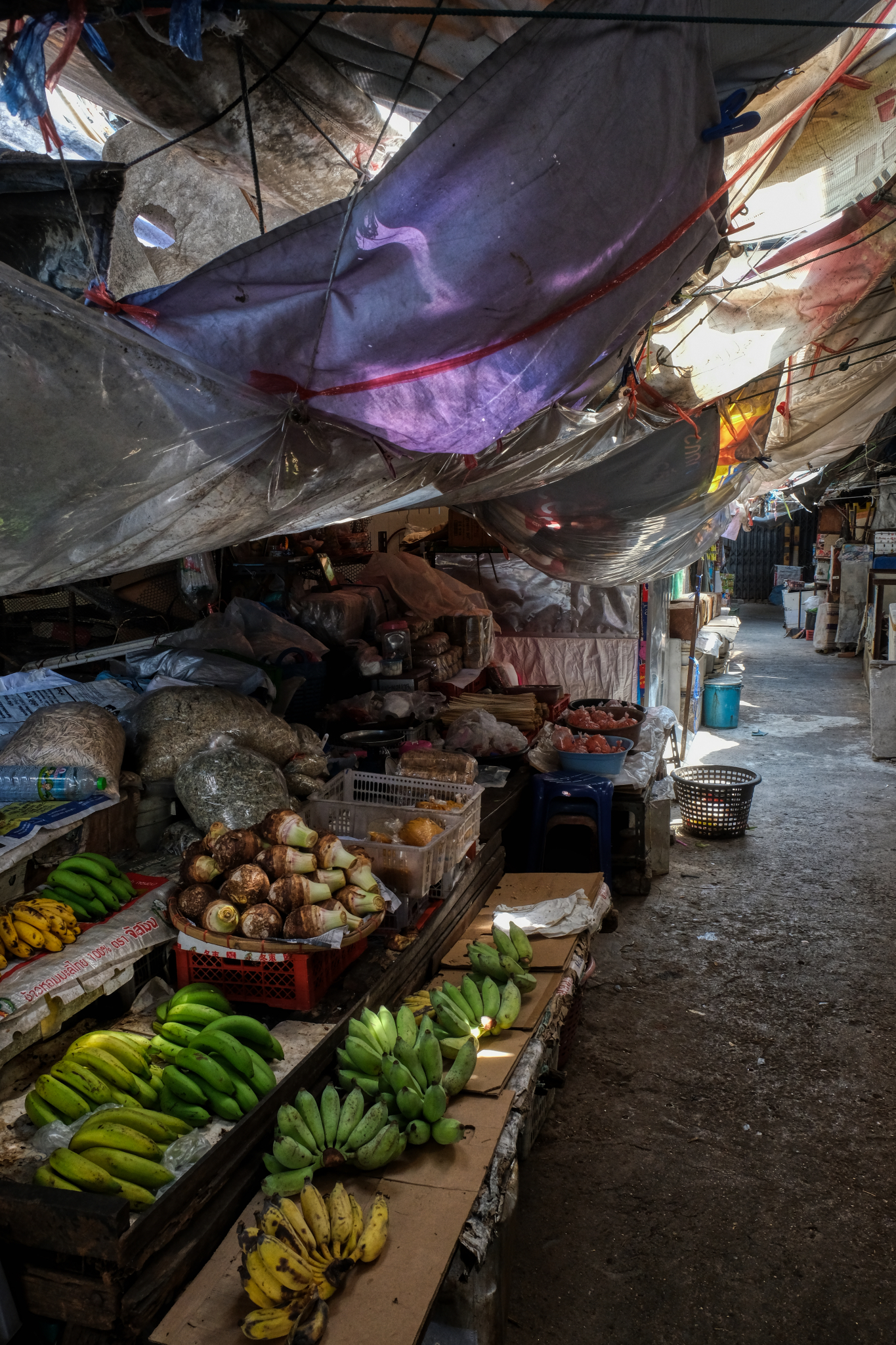 Old plastic rain flies over meagre offerings in the old, dead market. It is here we see the dilapidation caused by the corporate big box stores a couple of blocks away. I LOVE this photo.
Old plastic rain flies over meagre offerings in the old, dead market. It is here we see the dilapidation caused by the corporate big box stores a couple of blocks away. I LOVE this photo.
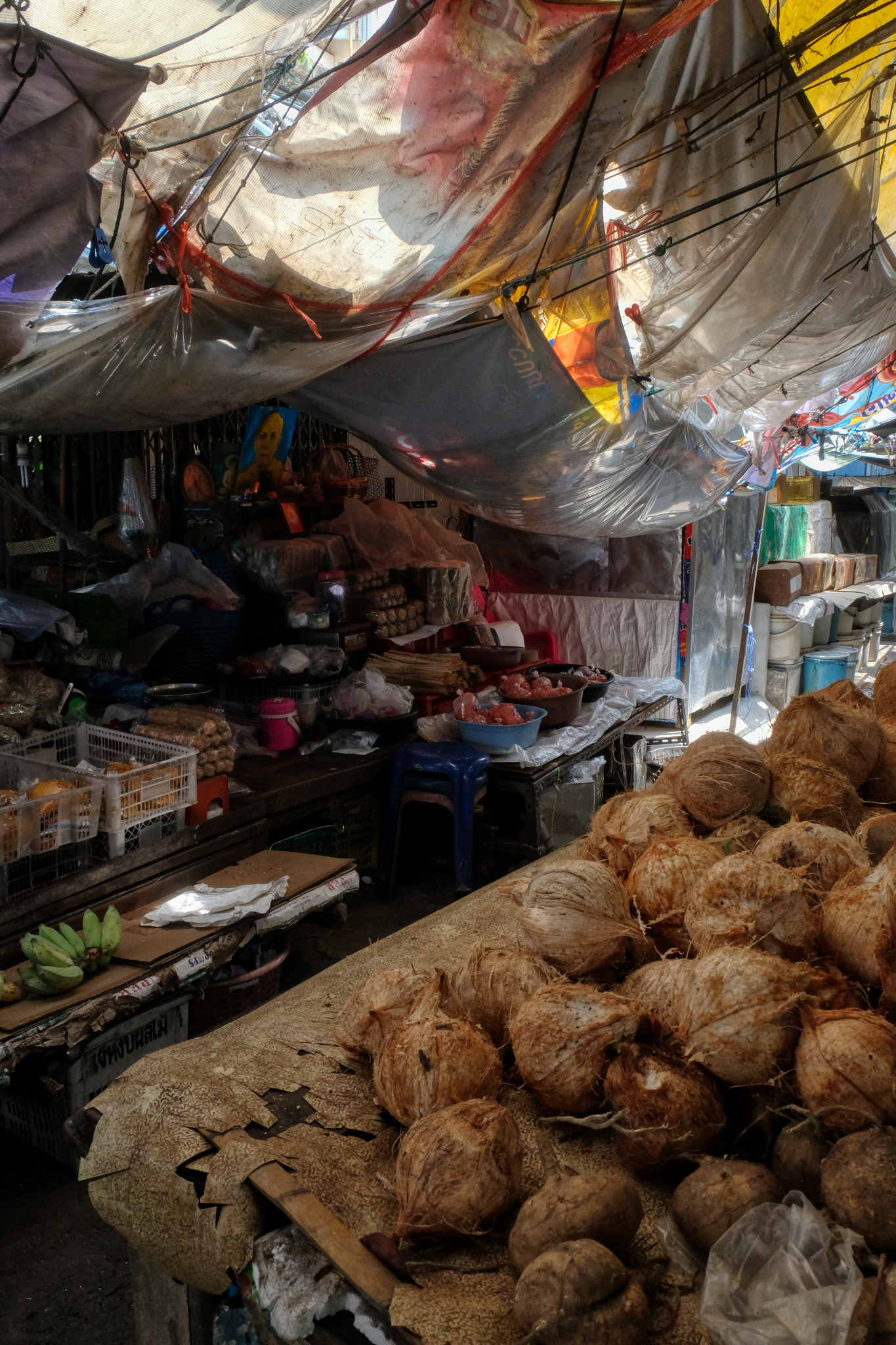 Old coconuts for sale.
Old coconuts for sale.
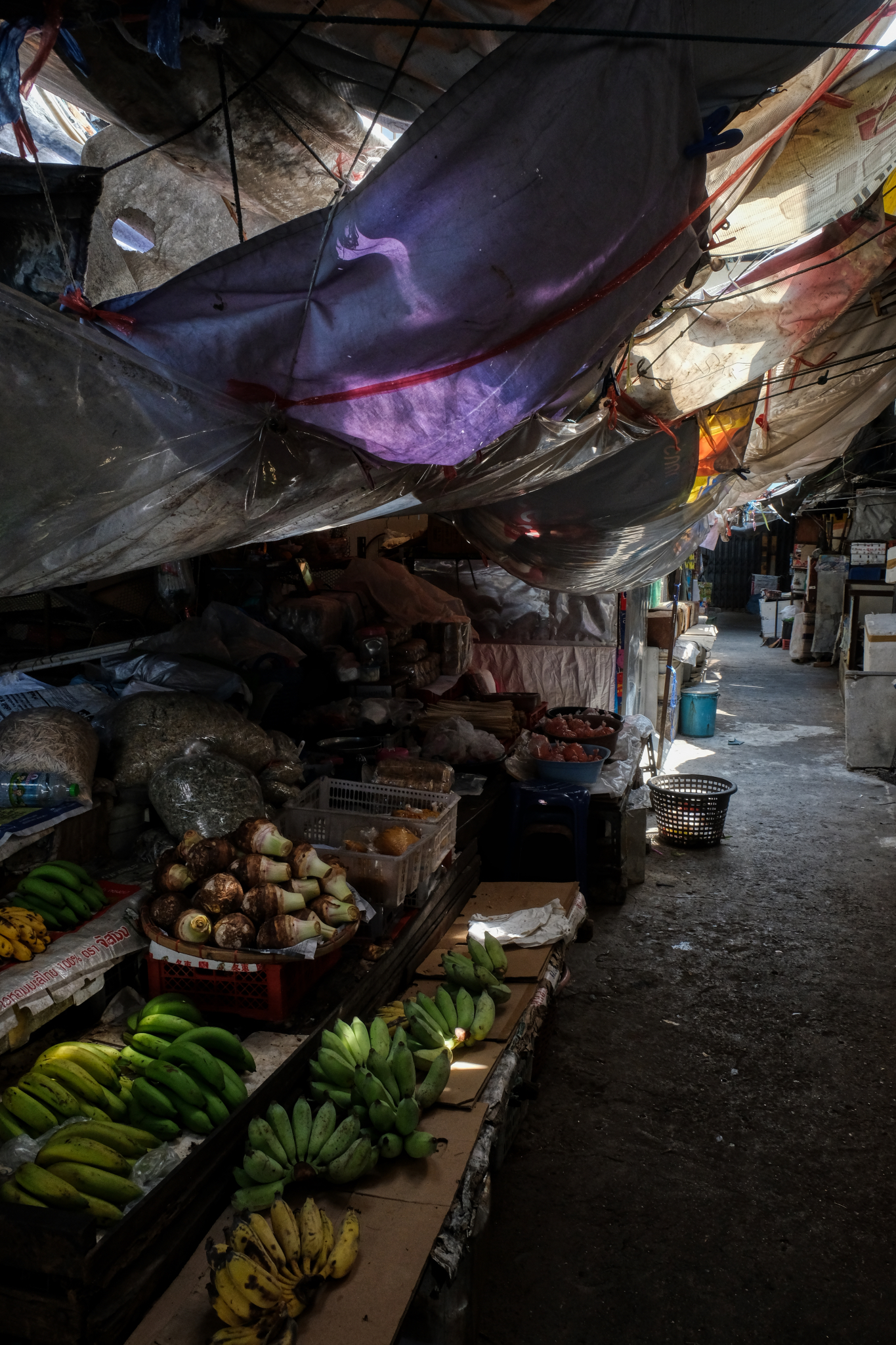 I was the ONLY person in this part of the market. Nobody was here, not even the merchants . . . at 10:00 in the morning.
I was the ONLY person in this part of the market. Nobody was here, not even the merchants . . . at 10:00 in the morning.
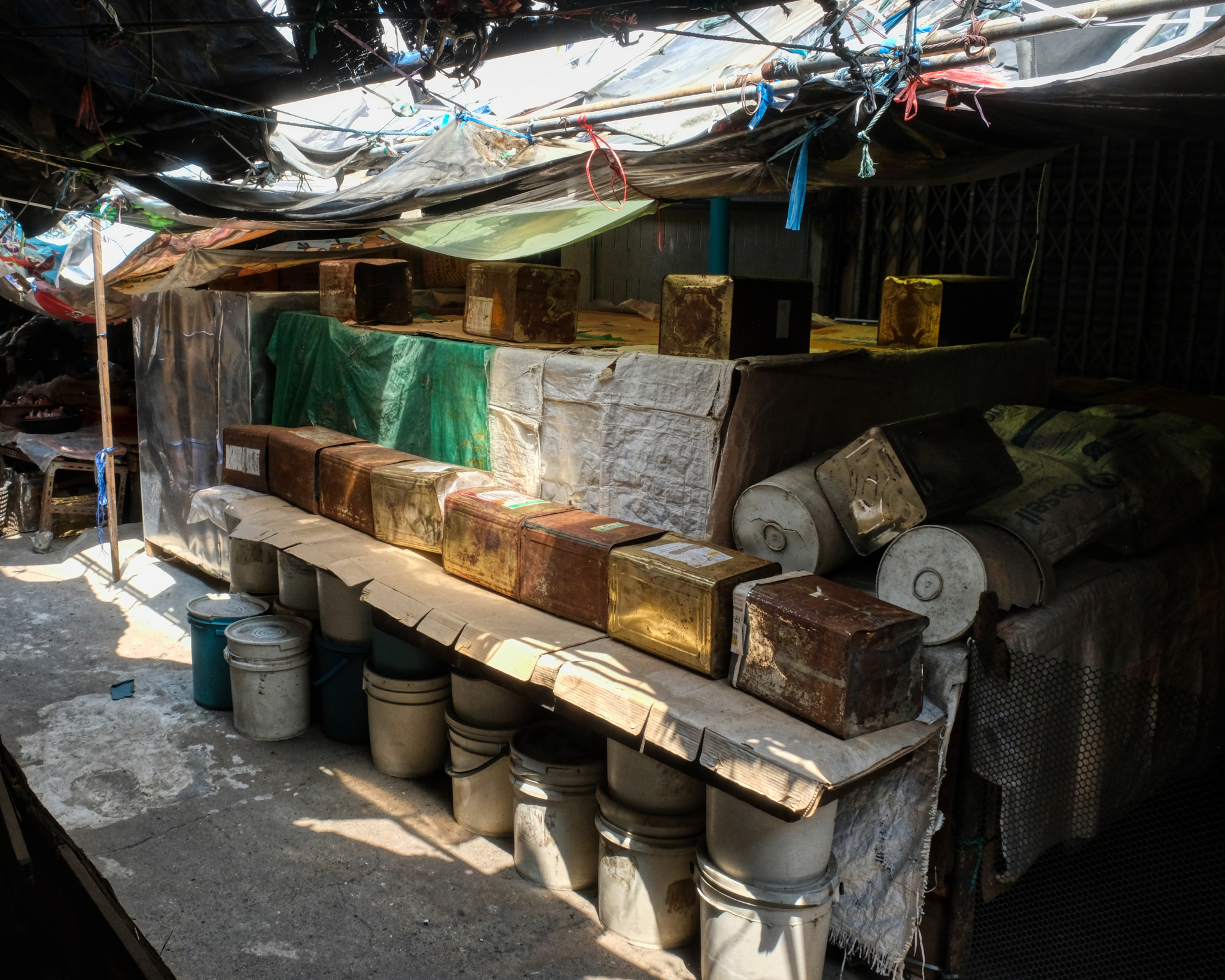 I tried to imagine what this 'business' was . . . but came up short.
I tried to imagine what this 'business' was . . . but came up short.
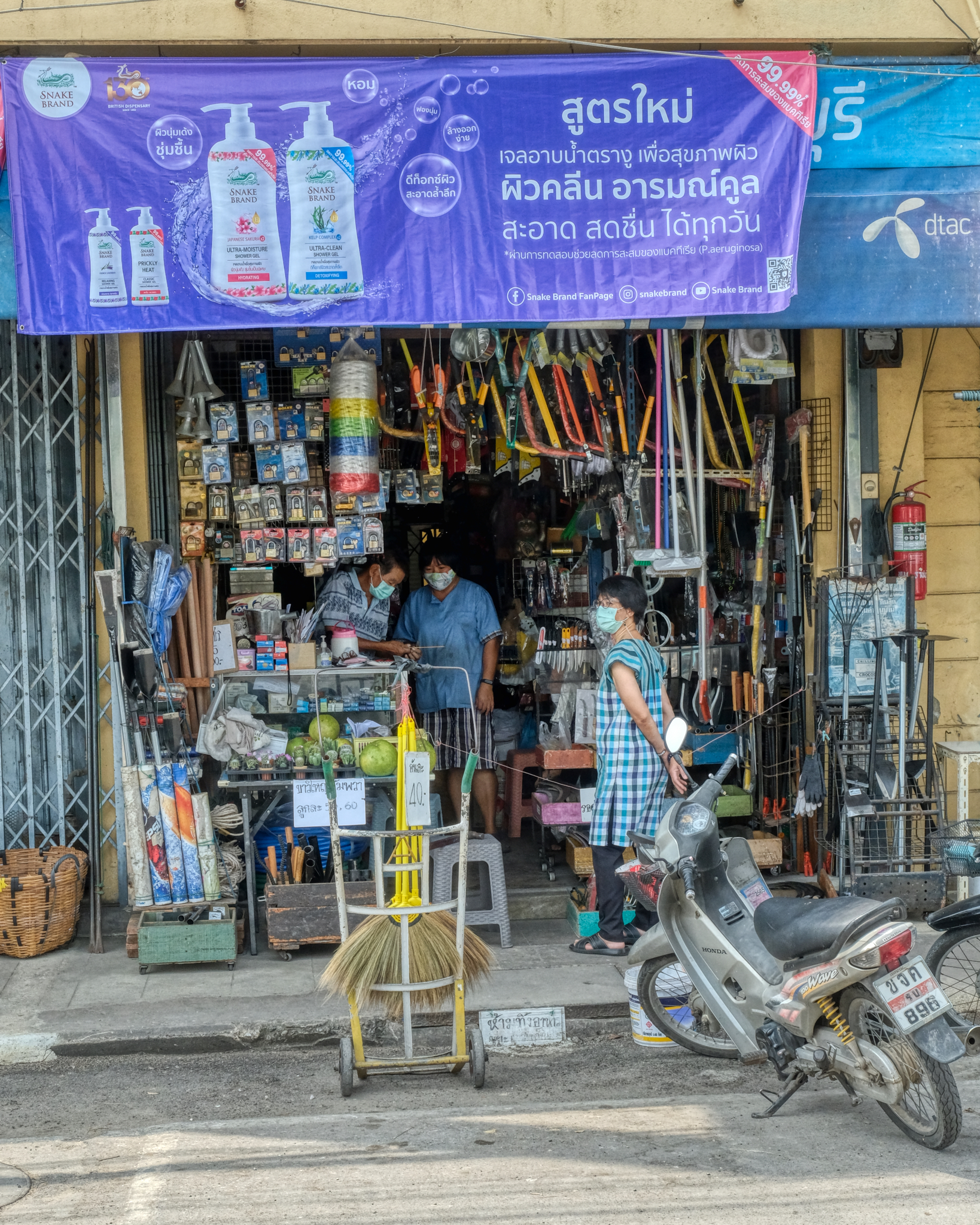
Outside of the inner alleyways of the old market, along the city streets, are more businesses. Here ,a hardware store.
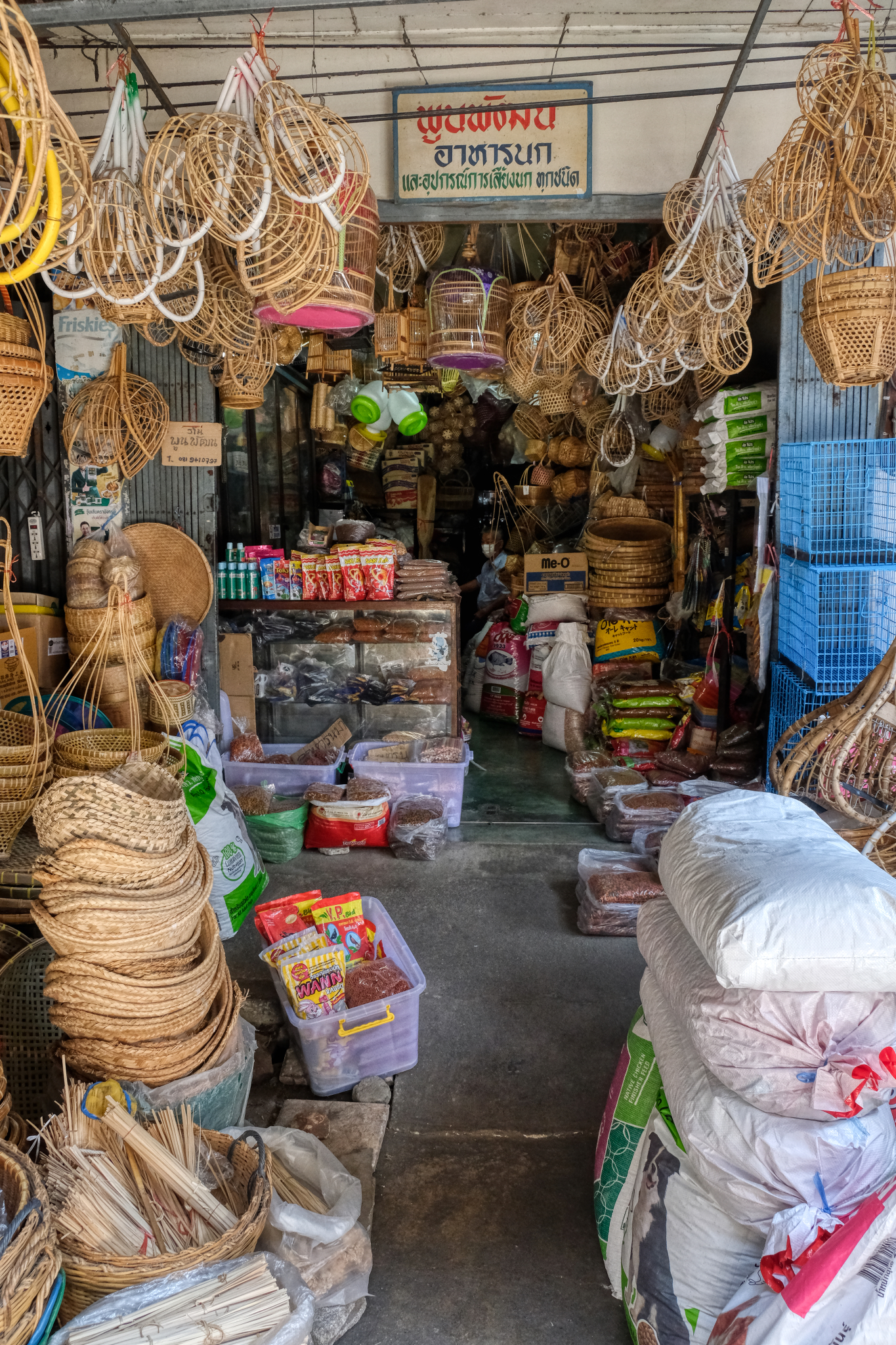 Shops that have everything a local resident would want and need.
Shops that have everything a local resident would want and need.
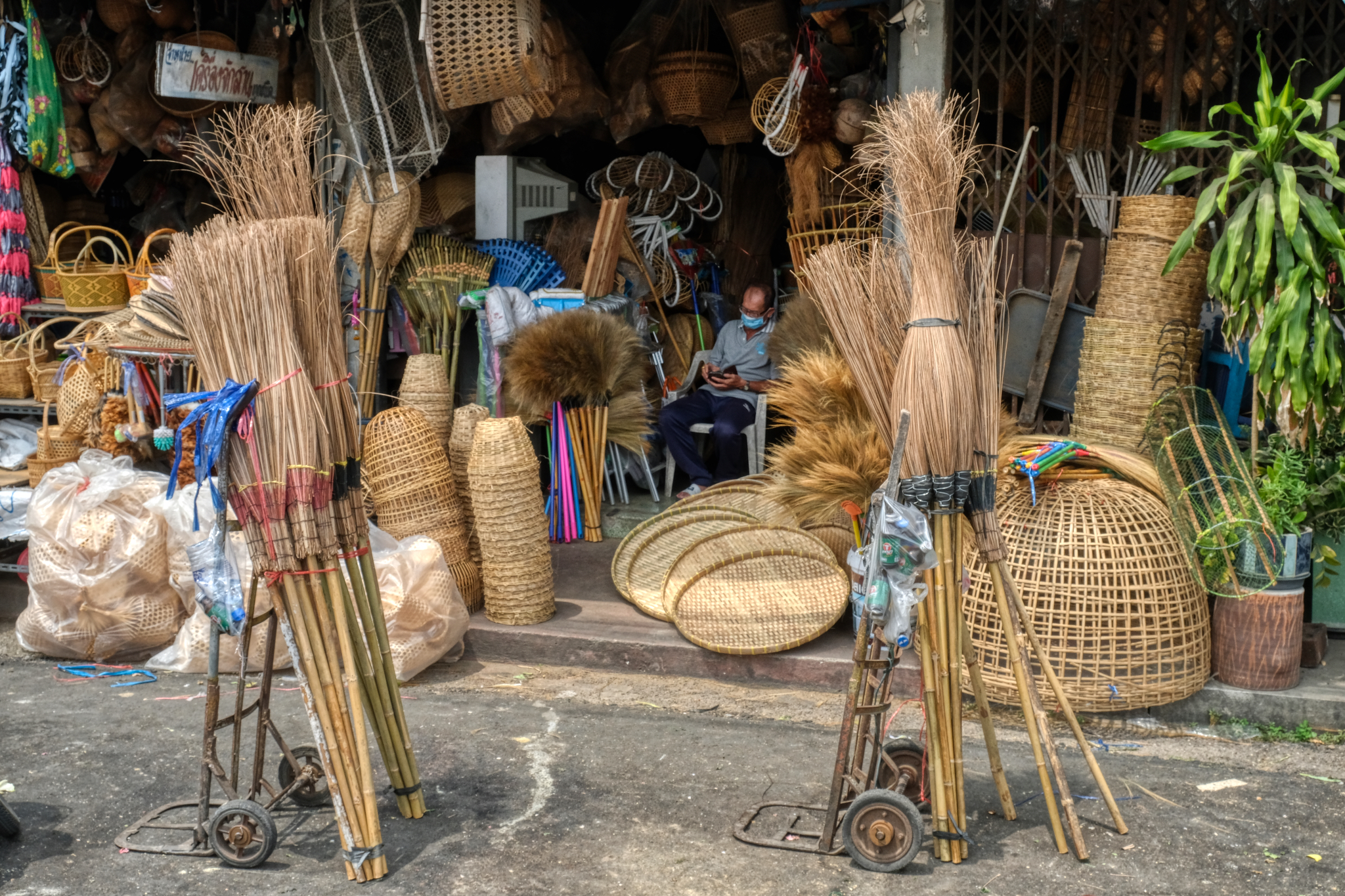 If it can be made out of straw, bamboo, or wicker . . . . they have it here.
If it can be made out of straw, bamboo, or wicker . . . . they have it here.
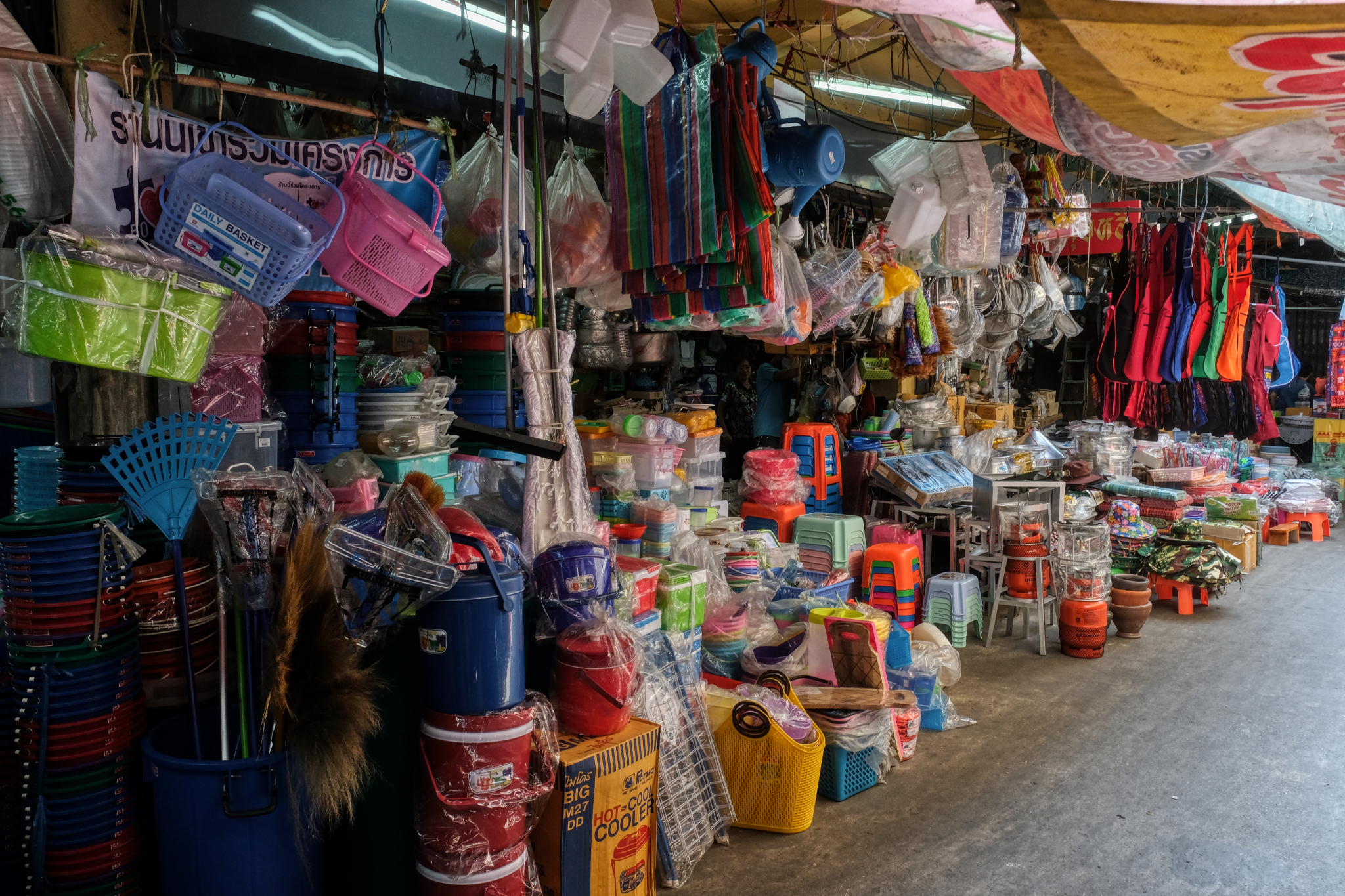 Of course, if it can be made out of straw, bamboo, or wicker . . . it can also be made out of plastic.
Of course, if it can be made out of straw, bamboo, or wicker . . . it can also be made out of plastic.
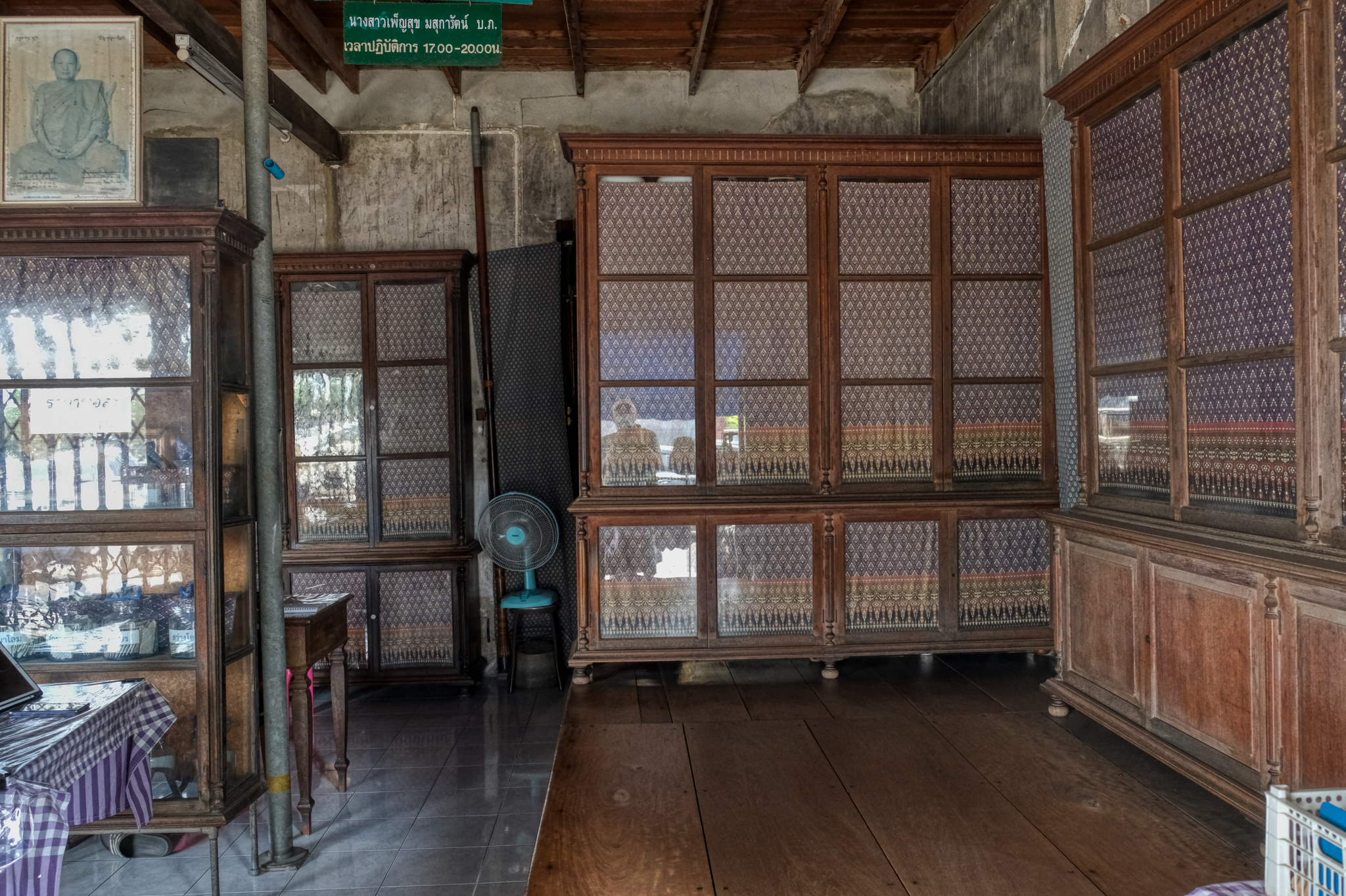 The owner of this shop told me it was restored to how it was when her family started it 100 years ago. A beautiful look into the past times in Thailand.
The owner of this shop told me it was restored to how it was when her family started it 100 years ago. A beautiful look into the past times in Thailand.
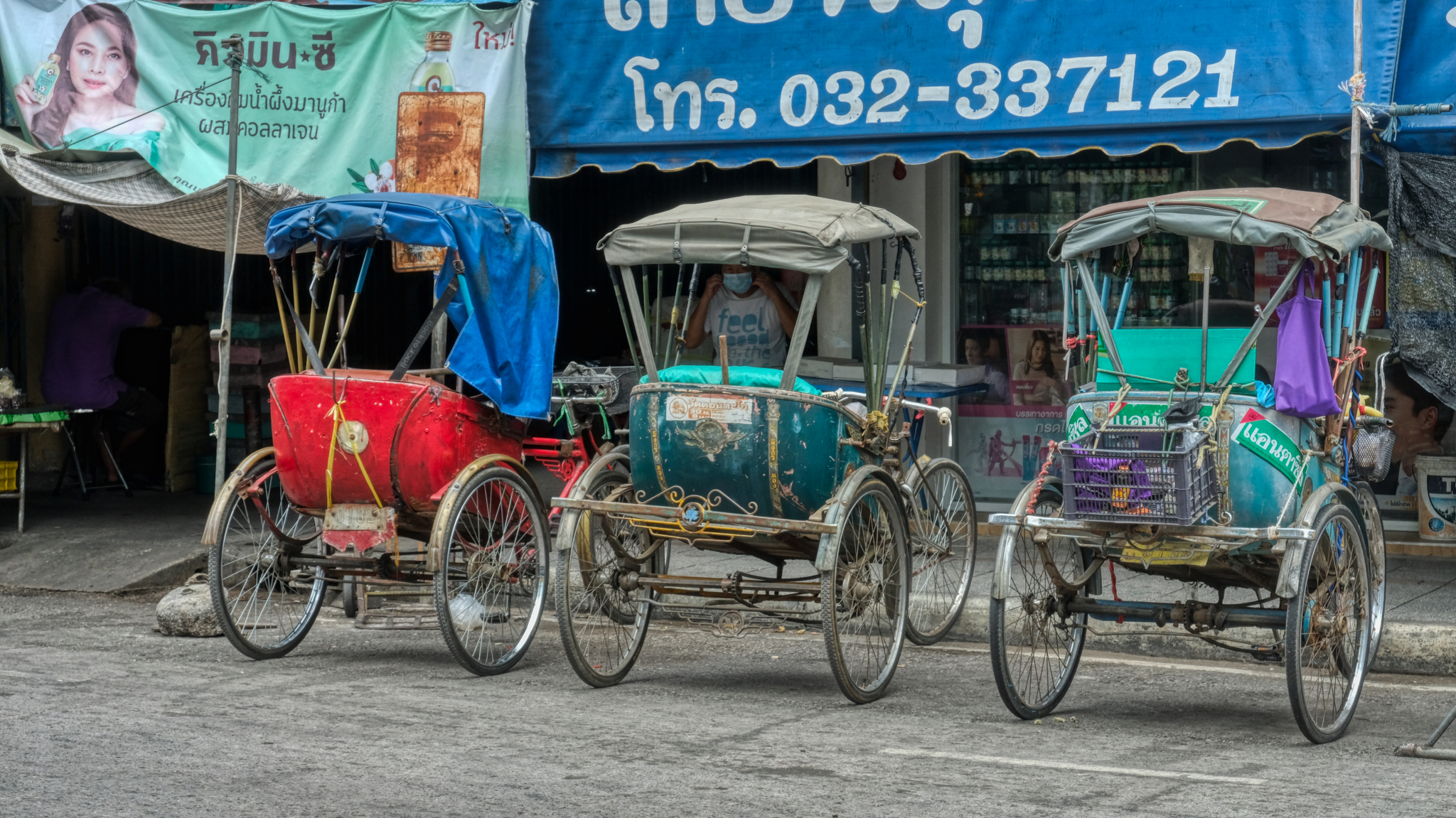 When I came to live in Thailand 26 years ago these samlors were ubiquitous. There would always be 20-30 of these 'pedal cabs' lied up next to the wet markets ready to take the customers home. Now it is rare to see them anywhere any more.
When I came to live in Thailand 26 years ago these samlors were ubiquitous. There would always be 20-30 of these 'pedal cabs' lied up next to the wet markets ready to take the customers home. Now it is rare to see them anywhere any more.
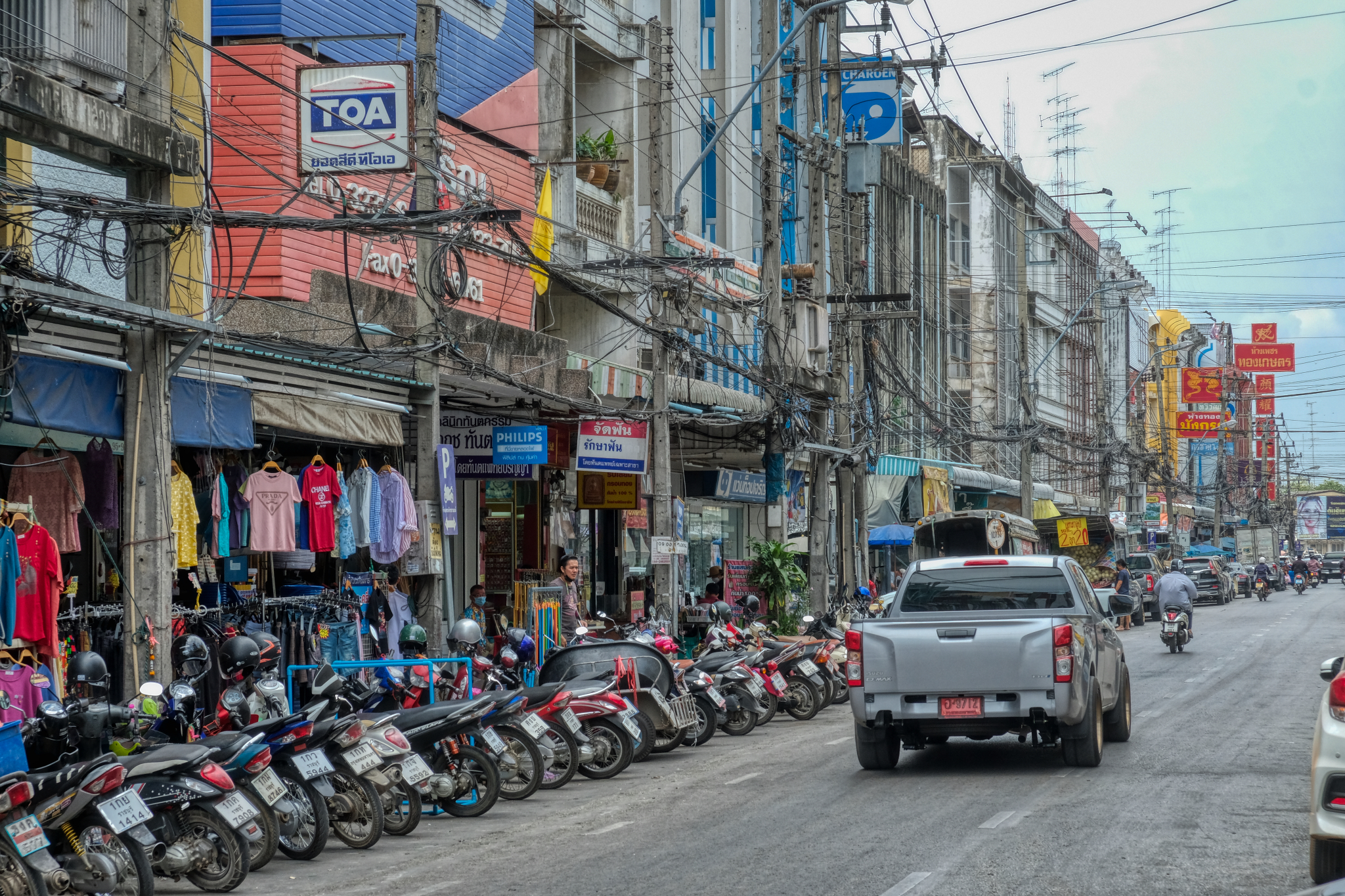 The "modern" Ratchiburi commercial center, dating from the 1970s and 1980s. Of course the true 'modern' Ratchiburi commercial zone is now located in the multinational Big Box stores and shopping malls that dot the major roads leading in and out of the town . . . and the Thais drive there in their pick-up trucks.
The "modern" Ratchiburi commercial center, dating from the 1970s and 1980s. Of course the true 'modern' Ratchiburi commercial zone is now located in the multinational Big Box stores and shopping malls that dot the major roads leading in and out of the town . . . and the Thais drive there in their pick-up trucks.
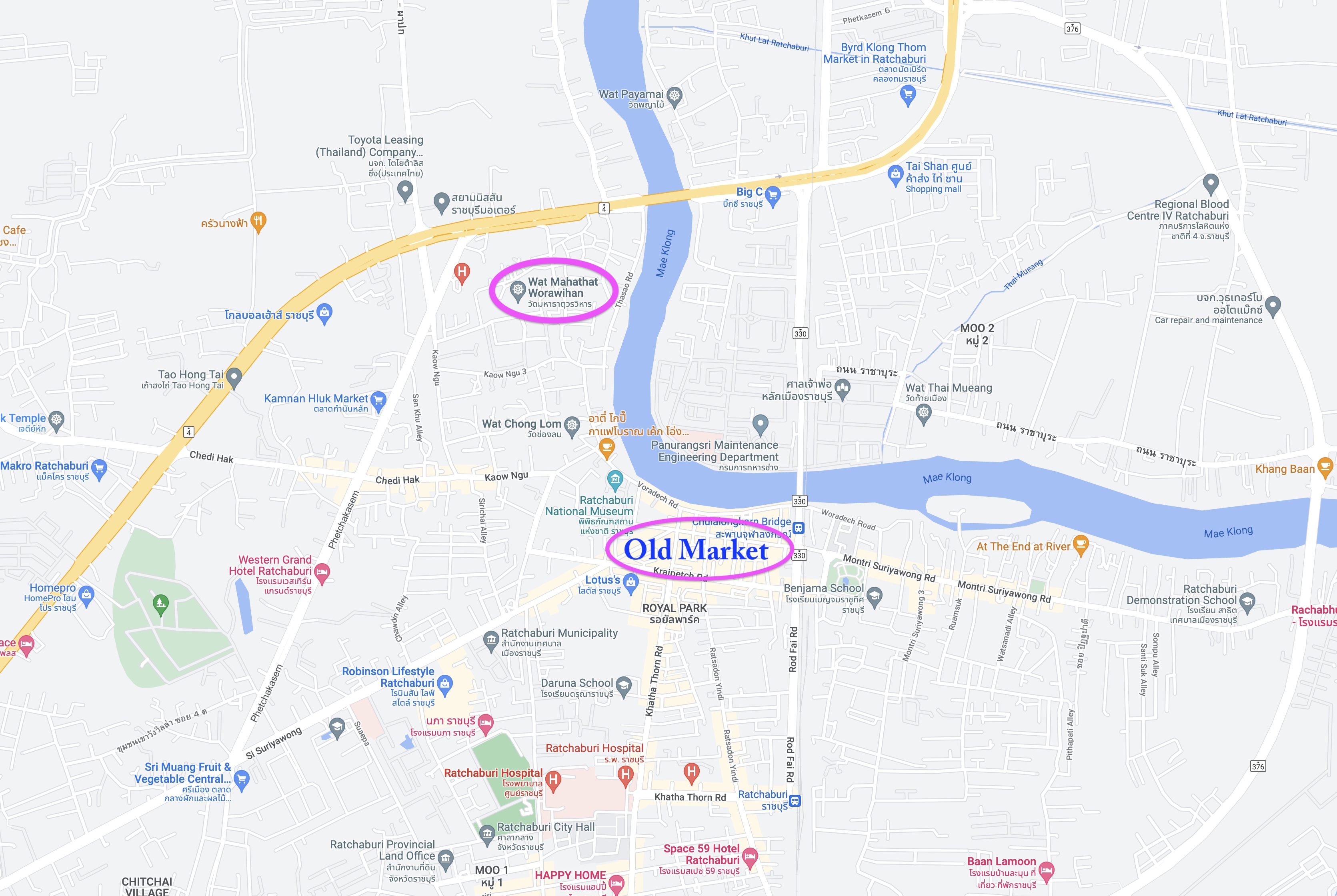 My last stop was at the amazing 10th century Wat Mahathat Worawihan.
My last stop was at the amazing 10th century Wat Mahathat Worawihan.
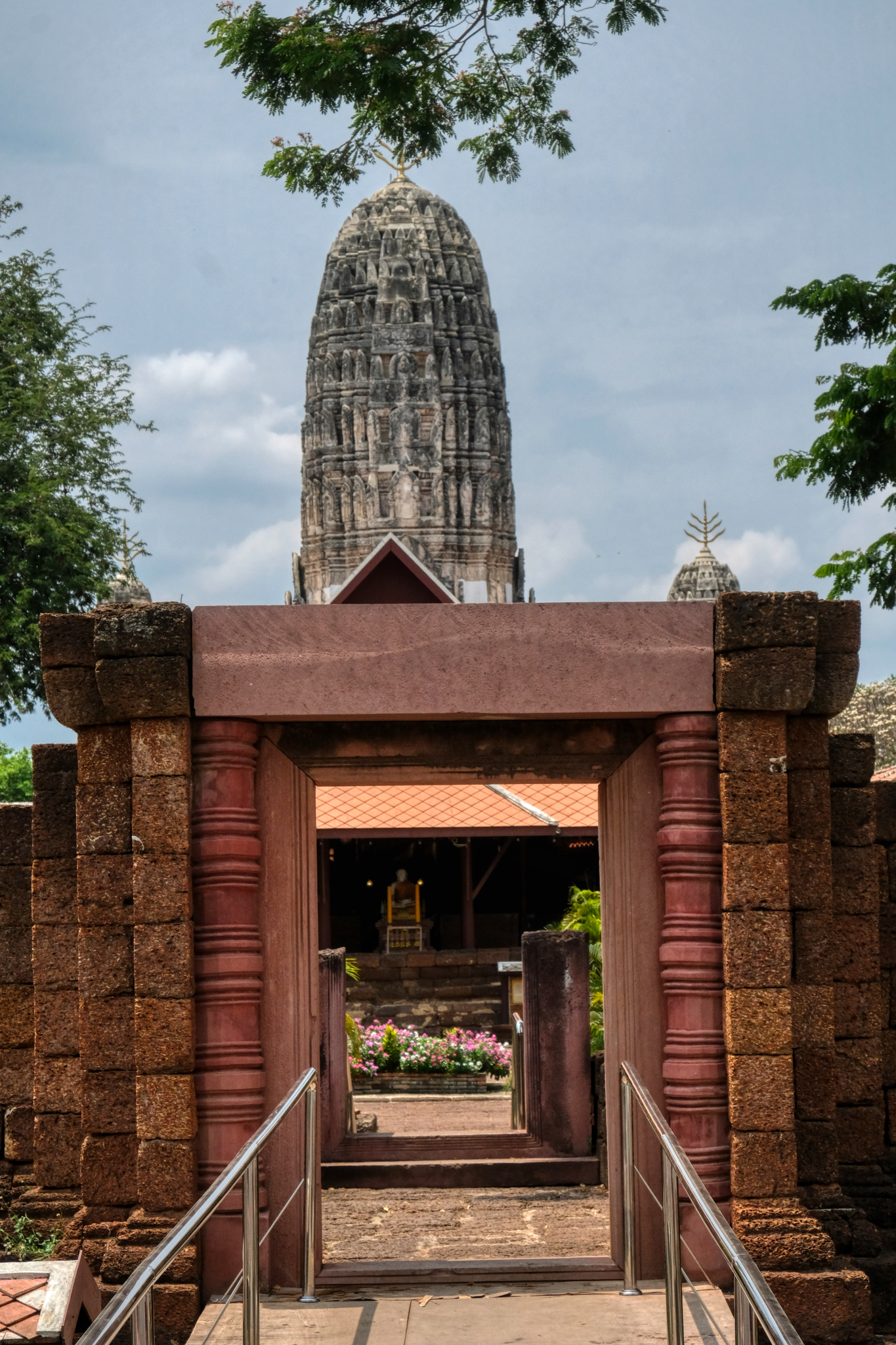 The front gate of Wat Mahathat Worawihan did not impress. But what was within astonished me.
The front gate of Wat Mahathat Worawihan did not impress. But what was within astonished me.
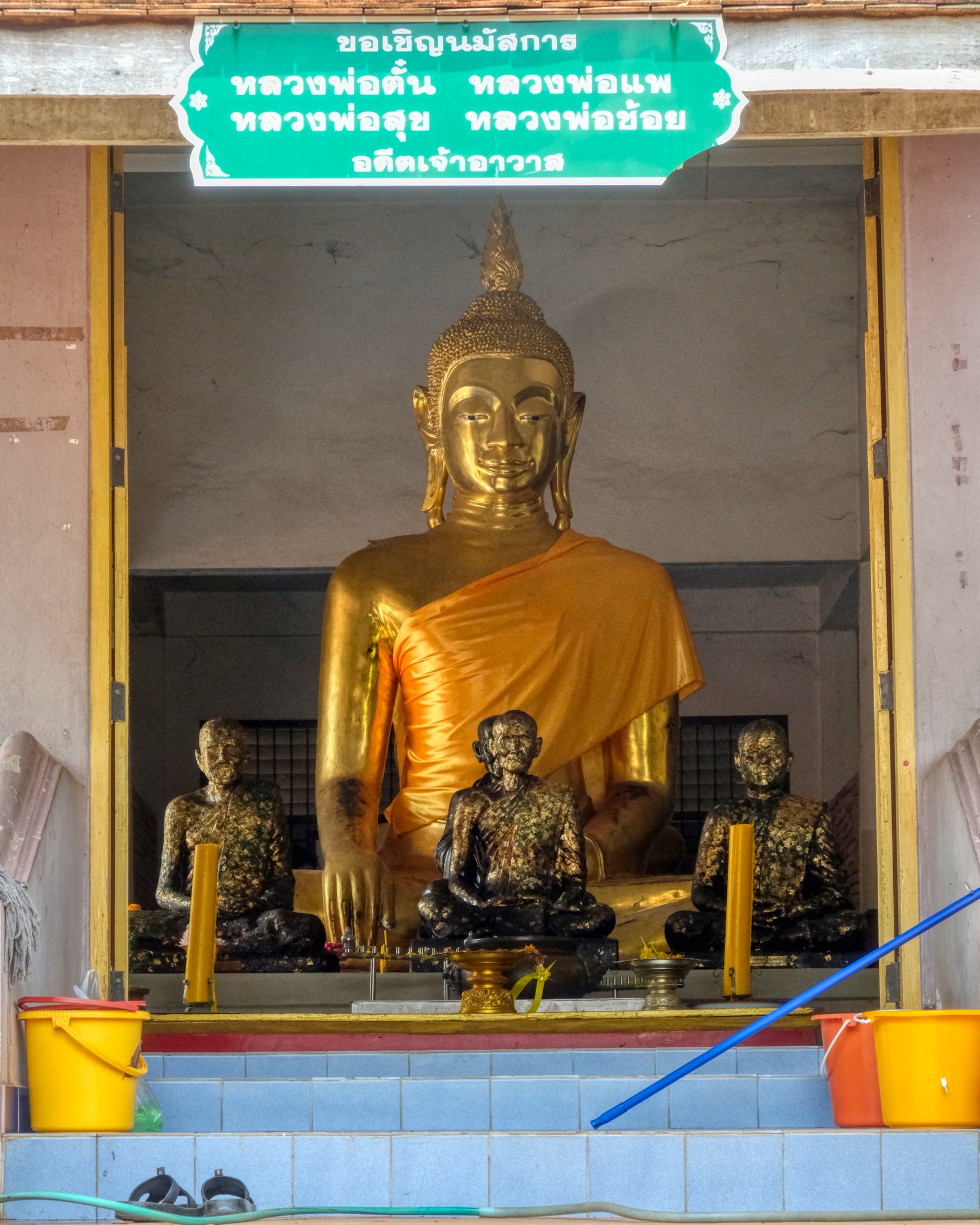 My first inkling about the beauty within this was was when I looked through a small building's window and saw this.
My first inkling about the beauty within this was was when I looked through a small building's window and saw this.
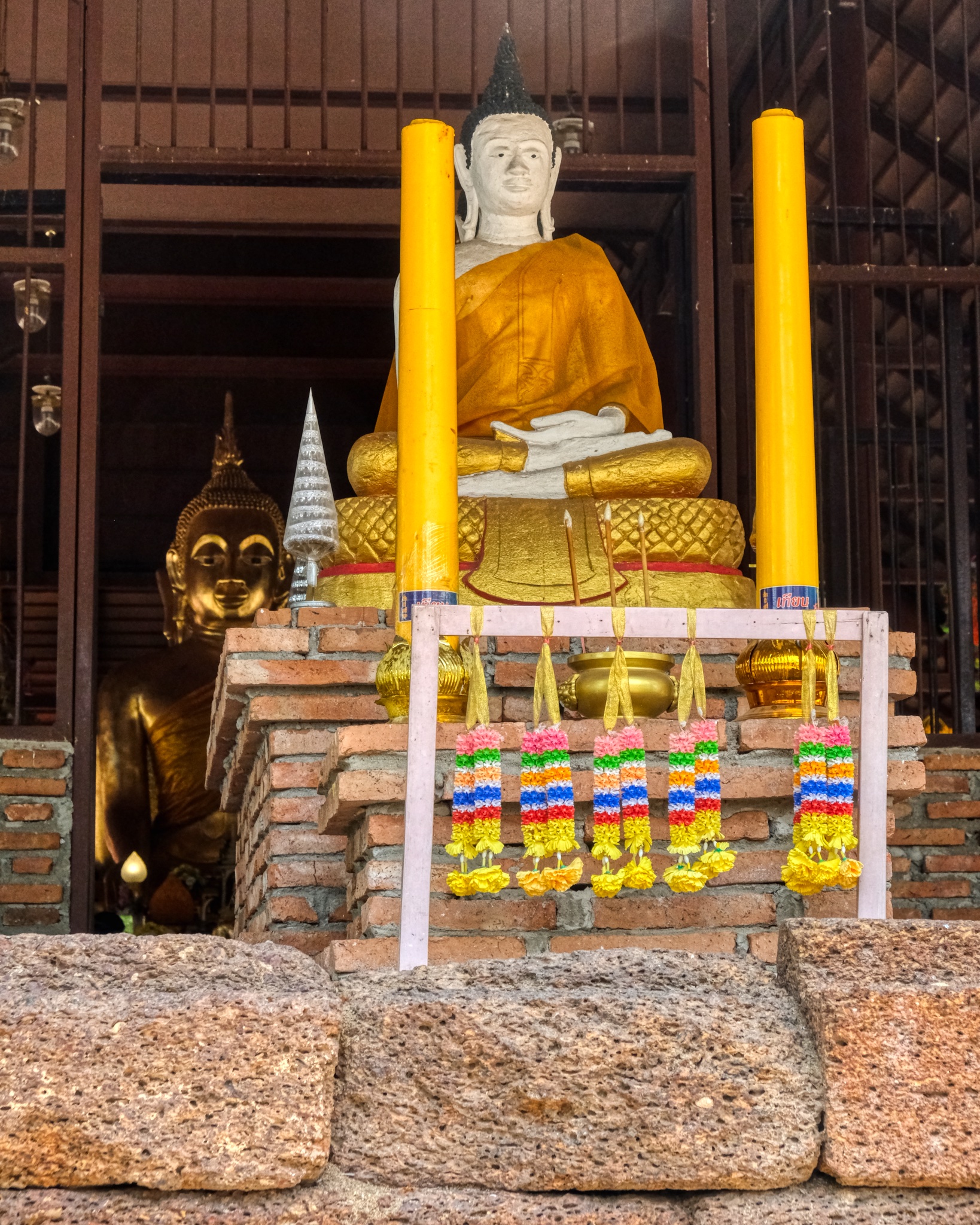 The sala/temple straight ahead looked inviting. I could see a large Buddha image within.
The sala/temple straight ahead looked inviting. I could see a large Buddha image within.
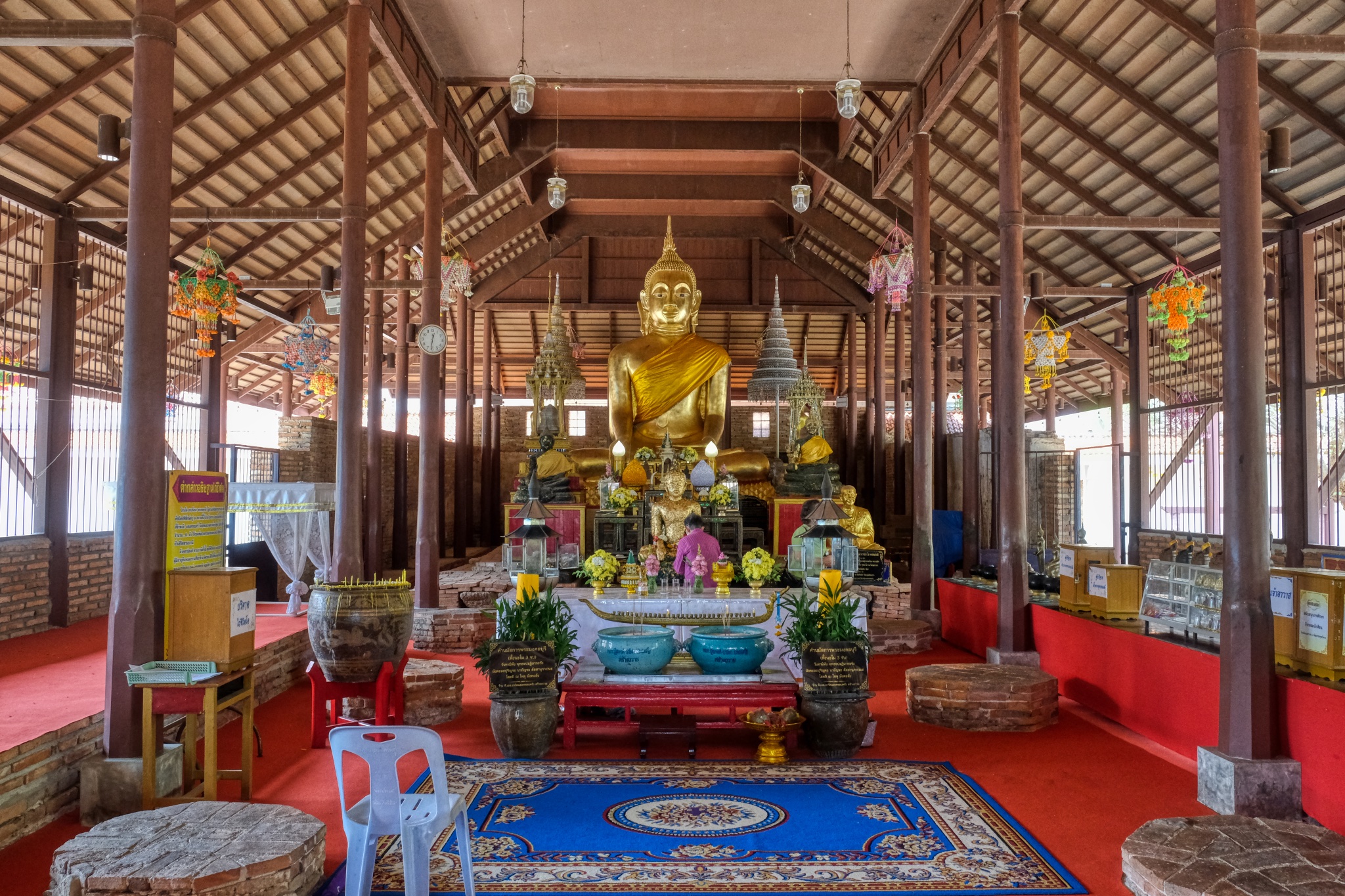 I took my shoes off and went in and discovered this remarkable spiritual space. If you look closely you can see the bases of the pillars that held up an earlier temple in the same location. "It is believed that this temple was built in the Dvaravati Period, around the 10th-11th Century, nearly the same time as when the old city of Ratchaburi was built. Later, a Khmer or Lop Buri sanctuary was built over the temple around the 13th Century to be the centre of the town according to the Khmer belief regarding the universe."
I took my shoes off and went in and discovered this remarkable spiritual space. If you look closely you can see the bases of the pillars that held up an earlier temple in the same location. "It is believed that this temple was built in the Dvaravati Period, around the 10th-11th Century, nearly the same time as when the old city of Ratchaburi was built. Later, a Khmer or Lop Buri sanctuary was built over the temple around the 13th Century to be the centre of the town according to the Khmer belief regarding the universe."
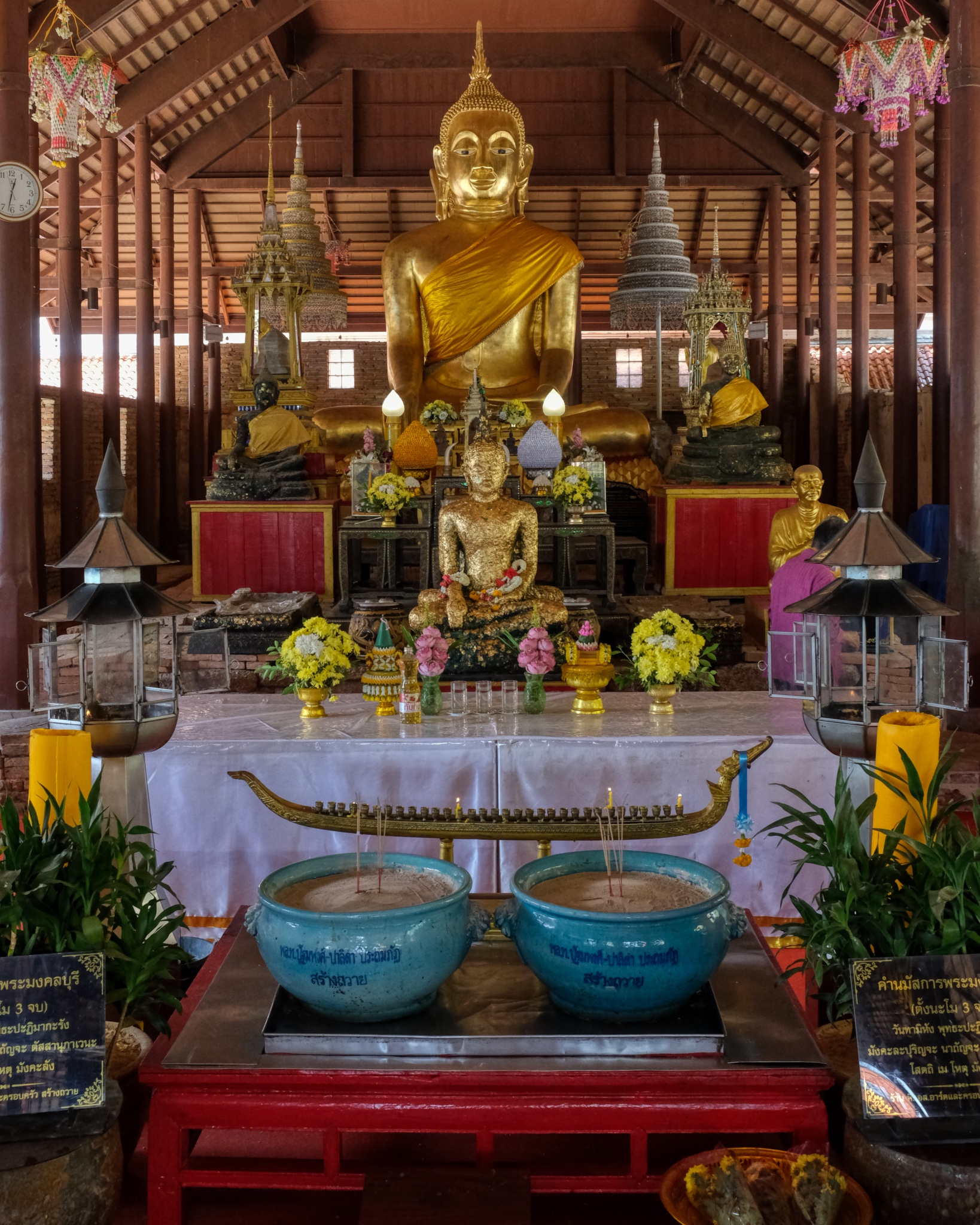 Exquisite Buddha images and a fine altar.
Exquisite Buddha images and a fine altar.
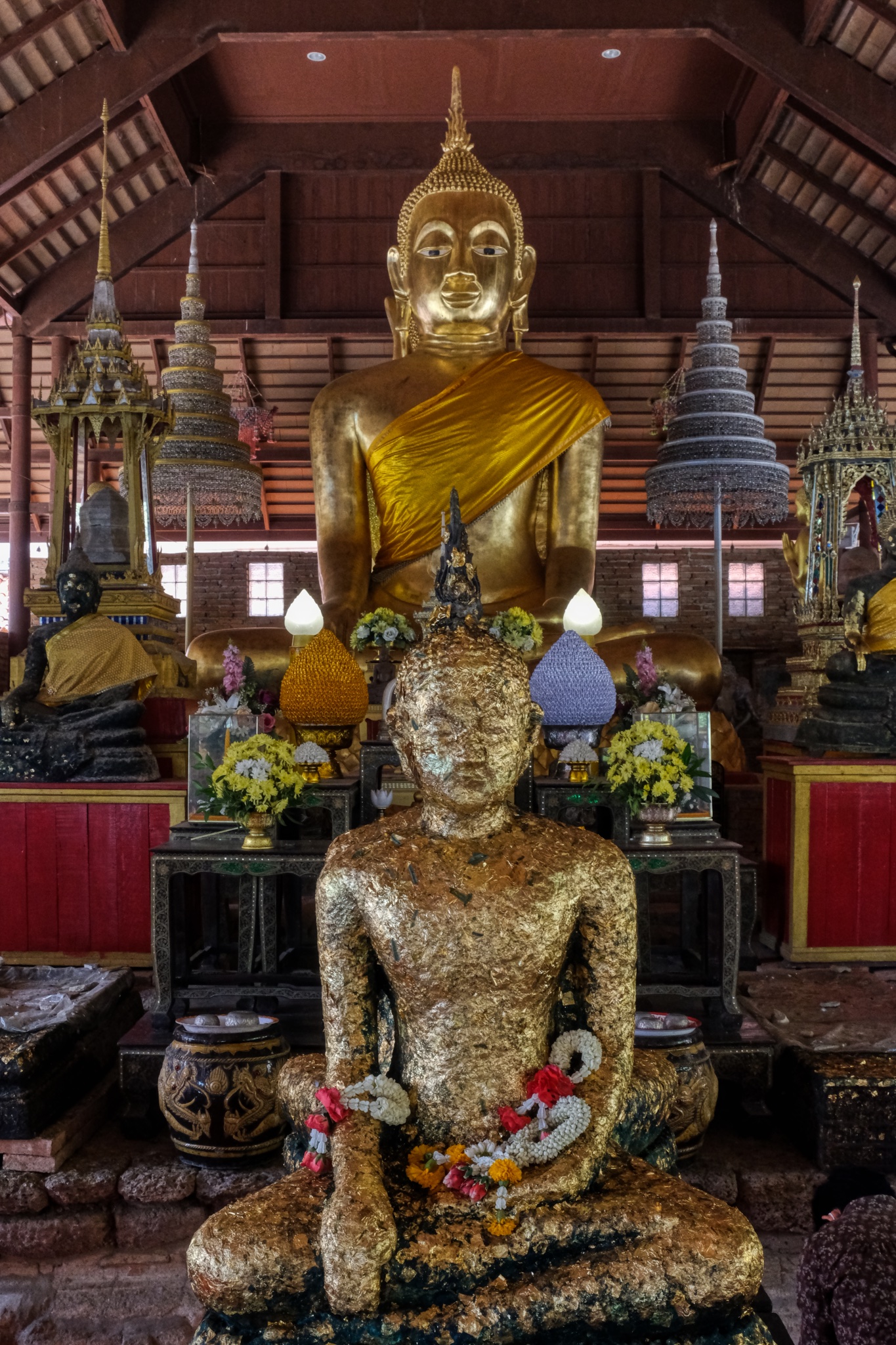 Buddha.
Buddha.
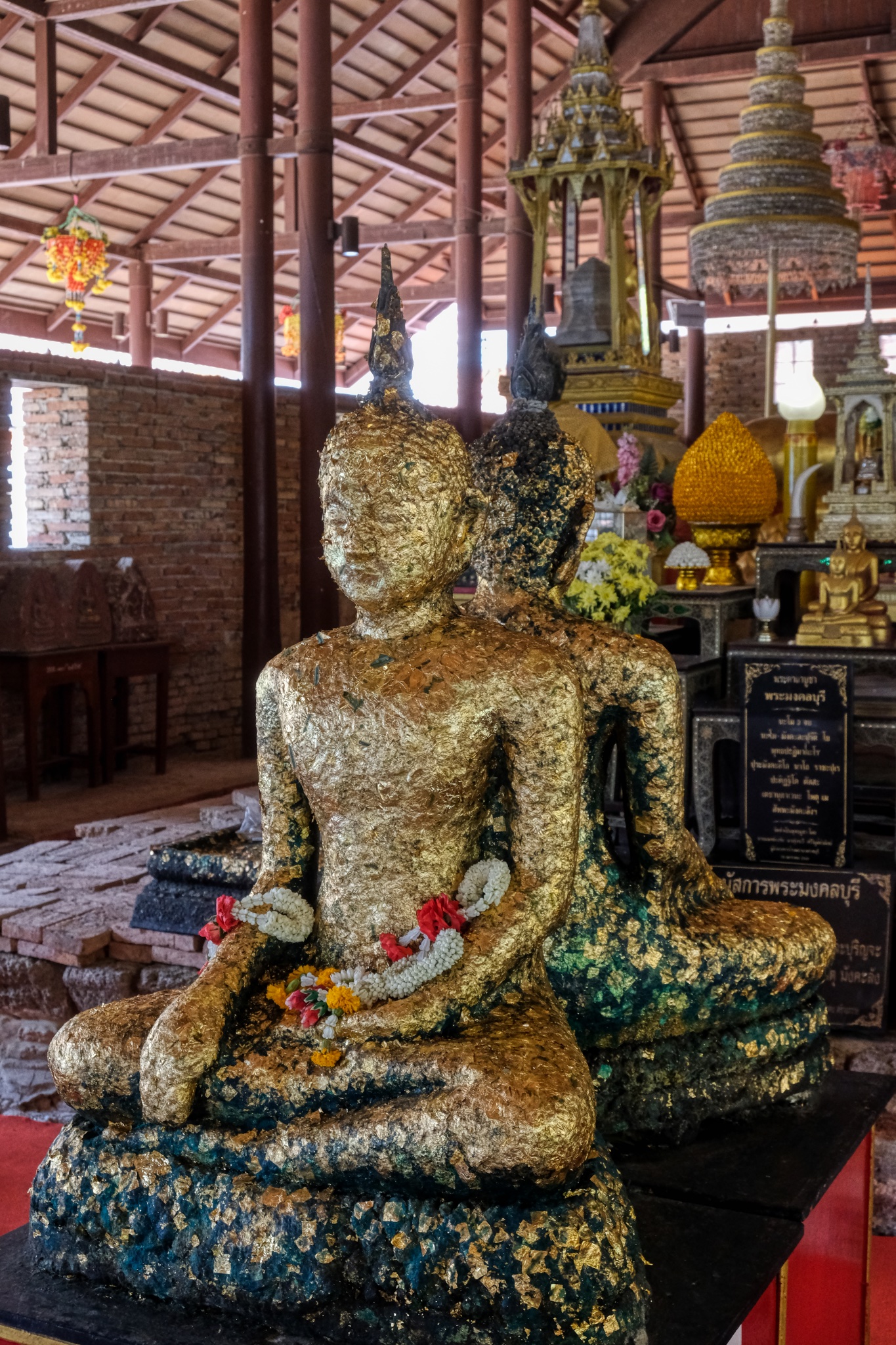 Devotees adorn Buddha images with gold leaf as a part of respectful practices. I was intrigued by these two Buddhas sitting back-to-back.
Devotees adorn Buddha images with gold leaf as a part of respectful practices. I was intrigued by these two Buddhas sitting back-to-back.
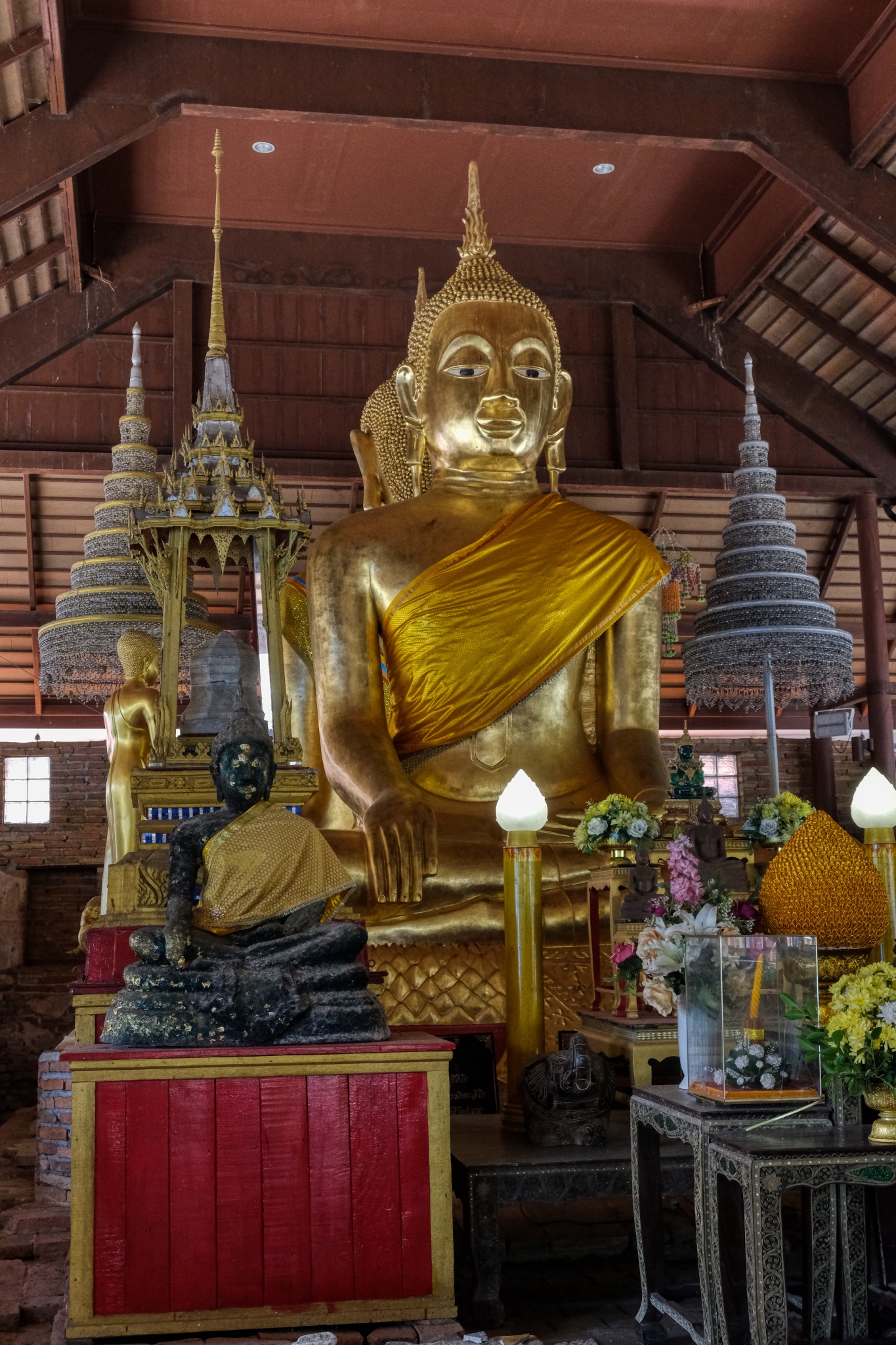 When I looked up at the main, large Buddha image I noticed that it was also a double Buddha. It is very unusual to see two Buddhas sitting back-to-back.
When I looked up at the main, large Buddha image I noticed that it was also a double Buddha. It is very unusual to see two Buddhas sitting back-to-back.
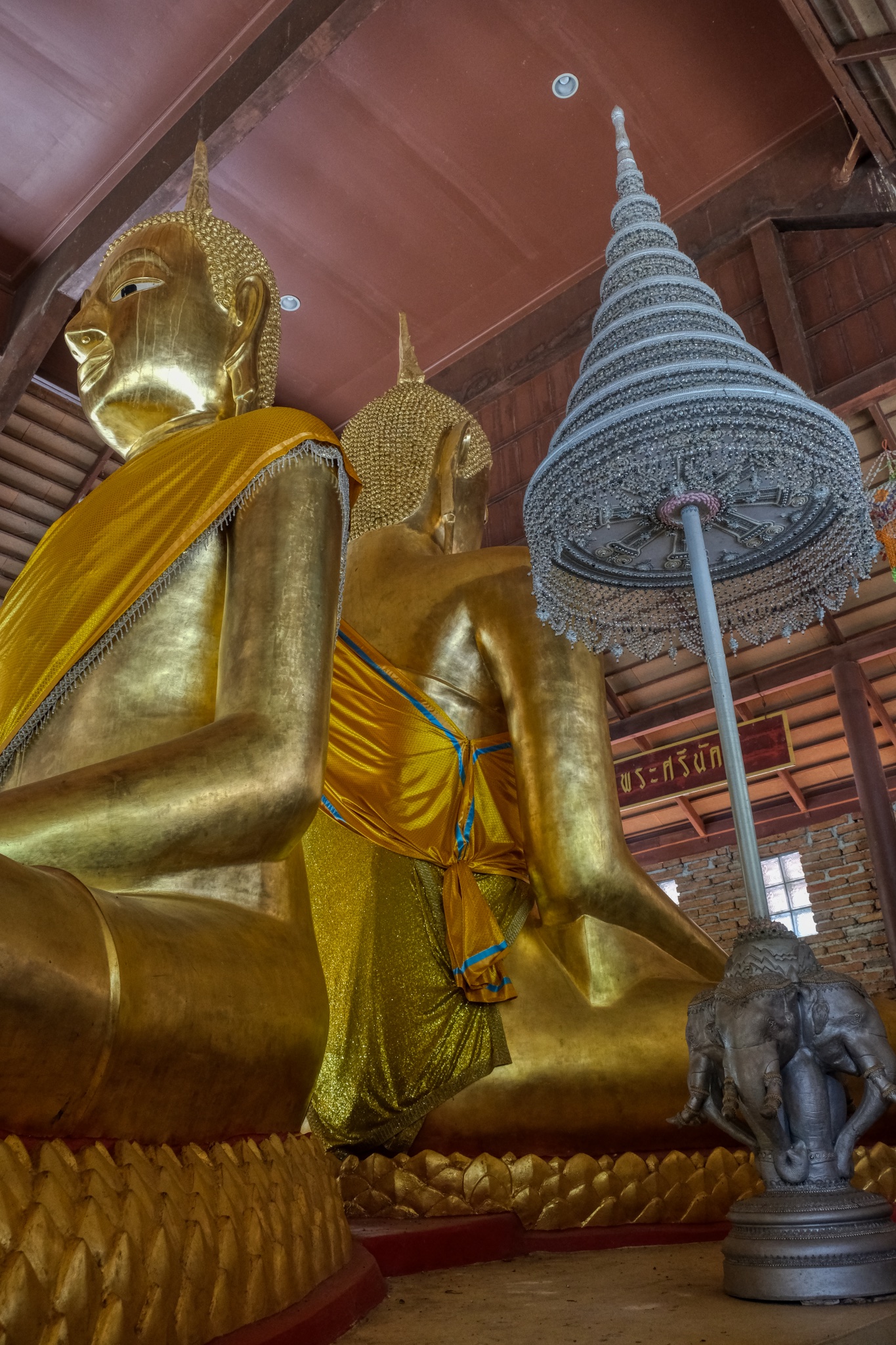 Normally only one Buddha sits in a Wat, and normally facing East.
Normally only one Buddha sits in a Wat, and normally facing East.
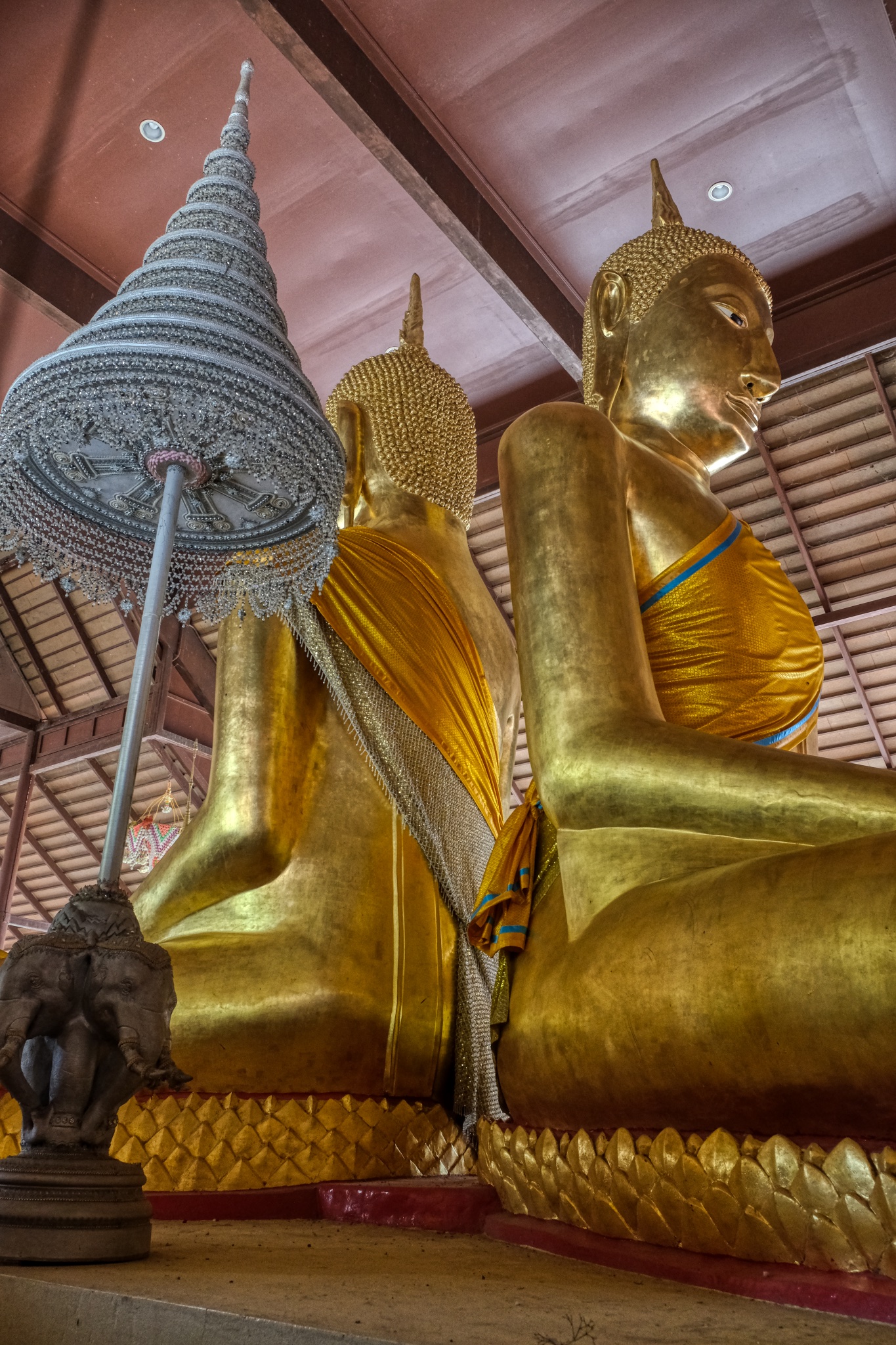 They were extraordinarily beautiful Buddhas. My research turned this up:"It is a stucco Buddha image in the gesture of subduing Mara, which has a lap width of 8 Sok 1 Khuep. Its characteristic is of the Pre-Ayutthaya art, with a Sukhothai style face. It has a long body but short knees. He turns his face to the east, and there is another Buddha image behind his back, turning its face to the opposite side or the west. This means we ask the Buddha’s blessing to prevent danger from the front as well as the back." (citation)
They were extraordinarily beautiful Buddhas. My research turned this up:"It is a stucco Buddha image in the gesture of subduing Mara, which has a lap width of 8 Sok 1 Khuep. Its characteristic is of the Pre-Ayutthaya art, with a Sukhothai style face. It has a long body but short knees. He turns his face to the east, and there is another Buddha image behind his back, turning its face to the opposite side or the west. This means we ask the Buddha’s blessing to prevent danger from the front as well as the back." (citation)
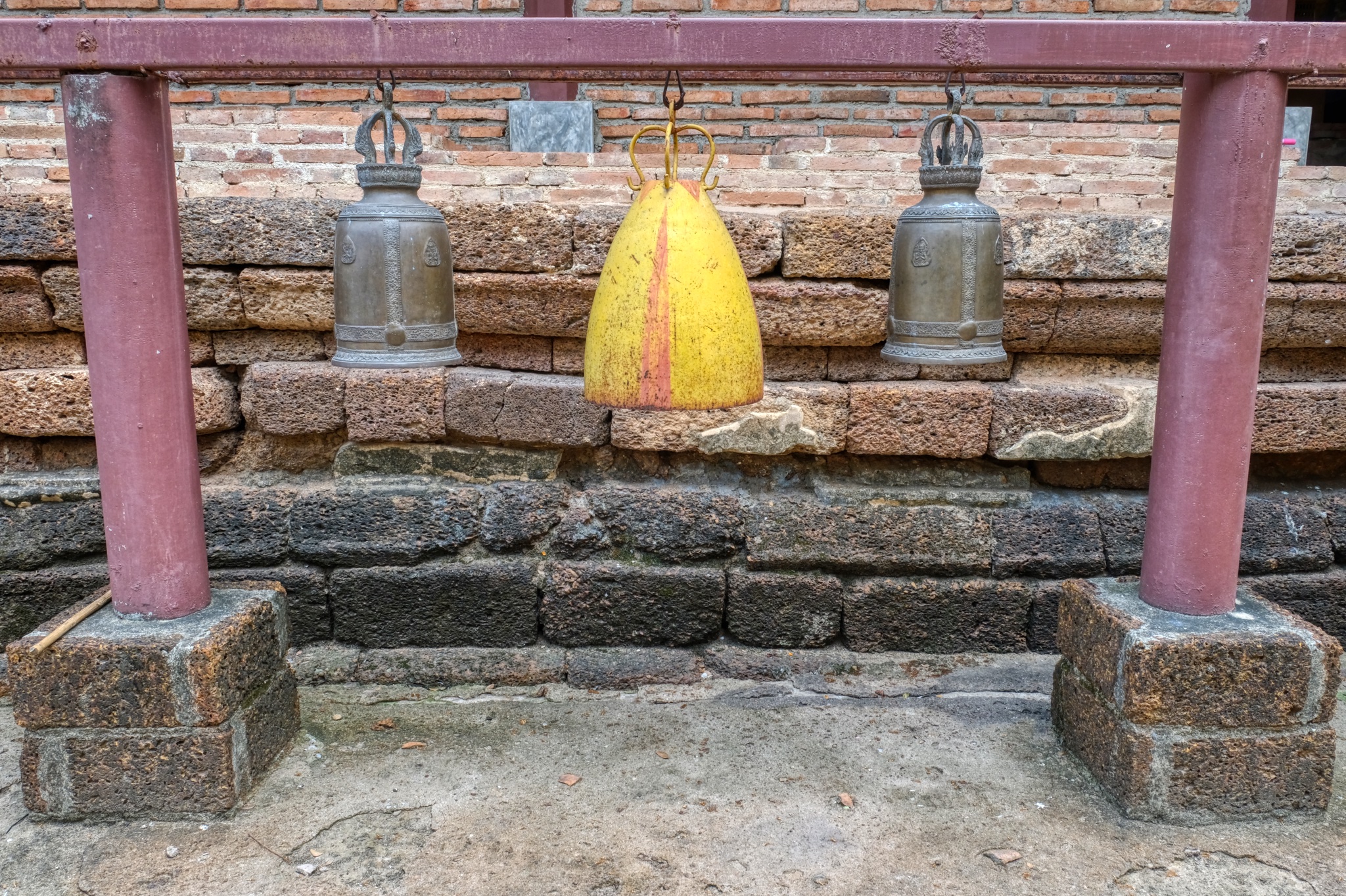 I left the Buddha hall to wander around the wat grounds.
I left the Buddha hall to wander around the wat grounds.
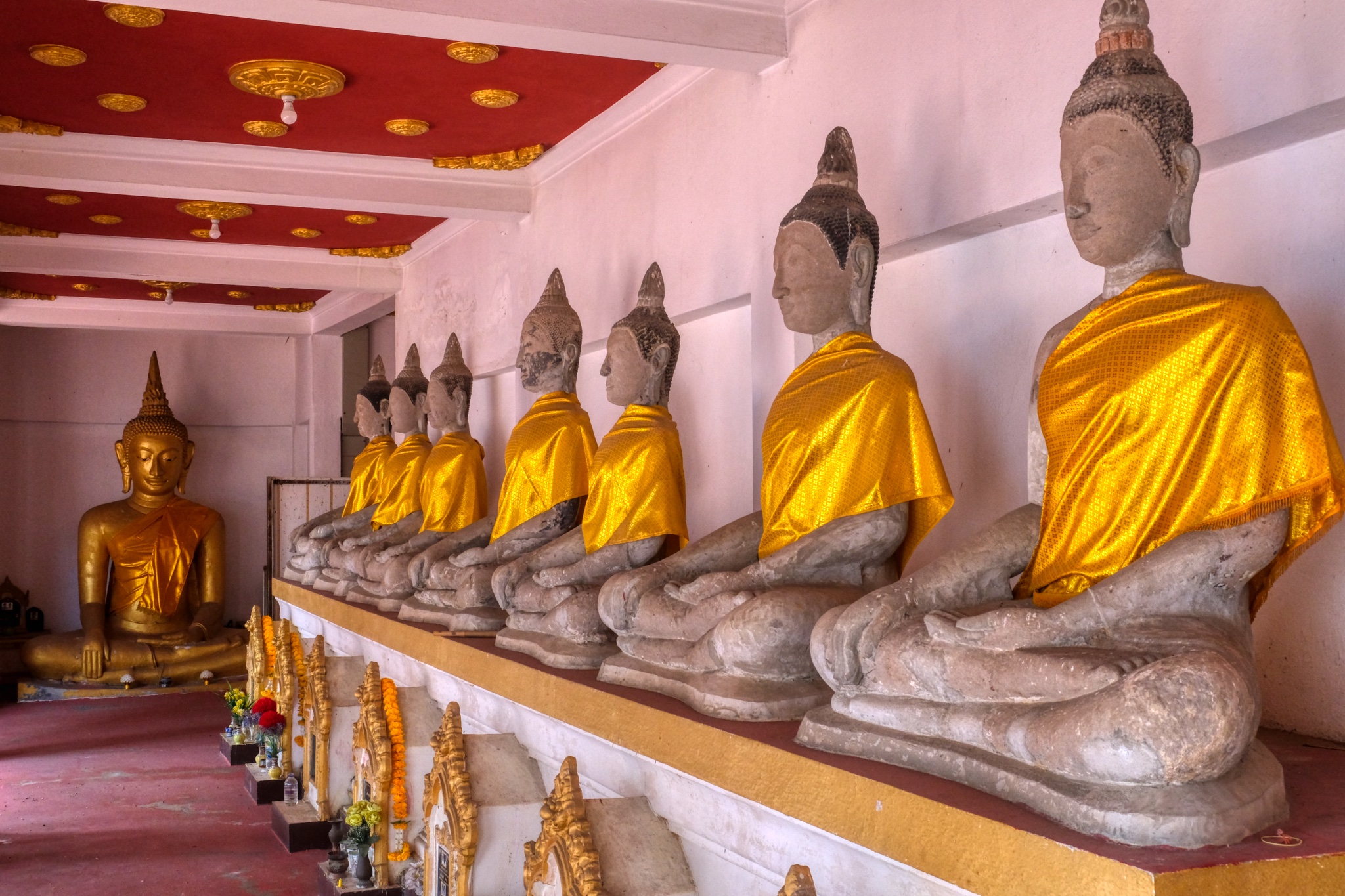 Like many Thai wats, there are covered halls lined with Buddha images, often as markers for the cremated remains of former monks and doners, as is the case here.
Like many Thai wats, there are covered halls lined with Buddha images, often as markers for the cremated remains of former monks and doners, as is the case here.
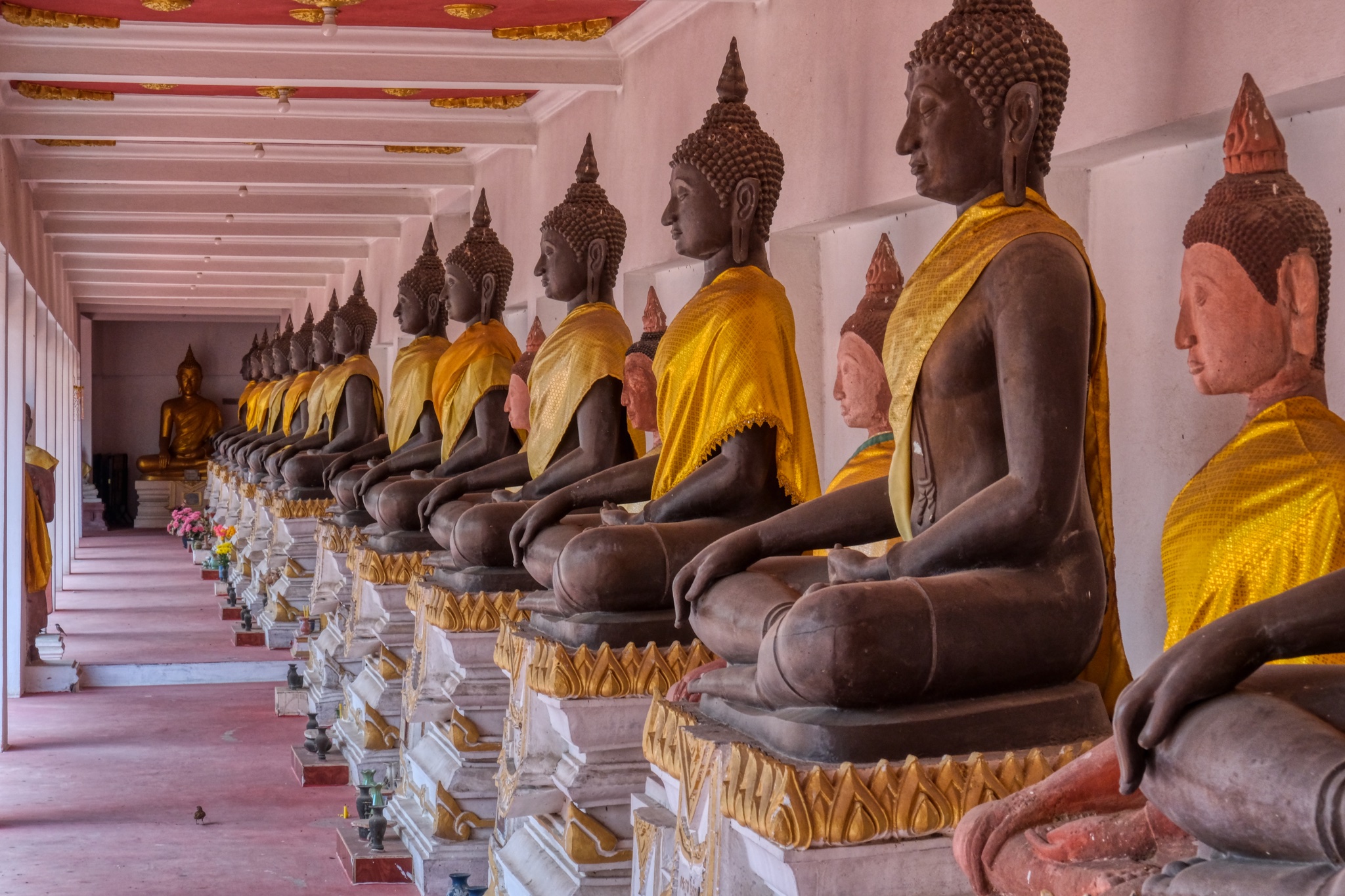 Such a beautiful sight.
Such a beautiful sight.
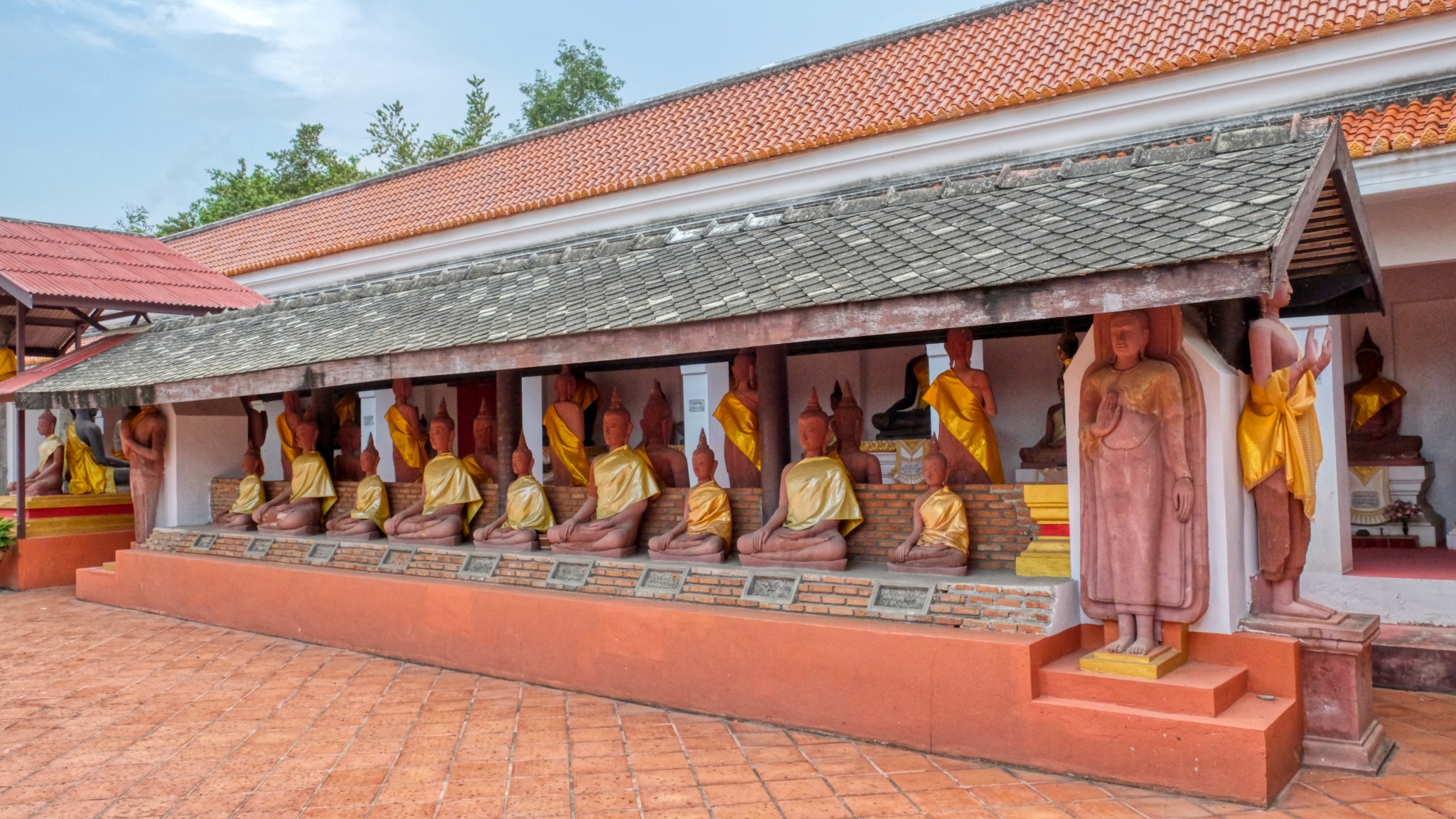 In fact, there are several rows of these grave marking Buddha statues.
In fact, there are several rows of these grave marking Buddha statues.
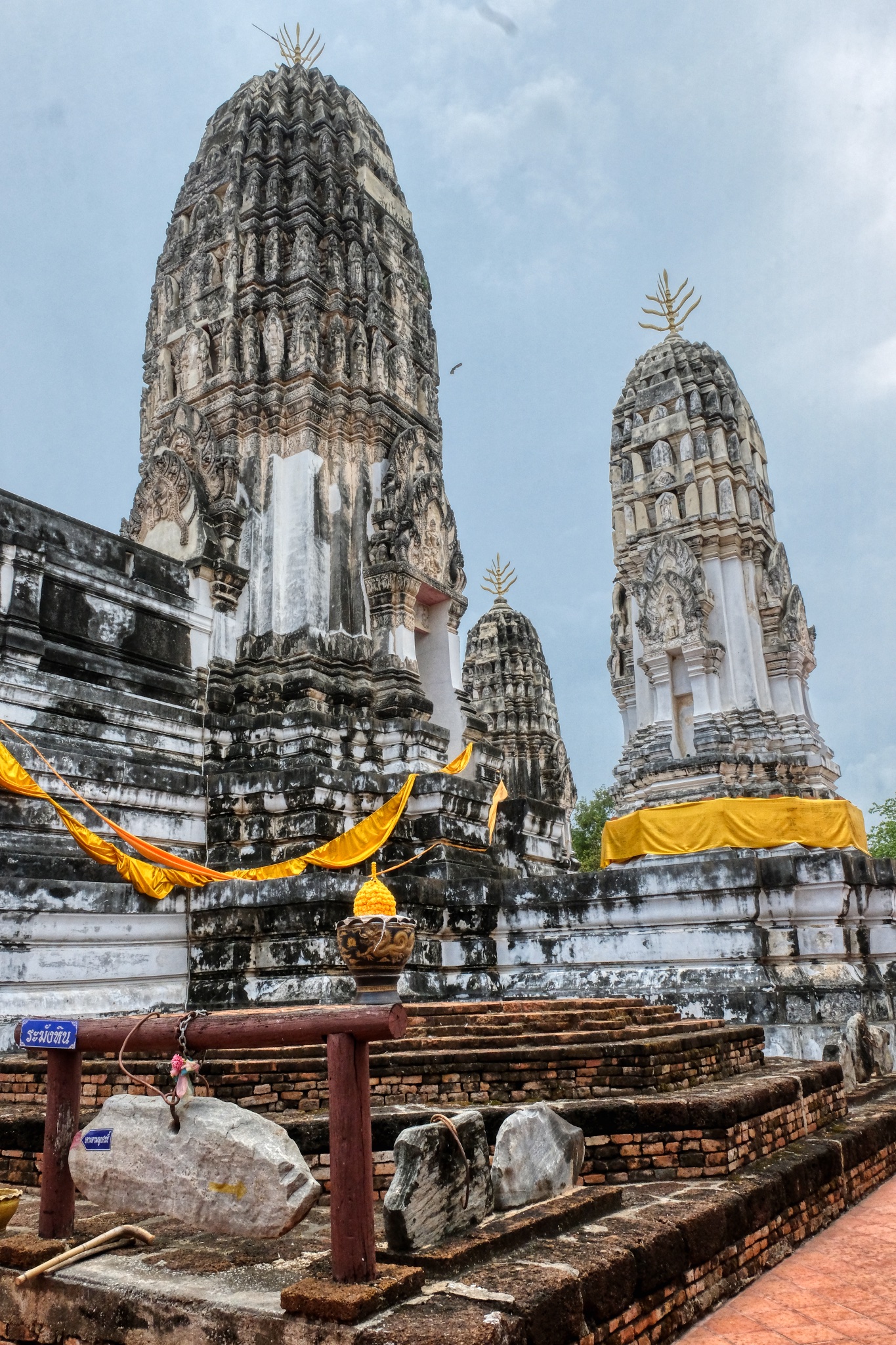 The Five Prangs. At the center of th Wat is a large courtyard enclosed by a cloister. At the center of the courtyard stand five massive parangs, known as "Phra Prang Ha Yod", or five peak prang. The Khmer/Lopburi style towers were constructed during the Sukhothai era.
The Five Prangs. At the center of th Wat is a large courtyard enclosed by a cloister. At the center of the courtyard stand five massive parangs, known as "Phra Prang Ha Yod", or five peak prang. The Khmer/Lopburi style towers were constructed during the Sukhothai era.
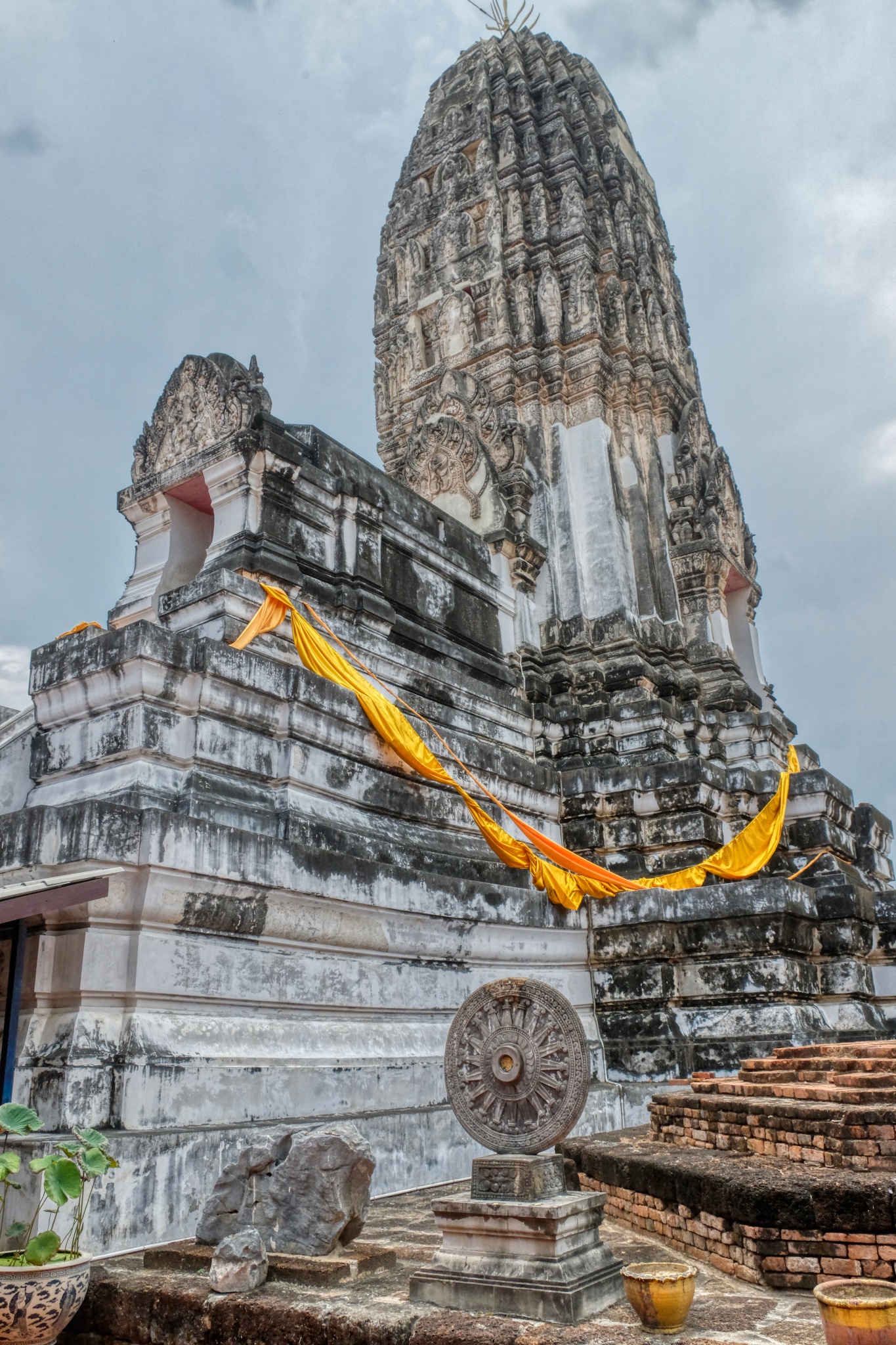
"Surrounded by four smaller ones, the tallest central prang rising over forty meters enshrines Buddha relics. Enshrined in large niches on all of its four faces are standing golden images of the Buddha. The brick plastered prangs, decorated with fine stucco work are topped with a trishula, a three pointed spear, the weapon of the Hindu God Shiva. Sheltering them is a small multi tiered ceremonial umbrella" (citation)
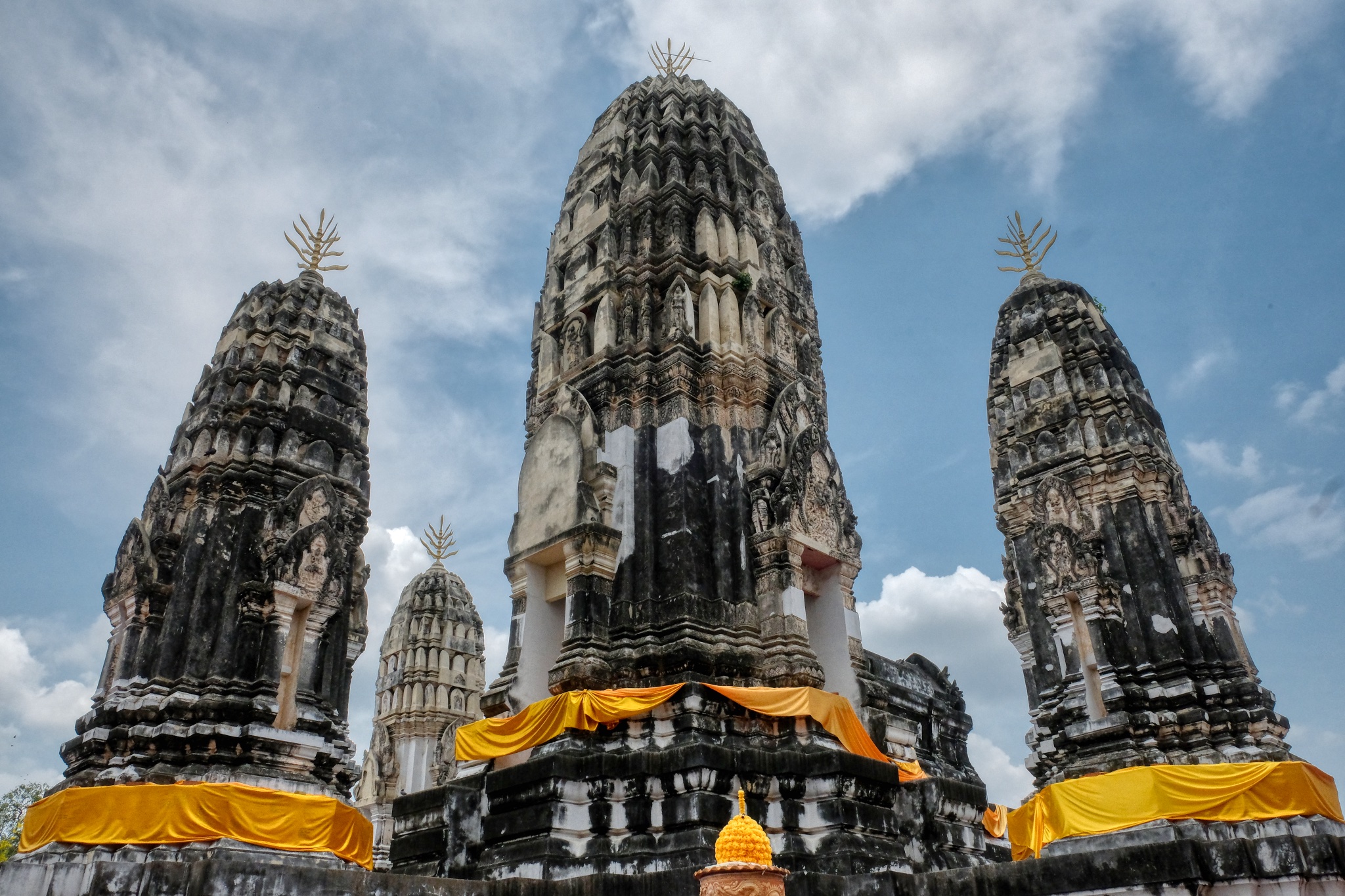 Extraordinary.
Extraordinary.
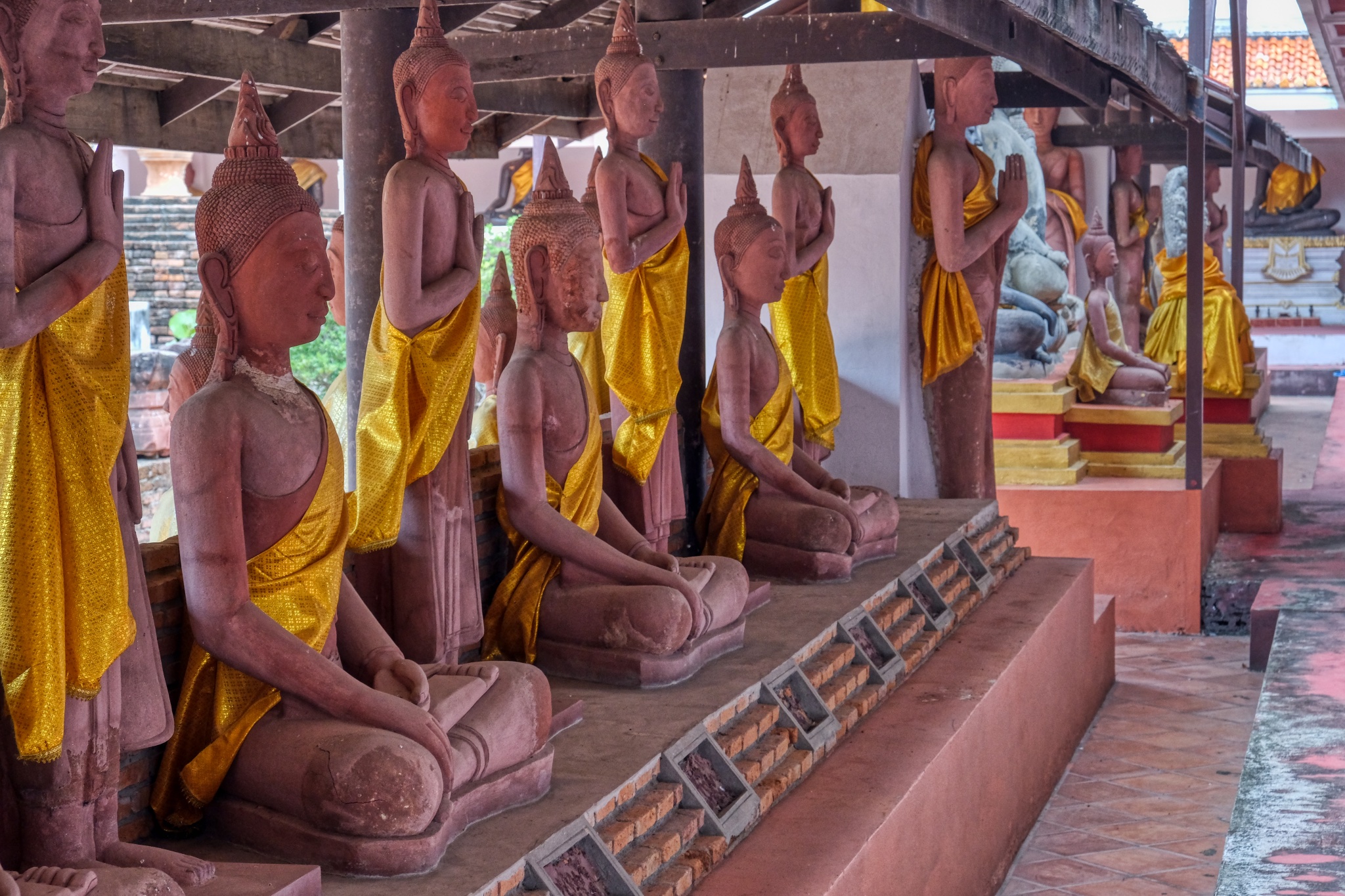 Ah! A phone message from my wife: she is on the 16th hole. Time for me to leave this amazing place. I headed back out along the Buddha colonnades.
Ah! A phone message from my wife: she is on the 16th hole. Time for me to leave this amazing place. I headed back out along the Buddha colonnades.
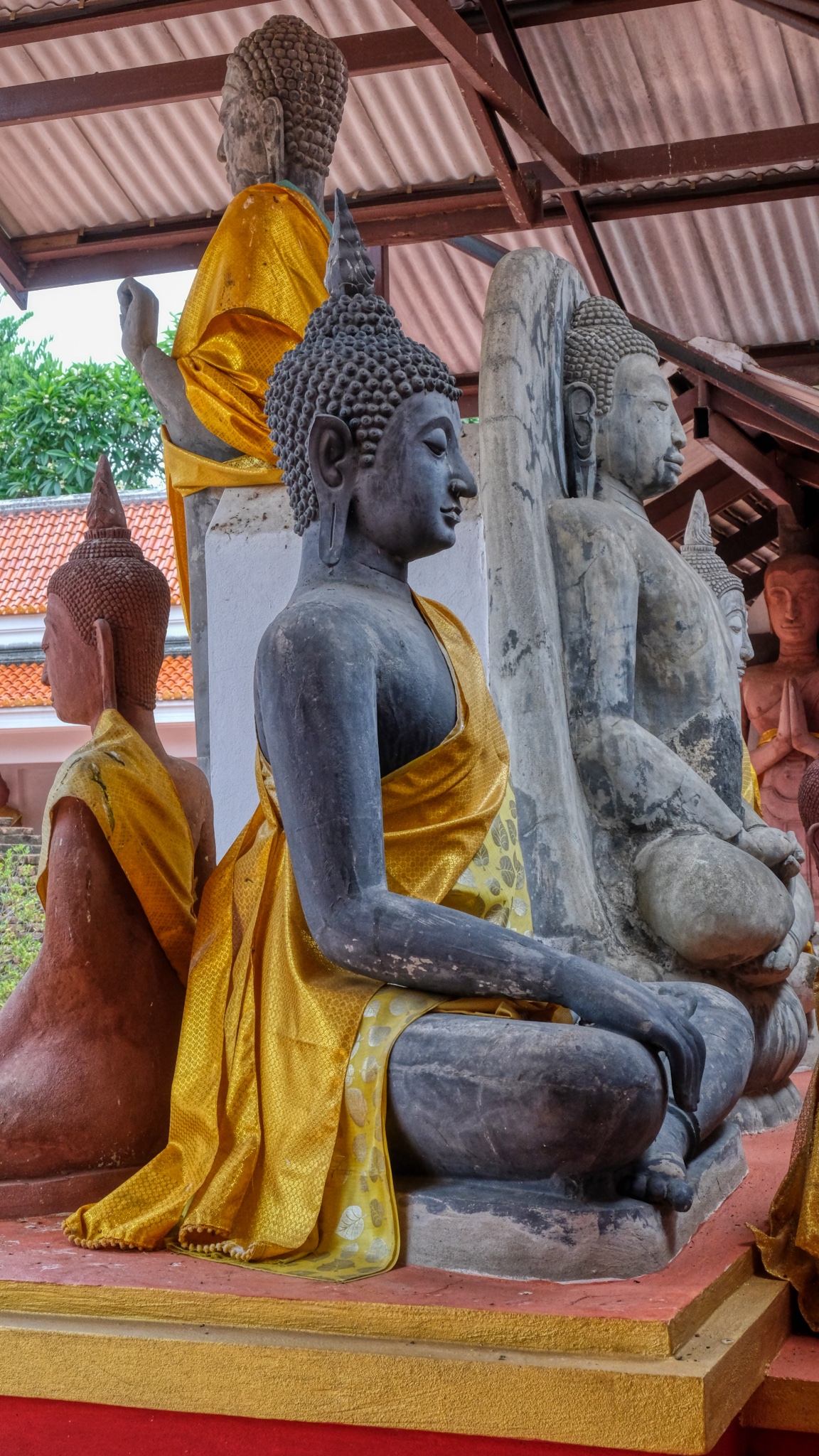 A wide variety of Buddha images present.
A wide variety of Buddha images present.
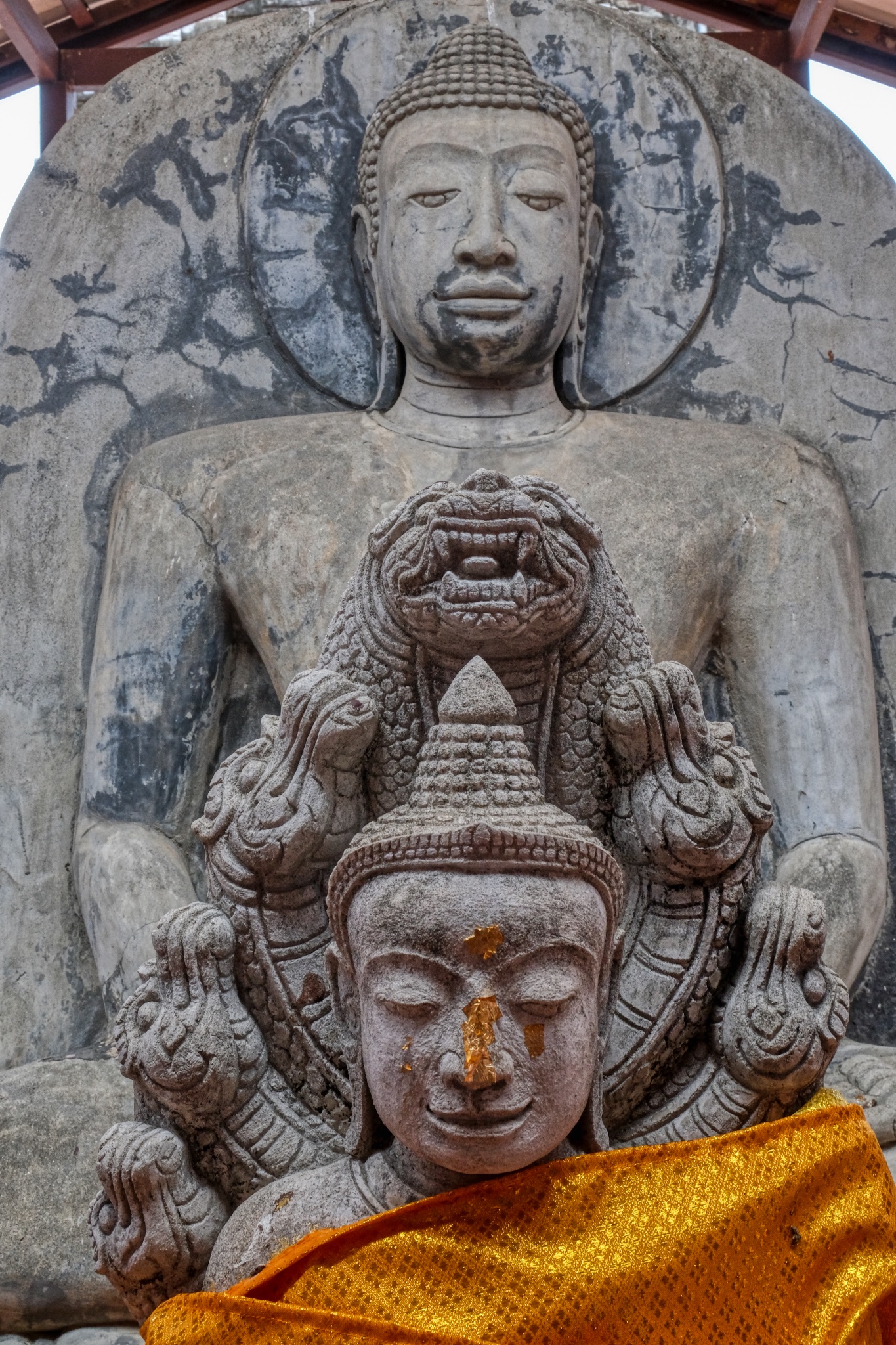 A fine reminder about my mortality and a questioning about what I am doing with my conscieness.
A fine reminder about my mortality and a questioning about what I am doing with my conscieness.
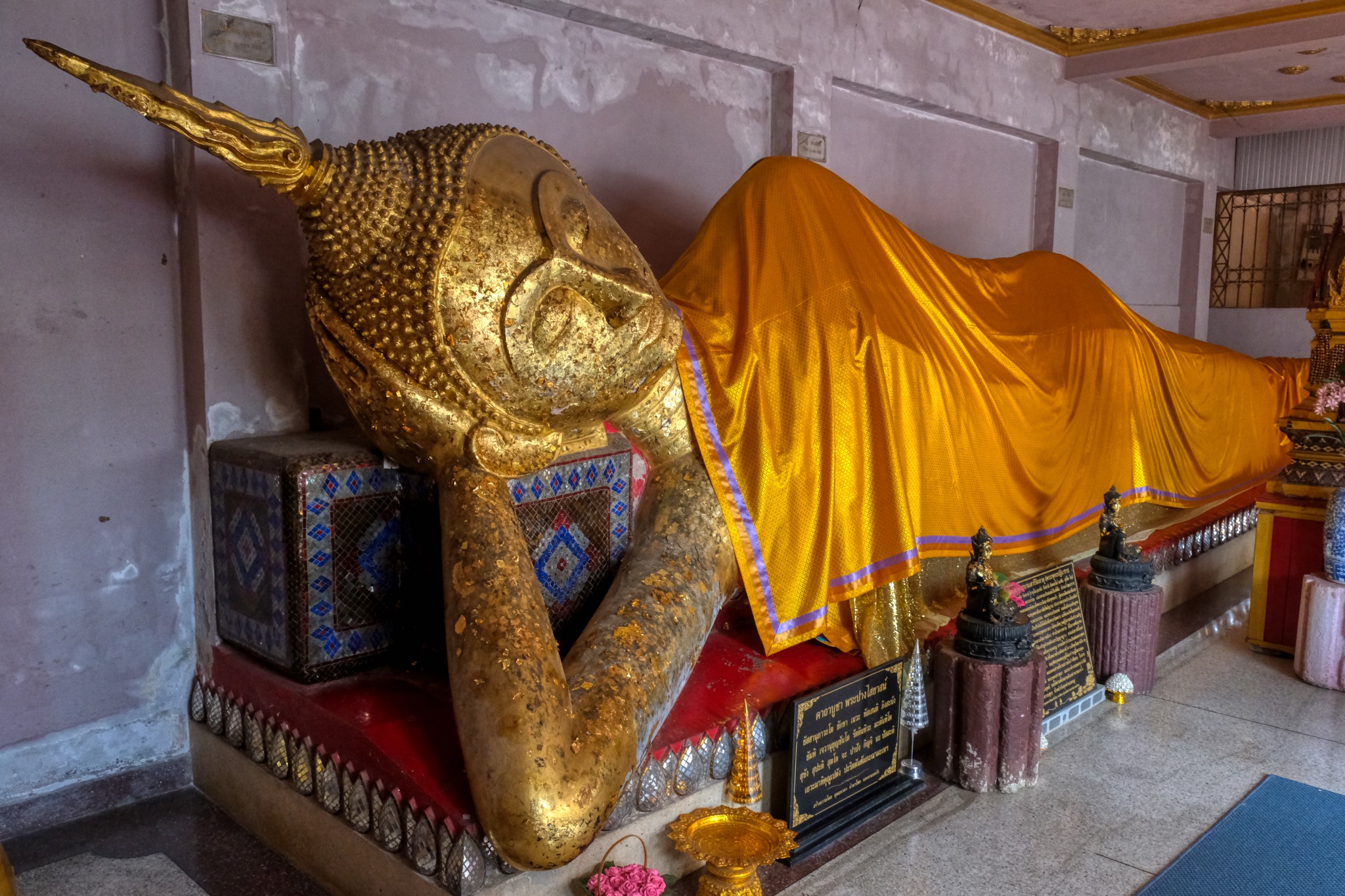 One last grotto . . . to visit a reclining Buddha.
One last grotto . . . to visit a reclining Buddha.
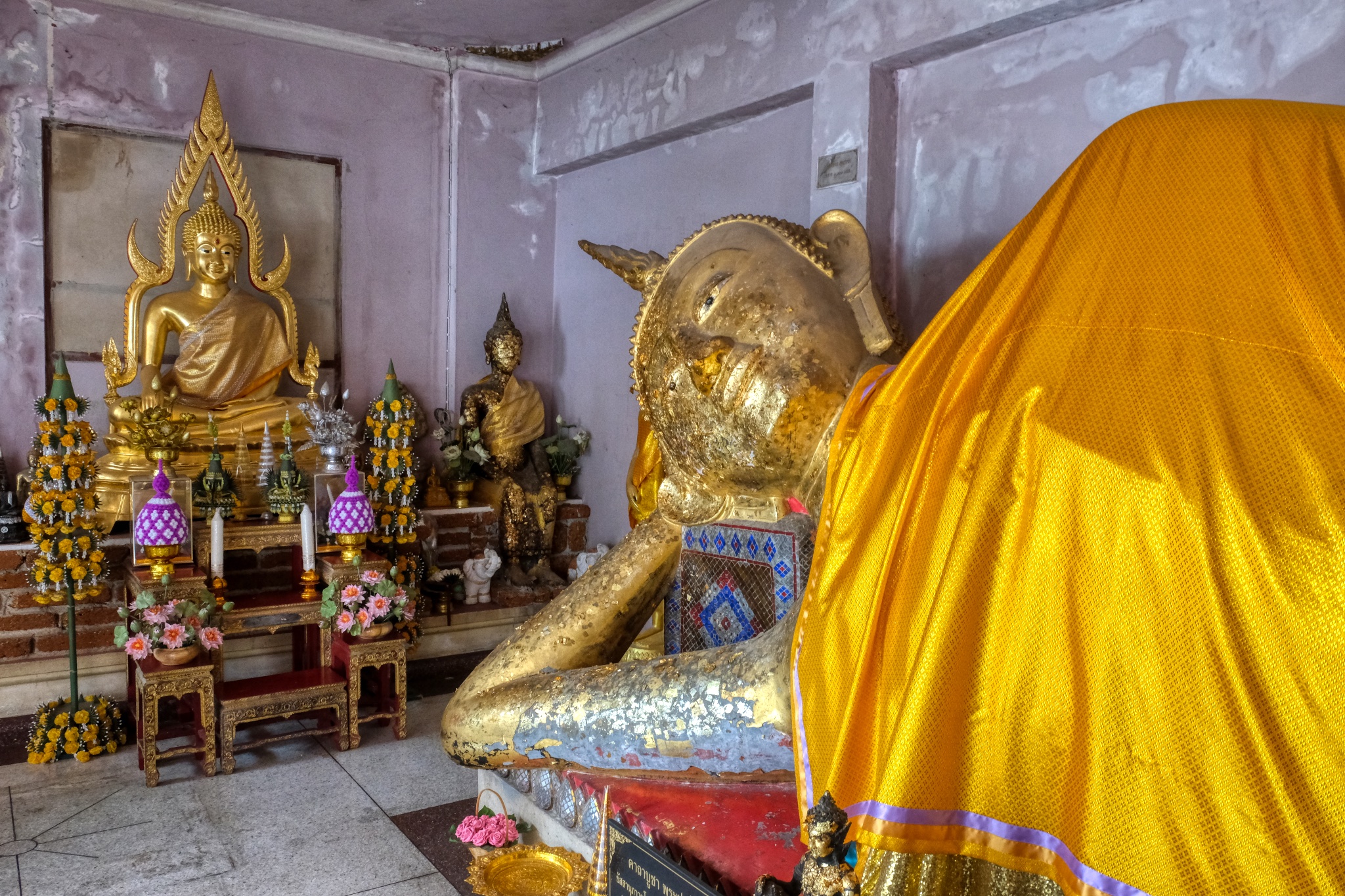 Such a beautiful display. An old 'nun' altar keeper offered me a bottle of water here, which I took. It was a hot day!
Such a beautiful display. An old 'nun' altar keeper offered me a bottle of water here, which I took. It was a hot day!
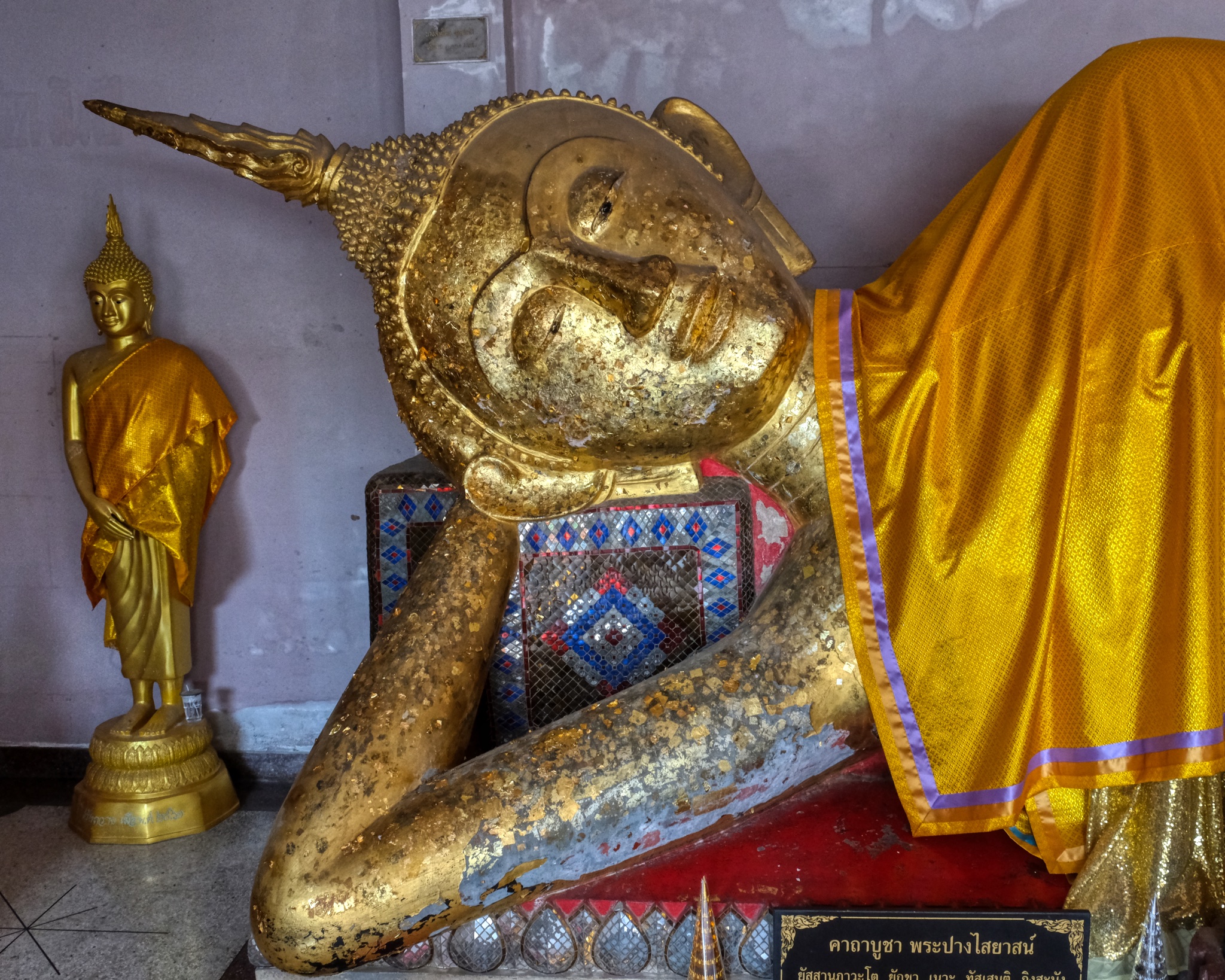 I lingered in this space to pay my respect to the Buddha. I also left my donation here.
I lingered in this space to pay my respect to the Buddha. I also left my donation here.
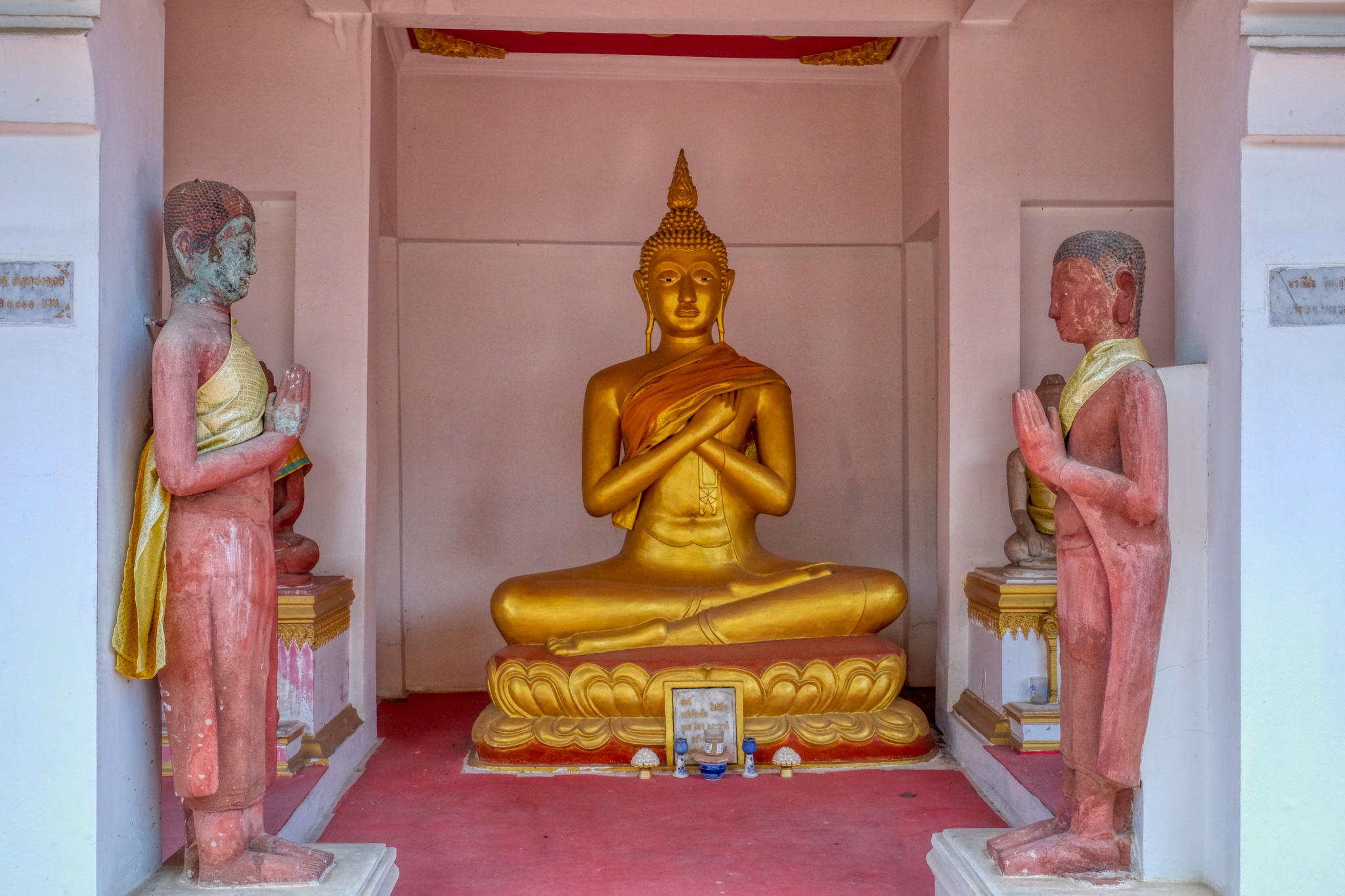 My last stop. Then the 25 minute drive to pick up my wife at the golf course and the 1 hour 45 minute drive back to Hua Hin. A wonderful day . . . .
My last stop. Then the 25 minute drive to pick up my wife at the golf course and the 1 hour 45 minute drive back to Hua Hin. A wonderful day . . . .
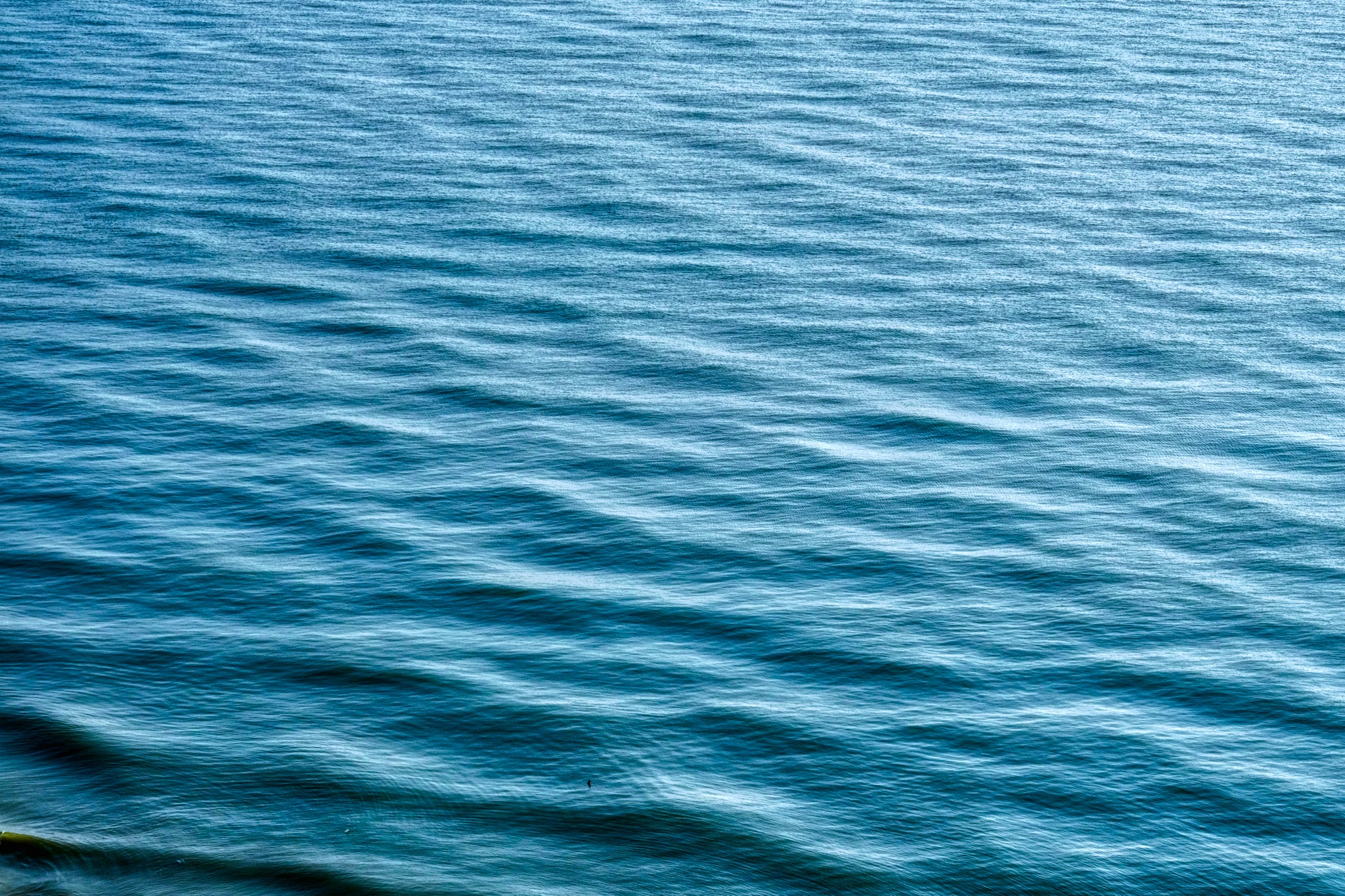 Back on the balcony for a gin & tonic and this strange blue sea . . .
Back on the balcony for a gin & tonic and this strange blue sea . . .
USA Road Trip: The Wild West - Pipe Springs and Cove Fort
 Thursday, February 24, 2022 at 6:50PM
Thursday, February 24, 2022 at 6:50PM PIPE SPRINGS, ARIZONA
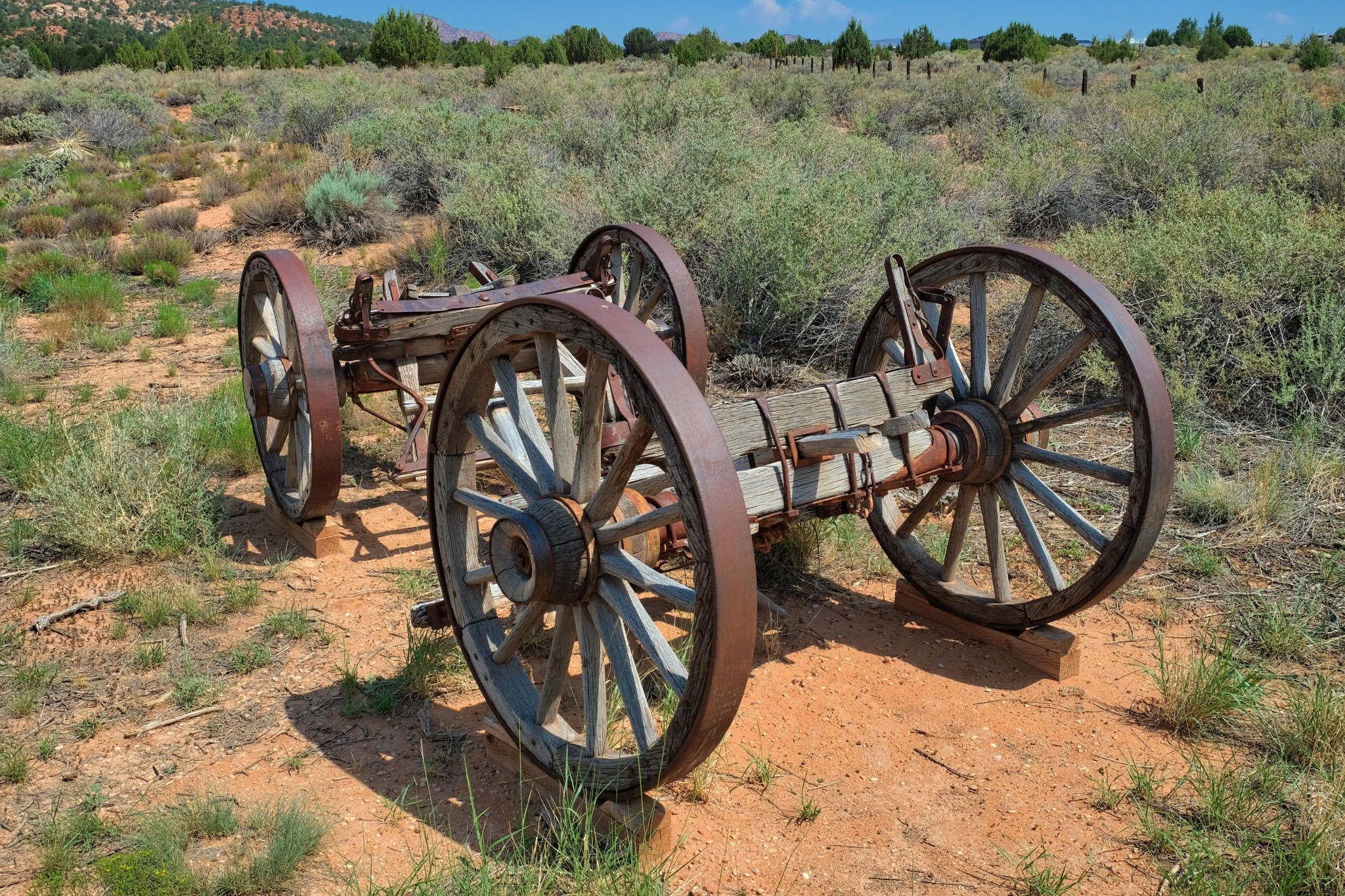 Out on the dry, high elevation chaparral of Northern Arizona, along the road between Zion National Park and the North Rim of the Grand Canyon . . . a remnant of a bygone era . . . The Wild West . . . Pipe Springs National Monument.
Out on the dry, high elevation chaparral of Northern Arizona, along the road between Zion National Park and the North Rim of the Grand Canyon . . . a remnant of a bygone era . . . The Wild West . . . Pipe Springs National Monument.
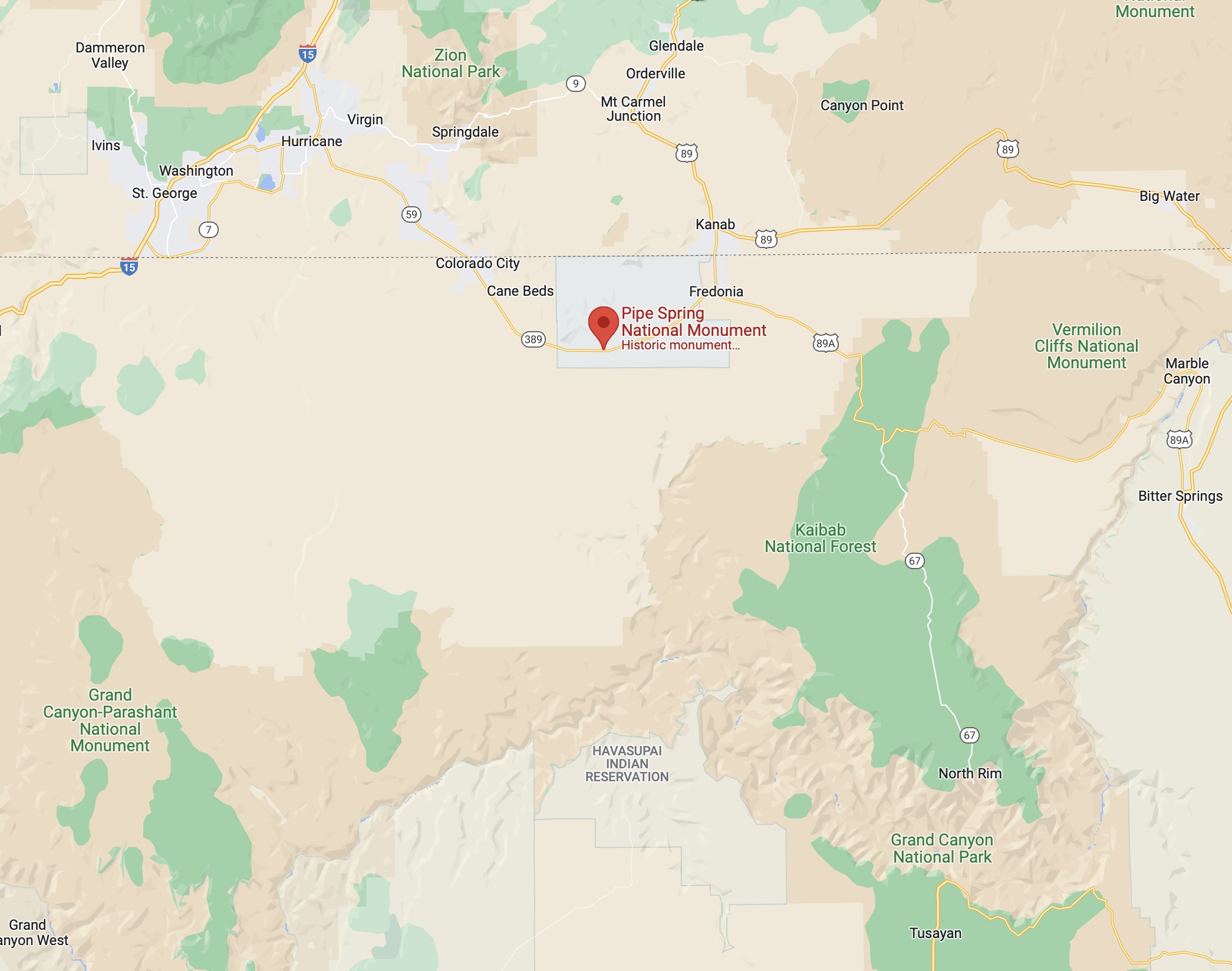 My road trip took me along many wonderful roads.
My road trip took me along many wonderful roads.
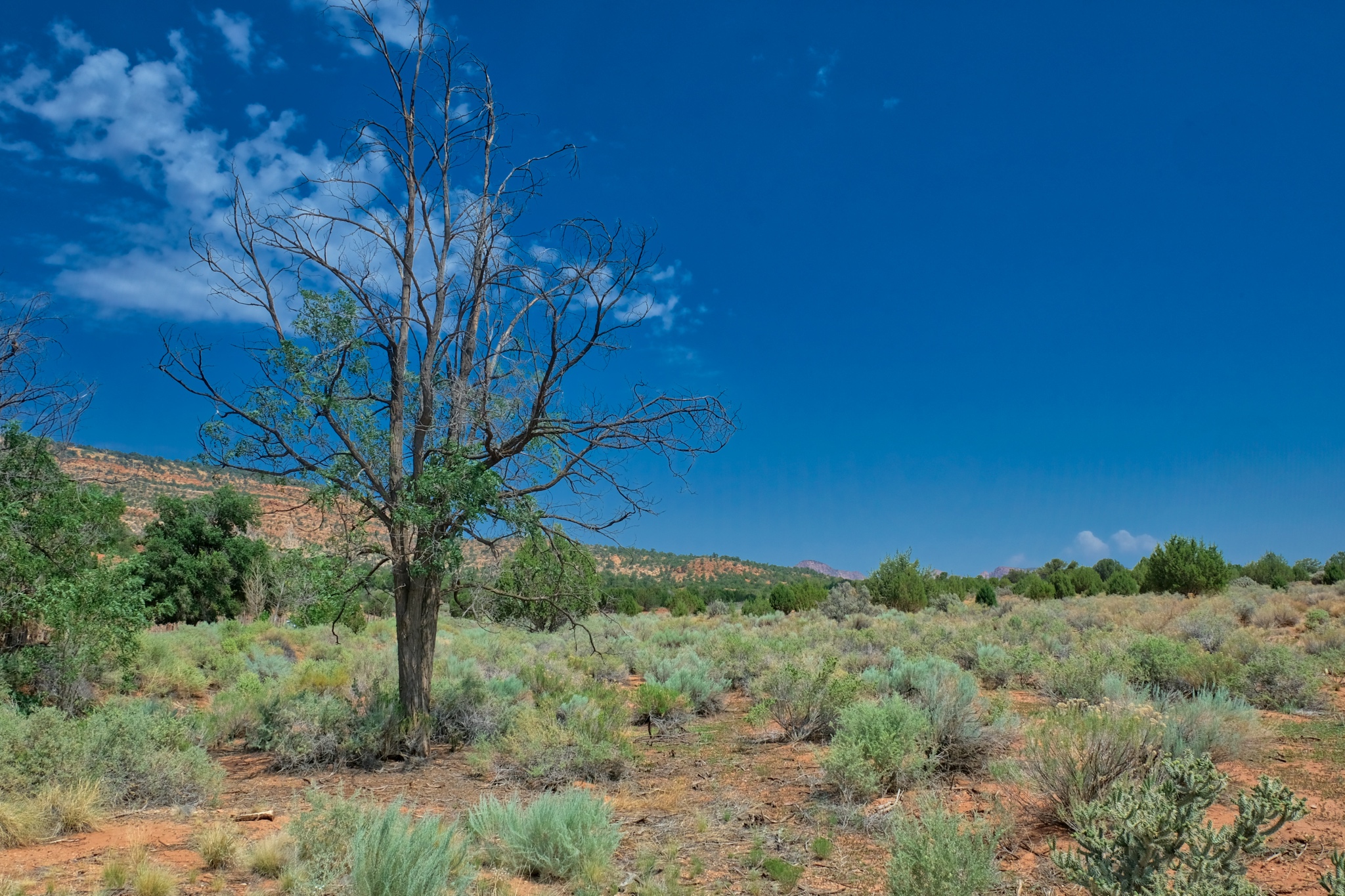 Pipe Springs is established as a grasslands preservation area to reestablish the area as it was before settlers arrived in 1850.
Pipe Springs is established as a grasslands preservation area to reestablish the area as it was before settlers arrived in 1850.
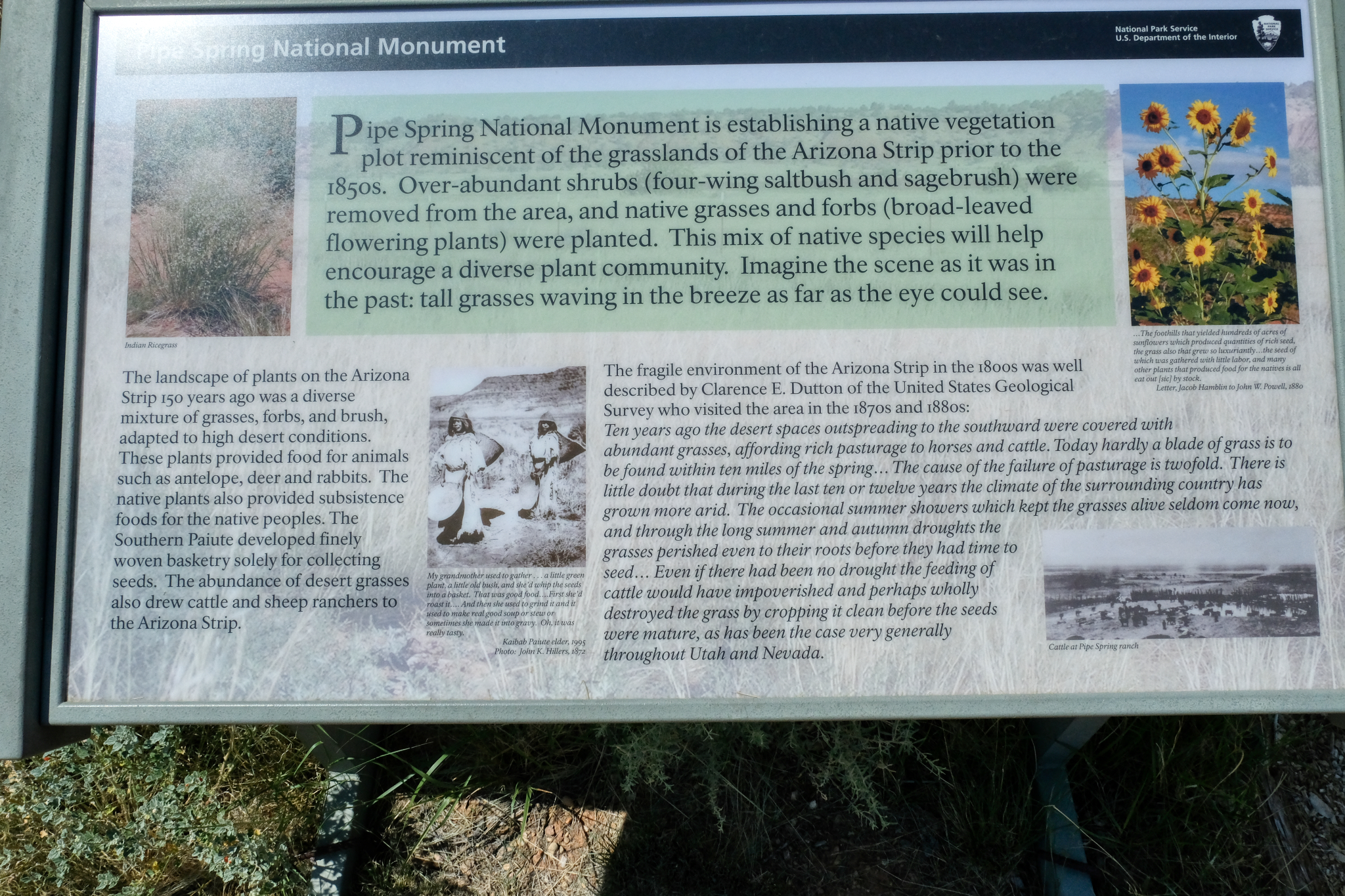 In addition to very informative signage, there was also a fine visitors center.
In addition to very informative signage, there was also a fine visitors center.
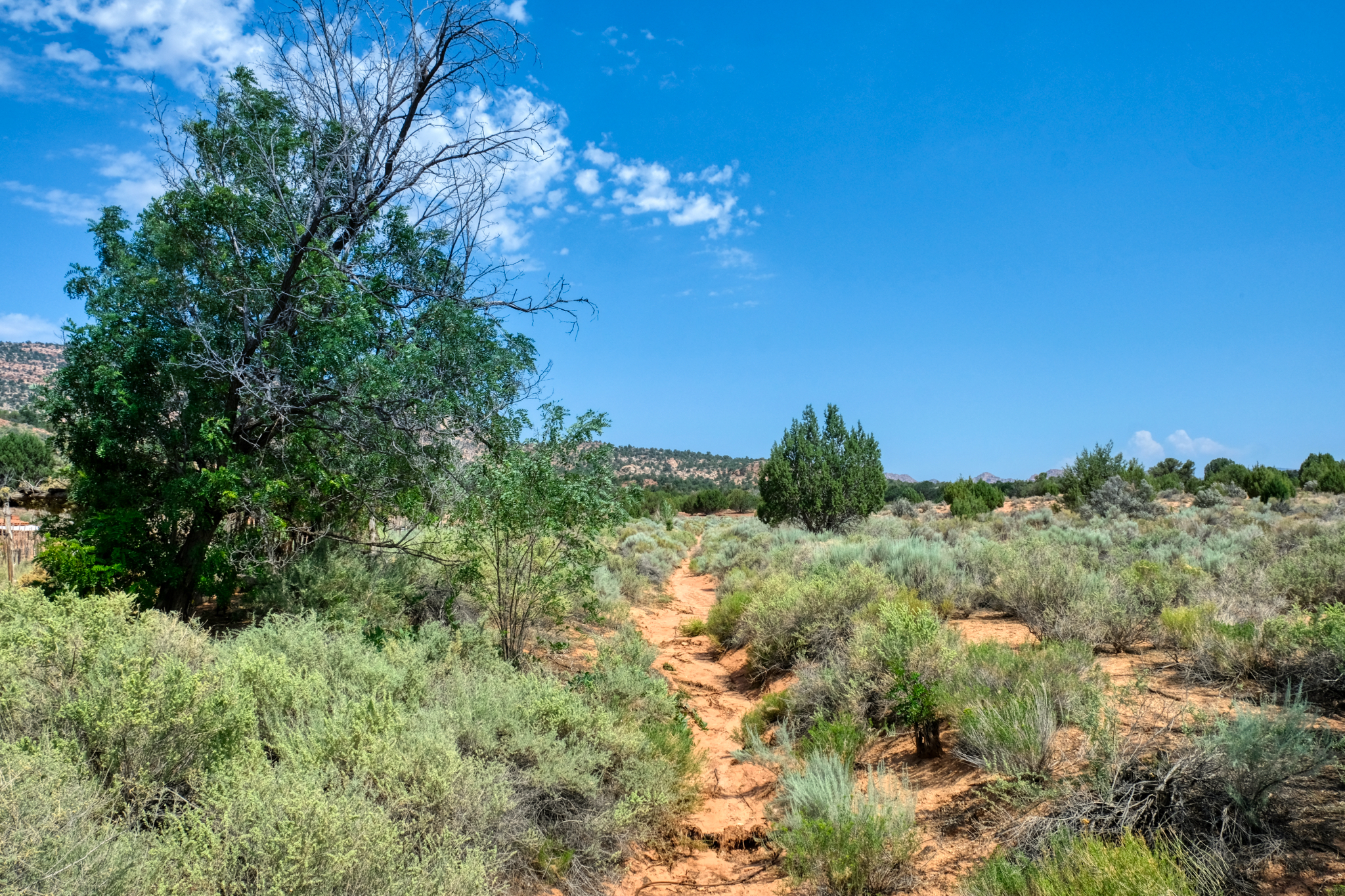 A nice place for a walk to nowhere.
A nice place for a walk to nowhere.
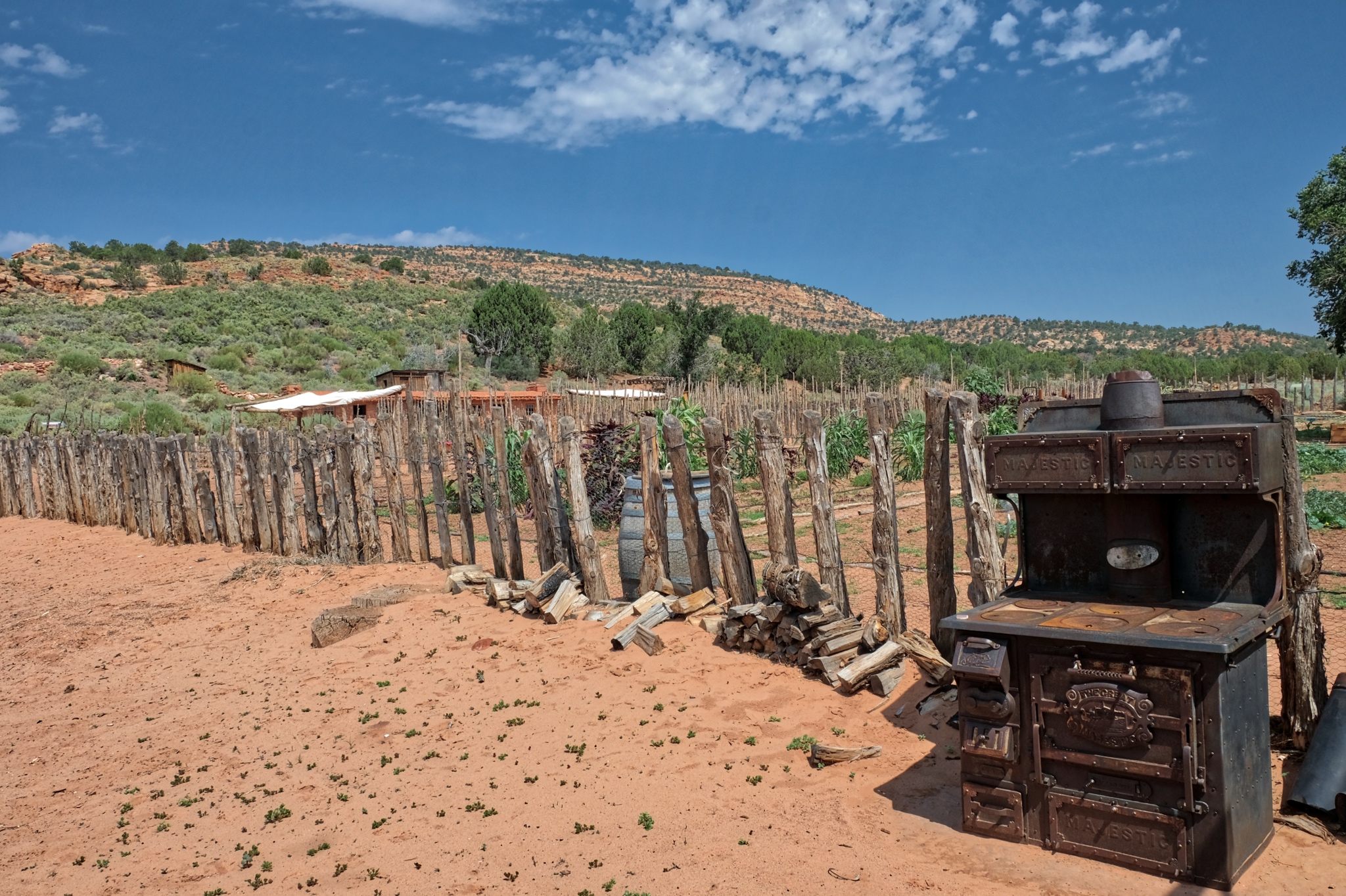 Pipe springs was established at a natural spring as a U.S. Army Calvary Fort, but it was also a self-sustaining farm to support the soldiers stationed there during 'The Indian Wars' in the region.
Pipe springs was established at a natural spring as a U.S. Army Calvary Fort, but it was also a self-sustaining farm to support the soldiers stationed there during 'The Indian Wars' in the region.
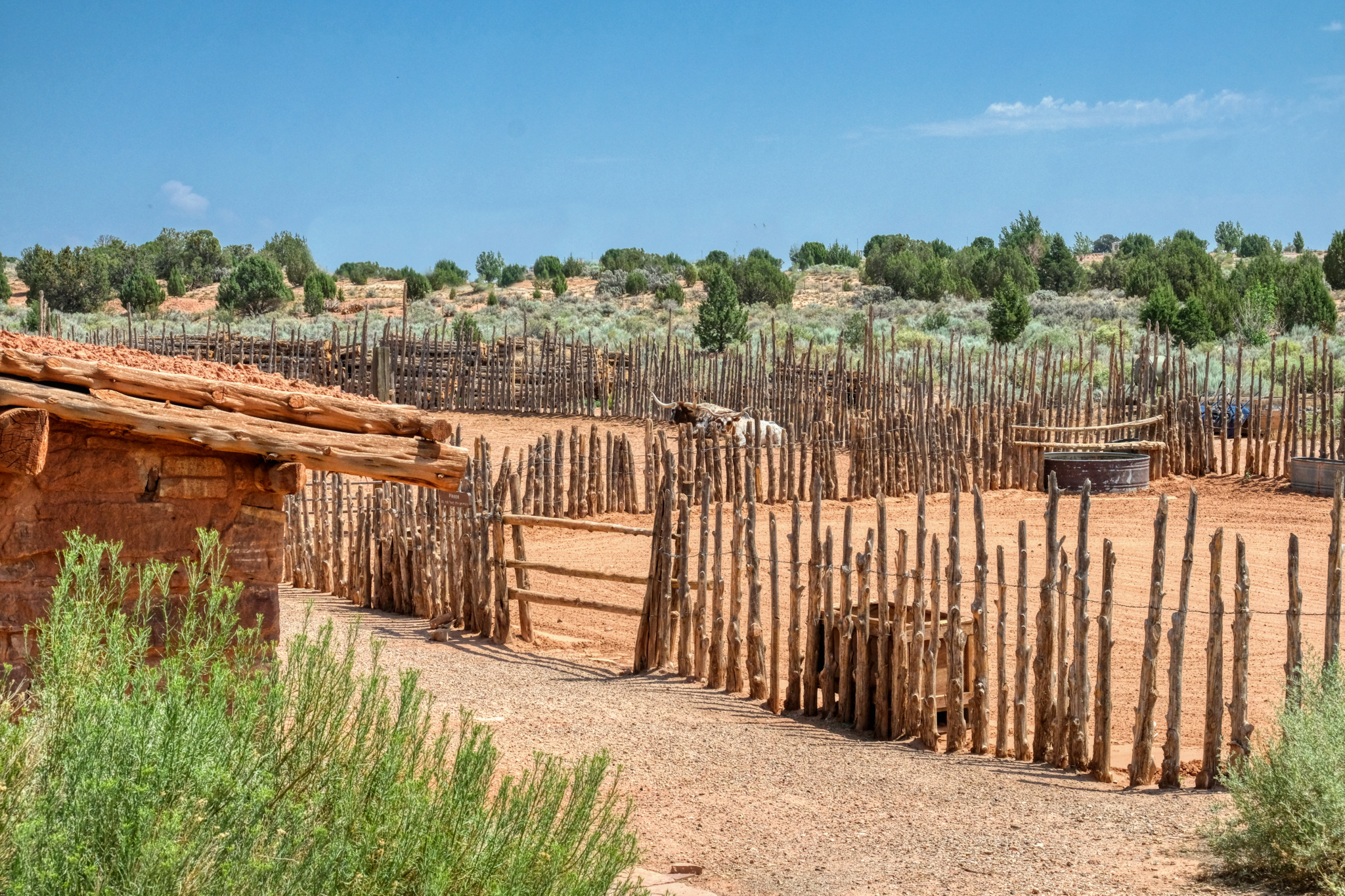 The National Monument still maintains a farm on site in the manner of the settlers and soldiers around 1850. A very nice depiction of the living conditions and methods of the early Western settlers.
The National Monument still maintains a farm on site in the manner of the settlers and soldiers around 1850. A very nice depiction of the living conditions and methods of the early Western settlers.
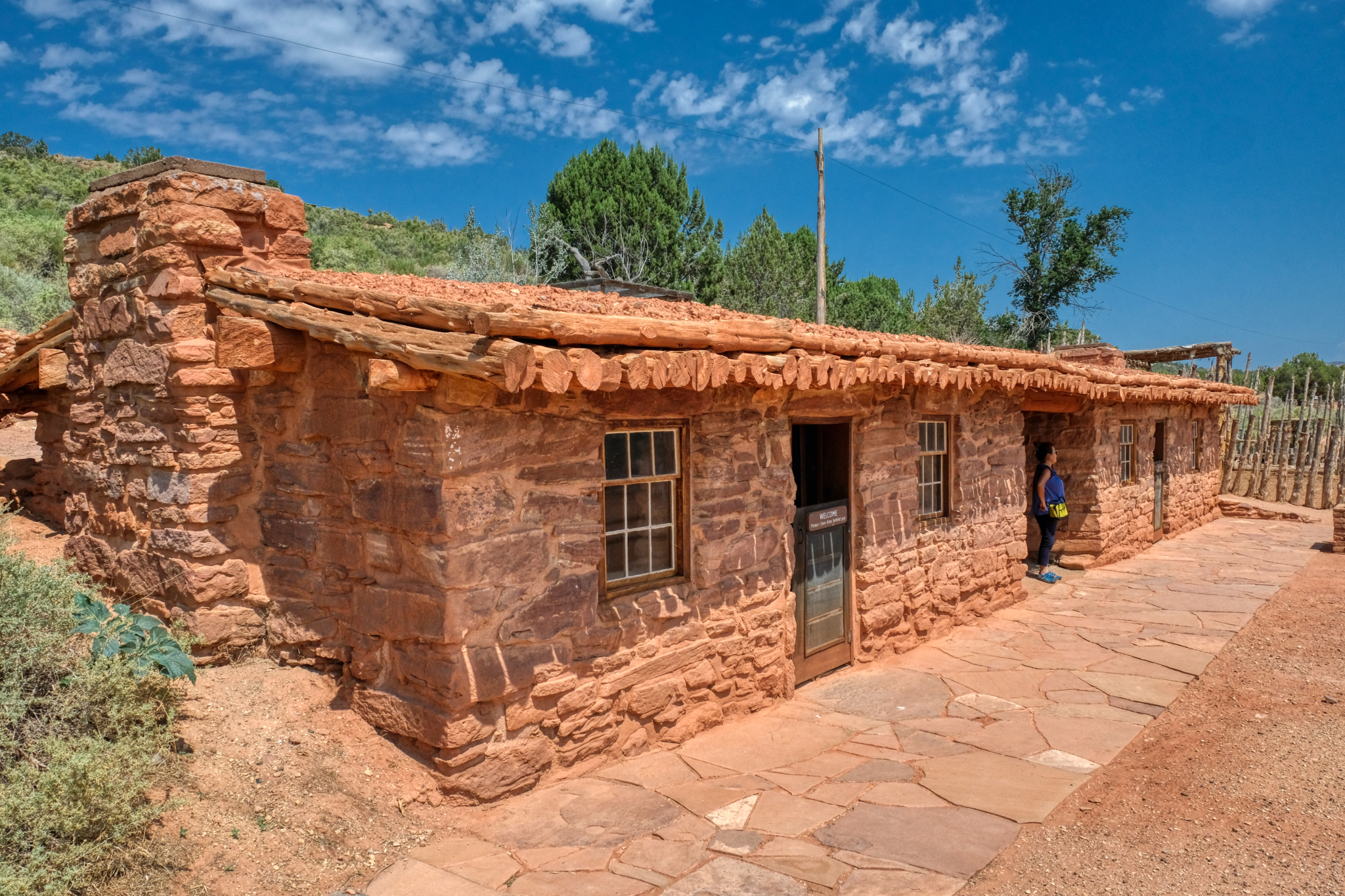 A nicely restored period blacksmith shop and tack house.
A nicely restored period blacksmith shop and tack house.
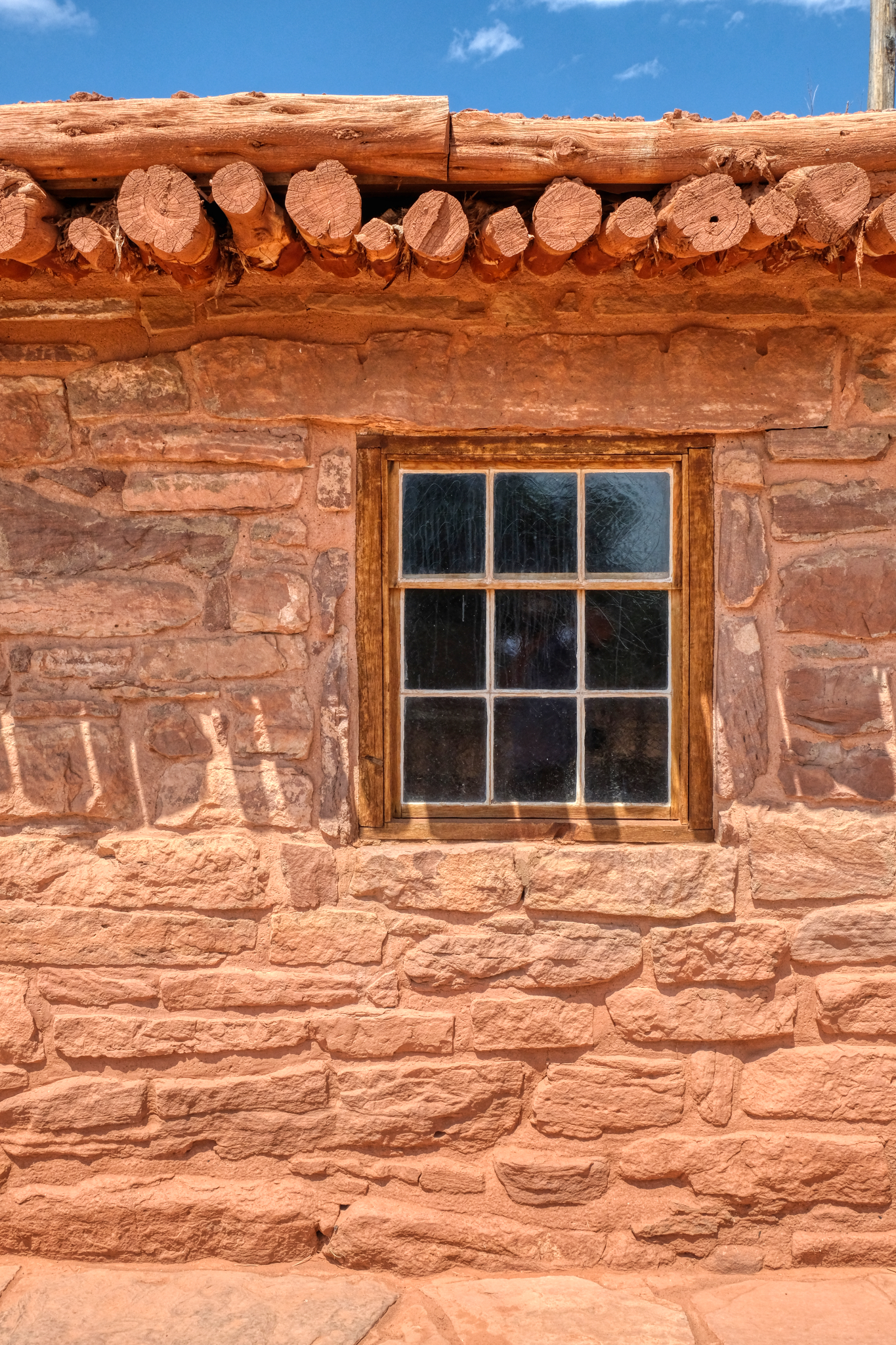 Beautiful stone construction.
Beautiful stone construction.
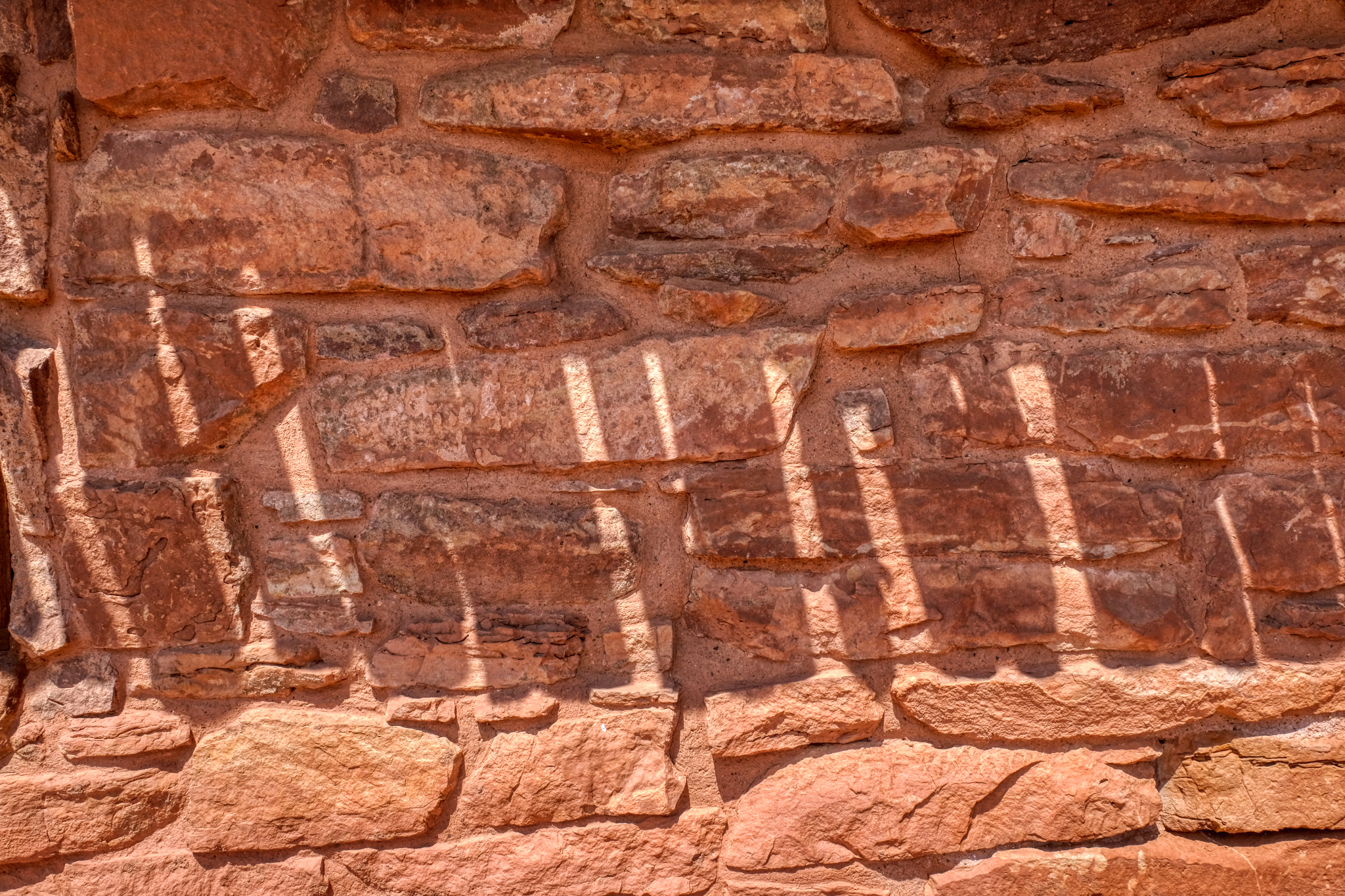 It was a hot day near noon when we arrive . . . wonderful shadows on the orange stone tack house.
It was a hot day near noon when we arrive . . . wonderful shadows on the orange stone tack house.
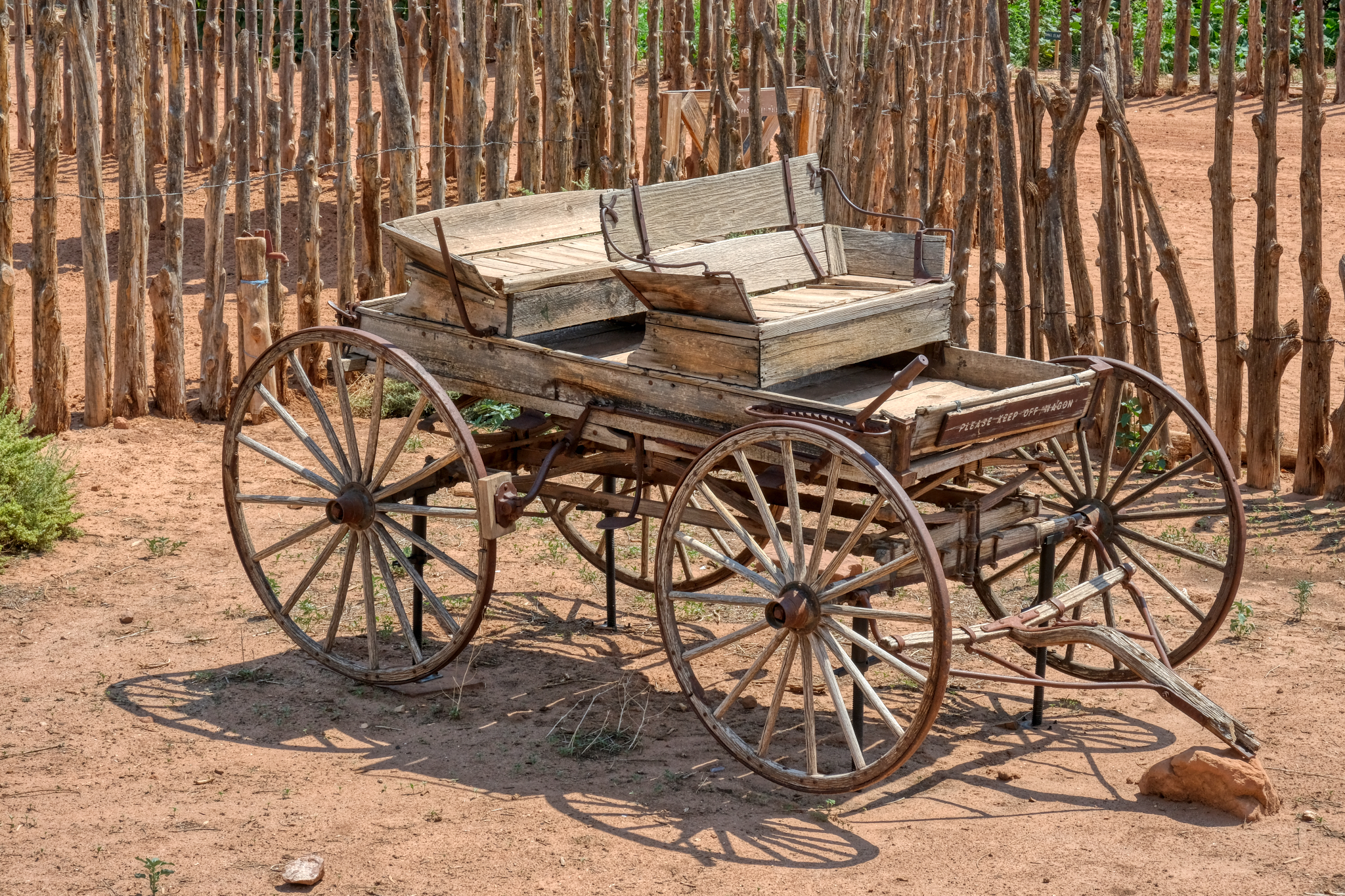 There were some beautiful antique wagons sitting about the grounds. This buggy was fantastic.
There were some beautiful antique wagons sitting about the grounds. This buggy was fantastic.
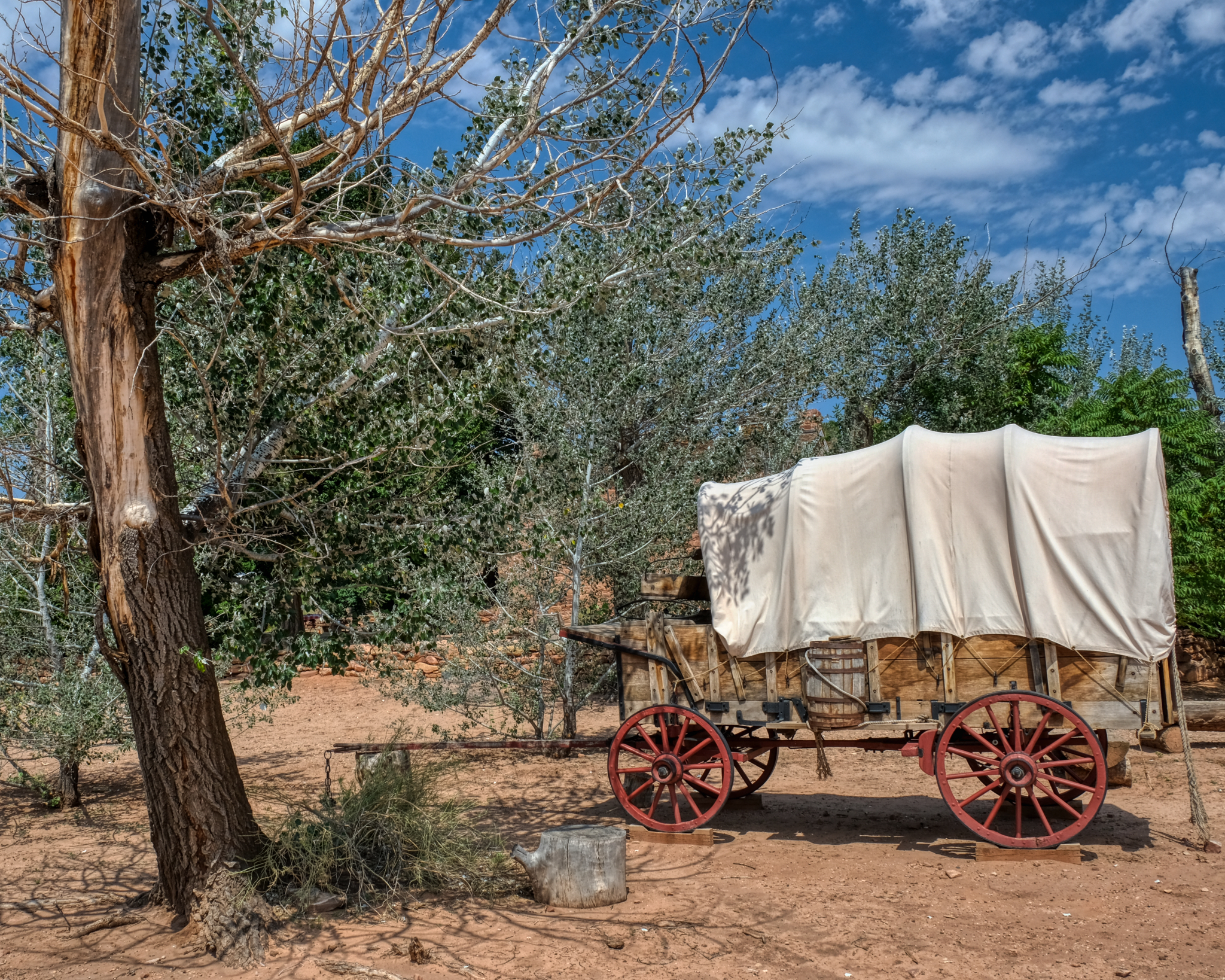 The classic western covered wagon.
The classic western covered wagon.
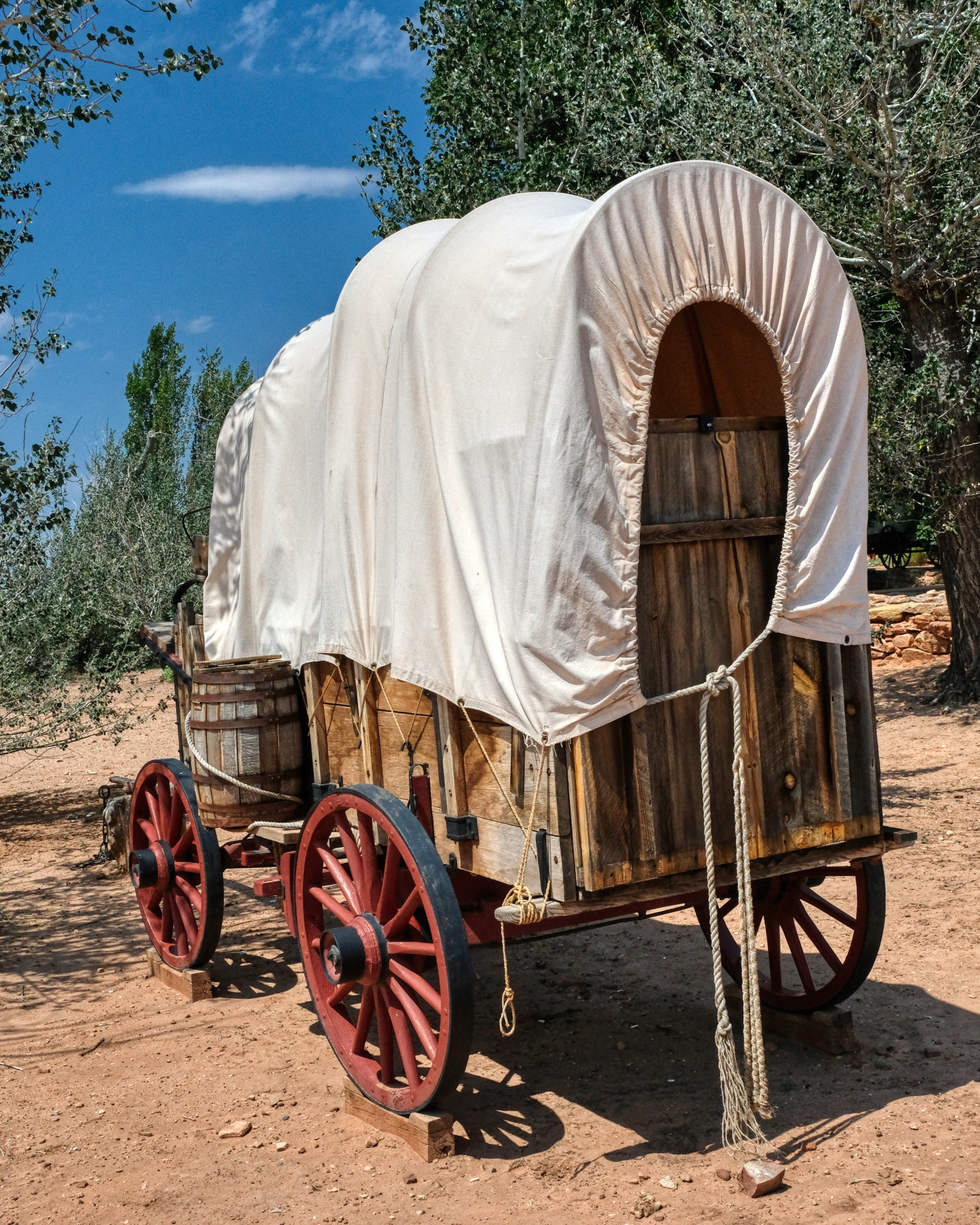 Can you imagine being one of the many thousands who crossed the breadth of America in one of these covered wagons. The faith, hope, and fortitude they must have had!
Can you imagine being one of the many thousands who crossed the breadth of America in one of these covered wagons. The faith, hope, and fortitude they must have had!
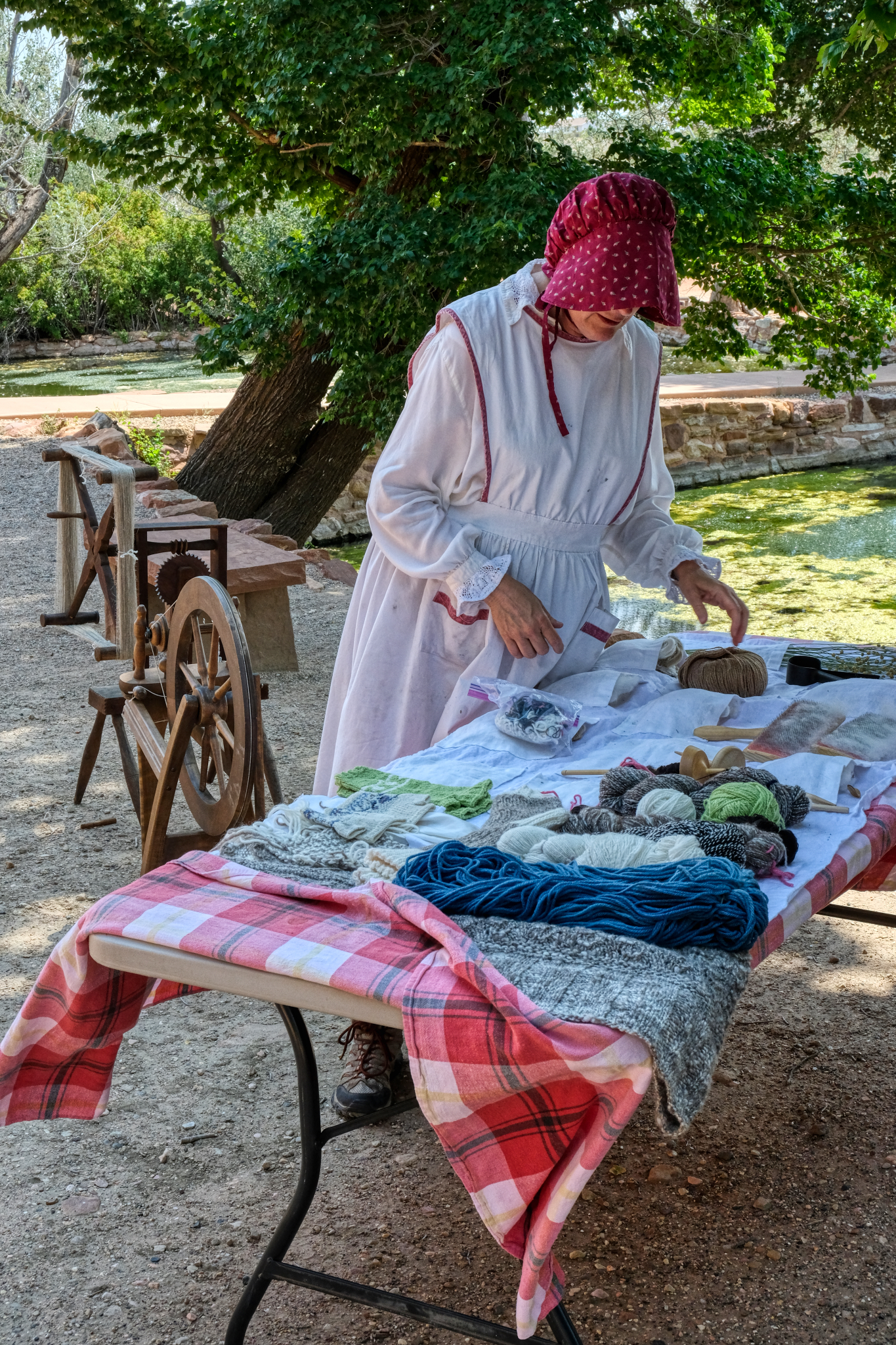 One of the park staff dressed in period costume displaying the kind of textiles the pioneers there would have been making in the 1860s.
One of the park staff dressed in period costume displaying the kind of textiles the pioneers there would have been making in the 1860s.
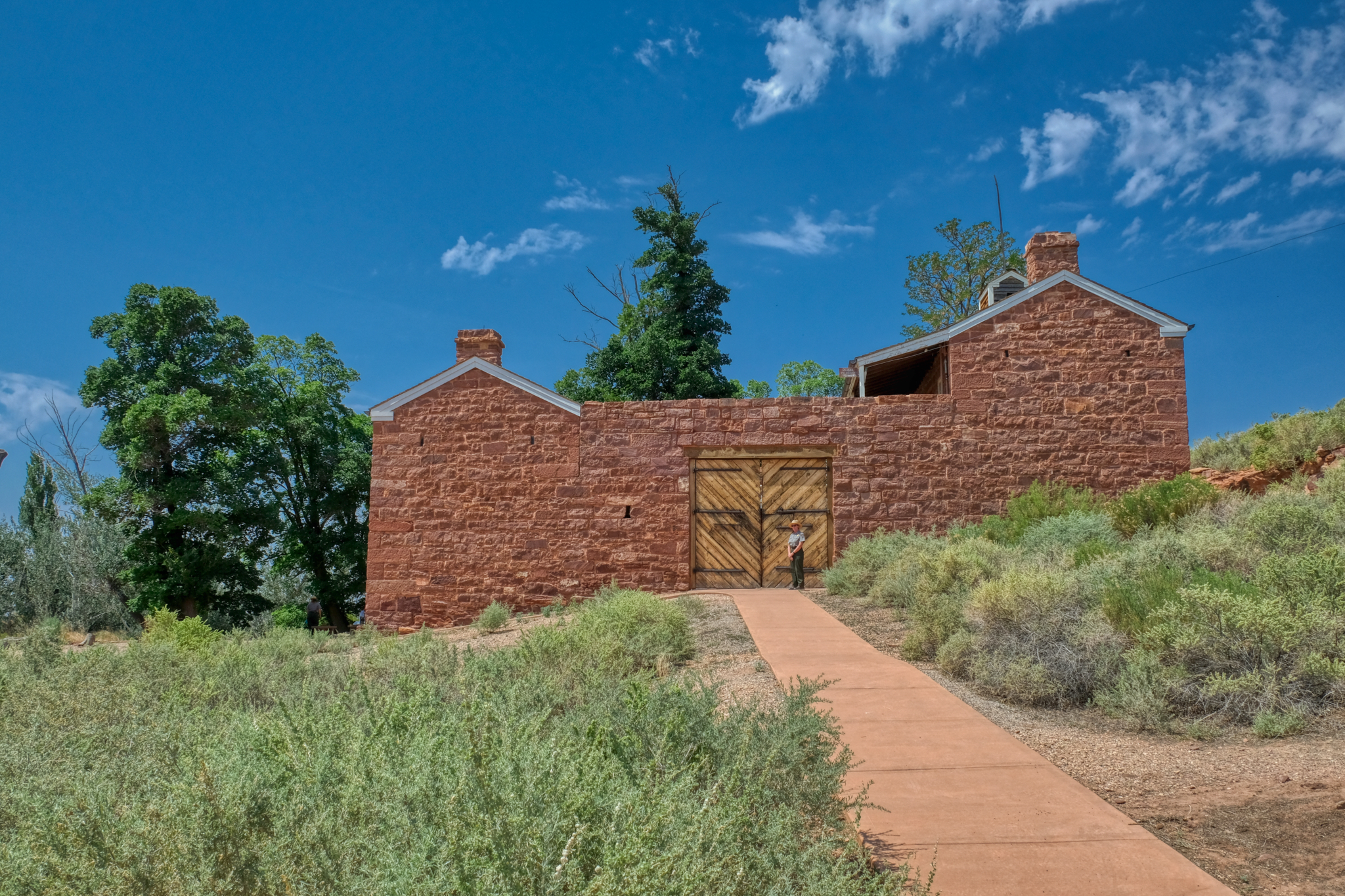 The real purpose of Pipe Springs was as a military fort to provide safety and security for settlers and ranchers during periods of 'Indian trouble.'
The real purpose of Pipe Springs was as a military fort to provide safety and security for settlers and ranchers during periods of 'Indian trouble.'
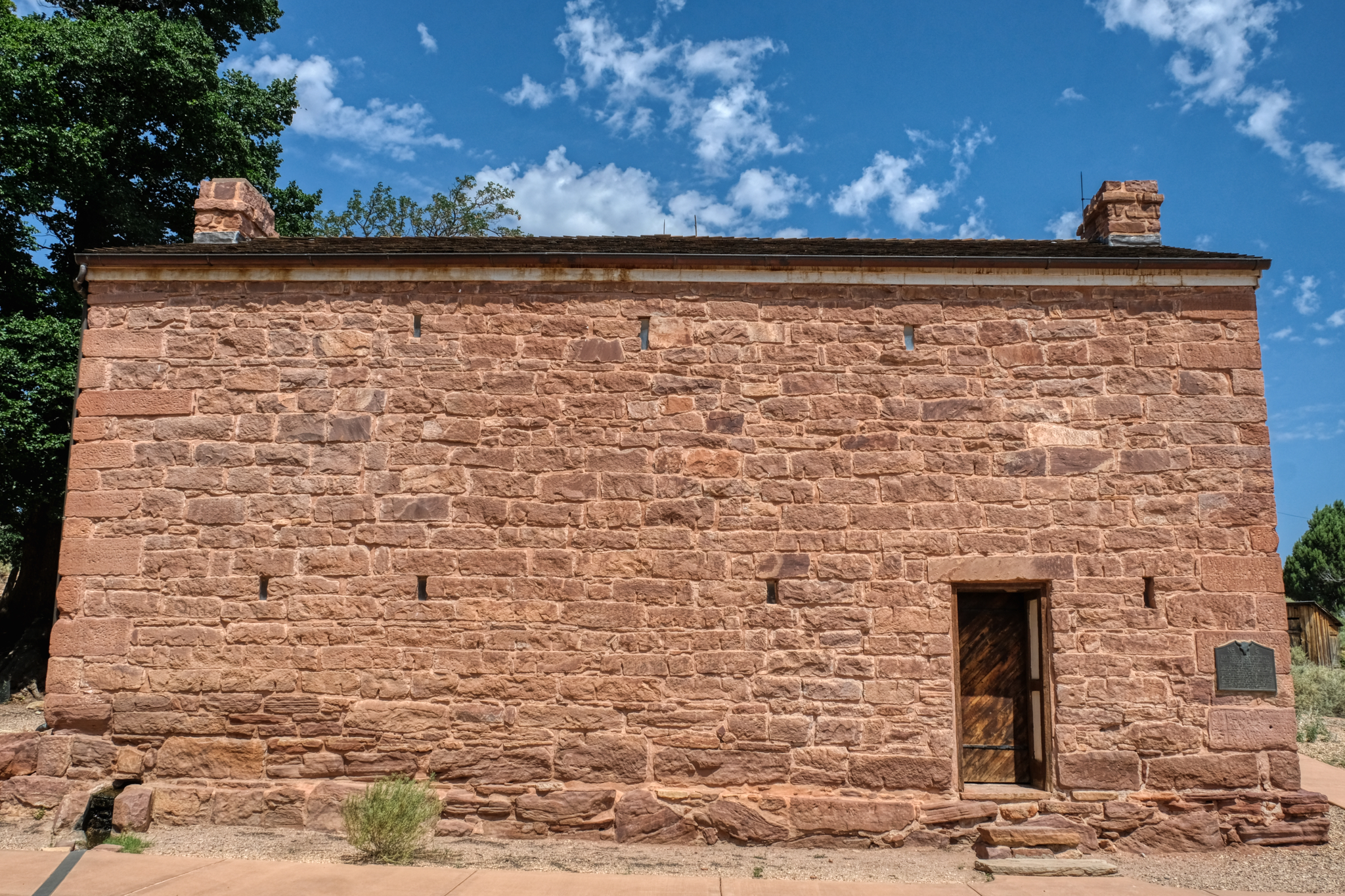 It looks very secure to me. We did not go on the inside.
It looks very secure to me. We did not go on the inside.
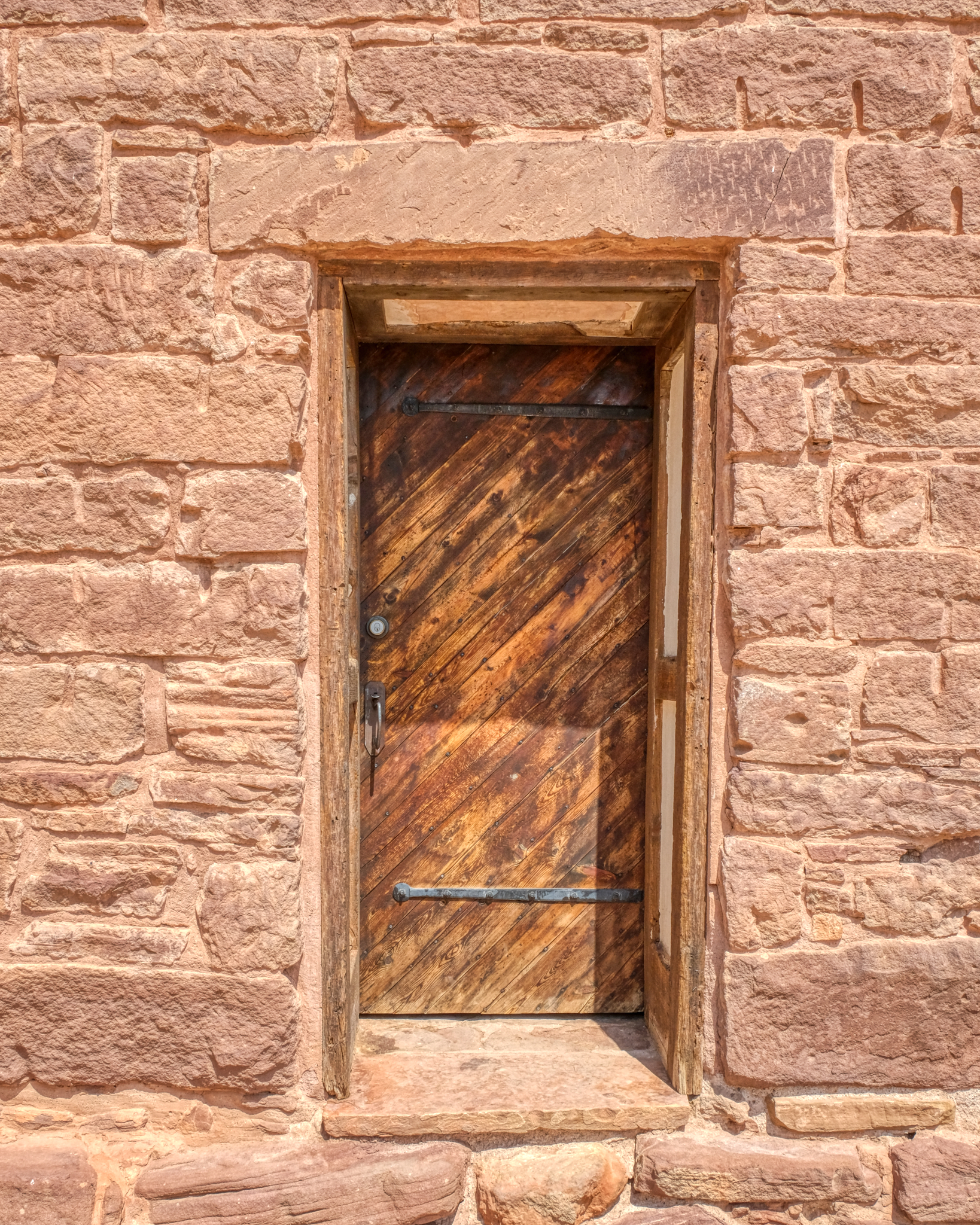 A very photogenic old door at Pipe Springs Fort.
A very photogenic old door at Pipe Springs Fort.
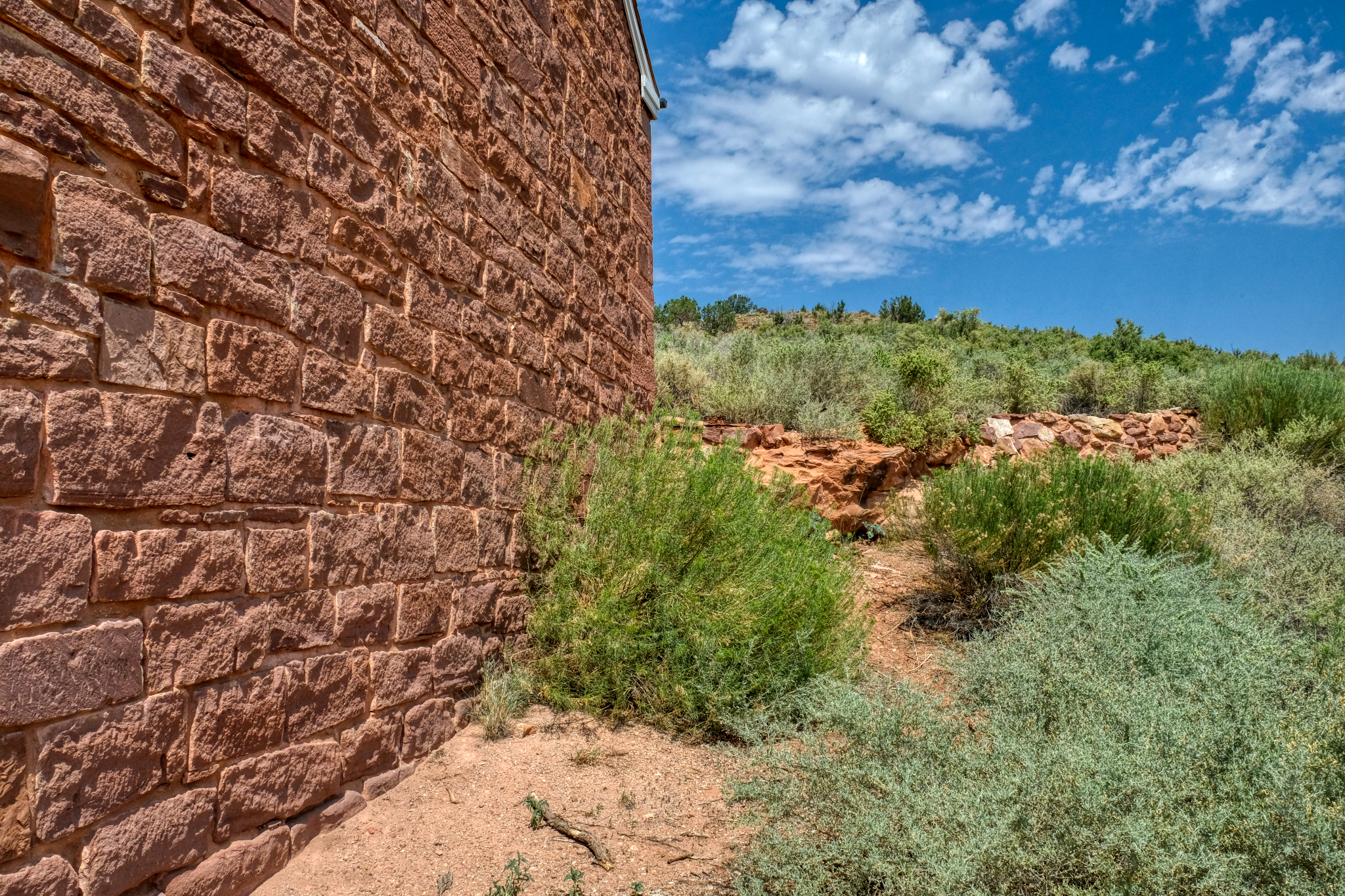 This photo represents, for me, the isolation of the fort within the vast western landscape.
This photo represents, for me, the isolation of the fort within the vast western landscape.
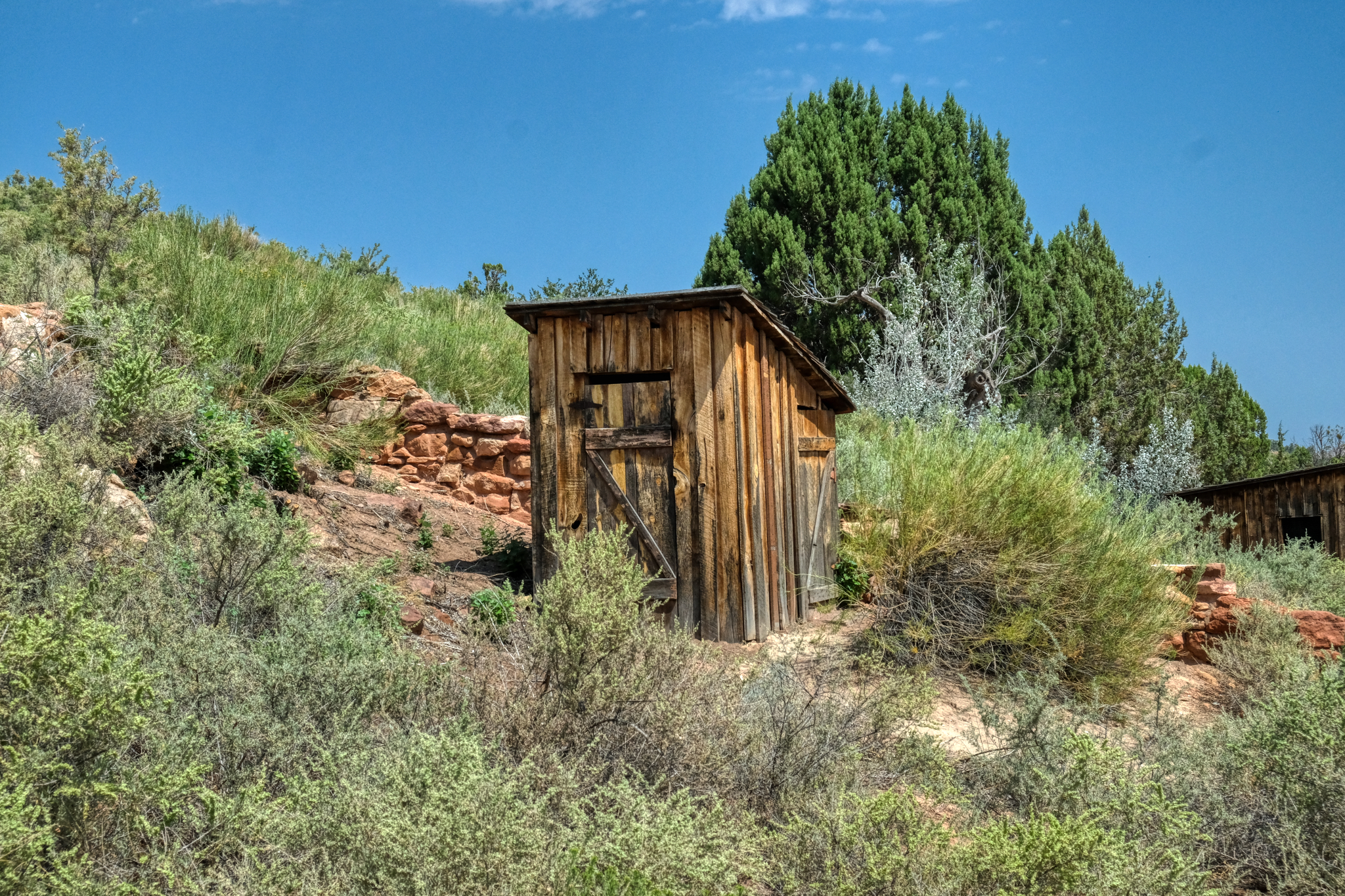 Yep, the outhouse.
Yep, the outhouse.
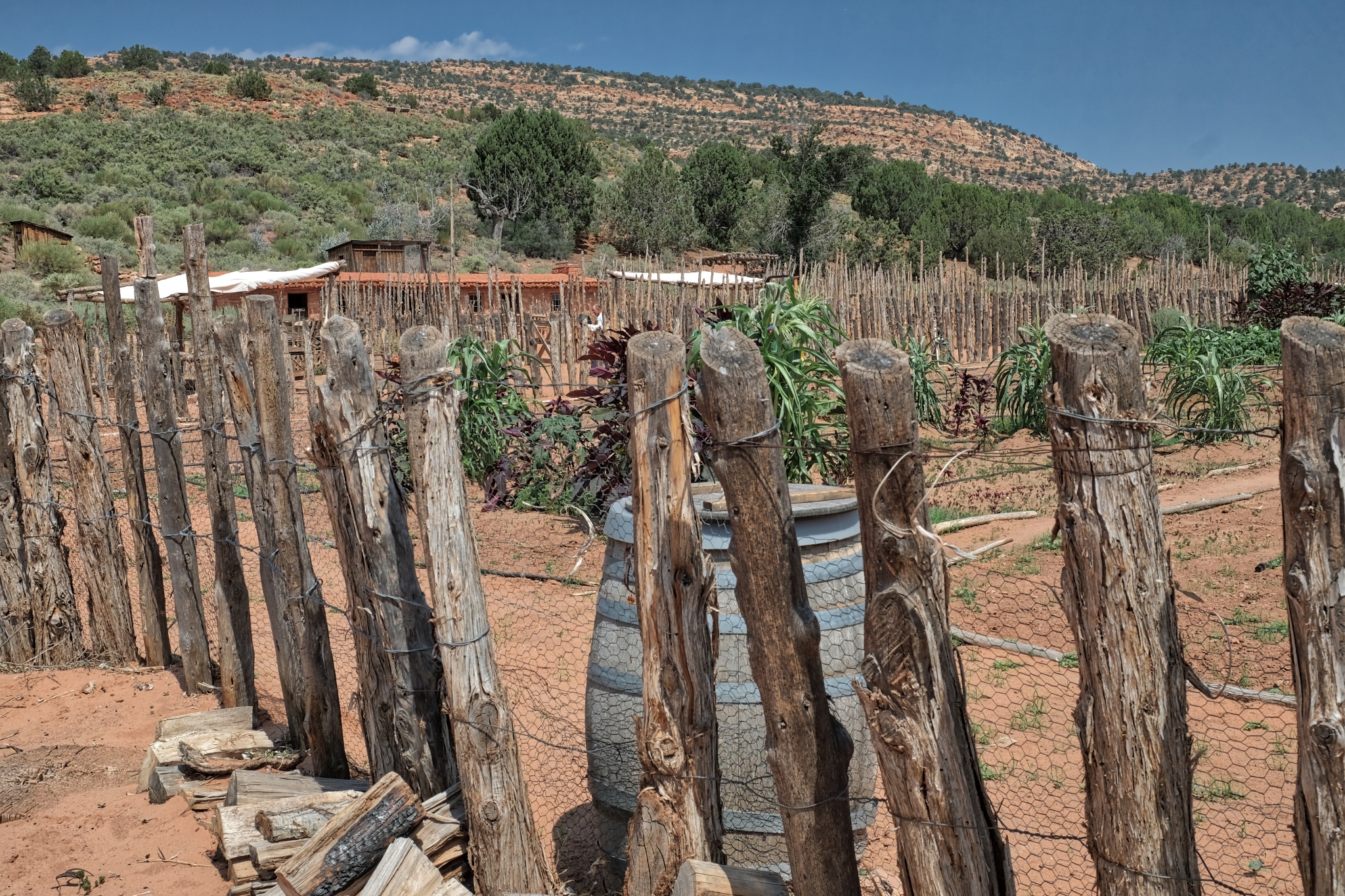 And so we left Pipe Springs to drive on toward the North Rim of the Grand Canyon.
And so we left Pipe Springs to drive on toward the North Rim of the Grand Canyon.
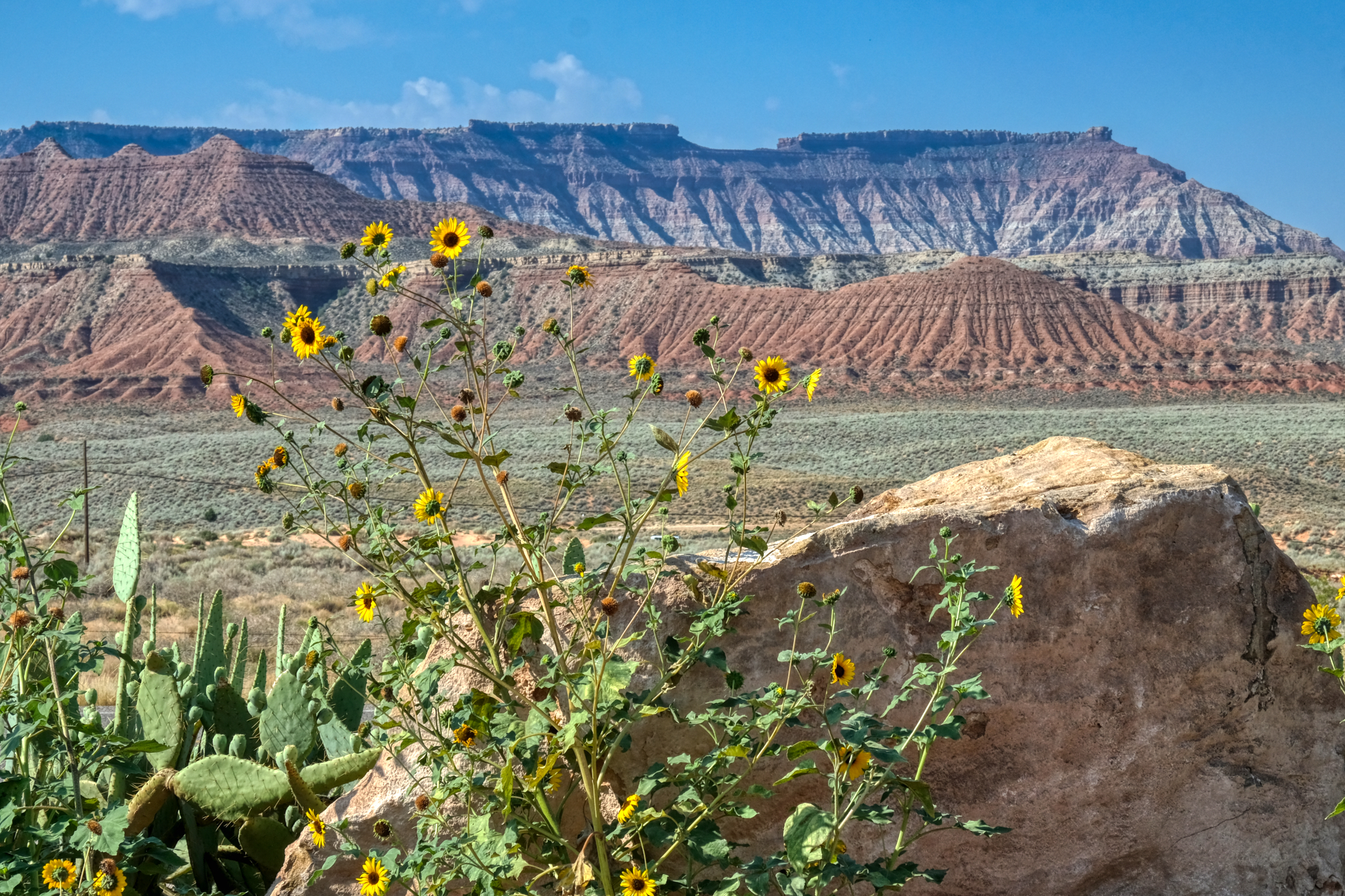 Driving along Arizona Highway 389 trough beautiful mesa country . . .with sunflowers?
Driving along Arizona Highway 389 trough beautiful mesa country . . .with sunflowers?
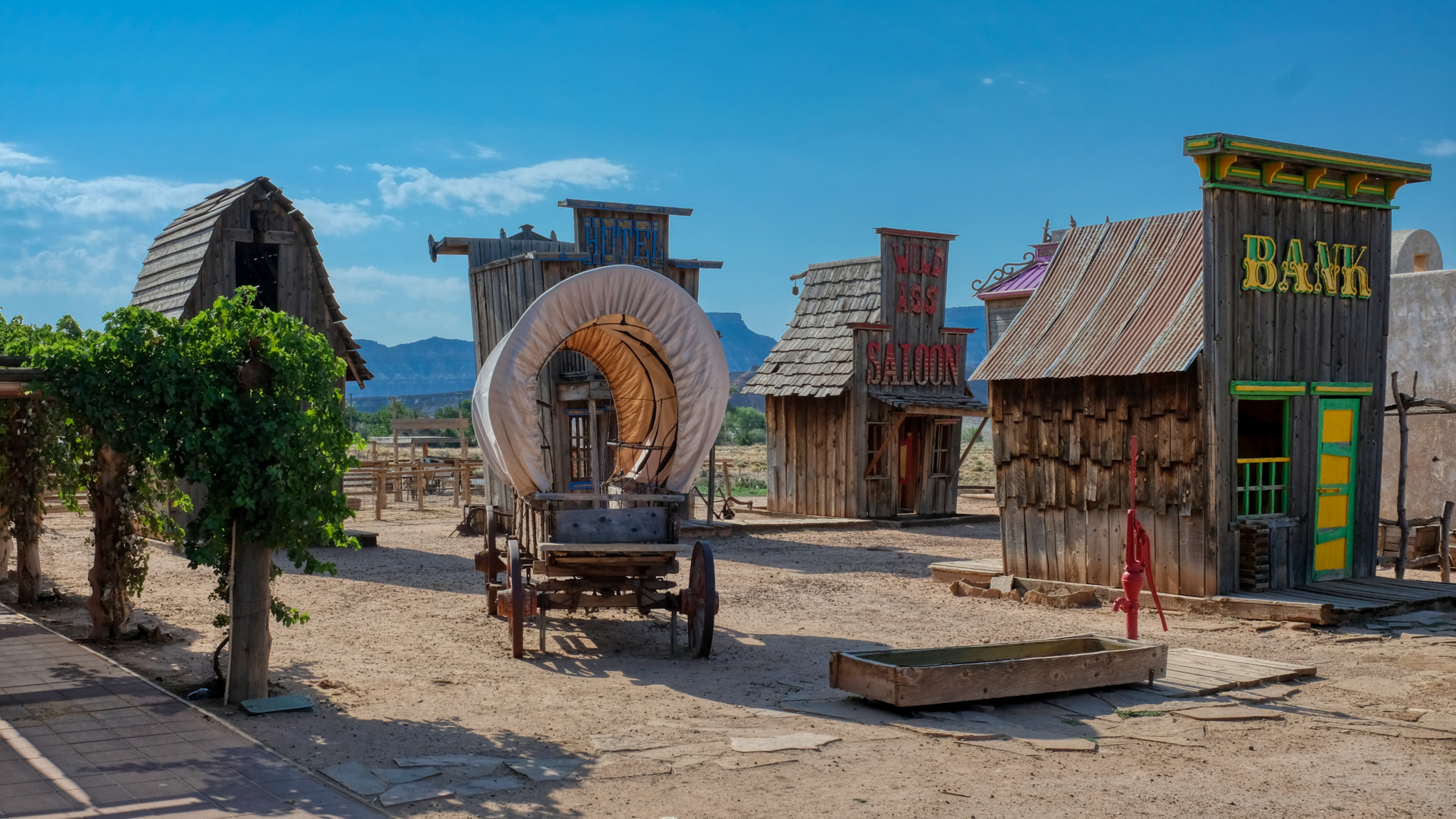 "Just another roadside attraction" . . . a "Wild West Souvenir Store" out along the highway with a cartoonish Wild West Town "Photograph You Family and Friends!" the sign said. I didn't pay the US$5.oo, but instead took photos through the fence . . . duh!
"Just another roadside attraction" . . . a "Wild West Souvenir Store" out along the highway with a cartoonish Wild West Town "Photograph You Family and Friends!" the sign said. I didn't pay the US$5.oo, but instead took photos through the fence . . . duh!
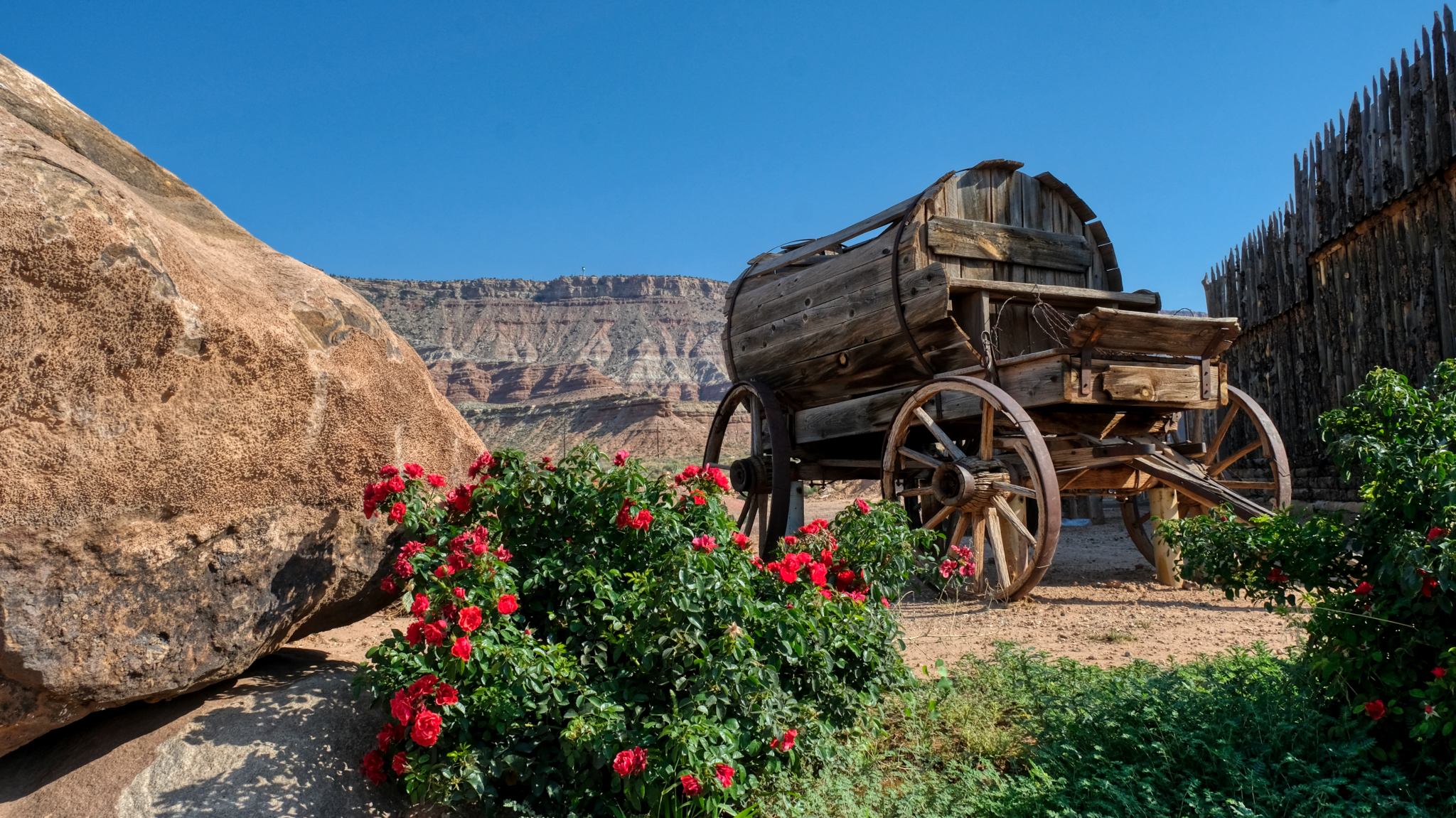 There was a magnificent antique water wagon out back of the store . . . a reminder of the realities of trying to survive in such a dry climate a century-and-a-half ago.
There was a magnificent antique water wagon out back of the store . . . a reminder of the realities of trying to survive in such a dry climate a century-and-a-half ago.
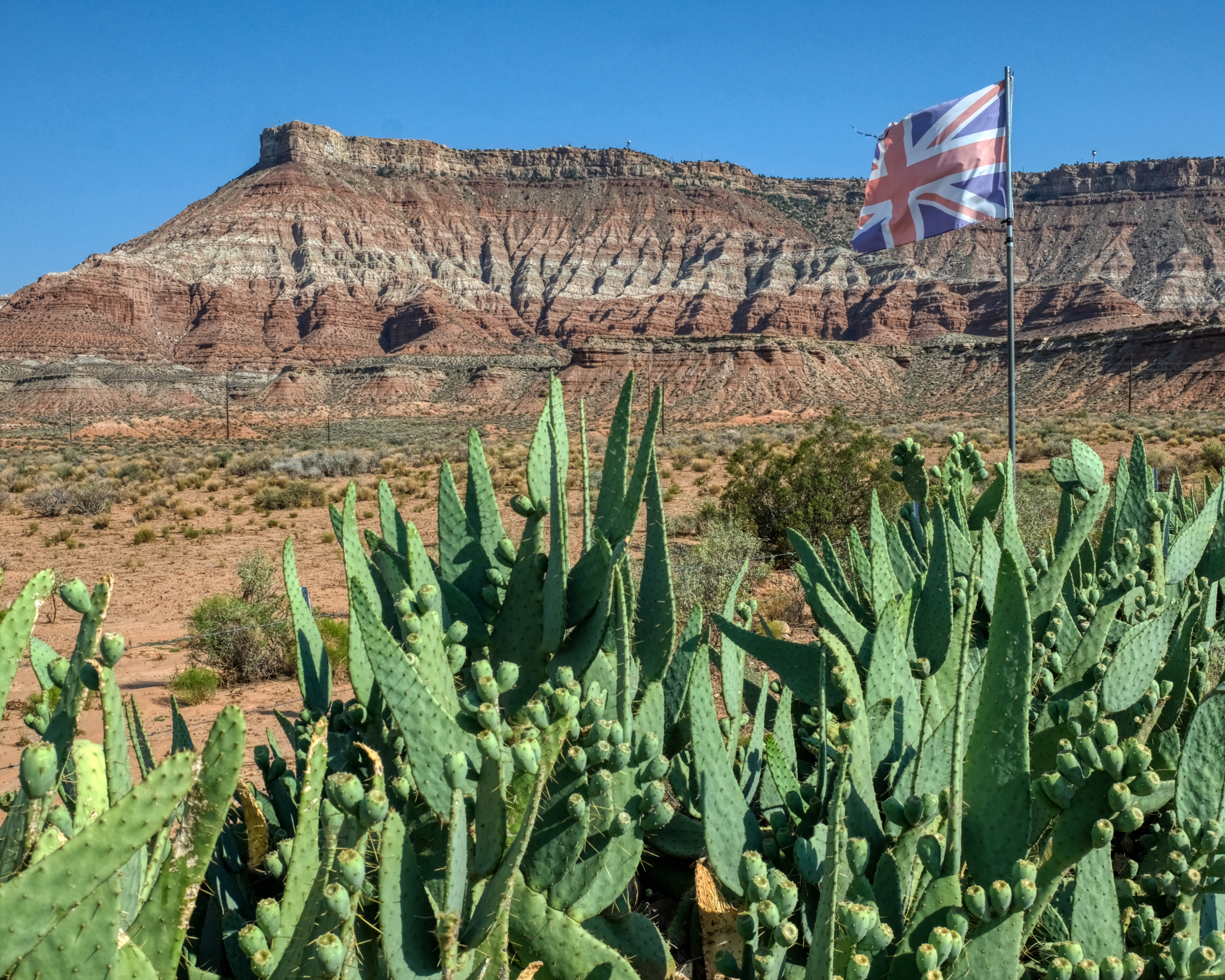 The Western Store was trying to lure tourists from the UK apparently.
The Western Store was trying to lure tourists from the UK apparently.
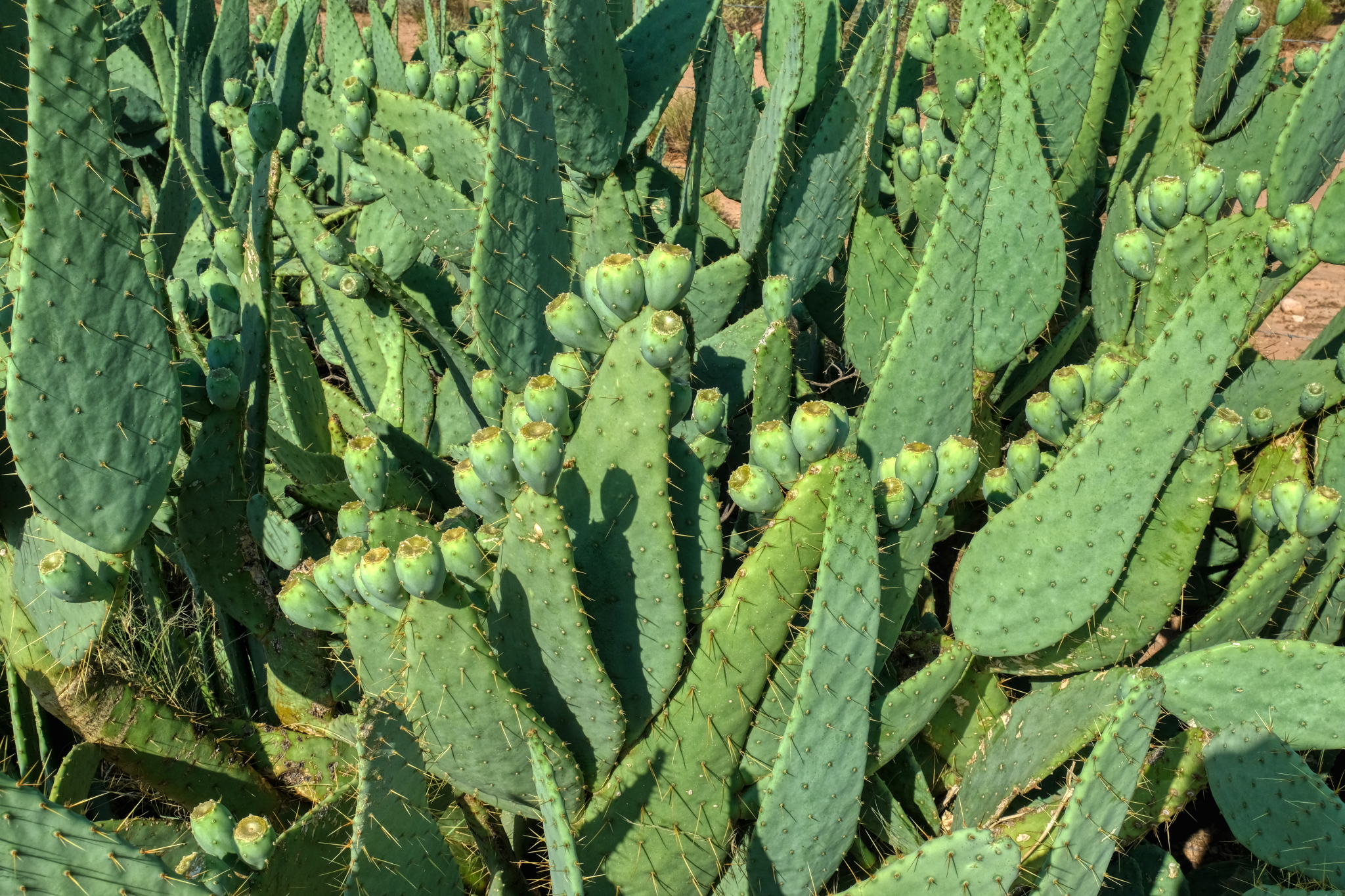 There was a fantastic clump of prickly pear cactus next to their fence.
There was a fantastic clump of prickly pear cactus next to their fence.
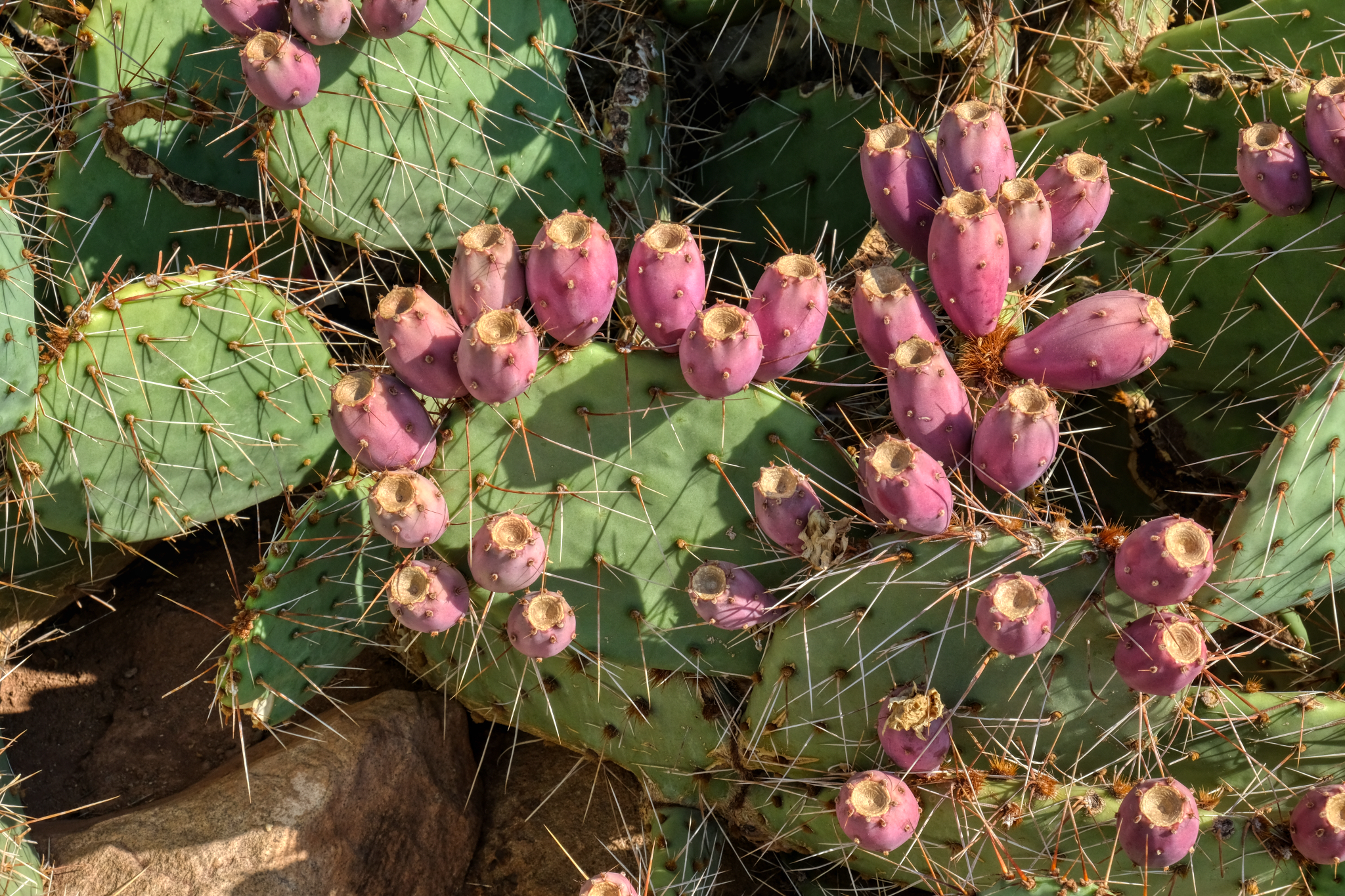 "The fruit of prickly pears (Opunita), commonly called cactus fruit, cactus fig, Indian fig, nopales or tuna in Spanish, is edible, although it must be peeled carefully to remove the small spines on the outer skin before consumption. If the outer layer is not properly removed, glochids can be ingested, causing discomfort of the throat, lips, and tongue, as the small spines are easily lodged in the skin. Native Americans like the Tequesta would roll the fruit around in a suitable medium (e.g. grit) to "sand" off the glochids. Alternatively, rotating the fruit in the flame of a campfire or torch has been used to remove the glochids. Today, parthenocarpic (seedless) cultivars are also available. The seeds can be used for flour." ****
"The fruit of prickly pears (Opunita), commonly called cactus fruit, cactus fig, Indian fig, nopales or tuna in Spanish, is edible, although it must be peeled carefully to remove the small spines on the outer skin before consumption. If the outer layer is not properly removed, glochids can be ingested, causing discomfort of the throat, lips, and tongue, as the small spines are easily lodged in the skin. Native Americans like the Tequesta would roll the fruit around in a suitable medium (e.g. grit) to "sand" off the glochids. Alternatively, rotating the fruit in the flame of a campfire or torch has been used to remove the glochids. Today, parthenocarpic (seedless) cultivars are also available. The seeds can be used for flour." ****
_____________________________________________
COVE FORT, UTAH
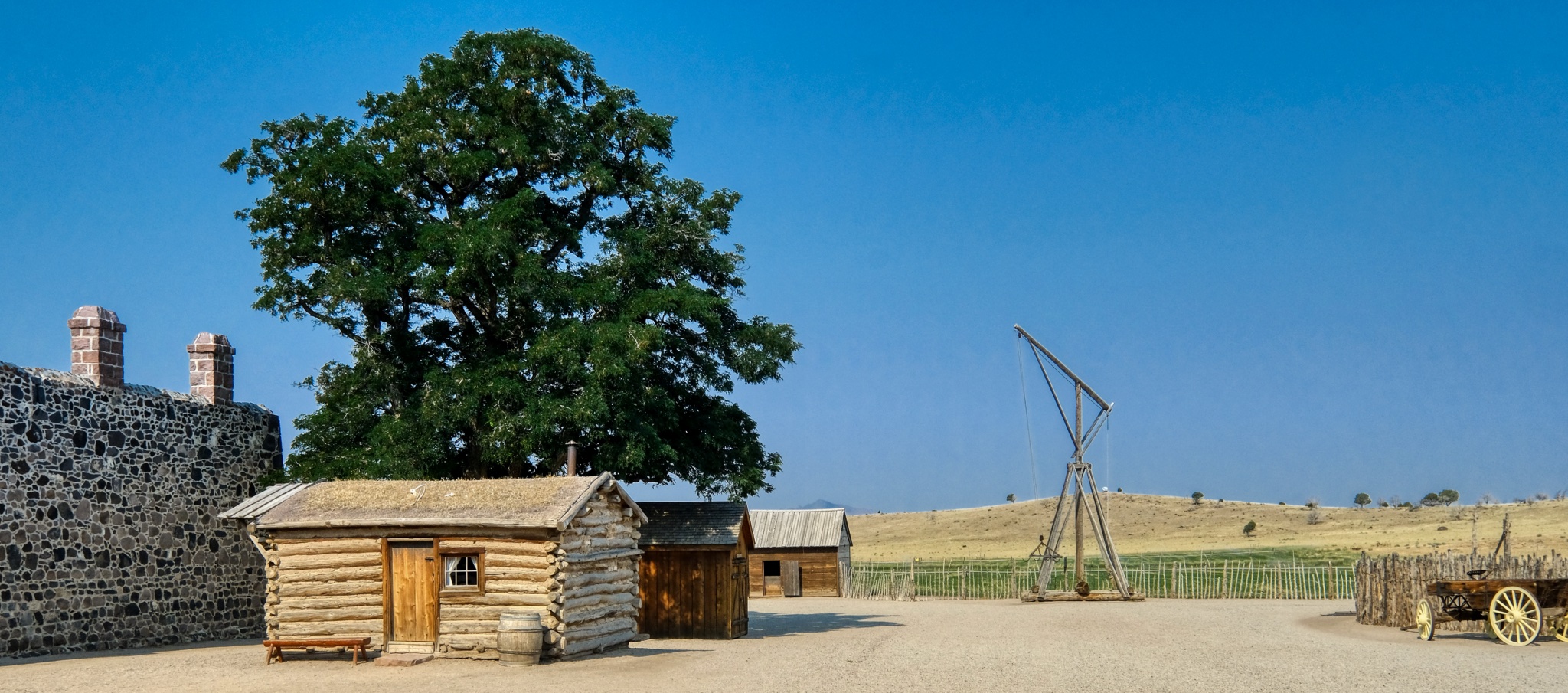 One of the joys of a road trip in the USA are the highway signs announcing "Historic Site Next Right Exit. Fort Cove". So, you take the next right off of I-15.
One of the joys of a road trip in the USA are the highway signs announcing "Historic Site Next Right Exit. Fort Cove". So, you take the next right off of I-15.
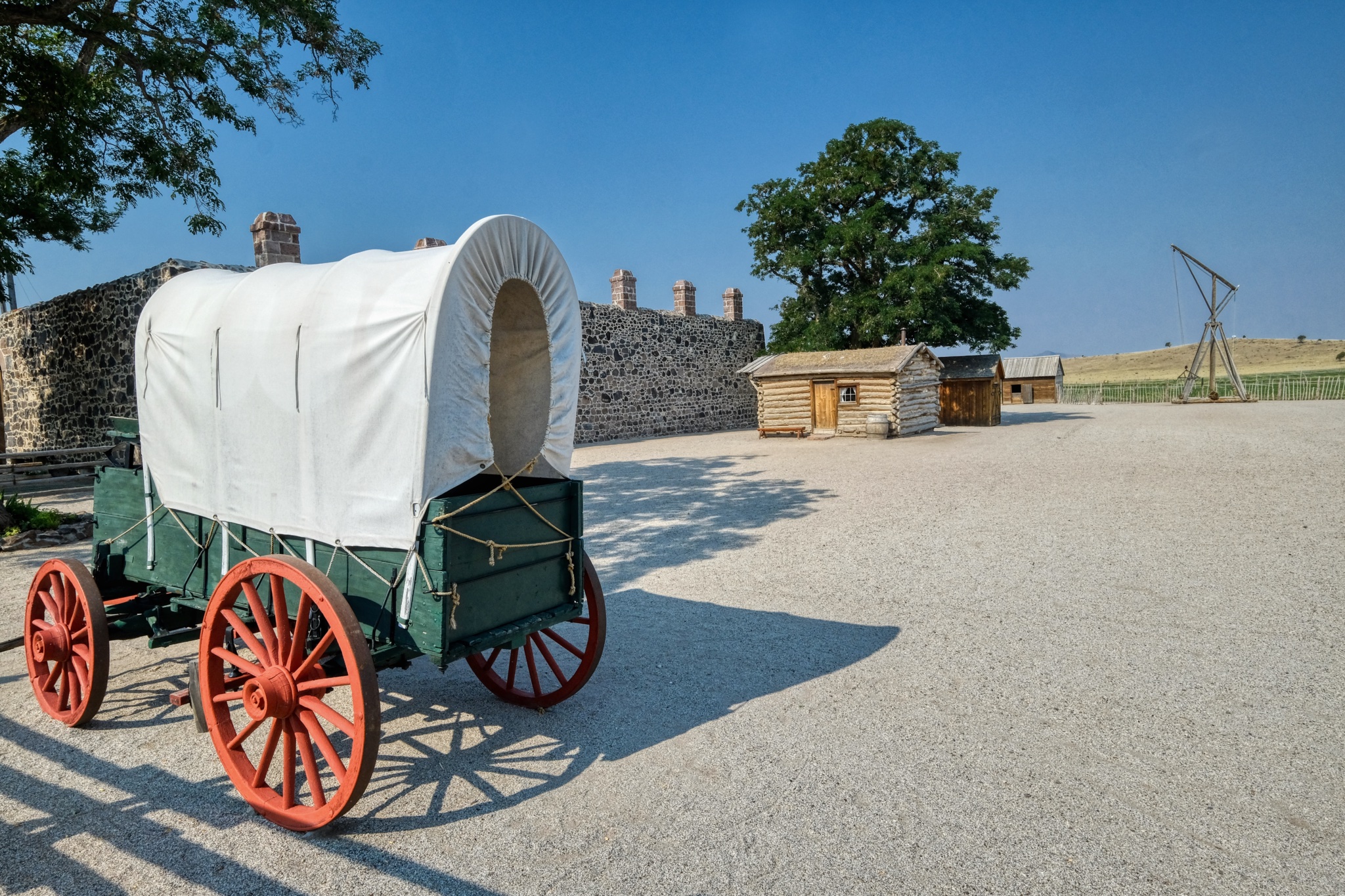
"Cove Fort is a fort, unincorporated community, and historical site located in Millard County, Utah. It was founded in 1867 at the request of Brigham Young. One of its distinctive features is the use of volcanic rock in the construction of the walls, rather than the wood used in many mid-19th-century western forts. This difference in construction is the reason it is one of very few forts of this period still surviving." ***
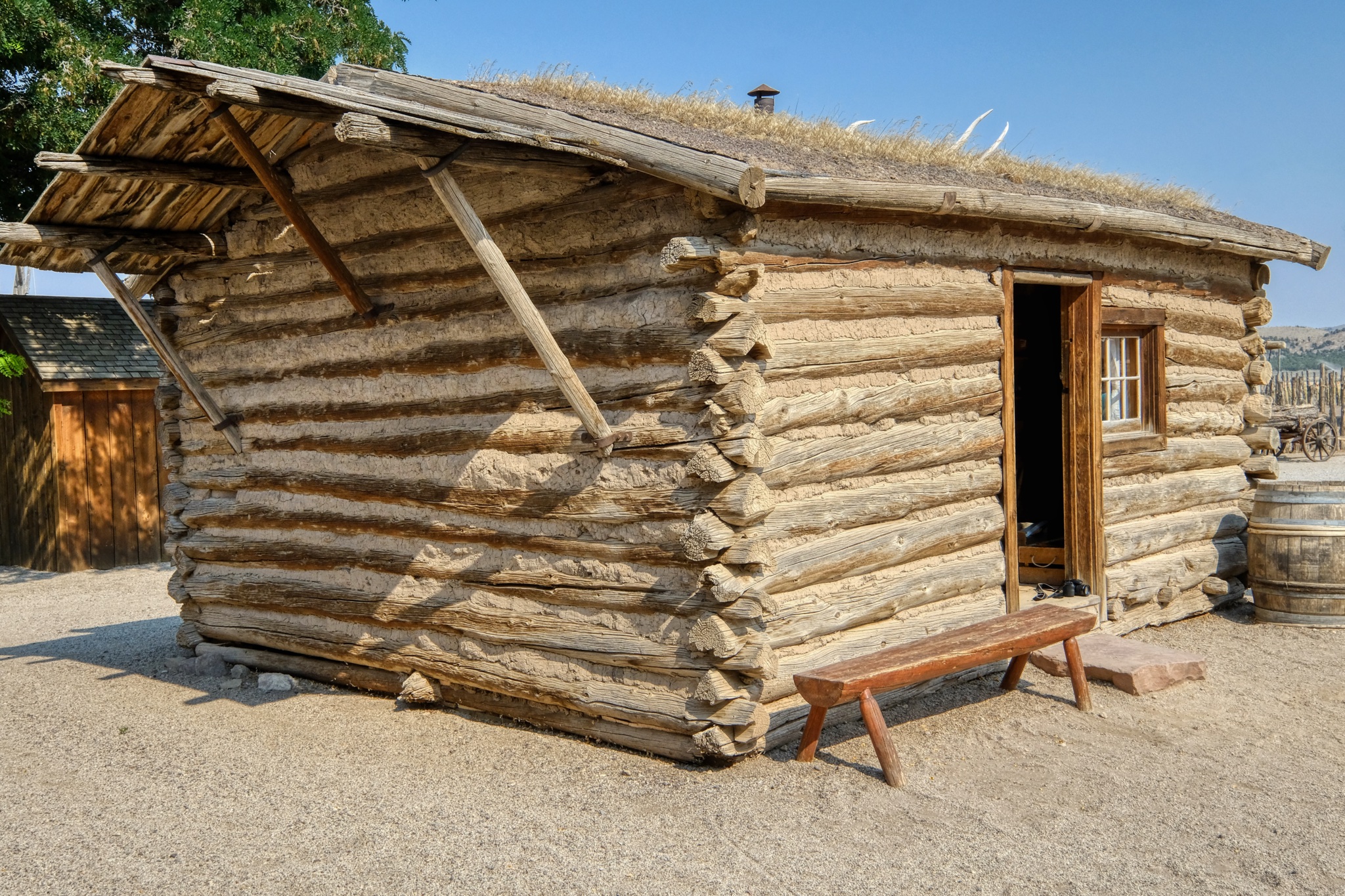 A very nice recreation of an early pioneer cabin.
A very nice recreation of an early pioneer cabin.
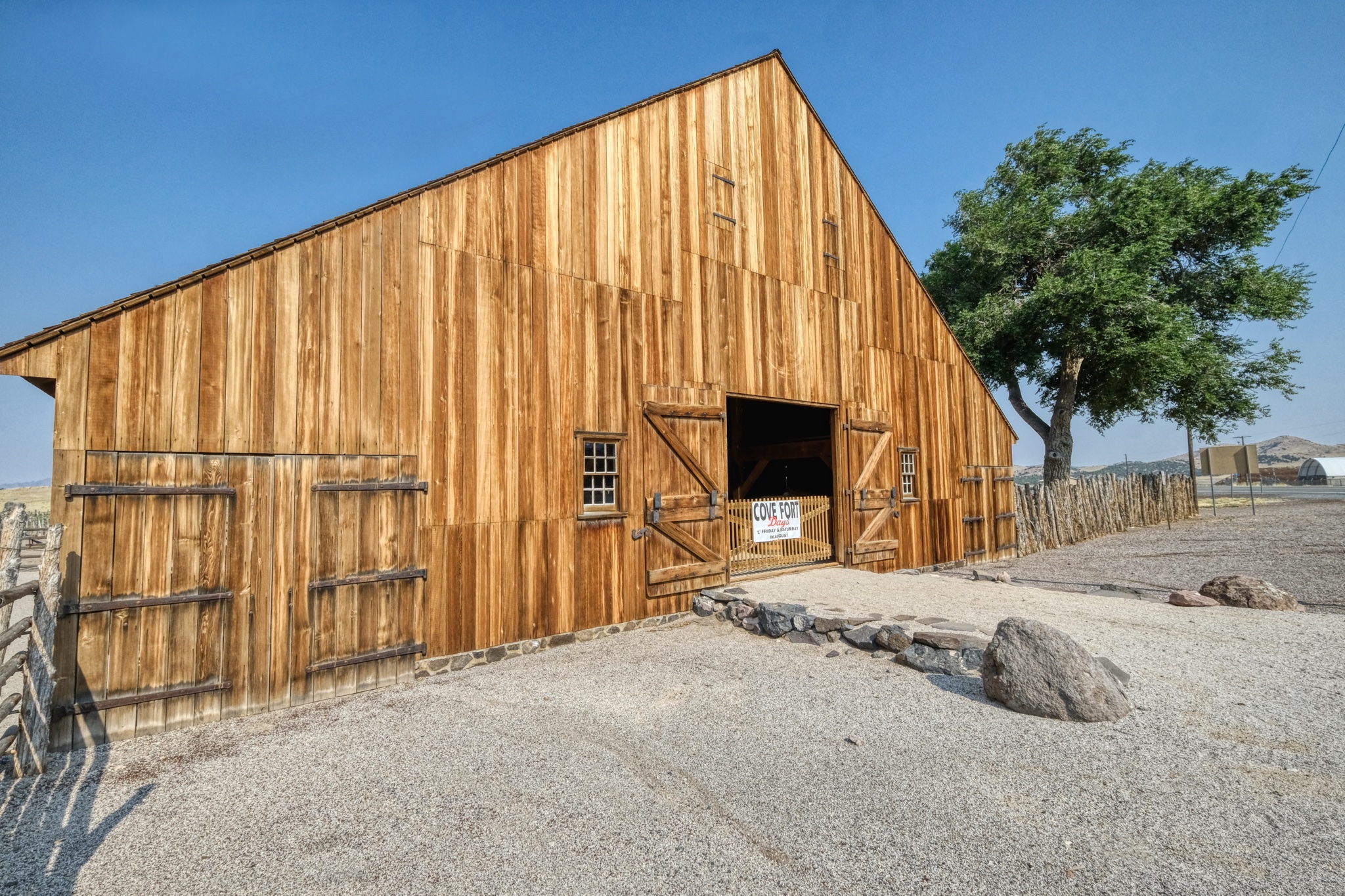 There was a fine reproduction barn, nearly new.
There was a fine reproduction barn, nearly new.
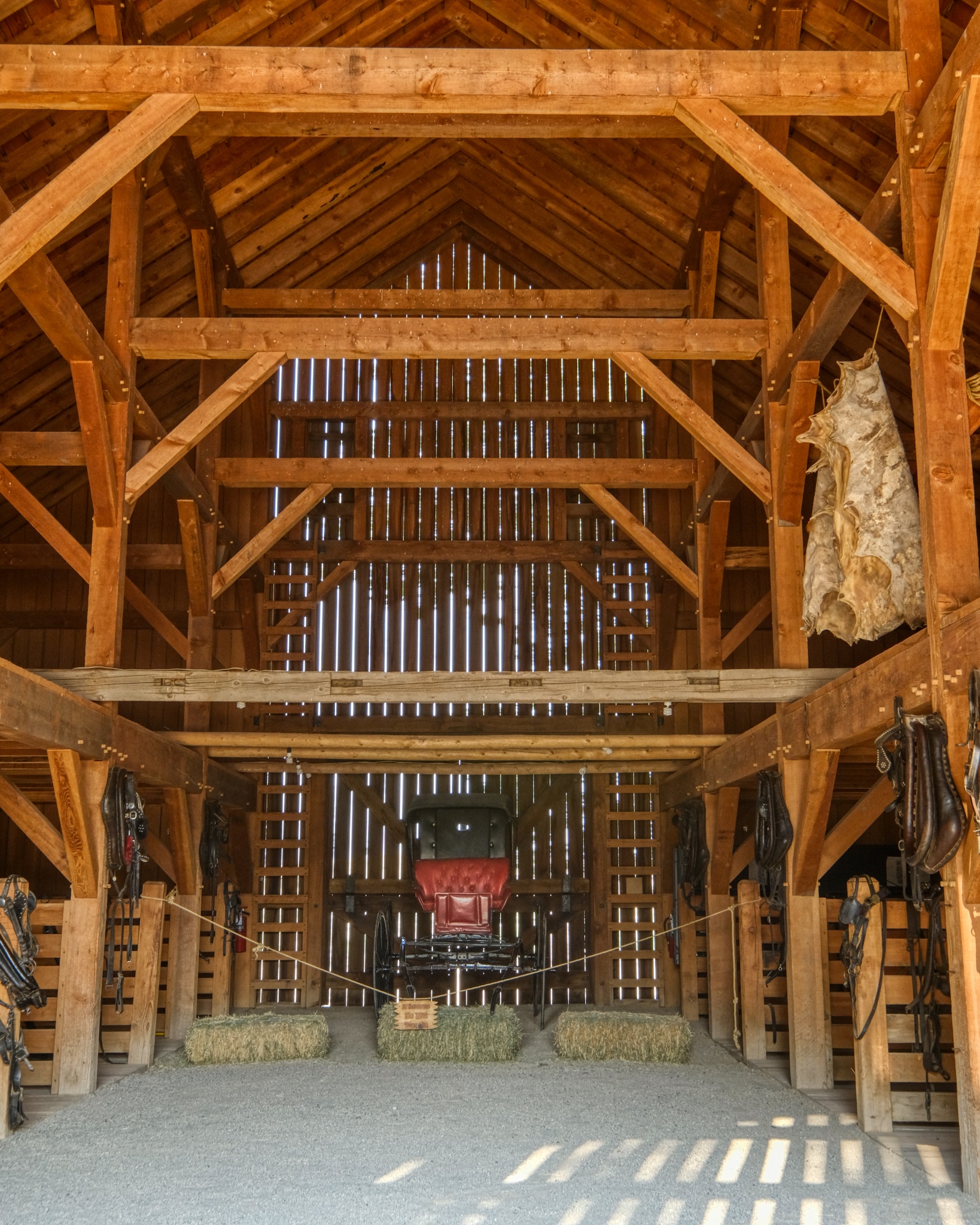 The interior of the big barn had displays of period items, well, related to barns.
The interior of the big barn had displays of period items, well, related to barns.
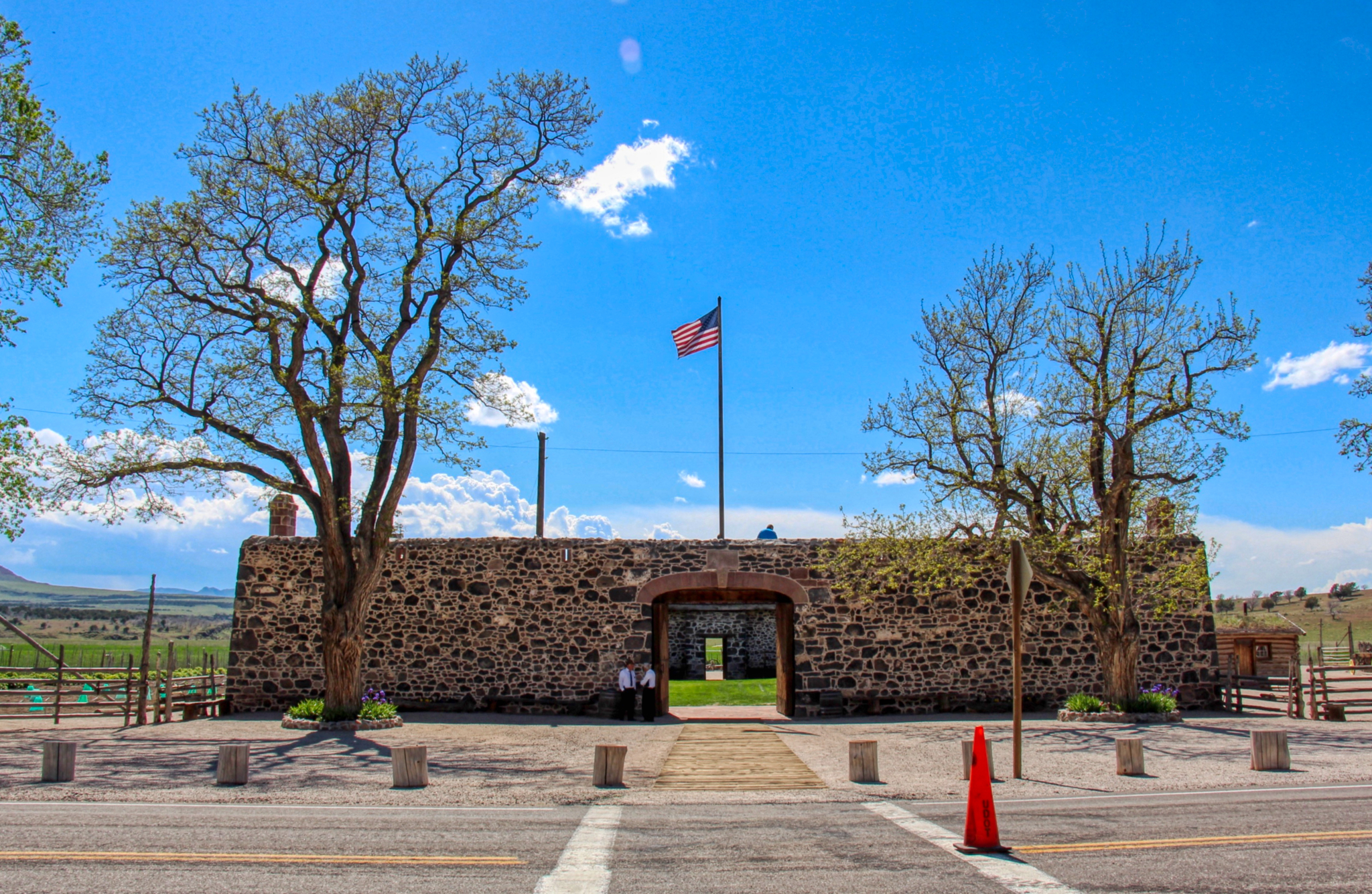 Fort Cove, Utah (Photo from Wikipedia)
Fort Cove, Utah (Photo from Wikipedia)
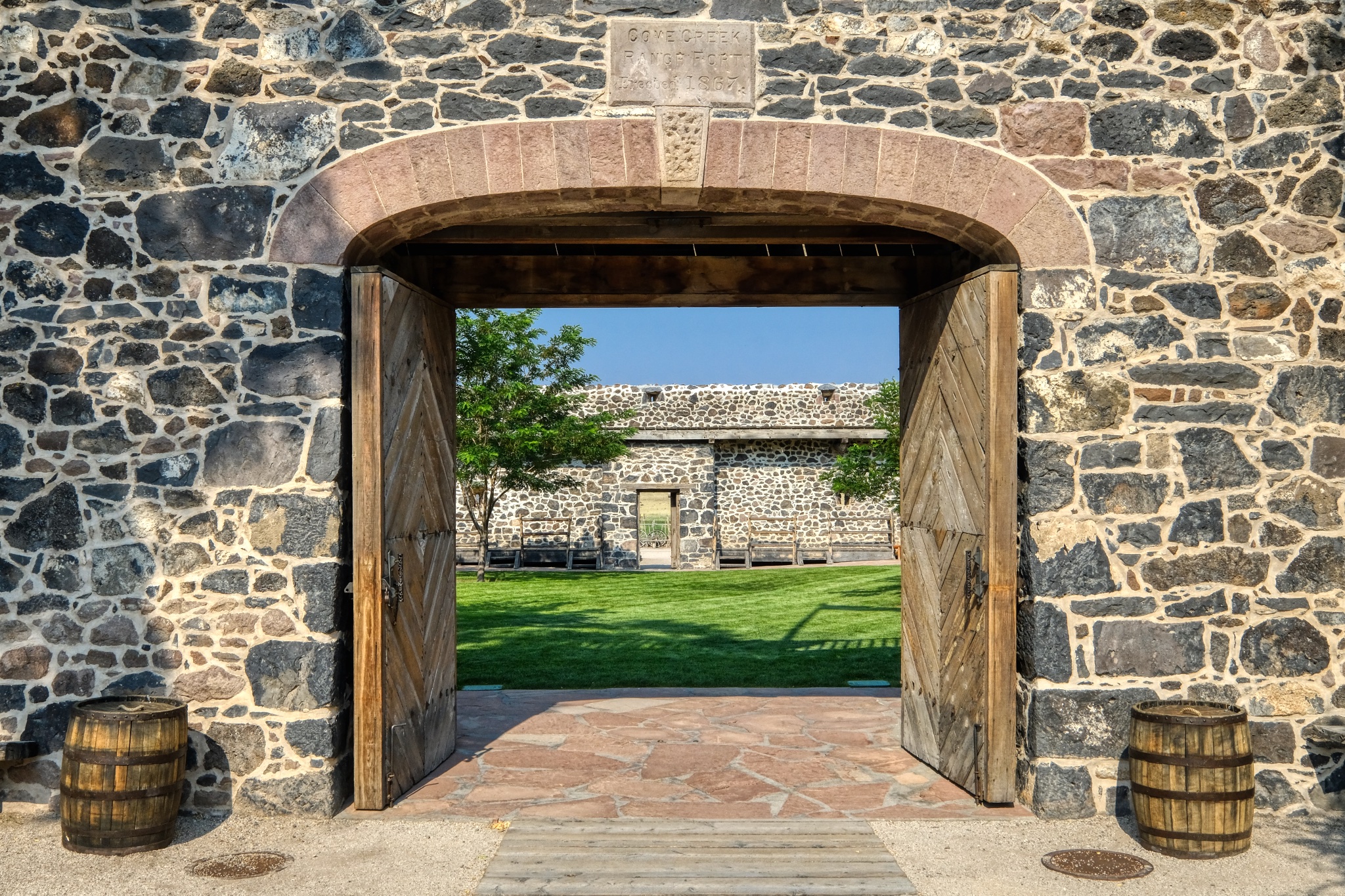 The 1867 Fort Cove gate.
The 1867 Fort Cove gate.
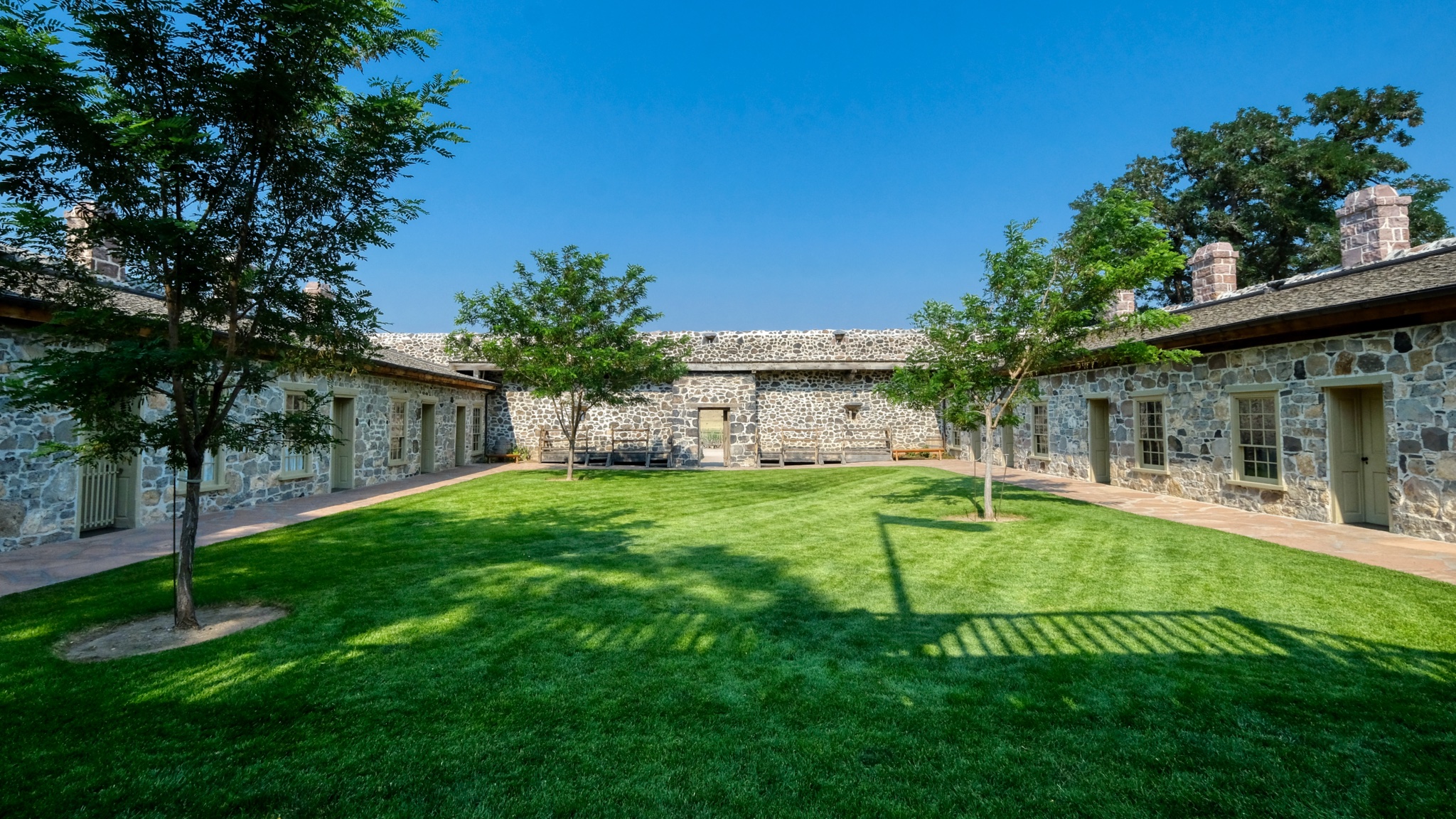 I was surprised by the verdant green, lush lawn in the fort's inner courtyard. Imagine how wonderful this would have been to the soldiers posted here and the passing visitors in their covered wagons!
I was surprised by the verdant green, lush lawn in the fort's inner courtyard. Imagine how wonderful this would have been to the soldiers posted here and the passing visitors in their covered wagons!
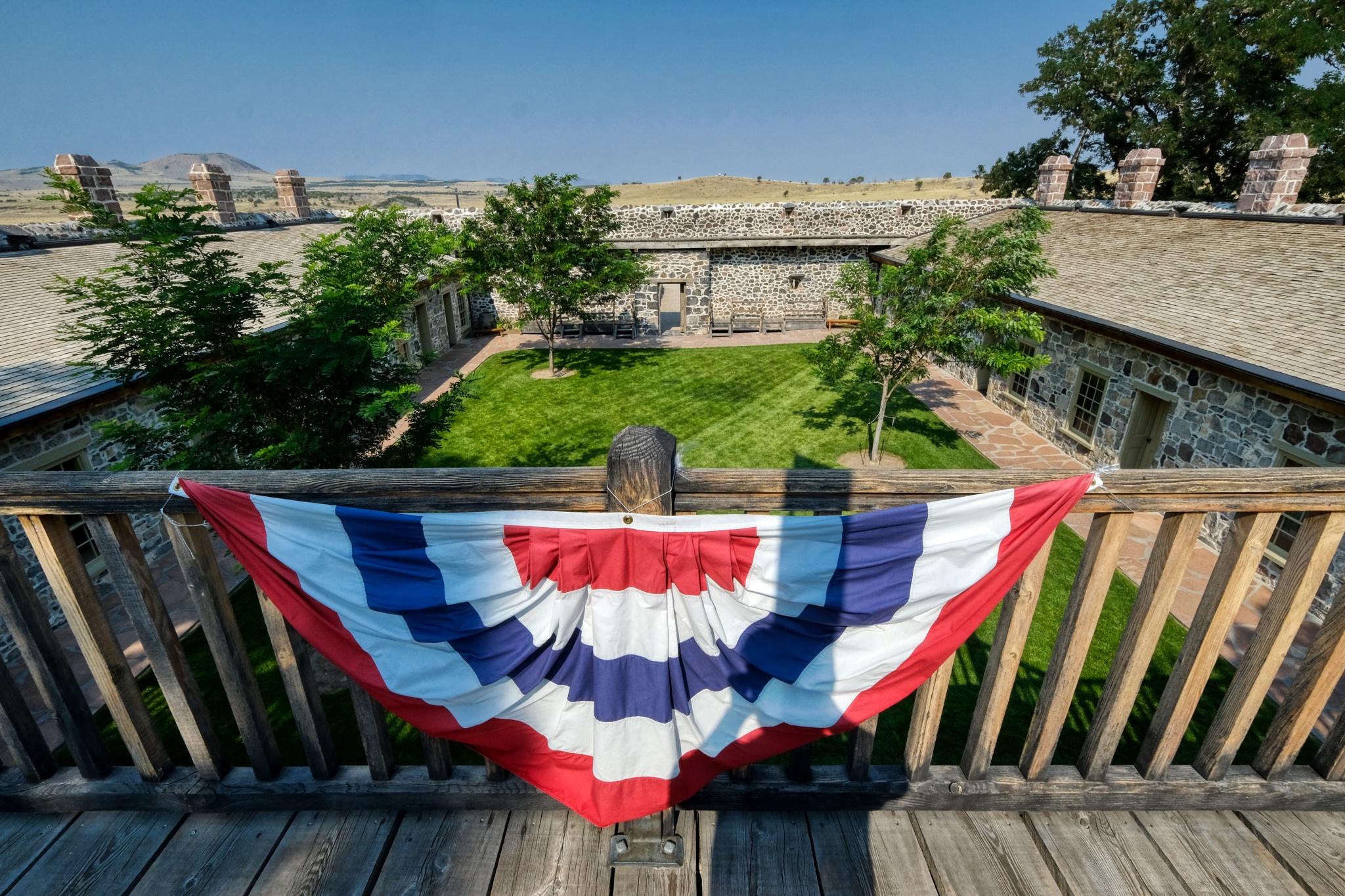 We went up the stairs to the roof of the fort for the view.
We went up the stairs to the roof of the fort for the view.
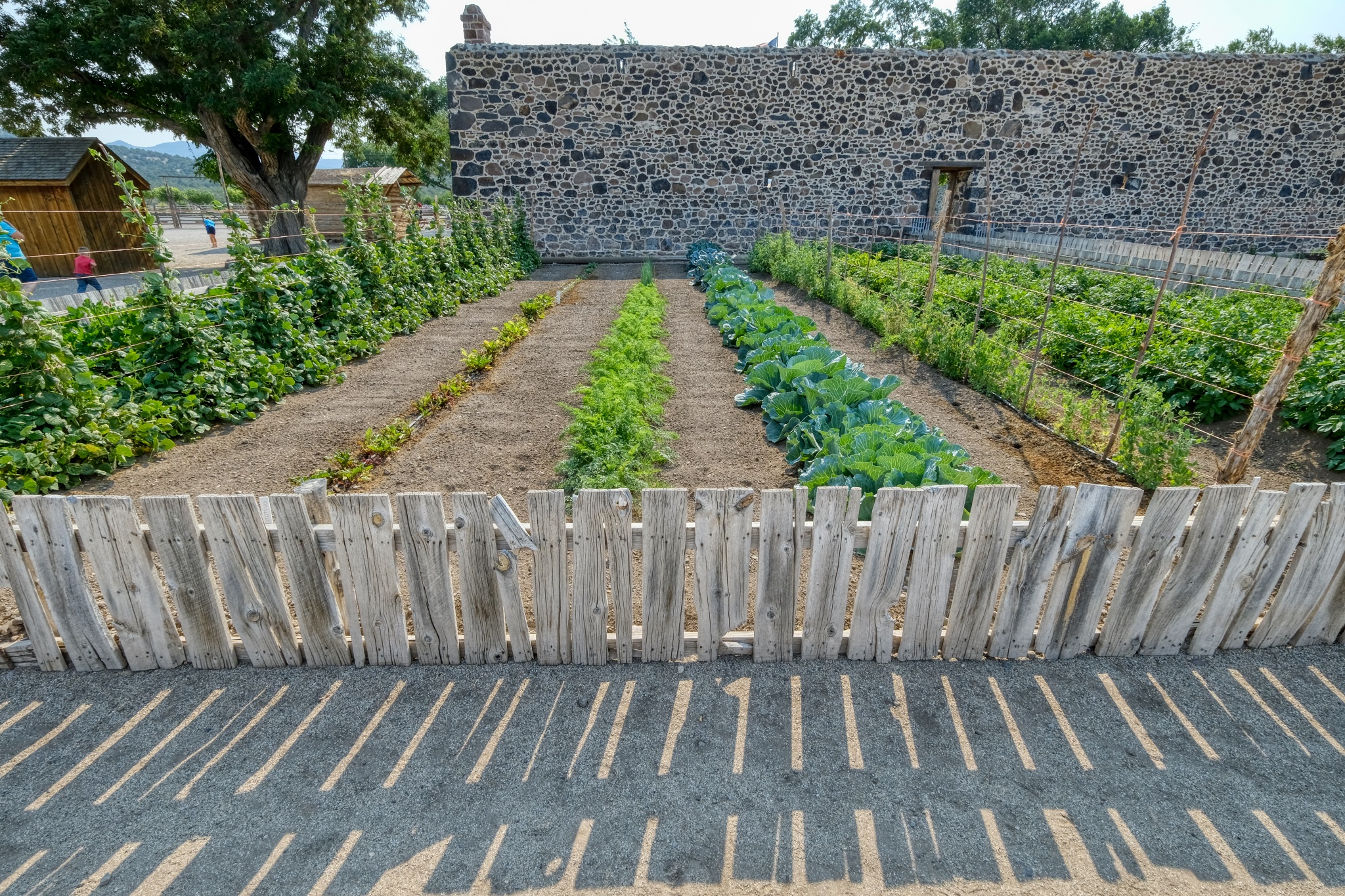 Behind the fort was the vegetable garden.
Behind the fort was the vegetable garden.
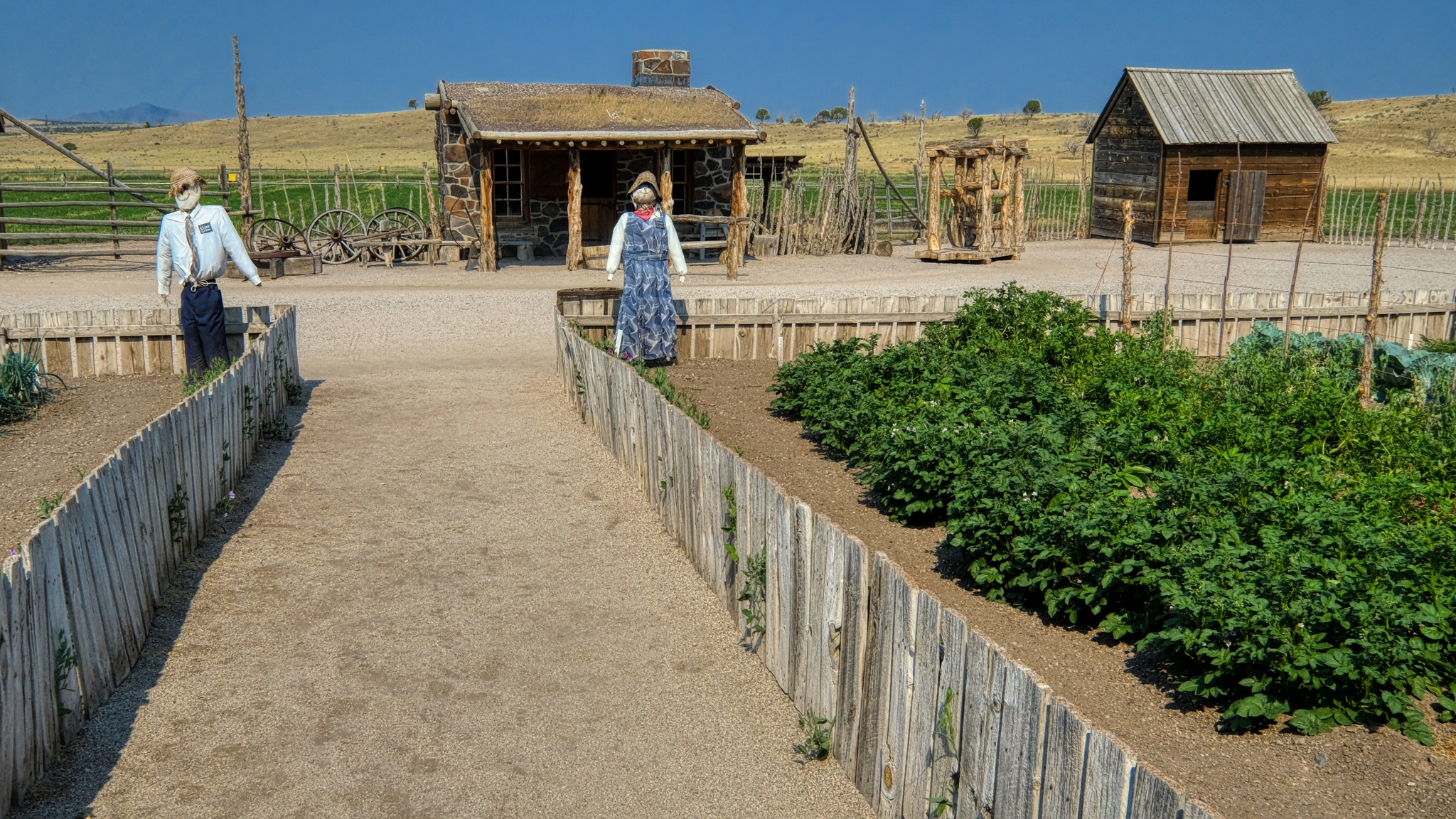 The garden path leading to displays of various Mormon settler shacks, sheds, and cabins that were trucked to the site and restored.
The garden path leading to displays of various Mormon settler shacks, sheds, and cabins that were trucked to the site and restored.
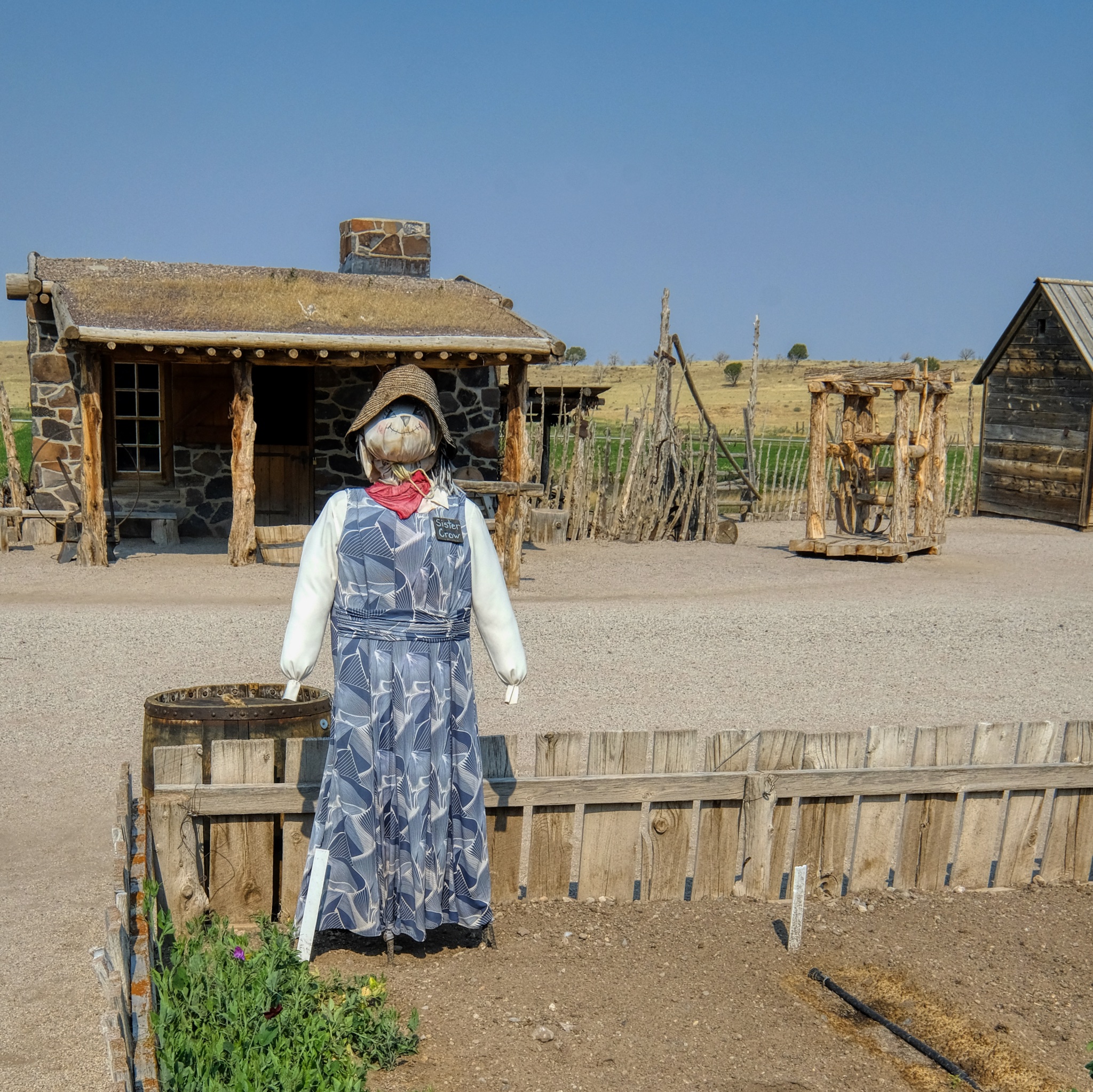 A superb scarecrow!
A superb scarecrow!
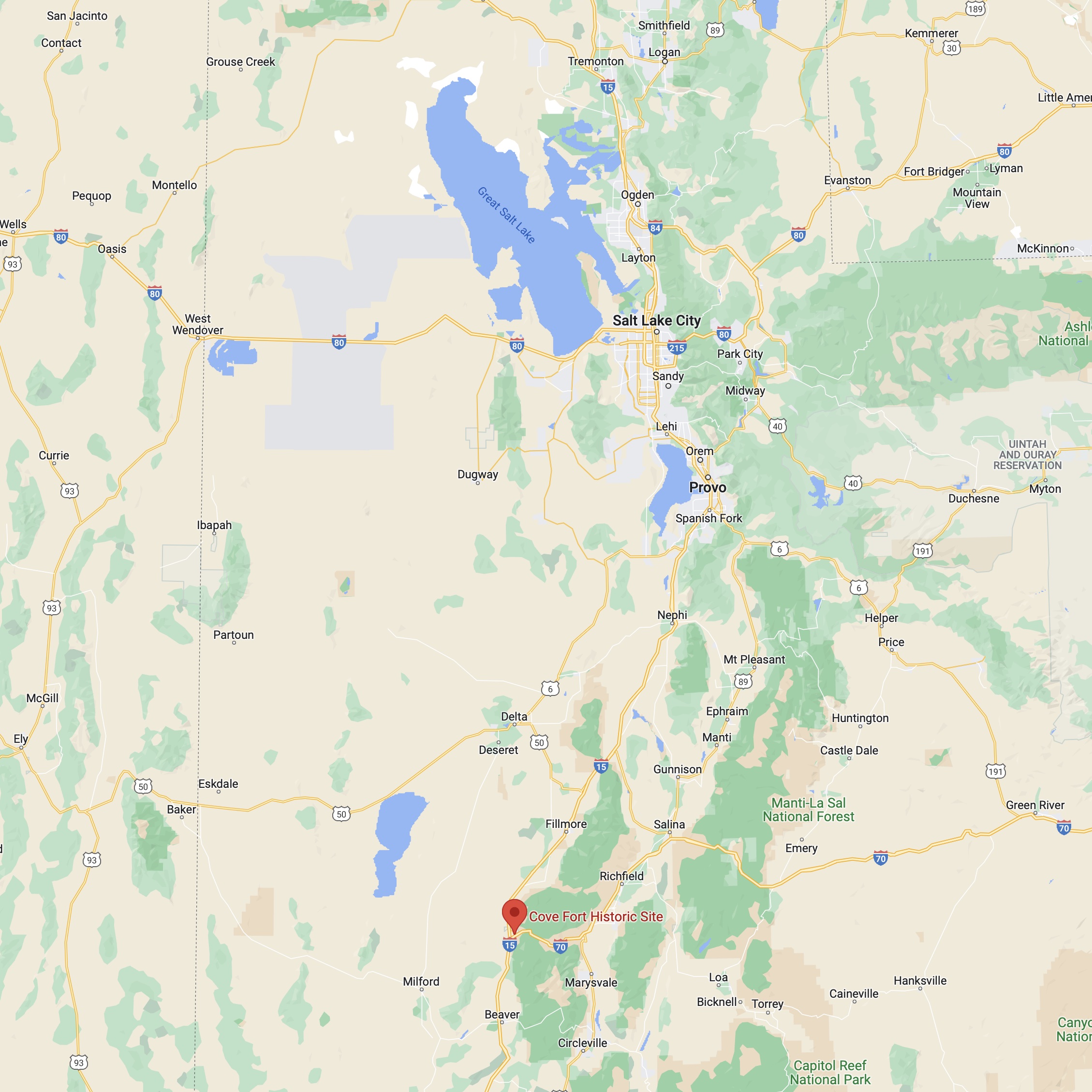
Then back out on the highway I-15 north . . . and an Allison Krauss and Willy Nelson concert in Bend, Oregon!!!
USA Road Trip: Old Country Store, Kewanee, Mississippi
 Thursday, January 27, 2022 at 6:31PM
Thursday, January 27, 2022 at 6:31PM 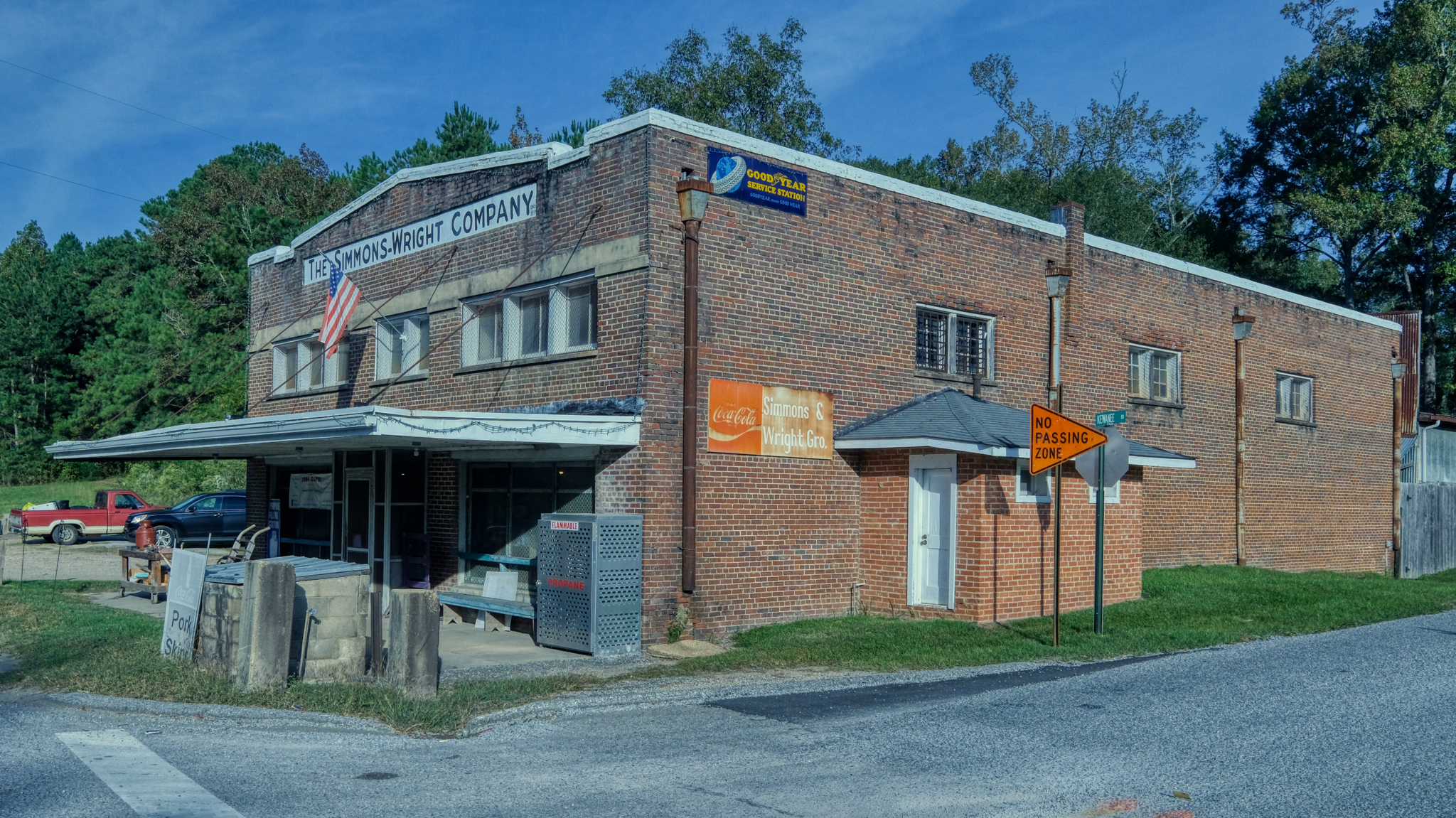 Just travelling along the highway from Leesville, Louisiana to Selma, Alabama, via Natchez, all the way across Mississippi with my friend Bud riding along, we pulled off on a side road to seek refreshment and saw this gem from an older America: The Simmons-Wright Company store.
Just travelling along the highway from Leesville, Louisiana to Selma, Alabama, via Natchez, all the way across Mississippi with my friend Bud riding along, we pulled off on a side road to seek refreshment and saw this gem from an older America: The Simmons-Wright Company store.
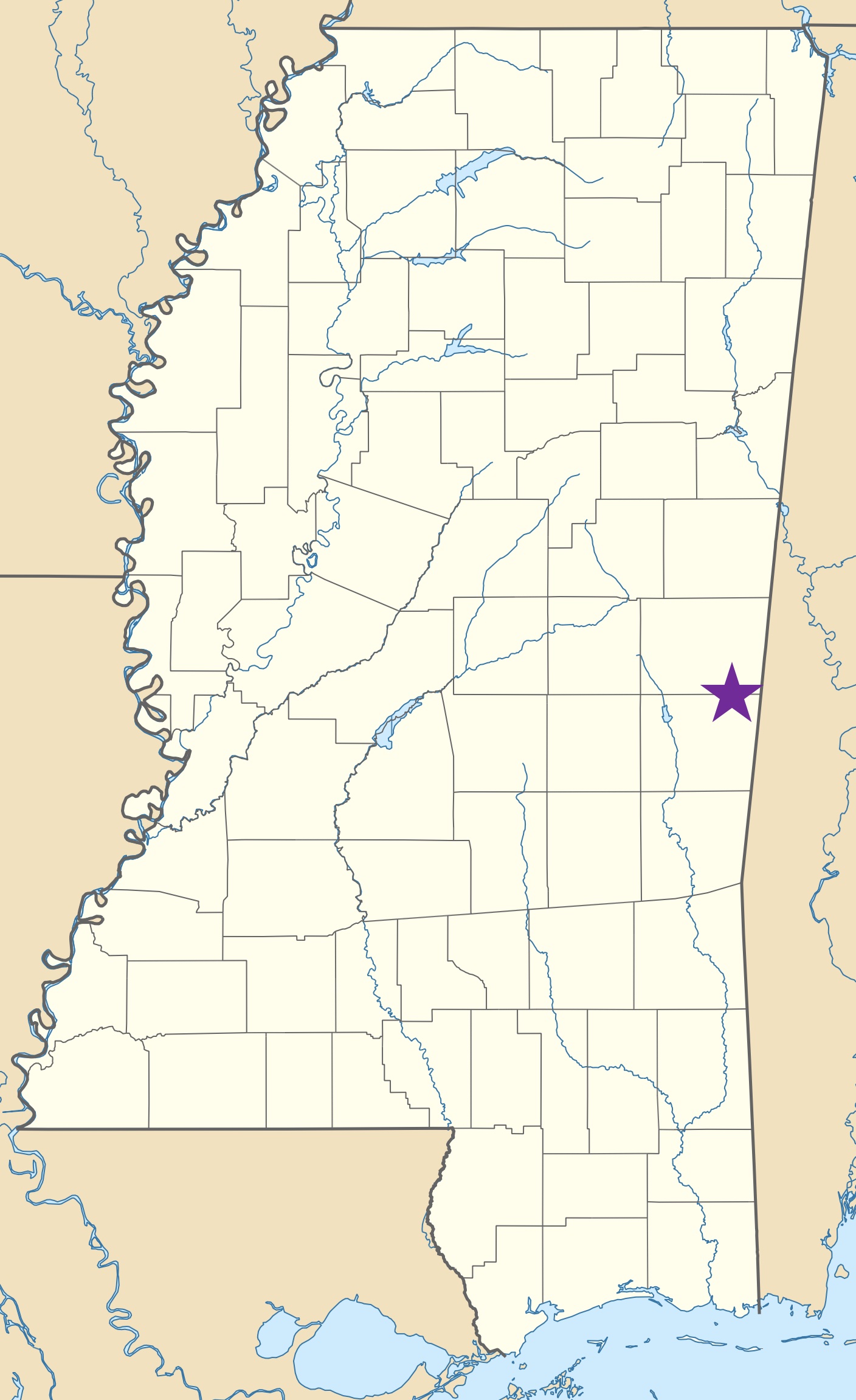 Only a mile or two before the Mississippi - Alabama state line.
Only a mile or two before the Mississippi - Alabama state line.
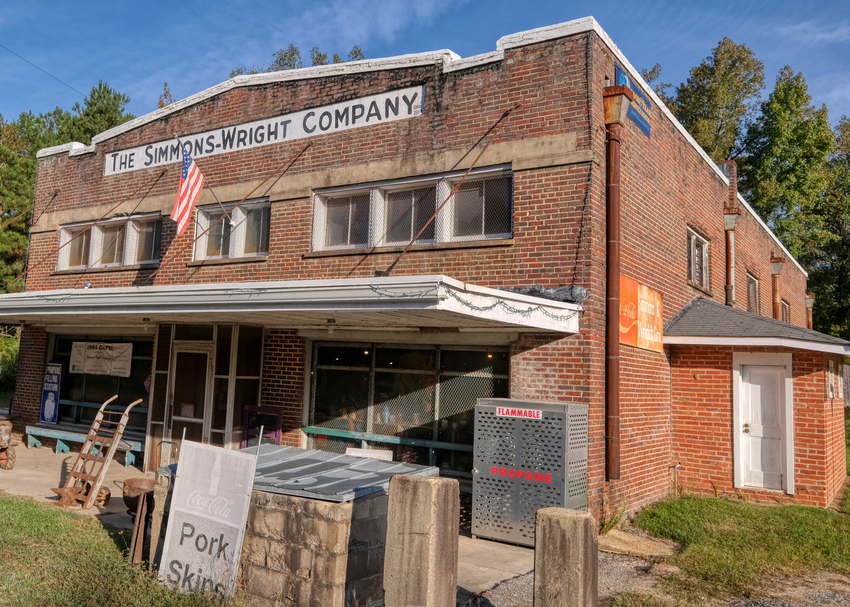 The Simmons-Wright Company is a historic general store established in 1884 in Kewanee, Mississippi, a small town just outside Meridian in Lauderdale County. The building was listed on the National Register of Historic Places in 2008. It looked inviting, so we walked right in.
The Simmons-Wright Company is a historic general store established in 1884 in Kewanee, Mississippi, a small town just outside Meridian in Lauderdale County. The building was listed on the National Register of Historic Places in 2008. It looked inviting, so we walked right in.
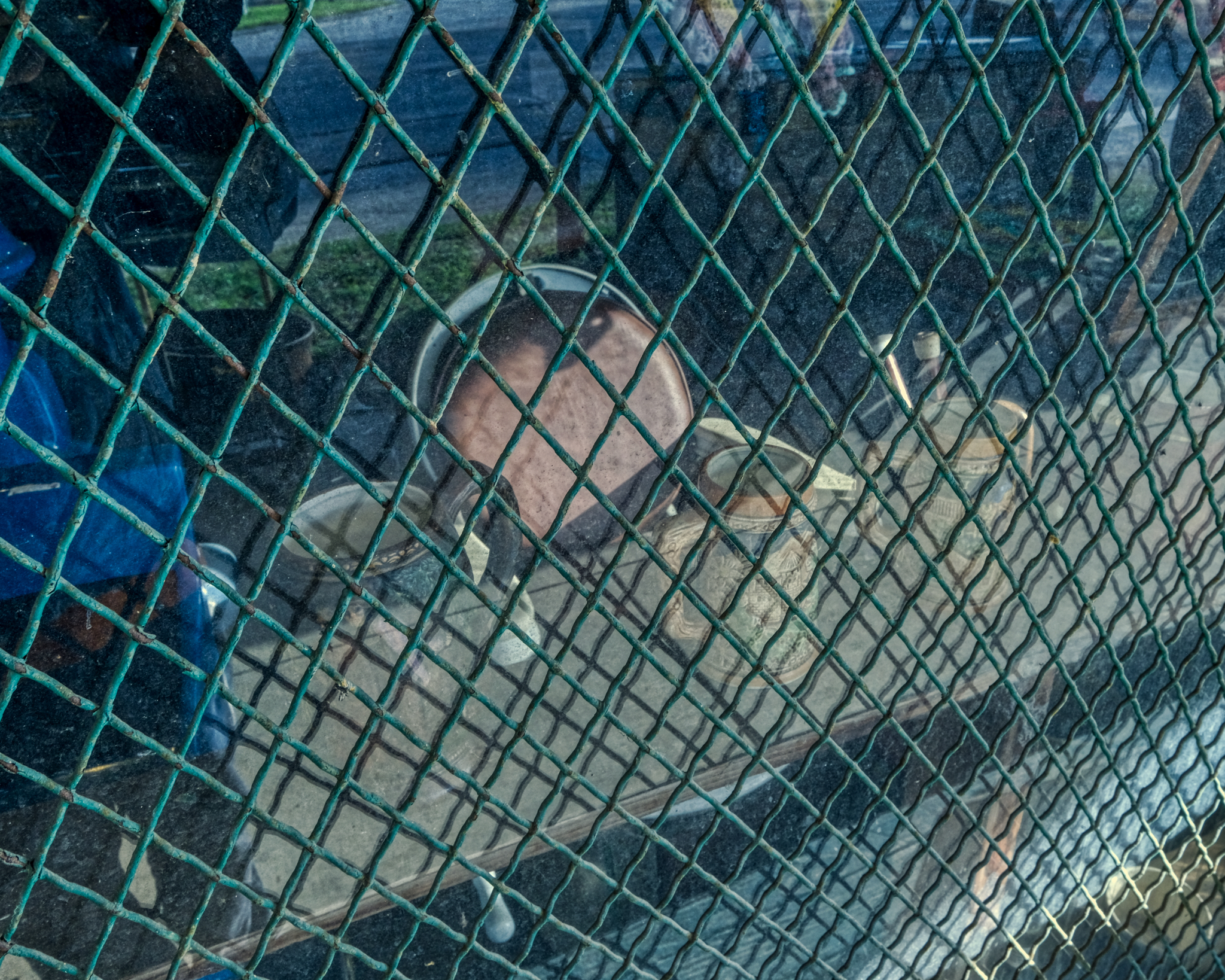 A peek through the dusty window before we entered foreshadowed the delights within!
A peek through the dusty window before we entered foreshadowed the delights within!
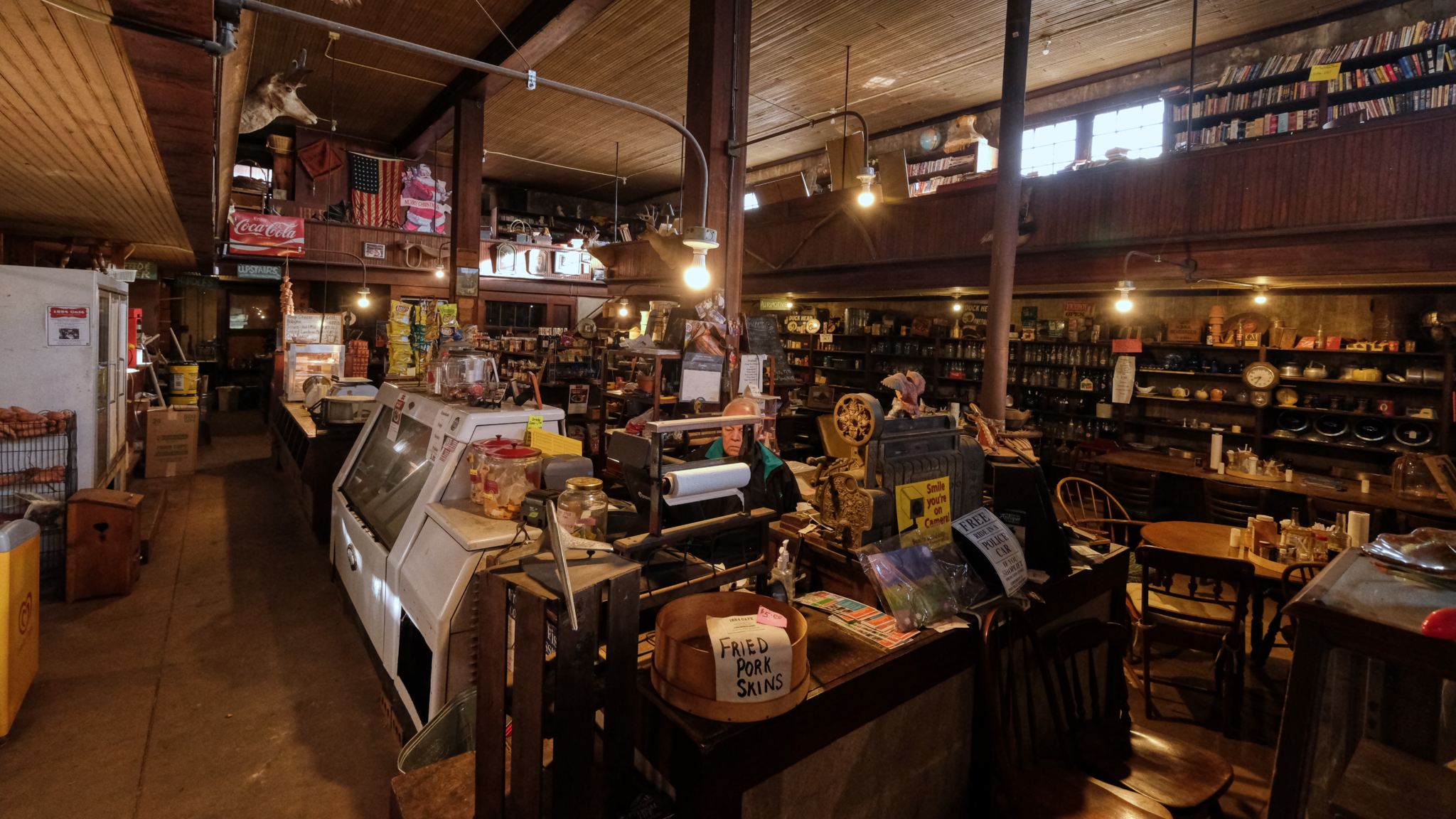 OMG! We walked in to find this time capsule of another era; the general store. I am old enough to remember these kinds of stores from my childhood living in The South, but never imagined one would have survived, intact from that time.
OMG! We walked in to find this time capsule of another era; the general store. I am old enough to remember these kinds of stores from my childhood living in The South, but never imagined one would have survived, intact from that time.
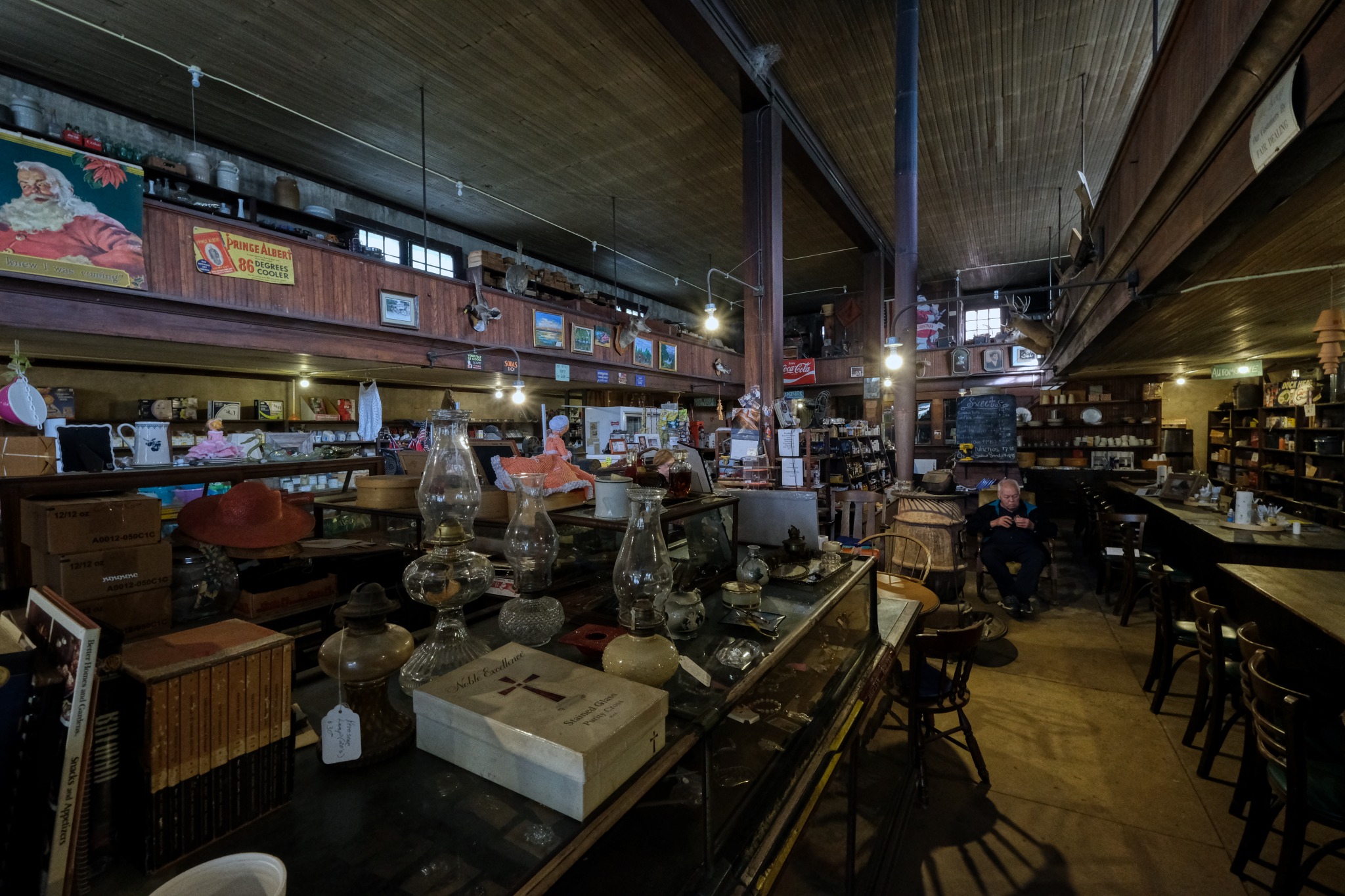 All original store fittings, shelves, coolers . . . .
All original store fittings, shelves, coolers . . . .
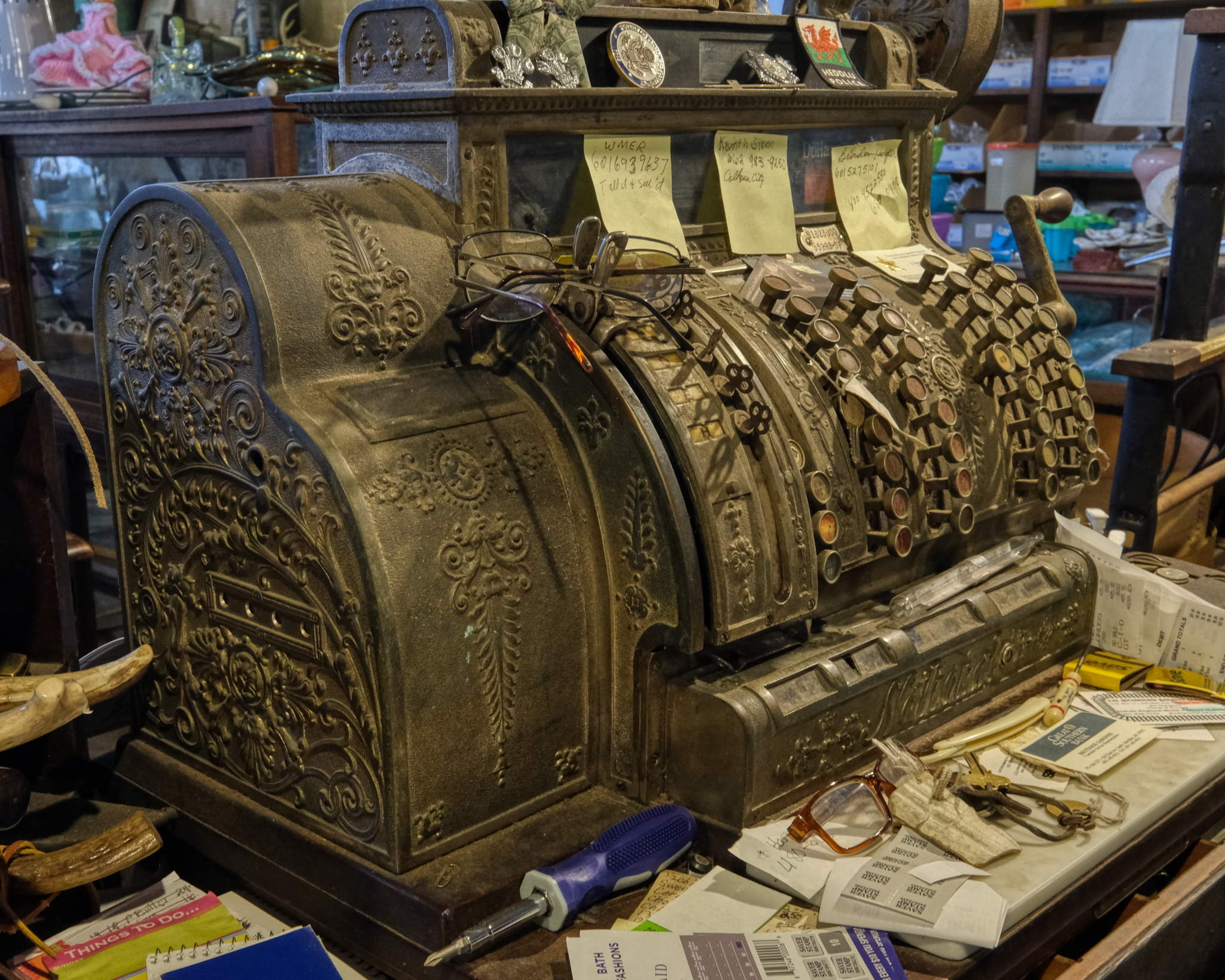 . . . there was even the 'origional' cash register. Amazing.
. . . there was even the 'origional' cash register. Amazing.
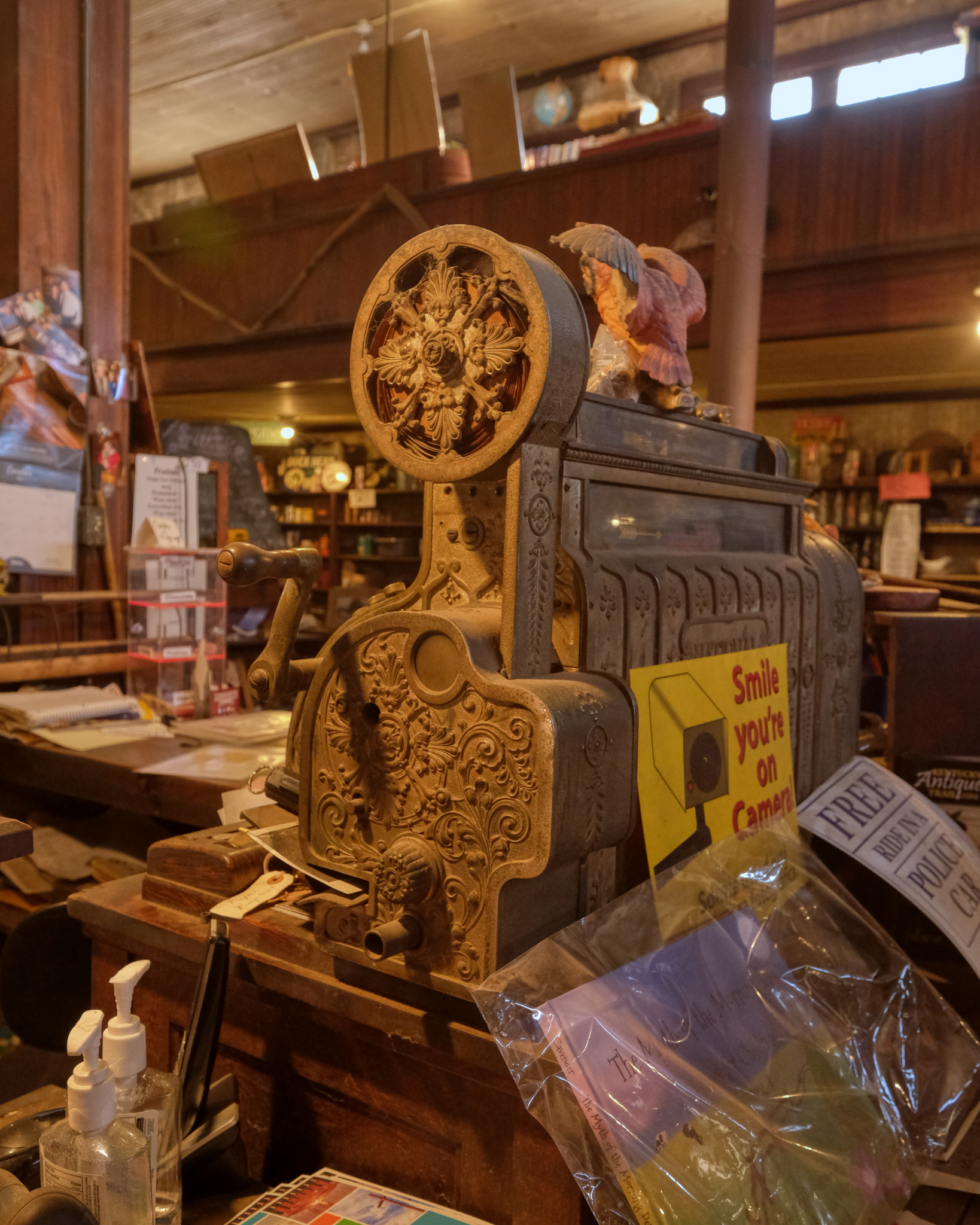 The cash register was a masterful work of art from a bygone era. The mess around the store must have made it feel like a comfortable old shoe to the old man sitting behind the counter. He kept a good eye on us as we wondered around.
The cash register was a masterful work of art from a bygone era. The mess around the store must have made it feel like a comfortable old shoe to the old man sitting behind the counter. He kept a good eye on us as we wondered around.
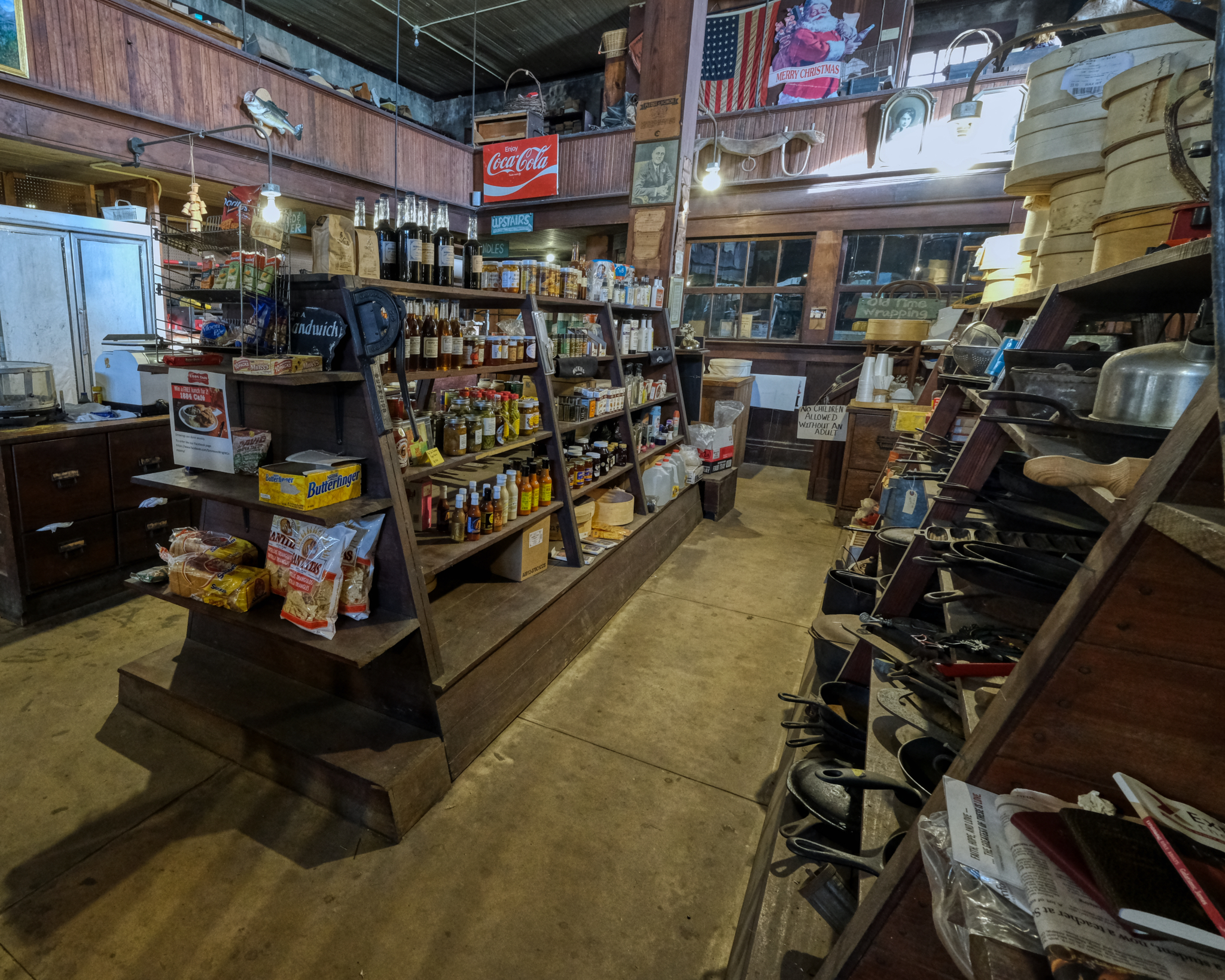 A little bit of everything a person might want to stop in and get on the way home from the mill job. I love the hand made "No Children Allowed Without An Adult" sign.
A little bit of everything a person might want to stop in and get on the way home from the mill job. I love the hand made "No Children Allowed Without An Adult" sign.
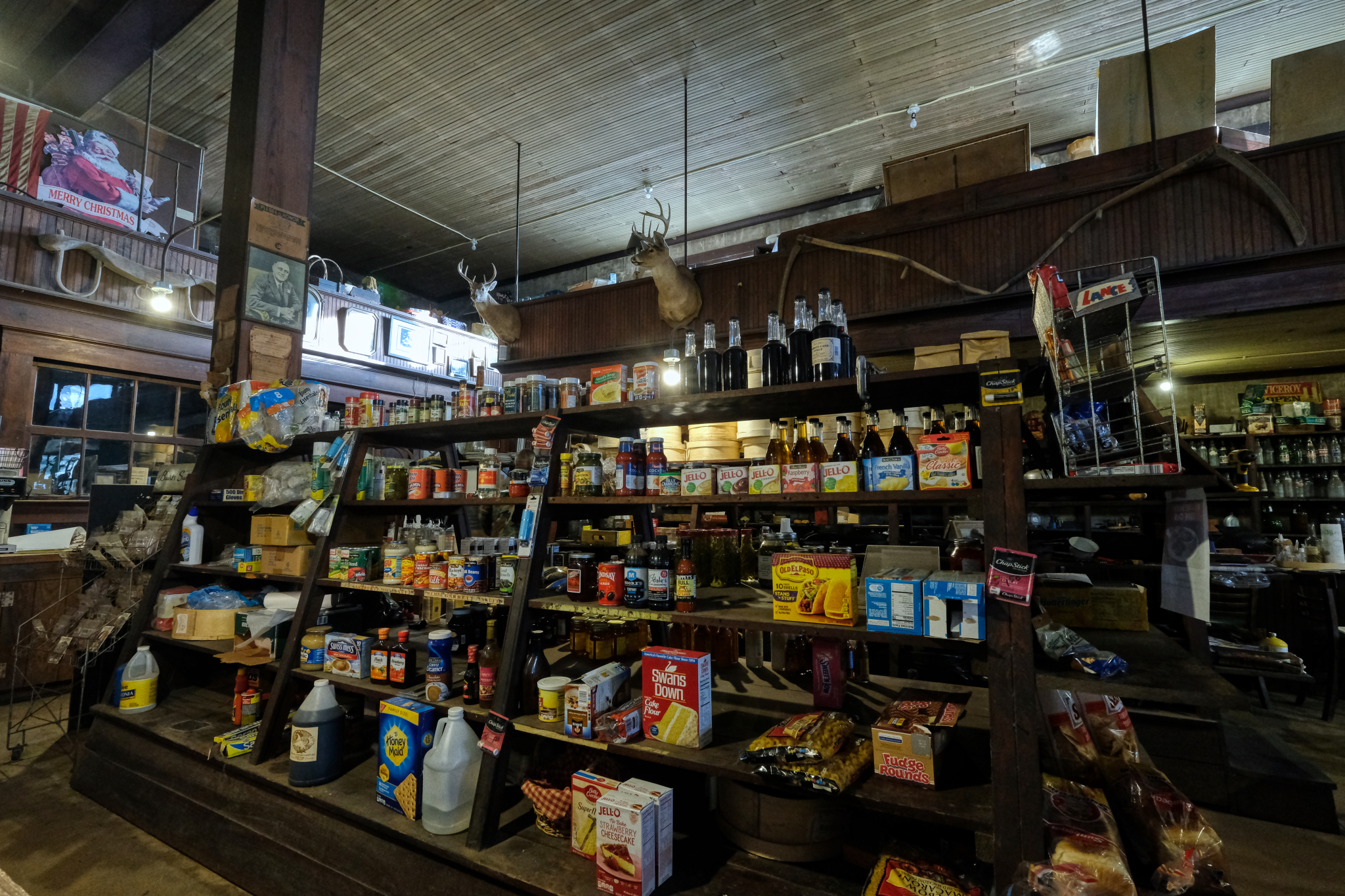 No computerized stock control here, no bar code scanning or shelf space earning ratios. You have to know your customers tastes. The array of food choices on offer speaks to the local cultural preferences.
No computerized stock control here, no bar code scanning or shelf space earning ratios. You have to know your customers tastes. The array of food choices on offer speaks to the local cultural preferences.
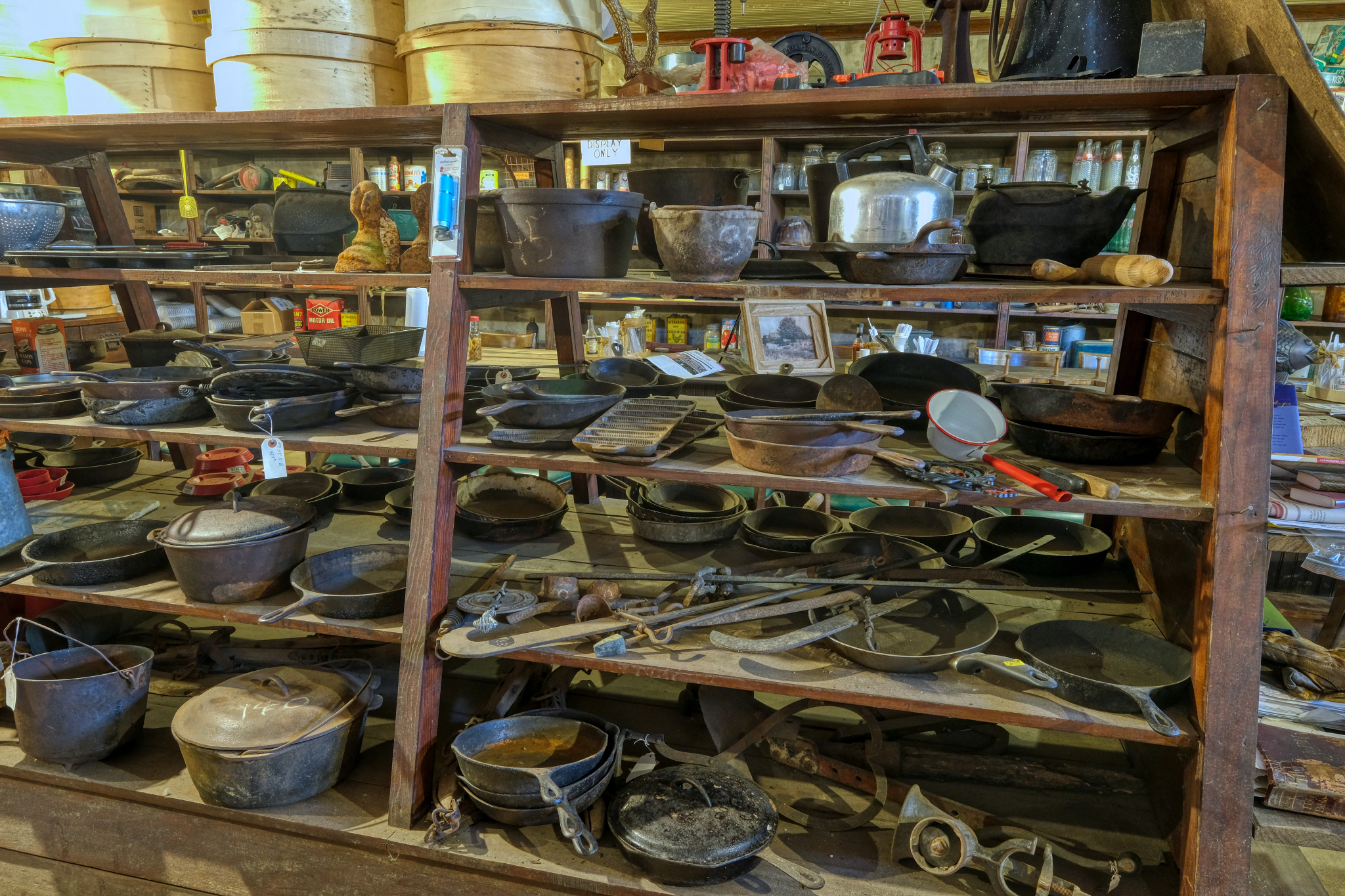 The dry goods isle was half merchandise and half museum display.
The dry goods isle was half merchandise and half museum display.
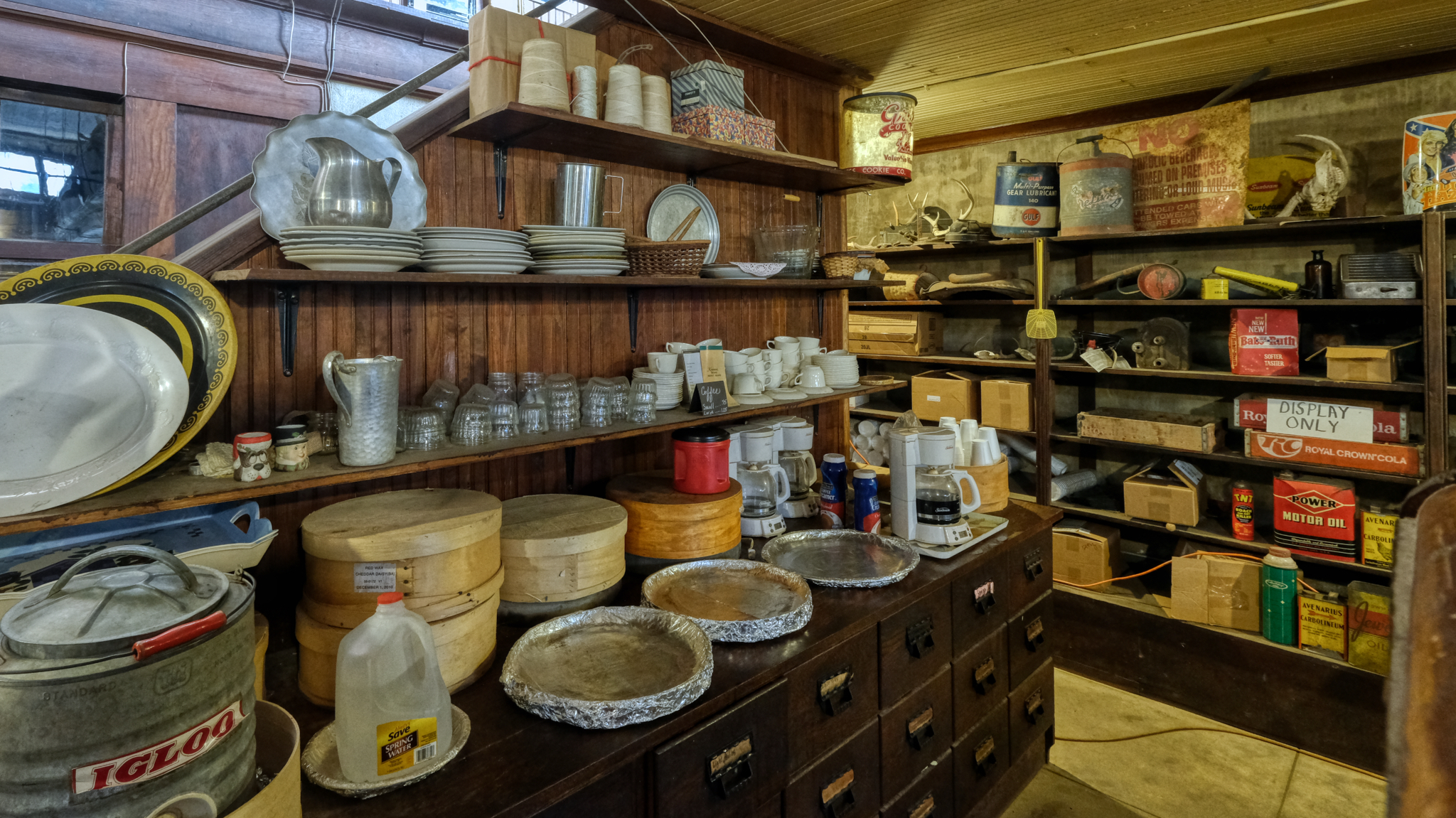 There was a small "kitchen" area in the back. Coffee, but it looked like we were either too late or too early for the cakes that go on the foil-covered trays.
There was a small "kitchen" area in the back. Coffee, but it looked like we were either too late or too early for the cakes that go on the foil-covered trays.
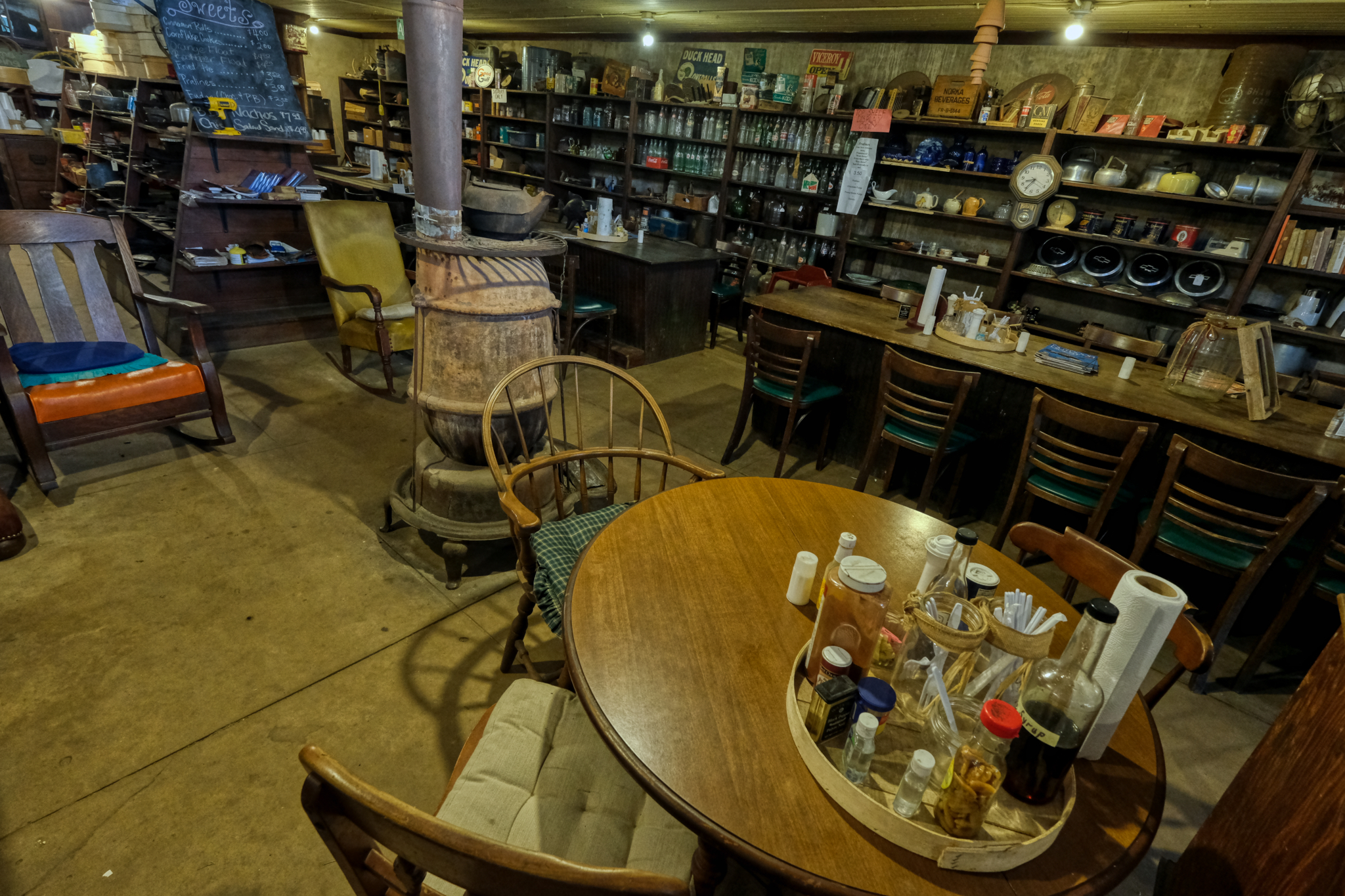 An inviting pot belly stove surrounded by the "eating area." I wondered if these seats filled up in the afternoon and evening with regulars who stop in to chat and for beer and snacks.
An inviting pot belly stove surrounded by the "eating area." I wondered if these seats filled up in the afternoon and evening with regulars who stop in to chat and for beer and snacks.
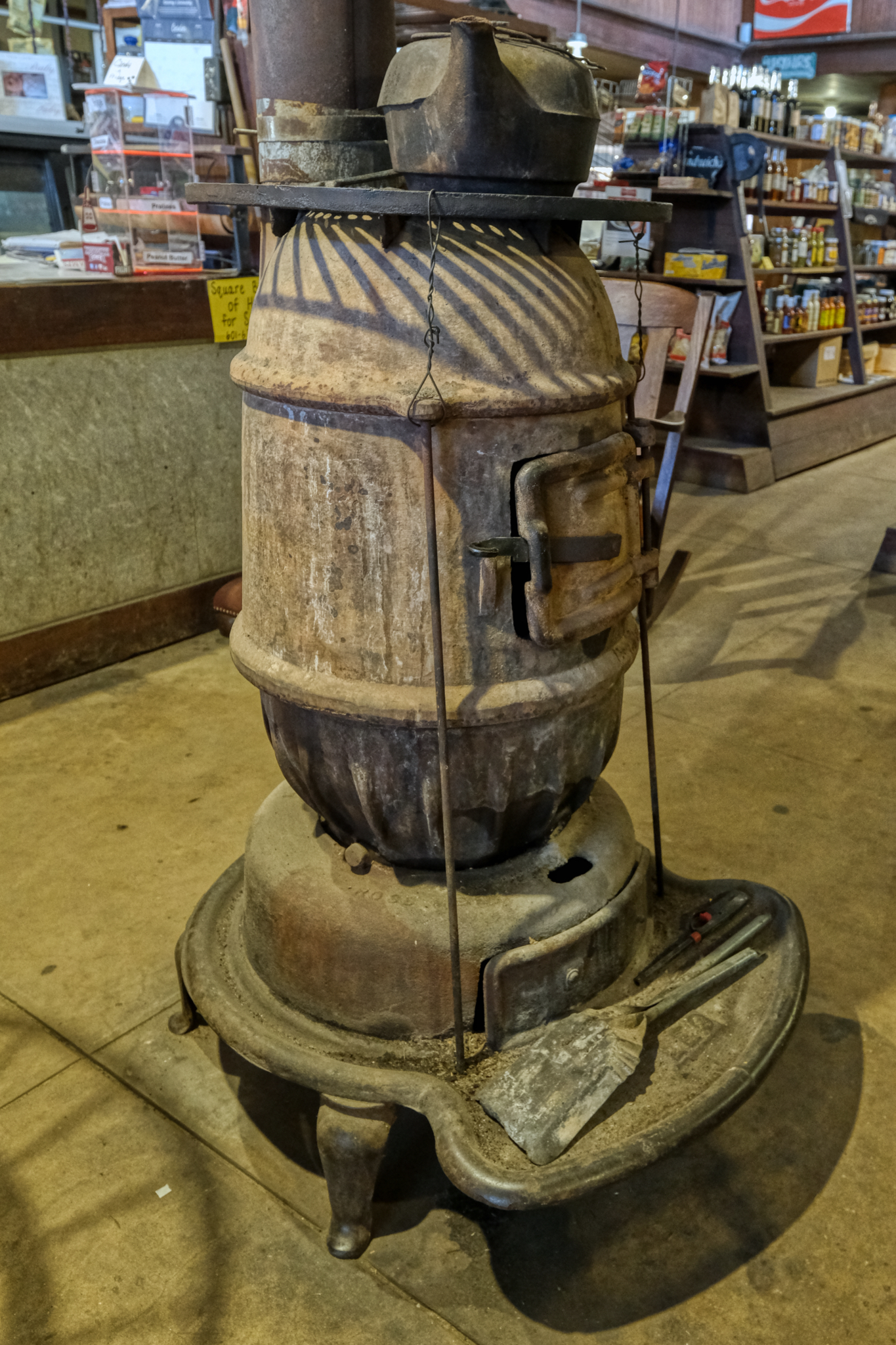 The pot belly stove was a work of art made of the patina of the passage of time.
The pot belly stove was a work of art made of the patina of the passage of time.
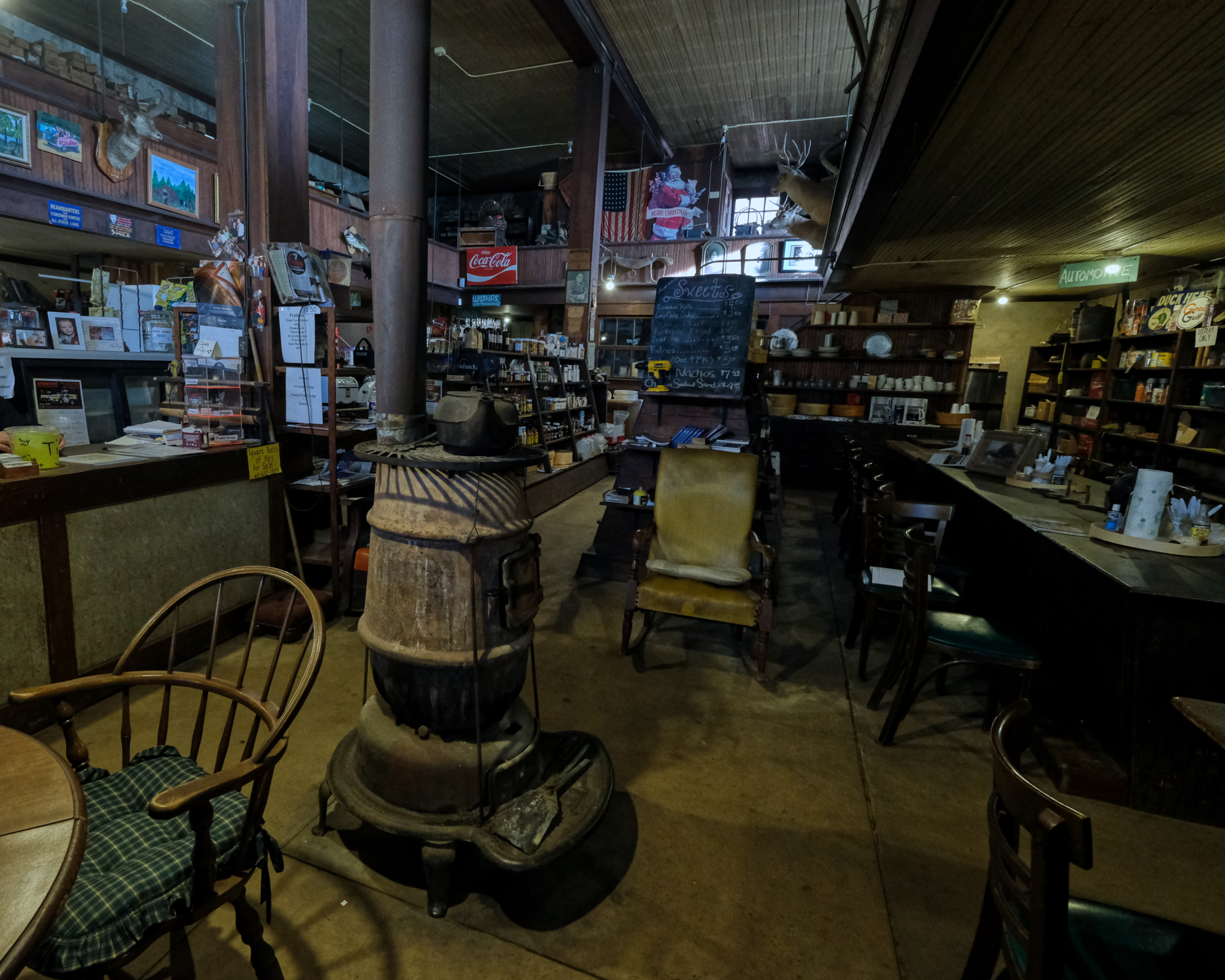 The pot belly stove stood in a place of prominence . . . in the center. It looked like it has been used right up into the present. It was early October, but not yet chilly in eastern Mississippi, so it had not been stoked on this day.
The pot belly stove stood in a place of prominence . . . in the center. It looked like it has been used right up into the present. It was early October, but not yet chilly in eastern Mississippi, so it had not been stoked on this day.
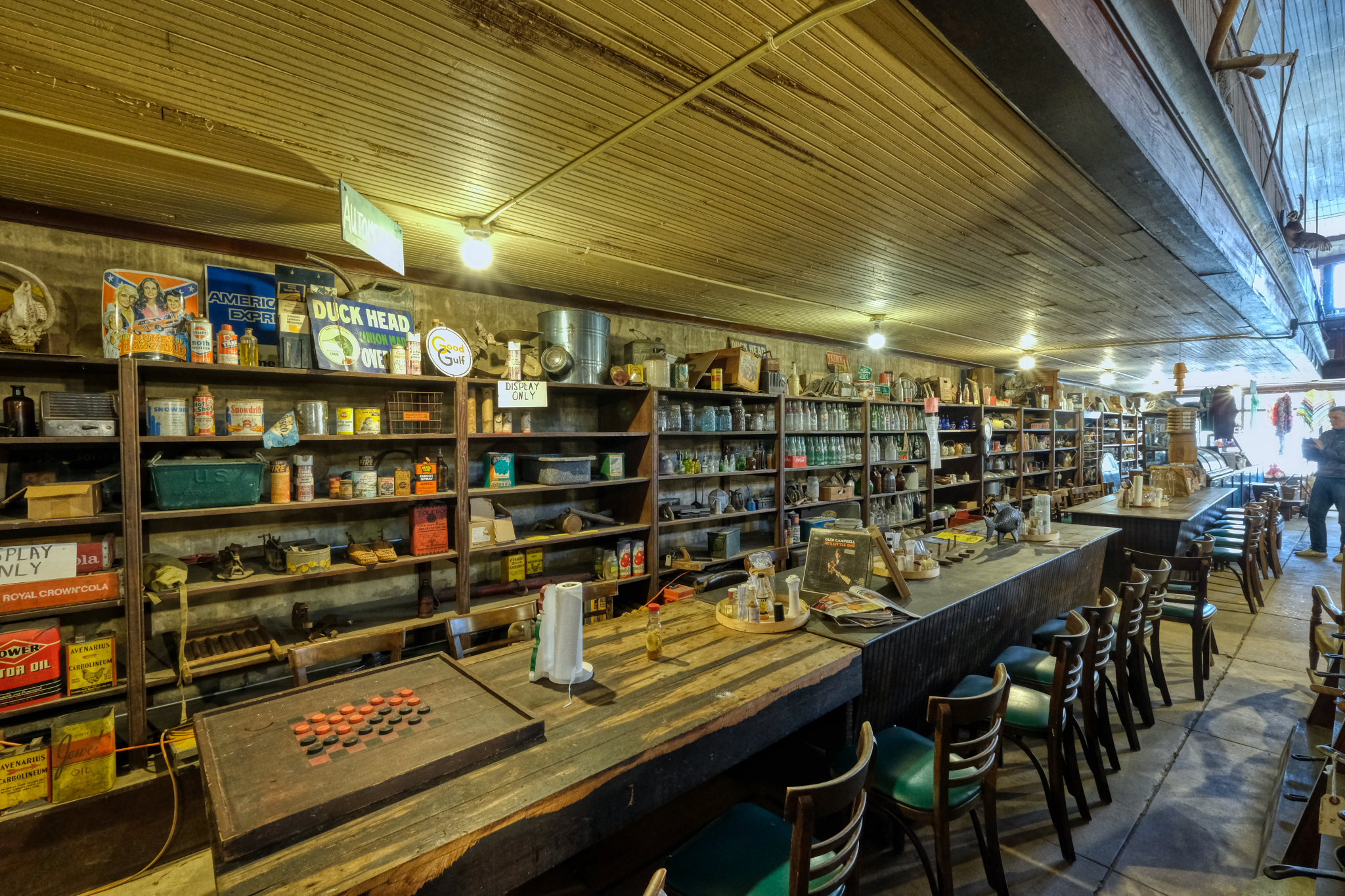 The long side wall was was reserved for the "display only" shelving.
The long side wall was was reserved for the "display only" shelving.
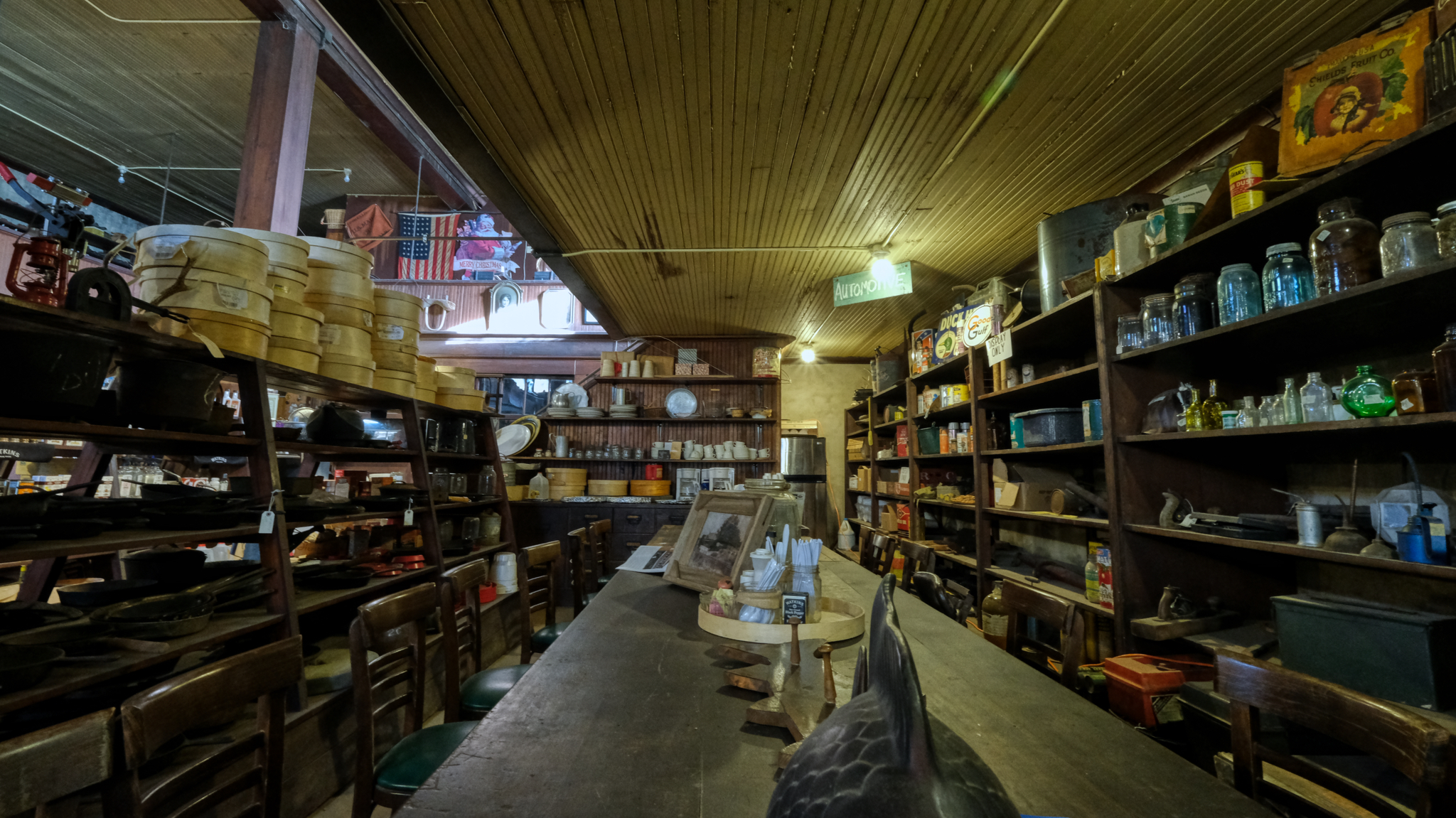 I walked around the old store in big loops taking photos and being stunned by the disheveled beauty of this space.
I walked around the old store in big loops taking photos and being stunned by the disheveled beauty of this space.
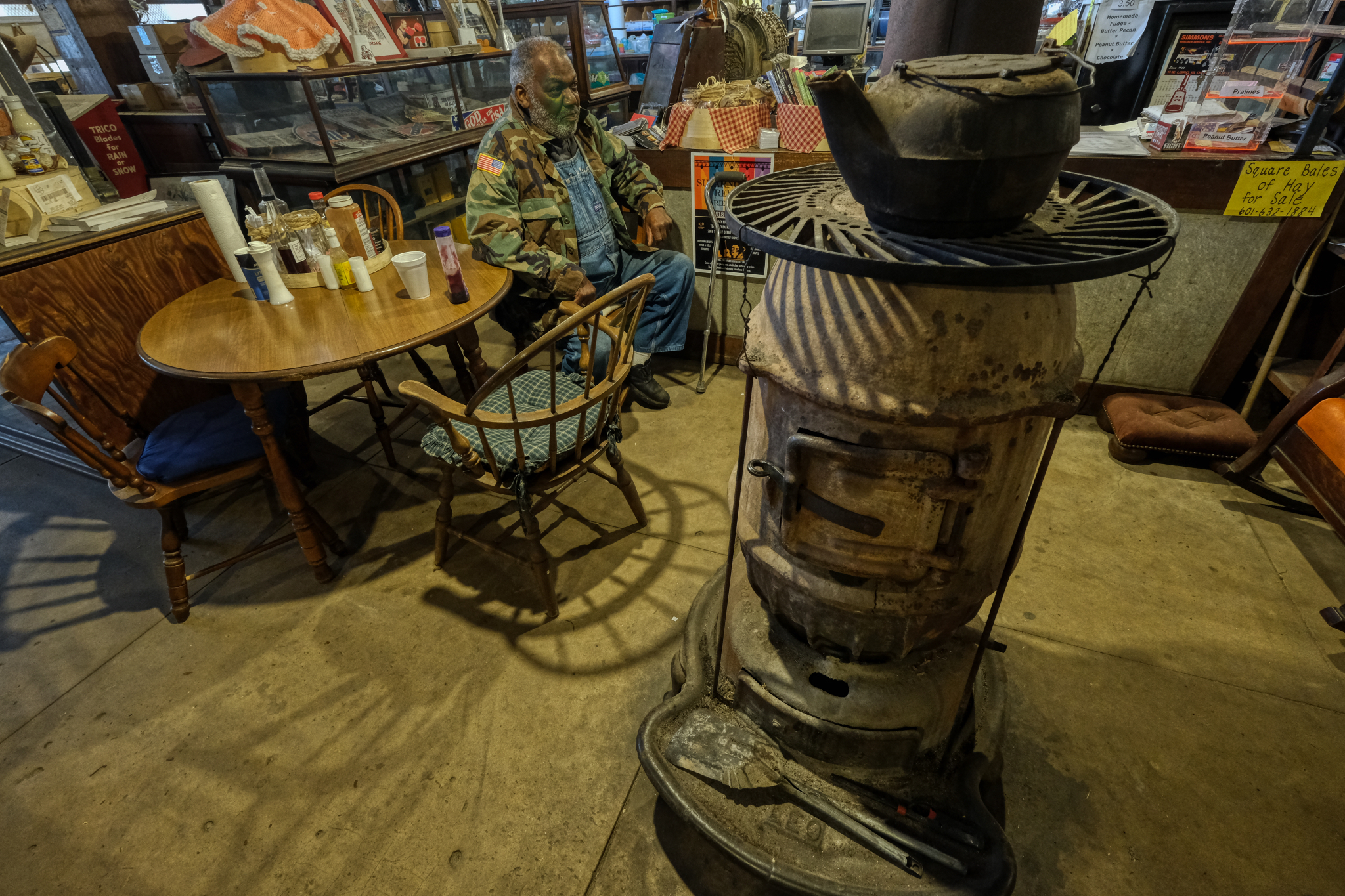 I hadn't seen or heard him enter, but at some point an old African American man came in and made himself at home. He and the proprietor exchanged some friendly conversation in low, almost silent tones.
I hadn't seen or heard him enter, but at some point an old African American man came in and made himself at home. He and the proprietor exchanged some friendly conversation in low, almost silent tones.
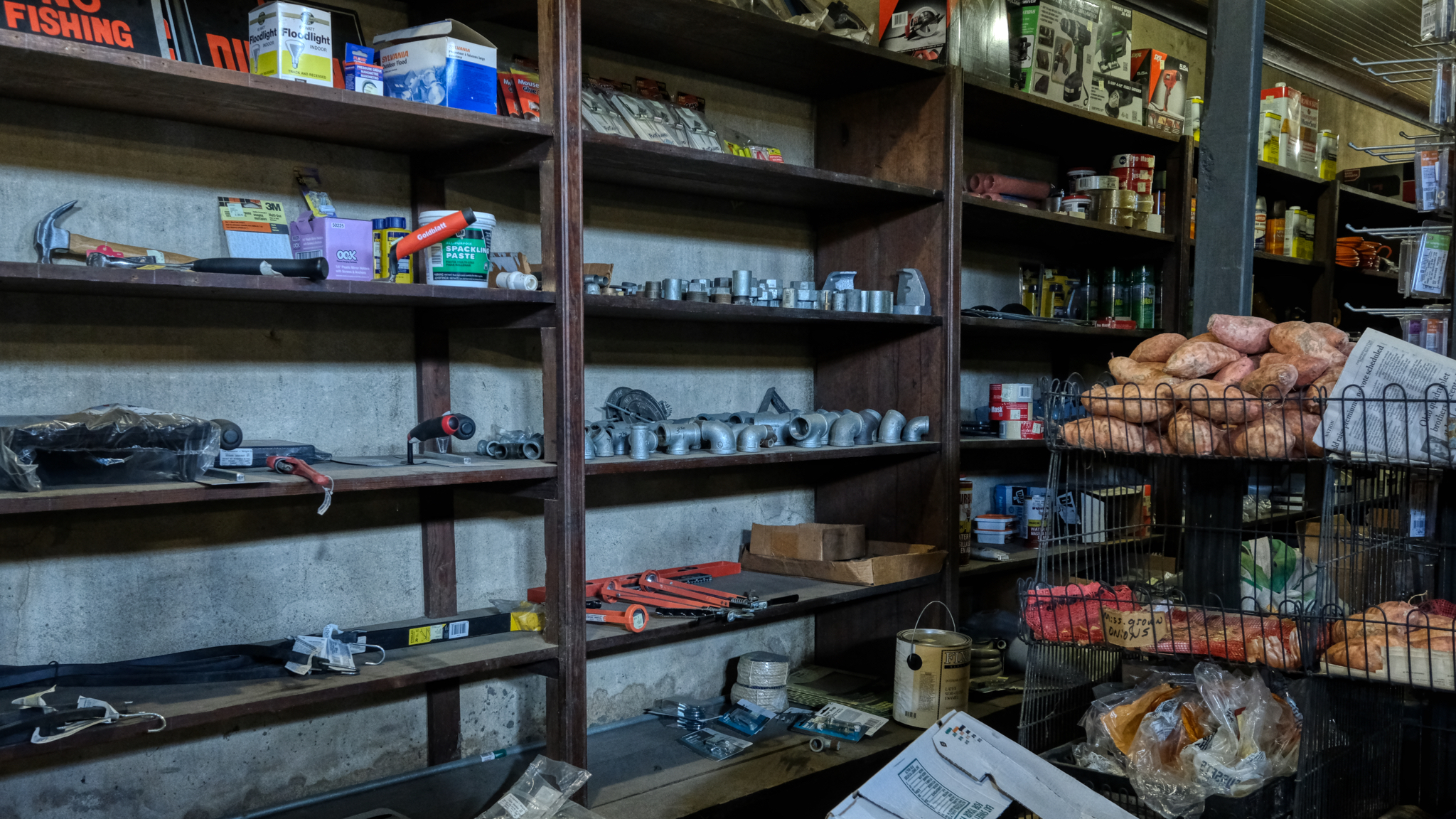 An "array of mixed plumbing supplies" and sweet potatoes.
An "array of mixed plumbing supplies" and sweet potatoes.
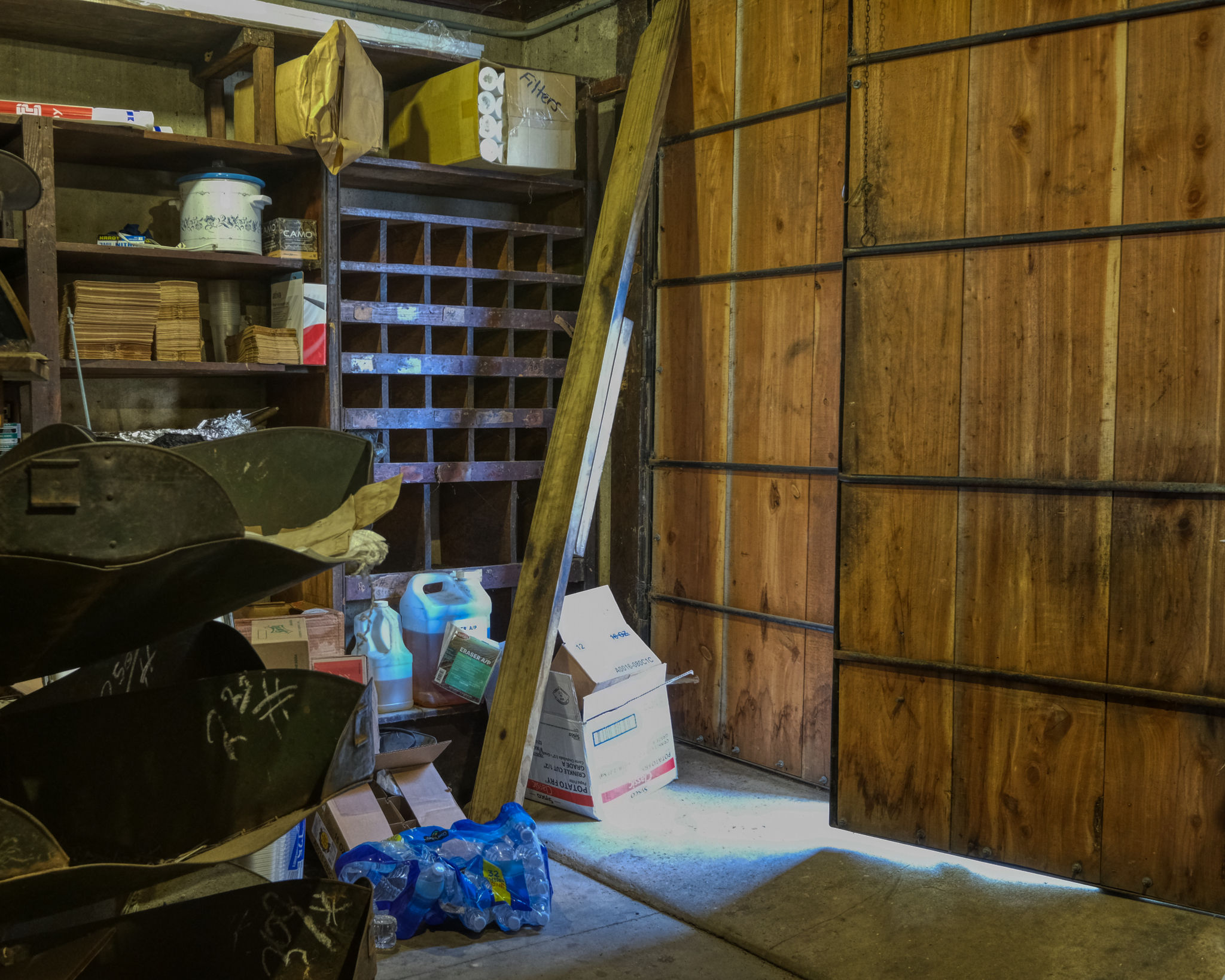 "May I take some photos out back," I asked. "Go right ahead," he replied as he pointed to this door next to the nail bins.
"May I take some photos out back," I asked. "Go right ahead," he replied as he pointed to this door next to the nail bins.
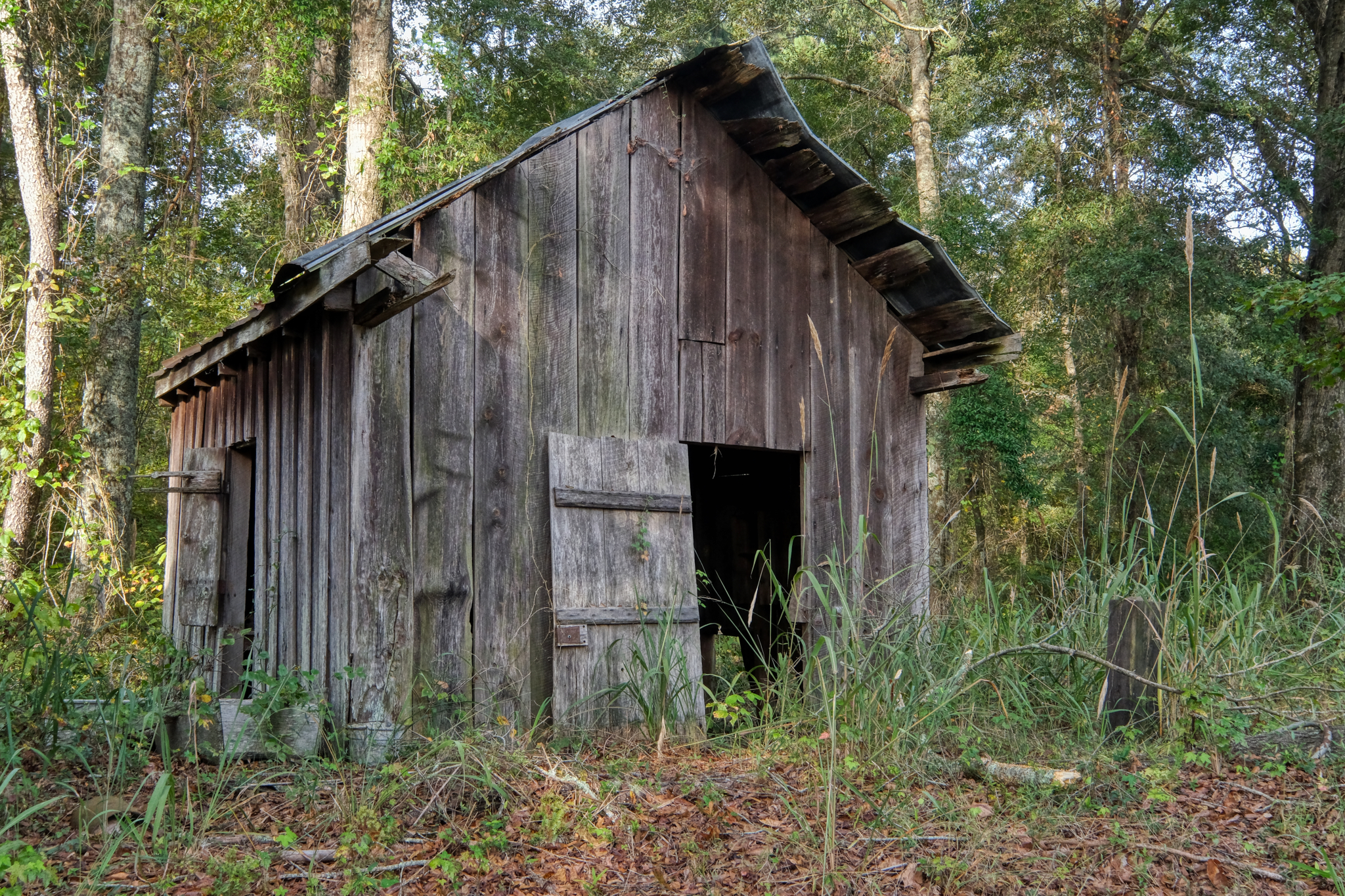 Nice. A fine old, weathered back yard shed.
Nice. A fine old, weathered back yard shed.
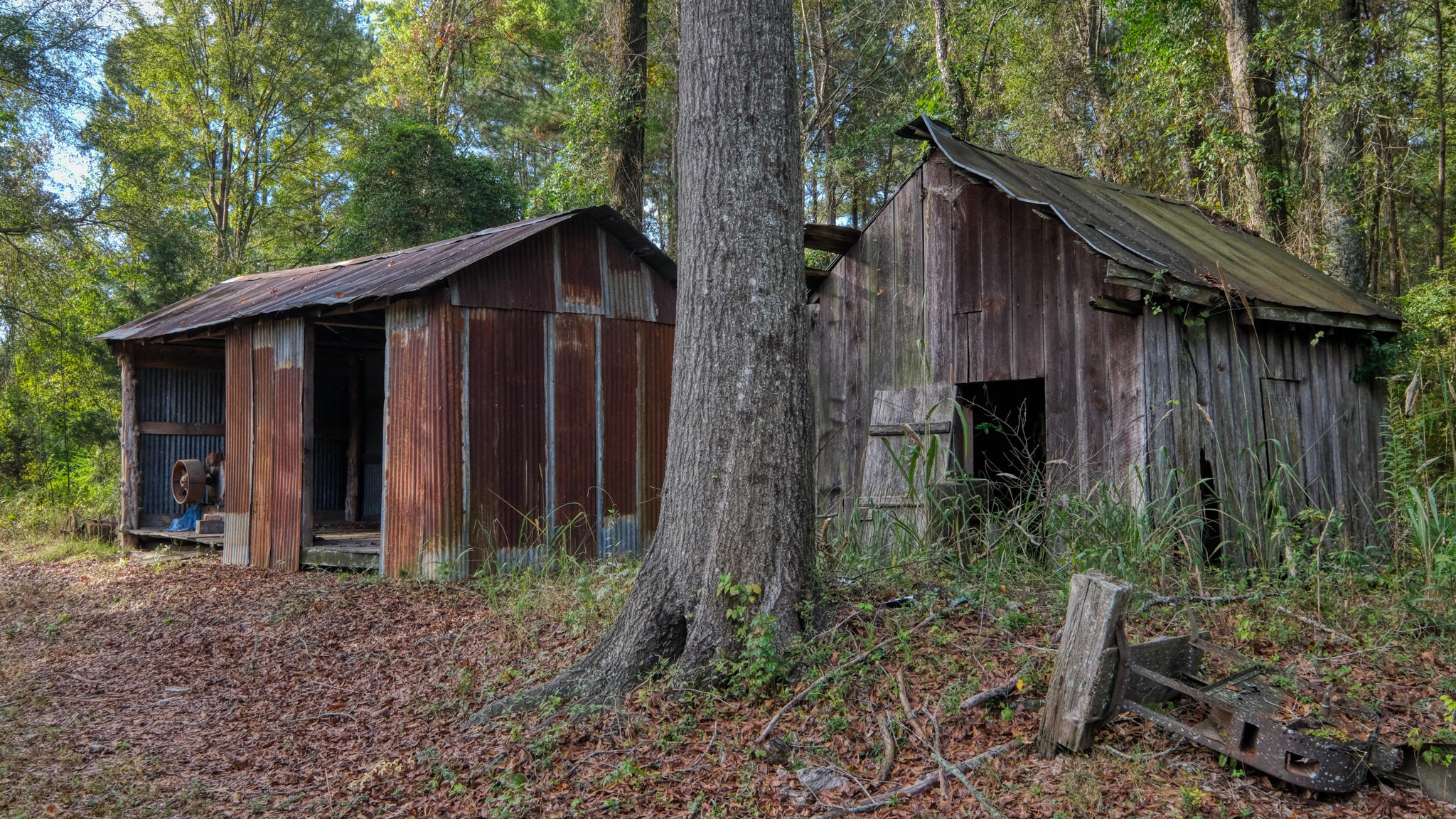 I love old rusted corrugation . . . I live for dilapidation and rusted corrugation . . .
I love old rusted corrugation . . . I live for dilapidation and rusted corrugation . . .
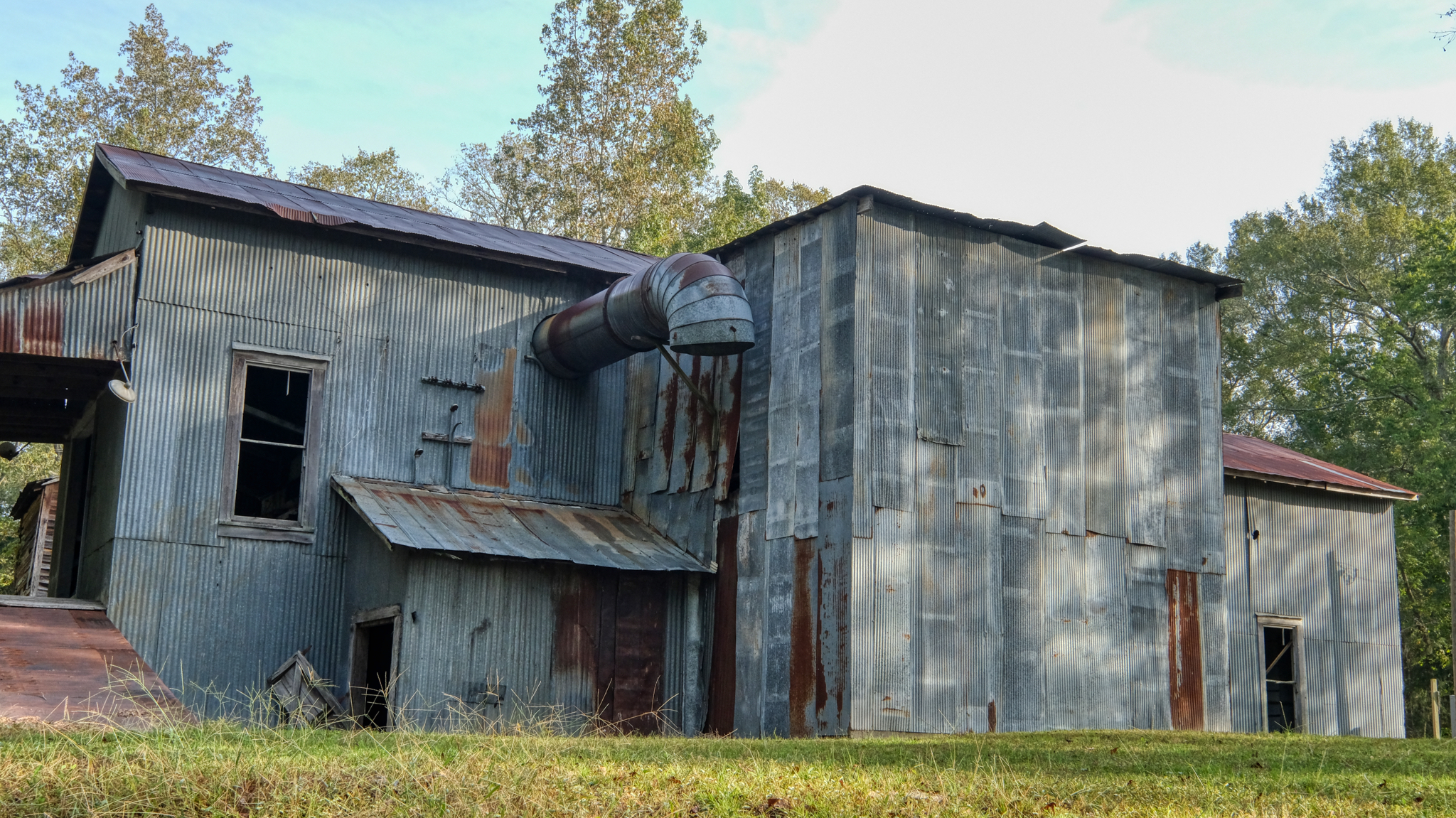 There was also an old "mill" of some kind behind the store. I decided to snoop around a little. An absolutely gorgeous corrugated building.
There was also an old "mill" of some kind behind the store. I decided to snoop around a little. An absolutely gorgeous corrugated building.
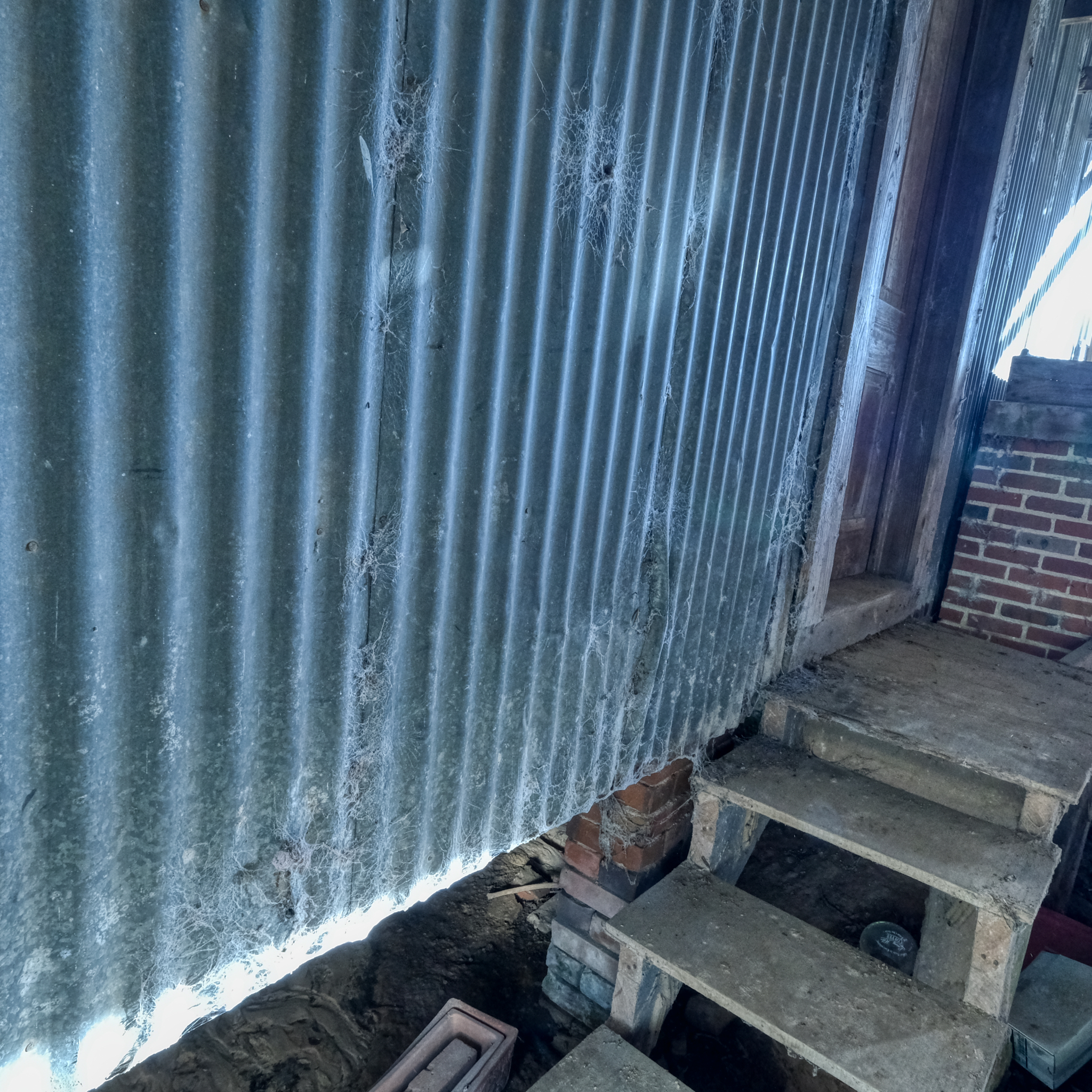 This door to the mill was locked . . . but what a photo!
This door to the mill was locked . . . but what a photo!
 This door was locked from the inside.
This door was locked from the inside.
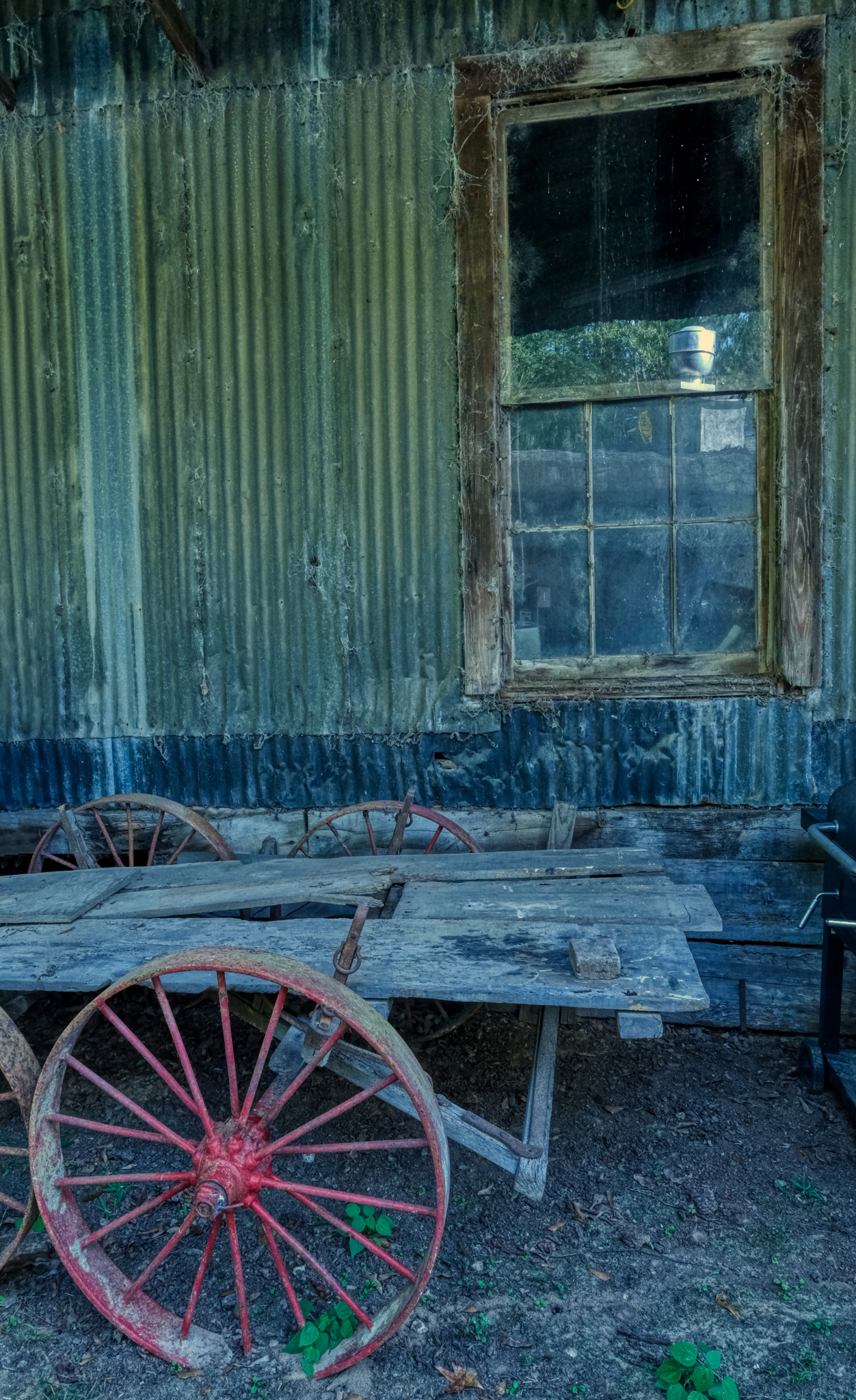 This image! The things in this photo were made, manufactured, built, and assembled by somebody working somewhere at some real time and place in the past. That cart was made for the purpose of moving around more than one man can hold at once. It is also a tool of work . . . it was the focus of labor for some person as a part of their paid employment, day after day.
This image! The things in this photo were made, manufactured, built, and assembled by somebody working somewhere at some real time and place in the past. That cart was made for the purpose of moving around more than one man can hold at once. It is also a tool of work . . . it was the focus of labor for some person as a part of their paid employment, day after day.
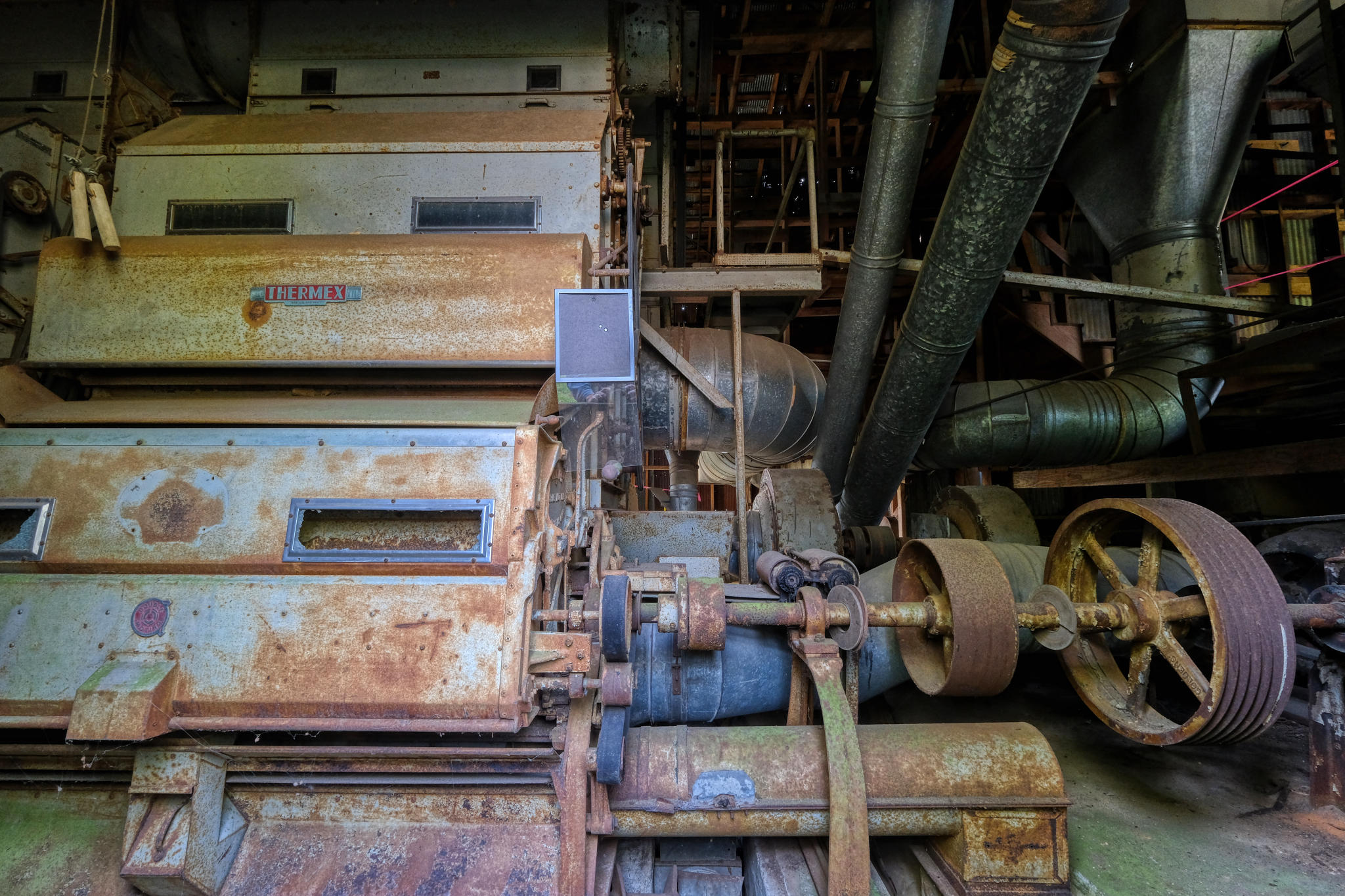 At last I found a large opened door on the side of the mill. This machinery was inside . . . I snooped around more inside, but for the life of me, I could not figure out what this machinery was used for. I even did a Google search . . . my guess was that it was a corn grinding operation at some time in the past.
At last I found a large opened door on the side of the mill. This machinery was inside . . . I snooped around more inside, but for the life of me, I could not figure out what this machinery was used for. I even did a Google search . . . my guess was that it was a corn grinding operation at some time in the past.
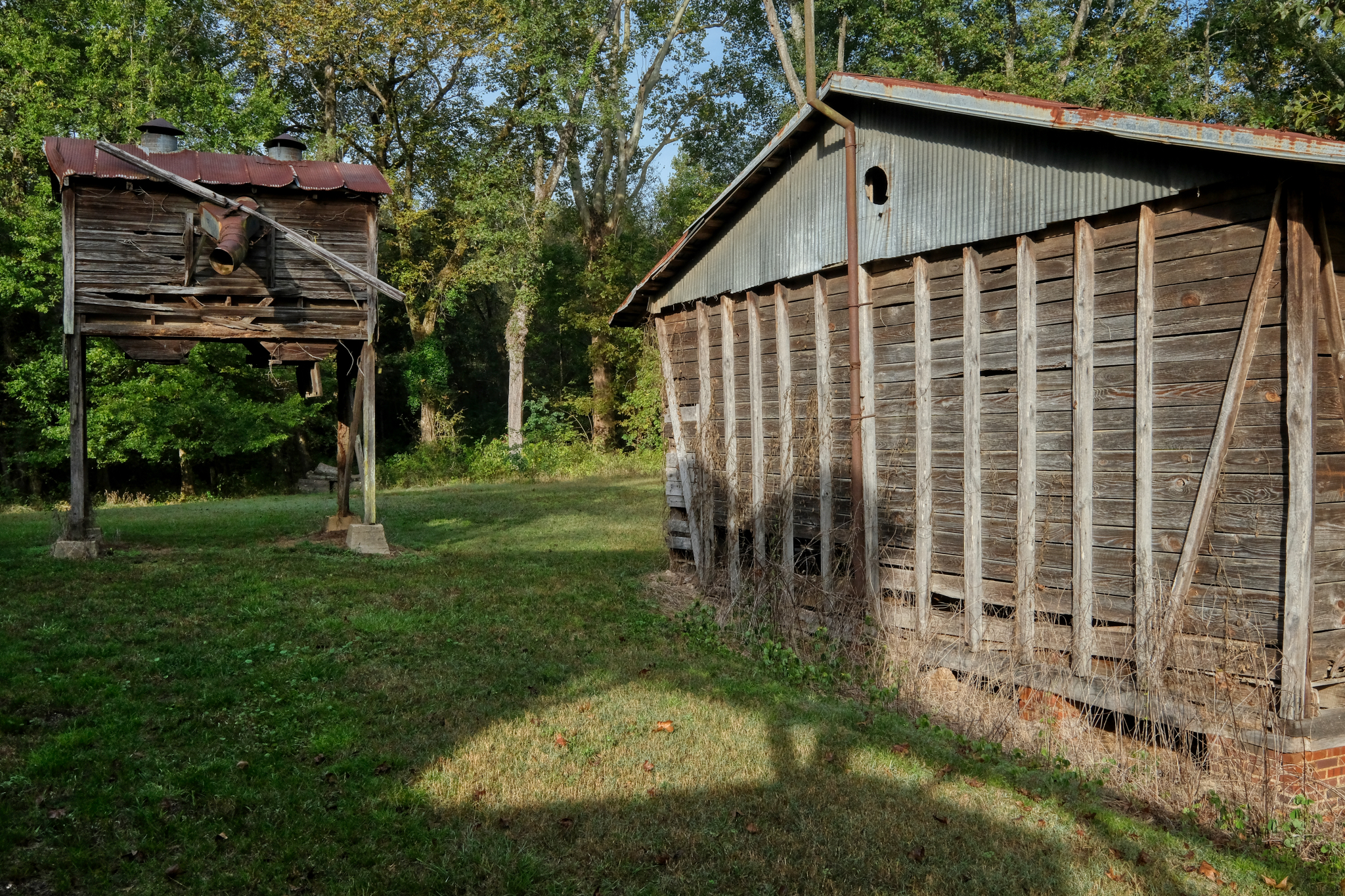 These structures next to the mill were hints as to the purpose of the mill. One looks like a 'corn crib,' but I am not sure.
These structures next to the mill were hints as to the purpose of the mill. One looks like a 'corn crib,' but I am not sure.
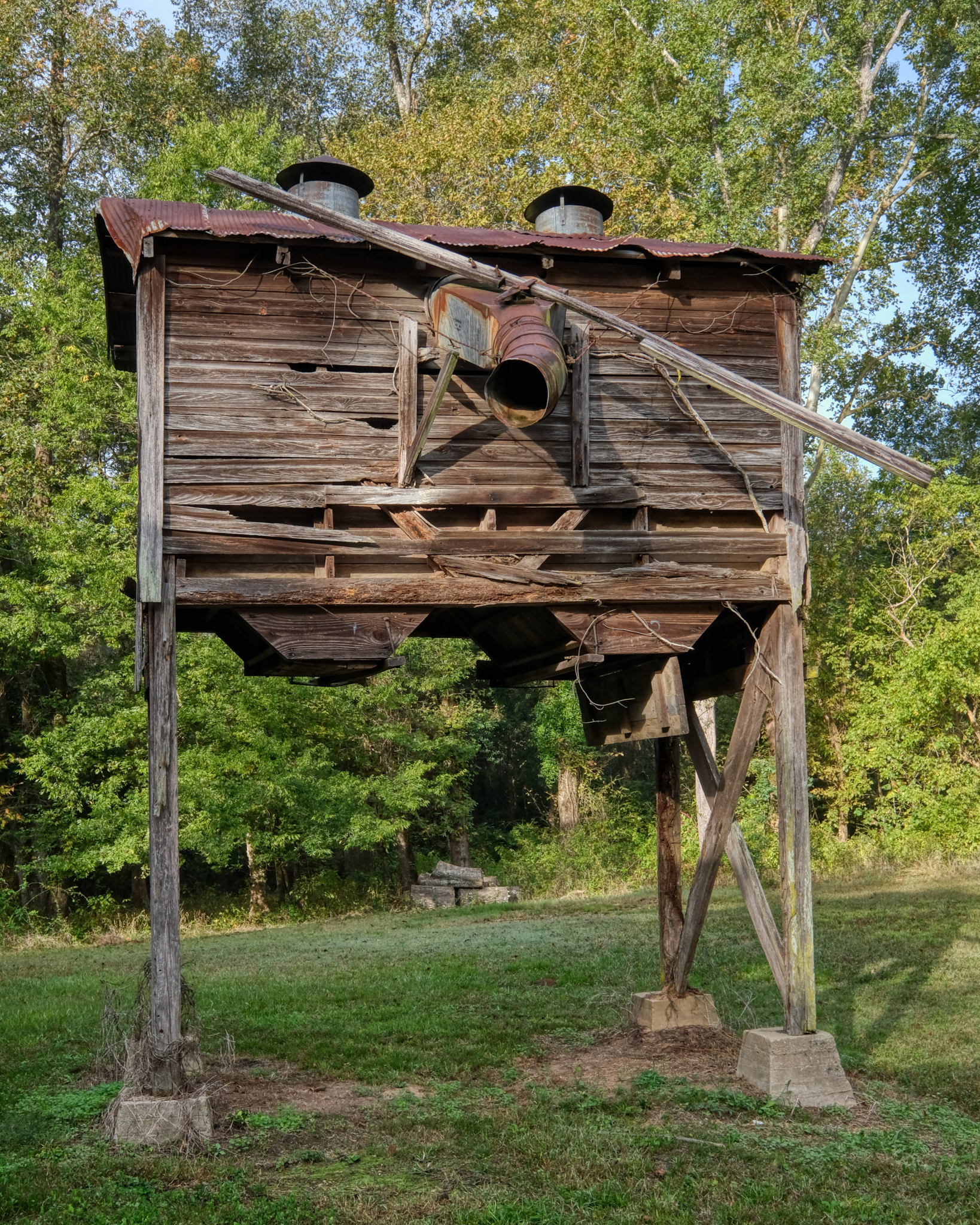 Was ground corn meal blown up into this hopper for loading into trucks or barrels? I don't know, but I loved the aged patina of the weathered wood . . .
Was ground corn meal blown up into this hopper for loading into trucks or barrels? I don't know, but I loved the aged patina of the weathered wood . . .
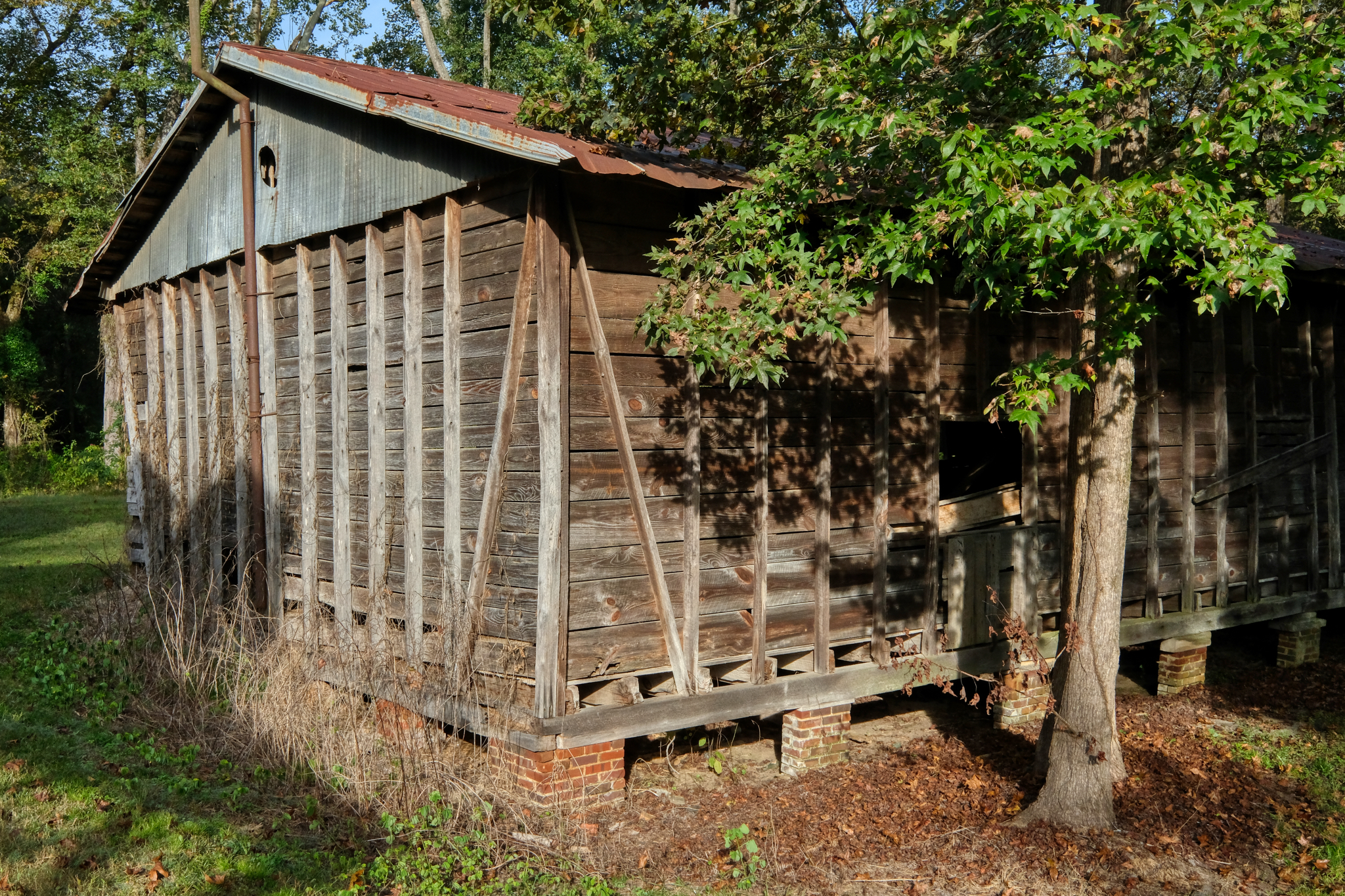 The sun broke through a thin cloud cover and the light became wonderful.
The sun broke through a thin cloud cover and the light became wonderful.
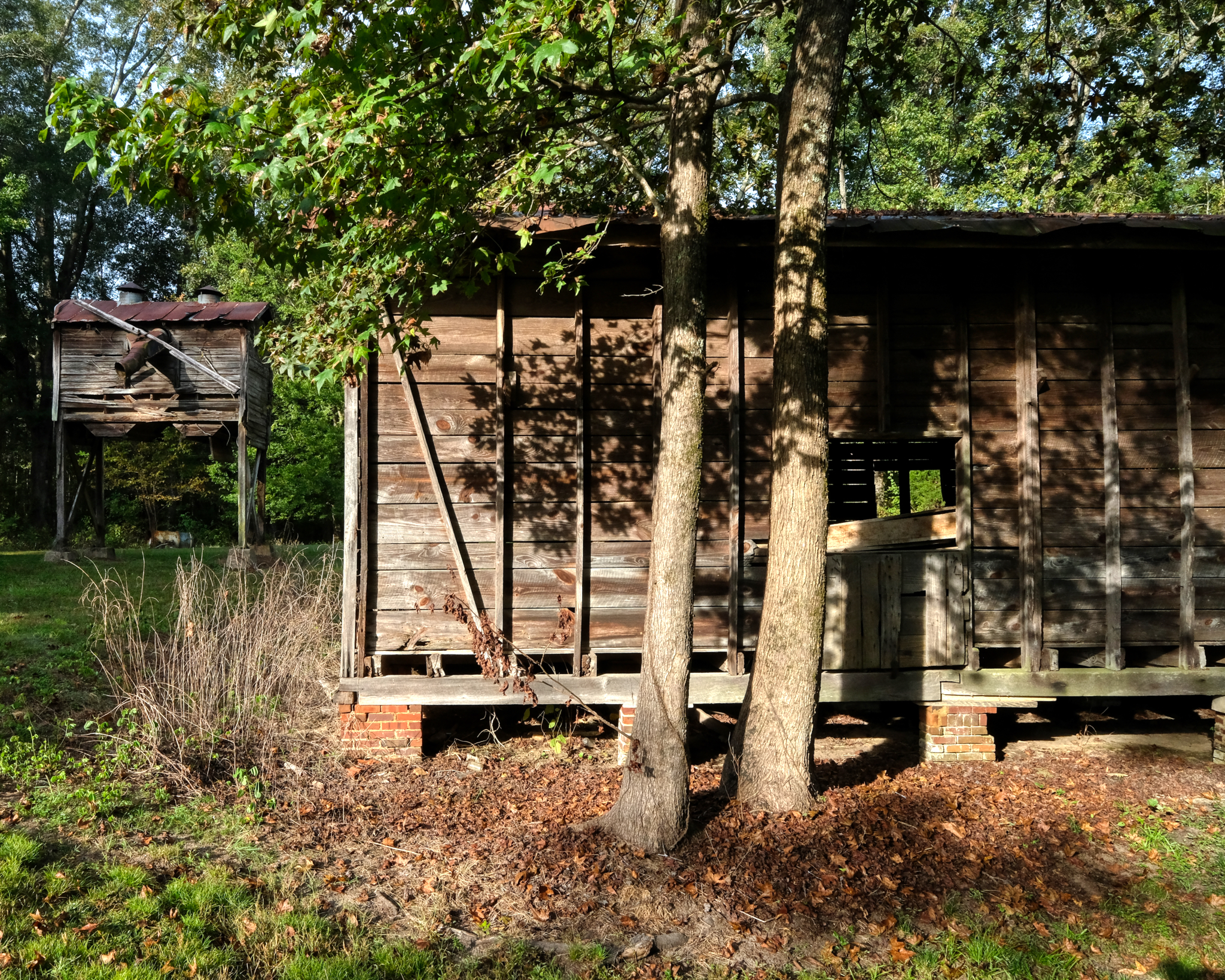 Perhaps rooms for the hired seasonal mill workers?
Perhaps rooms for the hired seasonal mill workers?
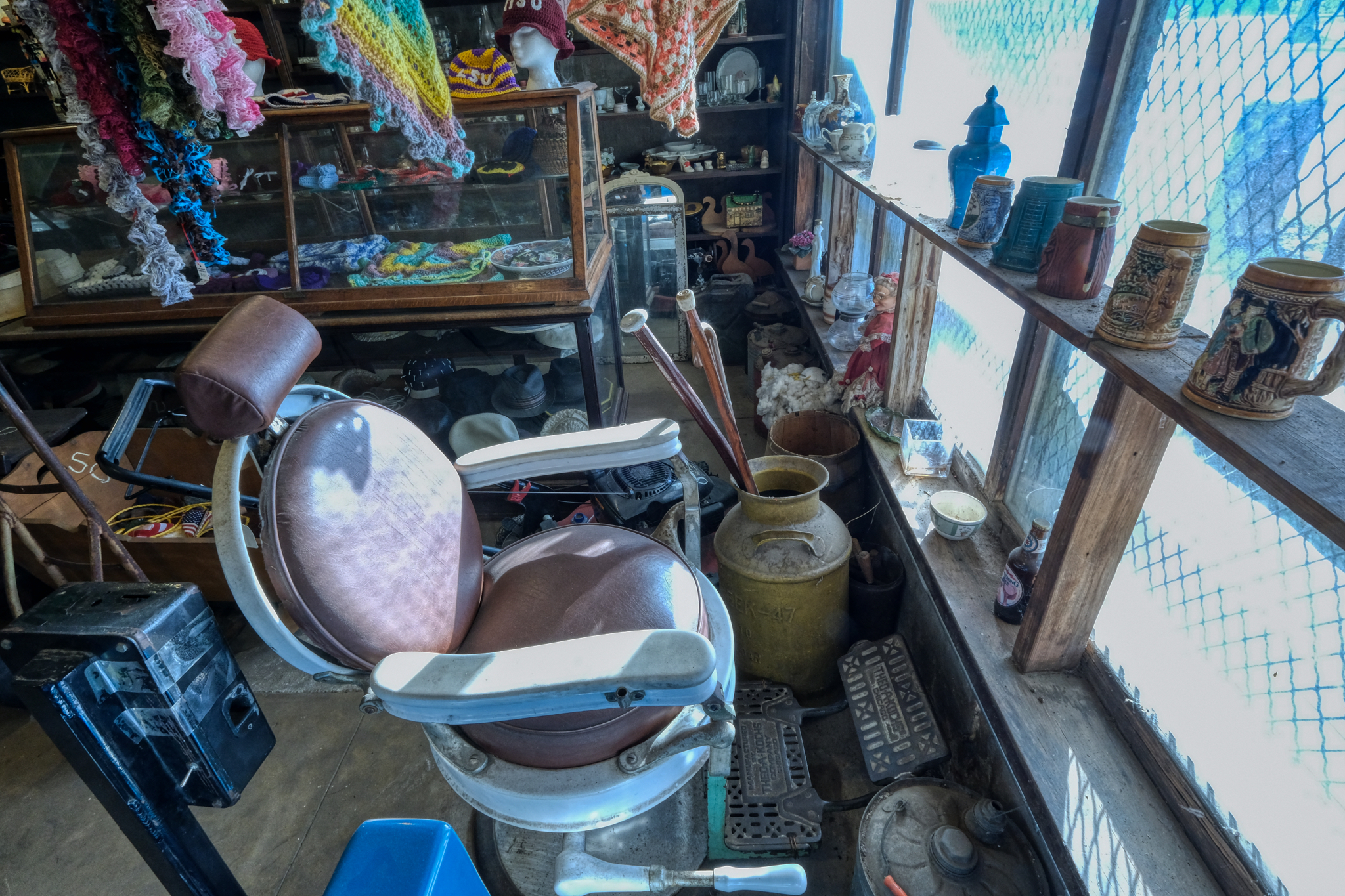 I hadn't noticed this barber chair on the way in . . . but . . . I could have spent all day in that old country store and its outbuildings . . . but Bud and I had to hit the road. We were heading for a place of great historical significance; Selma, Alabama, a place I have always wanted to make a pilgrimage.
I hadn't noticed this barber chair on the way in . . . but . . . I could have spent all day in that old country store and its outbuildings . . . but Bud and I had to hit the road. We were heading for a place of great historical significance; Selma, Alabama, a place I have always wanted to make a pilgrimage.
A Petchaburi, Thailand 'Photo Ramble'
 Wednesday, March 17, 2021 at 4:03PM
Wednesday, March 17, 2021 at 4:03PM A 'photo ramble' blog entry in four parts: The Old Town of Petchaburi, The Buddhist Temples (Wats) of Petchaburi Town, Two Old Fishing Ports in Petchaburi Province, and Salt Pan Workers in Petchaburi Province.
PART 1: THE OLD TOWN
 Petchaburi is a provincial capital located between Bangkok and the beach towns of Cha Am and Hua Hin. It is a very small city that I pass by whenever I go to Hua Hin for a beach getaway from the pace of urban Bangkok . . . but I never stop to see what is there . . . until my old friend, John Stiles, and I decided to take a "photo ramble" there last week. [The 11th century Wat Mahathat Worawihan in the background.]
Petchaburi is a provincial capital located between Bangkok and the beach towns of Cha Am and Hua Hin. It is a very small city that I pass by whenever I go to Hua Hin for a beach getaway from the pace of urban Bangkok . . . but I never stop to see what is there . . . until my old friend, John Stiles, and I decided to take a "photo ramble" there last week. [The 11th century Wat Mahathat Worawihan in the background.]
 Petchaburi is only two hours away on good divided highway from home . . . and seemingly in a different decade.
Petchaburi is only two hours away on good divided highway from home . . . and seemingly in a different decade.
 We arrived and parked, as we planned to spend the day on foot. At first look, Petchaburi looks like a lot of old Thai market towns. An old, somewhat worn out downtown area with lots of 'street life' - civic culture. In Thai, Phetchaburi means "city of diamonds".
We arrived and parked, as we planned to spend the day on foot. At first look, Petchaburi looks like a lot of old Thai market towns. An old, somewhat worn out downtown area with lots of 'street life' - civic culture. In Thai, Phetchaburi means "city of diamonds".
 There are some interesting old buildings with a lot of character . . .
There are some interesting old buildings with a lot of character . . .
 . . . and ample material for one of my favorite photographic subjects: old door portraits.
. . . and ample material for one of my favorite photographic subjects: old door portraits.
 A magnificent old door with its life story written all over it.
A magnificent old door with its life story written all over it.
 Old Thai market towns have a special dilapidated charm I really enjoy.
Old Thai market towns have a special dilapidated charm I really enjoy.
 A corner coffee shop. We stopped here for iced coffee with milk. Very good.
A corner coffee shop. We stopped here for iced coffee with milk. Very good.
 The Petchaburi clothing shops spill right out onto the sidewalks.
The Petchaburi clothing shops spill right out onto the sidewalks.
 Buddhist votive offerings shops near the main city center Wat (temple).
Buddhist votive offerings shops near the main city center Wat (temple).
 These old wooden shop houses are slowly disappearing in Thailand's larger towns and cities.
These old wooden shop houses are slowly disappearing in Thailand's larger towns and cities.
 Our casual stroll brought us into an area of old alleys and a wet market.
Our casual stroll brought us into an area of old alleys and a wet market.
 We were literally stopped in our tracks when we rounded a corner into this narrow alley . . . and found a street full of art. Fantastic!
We were literally stopped in our tracks when we rounded a corner into this narrow alley . . . and found a street full of art. Fantastic!
 This was such a whimsical painting, made more so by the actual, real door knob that had been mounted in the wall!
This was such a whimsical painting, made more so by the actual, real door knob that had been mounted in the wall!
 The wall art was wonderfully integrated into the structures of the alley.
The wall art was wonderfully integrated into the structures of the alley.
 Dragon art . . .
Dragon art . . .
 A drayman starting his rounds in front of a fish mural. Wonderful!
A drayman starting his rounds in front of a fish mural. Wonderful!
 There was a 'missing building' in the art alley . . . no problem: paint the revered former King of Thailand on the exposed end . . .
There was a 'missing building' in the art alley . . . no problem: paint the revered former King of Thailand on the exposed end . . .
 There seemed to be a "pet" theme across much of the alley art work.
There seemed to be a "pet" theme across much of the alley art work.
 Scrumptious and stylish . . .
Scrumptious and stylish . . .
 A wall of sweet kitties.
A wall of sweet kitties.
 None of this Petchaburi alley art was signed, but we guessed that these two lovely people were the artists.
None of this Petchaburi alley art was signed, but we guessed that these two lovely people were the artists.
 Refreshed with Art, we walked on through the alleys of old Petchaburi town.
Refreshed with Art, we walked on through the alleys of old Petchaburi town.
 There were many very old shops in Peetchaburi . . . from a time before big box franchises and bar code stock control.
There were many very old shops in Peetchaburi . . . from a time before big box franchises and bar code stock control.
 I had the feeling that this woman has been sitting in this auto parts shop for a very, very long time.
I had the feeling that this woman has been sitting in this auto parts shop for a very, very long time.
 A city fabric shop . . . with cushions and plastic door mats.
A city fabric shop . . . with cushions and plastic door mats.
 My friend John among the basketry taking candid street photos.
My friend John among the basketry taking candid street photos.
 Our wanderings brought us to the Petchaburi River, which bisects the city.
Our wanderings brought us to the Petchaburi River, which bisects the city.
 We stopped here for a delicious lunch of noodle soup. Gotta love Thai street food!
We stopped here for a delicious lunch of noodle soup. Gotta love Thai street food!
 We left the old town and its interesting old alleys to explore the many Wats.
We left the old town and its interesting old alleys to explore the many Wats.
PART 2: THE BUDDHIST TEMPLES
 Wat Khoi on the outskirts of Petchaburi, near the hilltop Wat.
Wat Khoi on the outskirts of Petchaburi, near the hilltop Wat.
 Wat Khoi is a very special and architecturally unique Wat.
Wat Khoi is a very special and architecturally unique Wat.
 Wat Khoi is in the shadow of the Petchaburi hilltop Phra Nakhon Khiri (Khao Wang).
Wat Khoi is in the shadow of the Petchaburi hilltop Phra Nakhon Khiri (Khao Wang).
 There is a very beautiful Kuan Yin statue in the garden of Wat Khoi.
There is a very beautiful Kuan Yin statue in the garden of Wat Khoi.
 Wat Khoi had these amazing. worked metal bas reliefs of Thai people across a wall.
Wat Khoi had these amazing. worked metal bas reliefs of Thai people across a wall.
 The 500 year old Wat Sa-Bua was once a center of Buddhist evangelism in southern Thailand.
The 500 year old Wat Sa-Bua was once a center of Buddhist evangelism in southern Thailand.
 Two kind Wat Sa-Bua monks opened up the ancient Wat for us to take photos. Thank you.
Two kind Wat Sa-Bua monks opened up the ancient Wat for us to take photos. Thank you.
 This black Buddha statue is said to be even older than the Wat, +500 years old.
This black Buddha statue is said to be even older than the Wat, +500 years old.
 An amazing tree on the Wat grounds . . . and a monkey!
An amazing tree on the Wat grounds . . . and a monkey!
 Wat Sa-Bua is built up against a wooded hill with many monkeys scampering all over!
Wat Sa-Bua is built up against a wooded hill with many monkeys scampering all over!
 This ornery fellow let me know I was getting close enough.
This ornery fellow let me know I was getting close enough.
 The rocky hillside behind Wat Sa-Bua haad fantastic old chedis.
The rocky hillside behind Wat Sa-Bua haad fantastic old chedis.
 A beautiful and highly revered chedi.
A beautiful and highly revered chedi.
 We enjoyed our time at Wat Sa-Bua, but walked on up the road to see more Wats nearby . . .
We enjoyed our time at Wat Sa-Bua, but walked on up the road to see more Wats nearby . . .
 The area near the hill attracted many monkeys . . . some ventured out into the nearby neighborhood on a monkey elevated highway!
The area near the hill attracted many monkeys . . . some ventured out into the nearby neighborhood on a monkey elevated highway!
 Yep, just a monkey hanging out on your roof.
Yep, just a monkey hanging out on your roof.
 We drove up a small drive along the hillside hoping it would take us to the uppermost temples, but the road did not go all the way up. No problem, we found Wat Rattana Trai on the way.
We drove up a small drive along the hillside hoping it would take us to the uppermost temples, but the road did not go all the way up. No problem, we found Wat Rattana Trai on the way.
 There was a marvelous old Wat at this hillside Buddhist compound.
There was a marvelous old Wat at this hillside Buddhist compound.
 The beautiful arches and lighting made for perfect portraits. [Your humble photographer.]
The beautiful arches and lighting made for perfect portraits. [Your humble photographer.]
 John and I took turns posing for portraits.
John and I took turns posing for portraits.
 I appreciate old doors, but this one was very special . . .
I appreciate old doors, but this one was very special . . .
 Exquisitely inlaid door panels.
Exquisitely inlaid door panels.
 There were many chedis up the hillside behind Wat Rattana Trai. So interesting.
There were many chedis up the hillside behind Wat Rattana Trai. So interesting.
 We walked back out through the beautiful arches to move on to the city center . . . and the big Wat there.
We walked back out through the beautiful arches to move on to the city center . . . and the big Wat there.
 Near the center of the old city we found the gate to the 11th century Wat Mahathat Worawihan.
Near the center of the old city we found the gate to the 11th century Wat Mahathat Worawihan.
 This ancient Wat had amazing old structures as well as new buildings, like this one. These are living, contemporary places of devotion, not abandoned museums.
This ancient Wat had amazing old structures as well as new buildings, like this one. These are living, contemporary places of devotion, not abandoned museums.
 And we were not disappointed in the ancient temples still in perfect repair. So beautiful.
And we were not disappointed in the ancient temples still in perfect repair. So beautiful.
 Lovely artistry.
Lovely artistry.
 A large Buddha image in one of the many small temple buildings within the grounds of Wat Mahathat Worawihan.
A large Buddha image in one of the many small temple buildings within the grounds of Wat Mahathat Worawihan.
 The Wat temples were very crowed that day with devotees on Makha Bucha Day, a celebration of the ideal Buddhist community started by Buddha Gotama.
The Wat temples were very crowed that day with devotees on Makha Bucha Day, a celebration of the ideal Buddhist community started by Buddha Gotama.
 This temple entry . . . . stunning artistry.
This temple entry . . . . stunning artistry.
 Gorgeous Buddhist art.
Gorgeous Buddhist art.
 There were many monks around the Wat on this special day conducting blessings to the followers.
There were many monks around the Wat on this special day conducting blessings to the followers.
 This monk arrived at the temple and asked the 20 or so devotees to leave for a few minutes while he vacuumed.
This monk arrived at the temple and asked the 20 or so devotees to leave for a few minutes while he vacuumed.
 A 1000 year old window. Magnificent.
A 1000 year old window. Magnificent.
 An ancient founders' marker stone tablet.
An ancient founders' marker stone tablet.
 In our wanderings a round the Wat we came across this interesting building.
In our wanderings a round the Wat we came across this interesting building.
 Inside we found the monk meeting hall where the monks would gather every morning to take teachings from the Abbot.
Inside we found the monk meeting hall where the monks would gather every morning to take teachings from the Abbot.
PART 3: THE FISHING PORTS
 Rather than drive back to Bangkok, we spent the night just outside of Hua Hin. We woke up early to catch the sunrise along the road home. We stopped on this bridge over a canal for wonderful sunrise photos.
Rather than drive back to Bangkok, we spent the night just outside of Hua Hin. We woke up early to catch the sunrise along the road home. We stopped on this bridge over a canal for wonderful sunrise photos.
 Looking west along the same canal in the hot and humid misty Thai morning.
Looking west along the same canal in the hot and humid misty Thai morning.
 The next morning heading back to Bangkok along the tiny local farm roads, we happened upon two fishing ports, the first of which was very small.
The next morning heading back to Bangkok along the tiny local farm roads, we happened upon two fishing ports, the first of which was very small.
 I love these colorful Thai wooden fishing/squid boats.
I love these colorful Thai wooden fishing/squid boats.
 The first roadside fishing port was very small and seemingly very poor.
The first roadside fishing port was very small and seemingly very poor.
 These fishermen festoon their fishing boats' bows with colorful streamers for good luck.
These fishermen festoon their fishing boats' bows with colorful streamers for good luck.
 Where you have fishing boats and fish . . . you have cats.
Where you have fishing boats and fish . . . you have cats.
 There was a primitive charm to this old, unnamed fishing port.
There was a primitive charm to this old, unnamed fishing port.
 The second port we 'discovered', Moo 2 (Bang Tabun, Ban Laem District, Petchaburi Province), was an industrial fishing port. Bigger boats, lots of warehouses and clean, orderly docks.
The second port we 'discovered', Moo 2 (Bang Tabun, Ban Laem District, Petchaburi Province), was an industrial fishing port. Bigger boats, lots of warehouses and clean, orderly docks.
 A very busy port with boats coming and going all the time.
A very busy port with boats coming and going all the time.
 A delightful nautical scene.
A delightful nautical scene.
 Industrial squid boats with their outrigger bright light booms folded in. They catch squid by putting out very bright amber or green lights to lure the squid to the surface where the deck crew scoops them up with net scoops on long poles.
Industrial squid boats with their outrigger bright light booms folded in. They catch squid by putting out very bright amber or green lights to lure the squid to the surface where the deck crew scoops them up with net scoops on long poles.
 There were only a few of these small boats here.
There were only a few of these small boats here.
 I could have stood on this bridge watching the fishing boats come and go all day. But we needed to move on.
I could have stood on this bridge watching the fishing boats come and go all day. But we needed to move on.
 Before leaving the Moo 2 fishing port we explored a nearby Wat with amazing carvings on the roof ends.
Before leaving the Moo 2 fishing port we explored a nearby Wat with amazing carvings on the roof ends.
PART 4: SALT PAN WORKERS
 Back on the small coastal road we drove into a salt pan area with many white egrets.
Back on the small coastal road we drove into a salt pan area with many white egrets.
 We saw many of these old salt warehouses bursting at the seams out in the salt pans as we drove along . . . and wondered if there would be salt harvesting.
We saw many of these old salt warehouses bursting at the seams out in the salt pans as we drove along . . . and wondered if there would be salt harvesting.
 It wasn't long before we found the salt workers toiling in the heat to remove the salt, two baskets-full at a time.
It wasn't long before we found the salt workers toiling in the heat to remove the salt, two baskets-full at a time.
 Damp salt cones, raked by a previous crew, await portage.
Damp salt cones, raked by a previous crew, await portage.
 Hard work: scooping damp salt into your baskets and lugging it out to the road . . . but still a friendly spirit.
Hard work: scooping damp salt into your baskets and lugging it out to the road . . . but still a friendly spirit.
 The 'salt boss' keeping track of basket loads . . . many Thais wear these masks when working in the sun . . . they do not want their skin to become dark.
The 'salt boss' keeping track of basket loads . . . many Thais wear these masks when working in the sun . . . they do not want their skin to become dark.
 There was a steady line of salt porters delivering their loads from the pans.
There was a steady line of salt porters delivering their loads from the pans.
 No reason to not be colorful and stylish . . . .
No reason to not be colorful and stylish . . . .
 Reflecting on our experience, we had a wonder-full 36 hours in Petchaburi city and province. Did I really just say that?
Reflecting on our experience, we had a wonder-full 36 hours in Petchaburi city and province. Did I really just say that?
Poland: Gdansk is a beautiful vacation destination!
 Friday, April 24, 2020 at 5:40PM
Friday, April 24, 2020 at 5:40PM My wife and I visited Poland (Kraków and Gdańsk) in the summer of 2014. This entry is of the three days we spent in Gdańsk, while there is another entry for Kraków HERE.
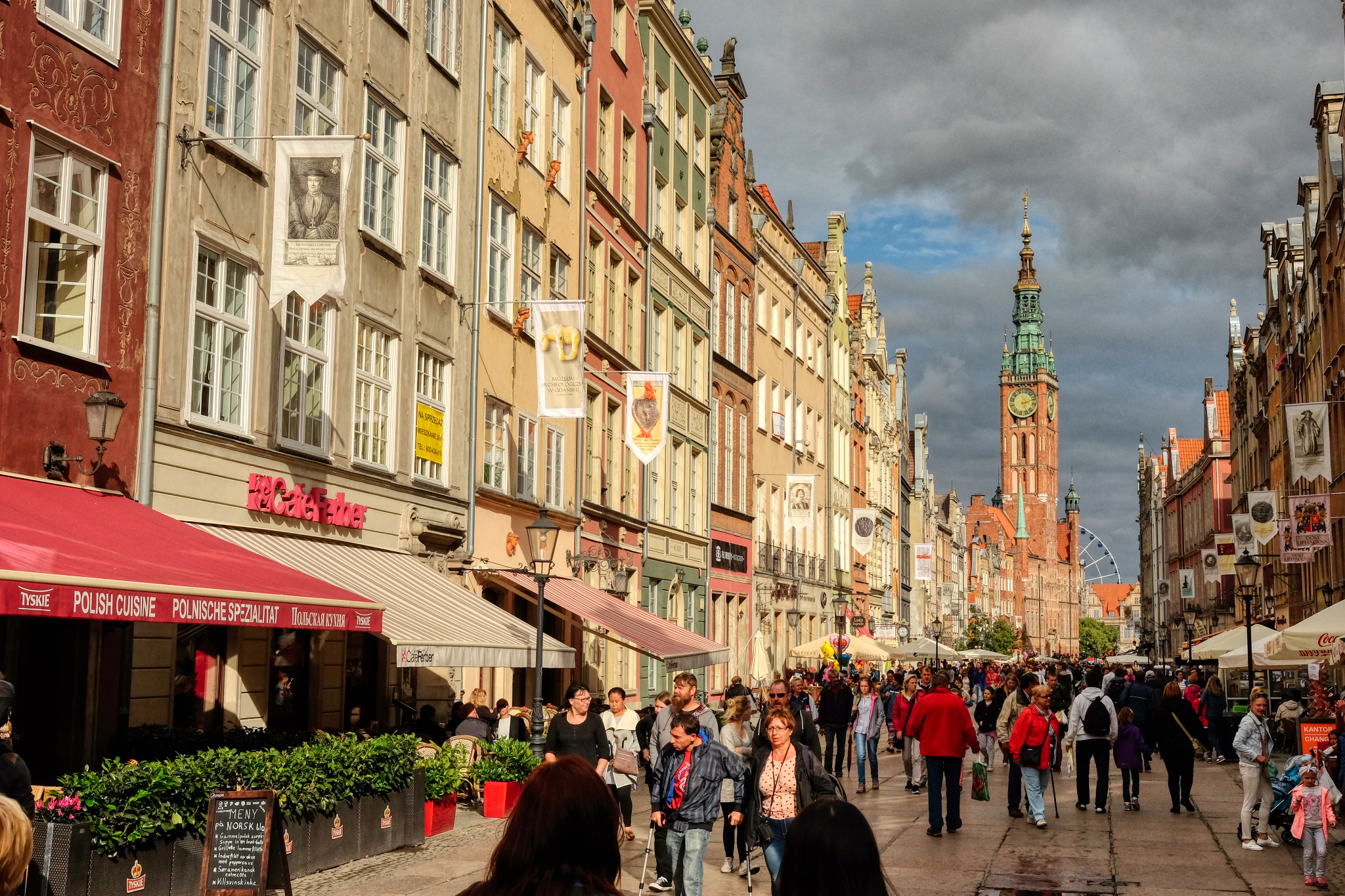 Gdańsk is one of the most beautiful cities I have ever visited . . . and as good luck would have it, we visited during a street festival!
Gdańsk is one of the most beautiful cities I have ever visited . . . and as good luck would have it, we visited during a street festival!
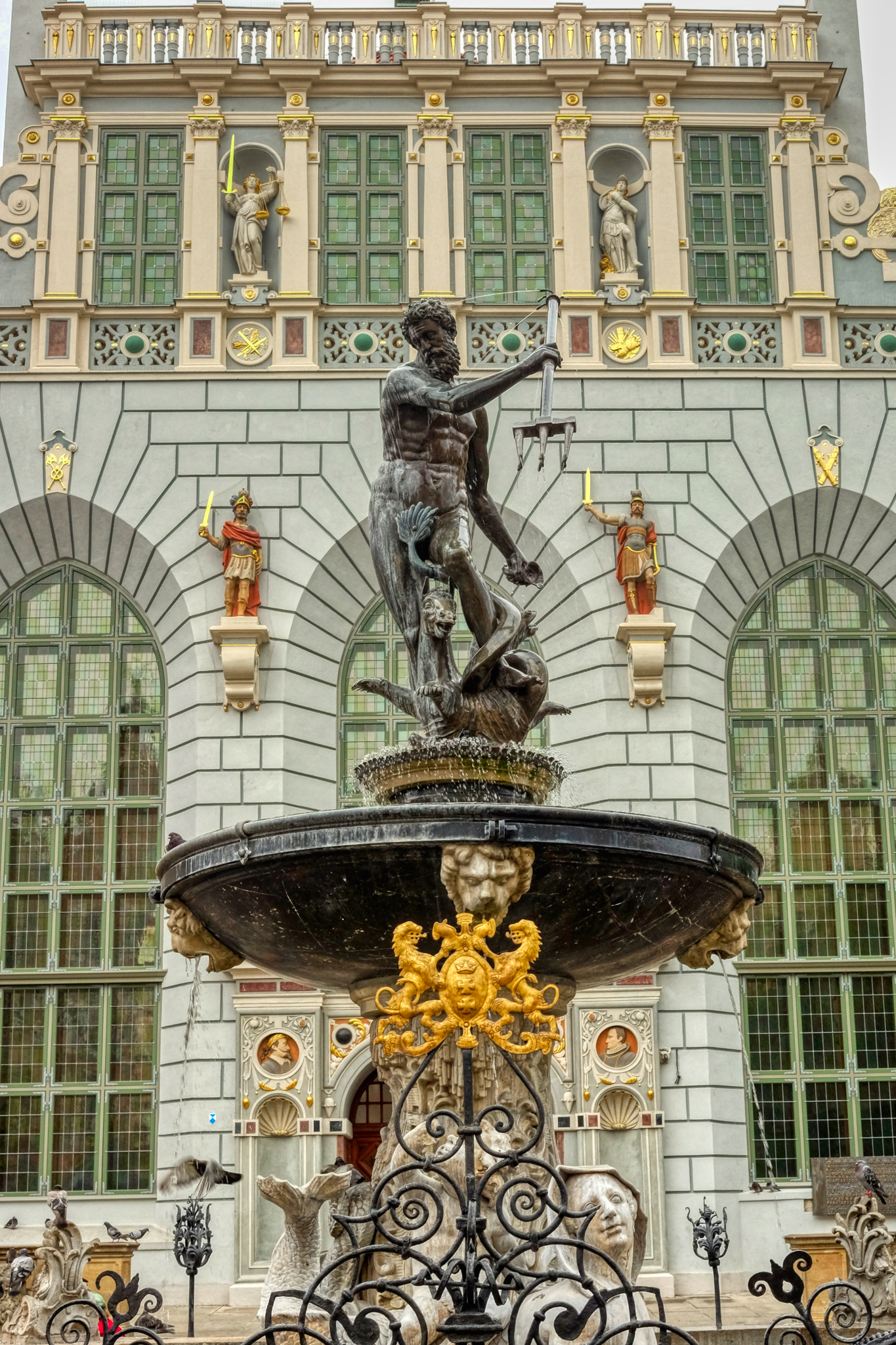 The statue to Neptune.
The statue to Neptune.
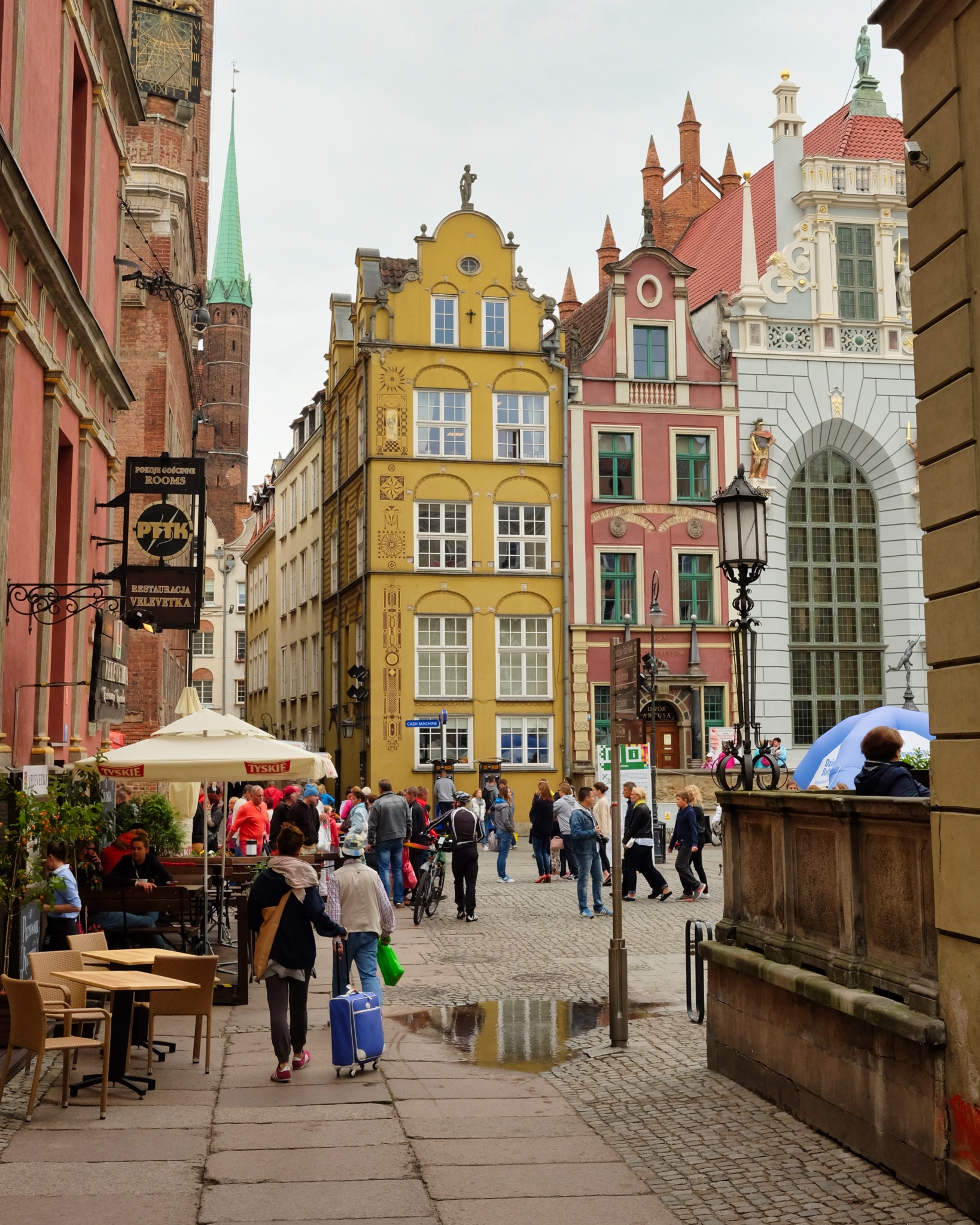 One of many small squares in the city center. The architectural style was surprisingly . . . . Dutch.
One of many small squares in the city center. The architectural style was surprisingly . . . . Dutch.
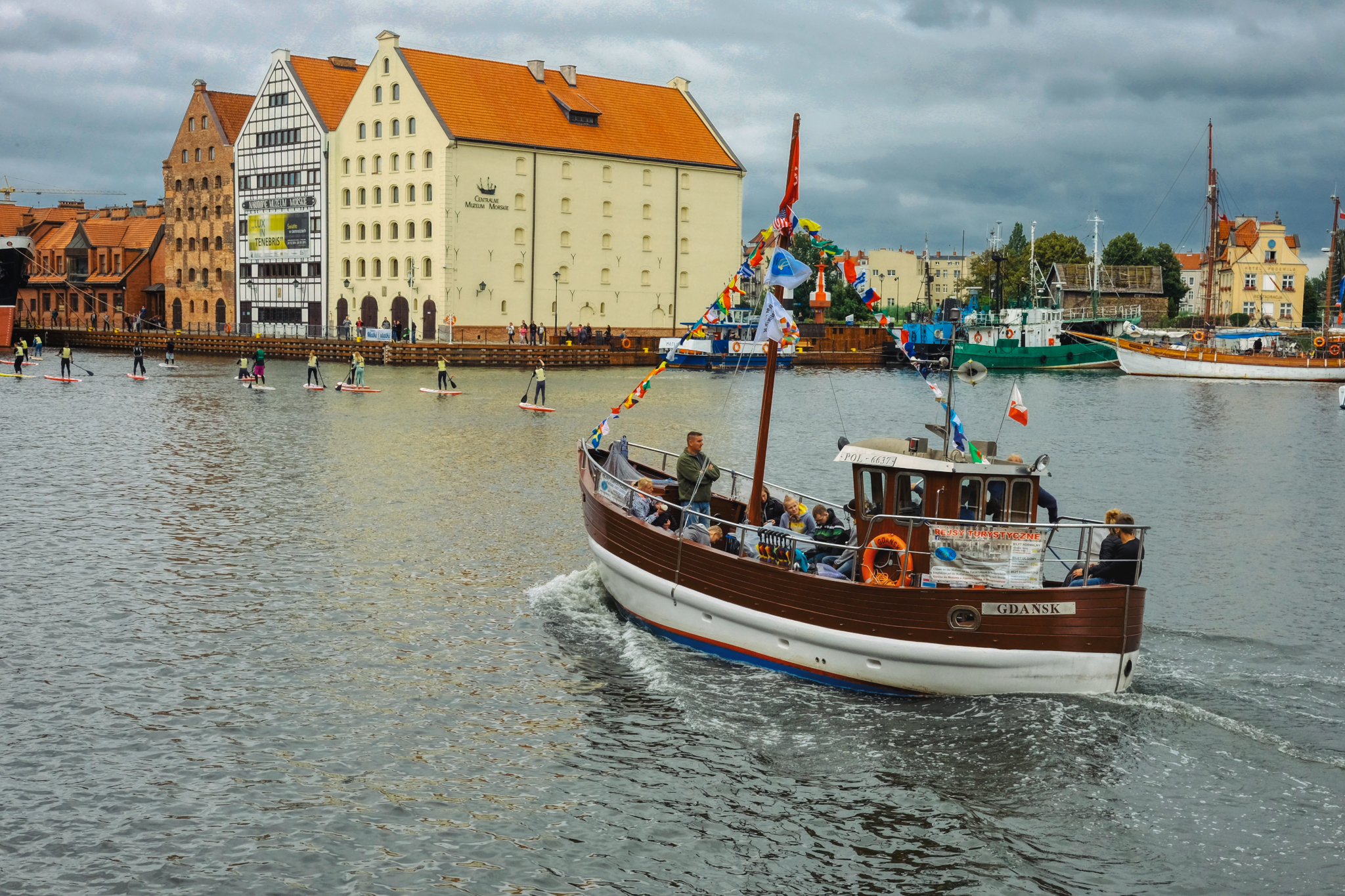 Gdańsk is on the Motlawa River estuary.
Gdańsk is on the Motlawa River estuary.
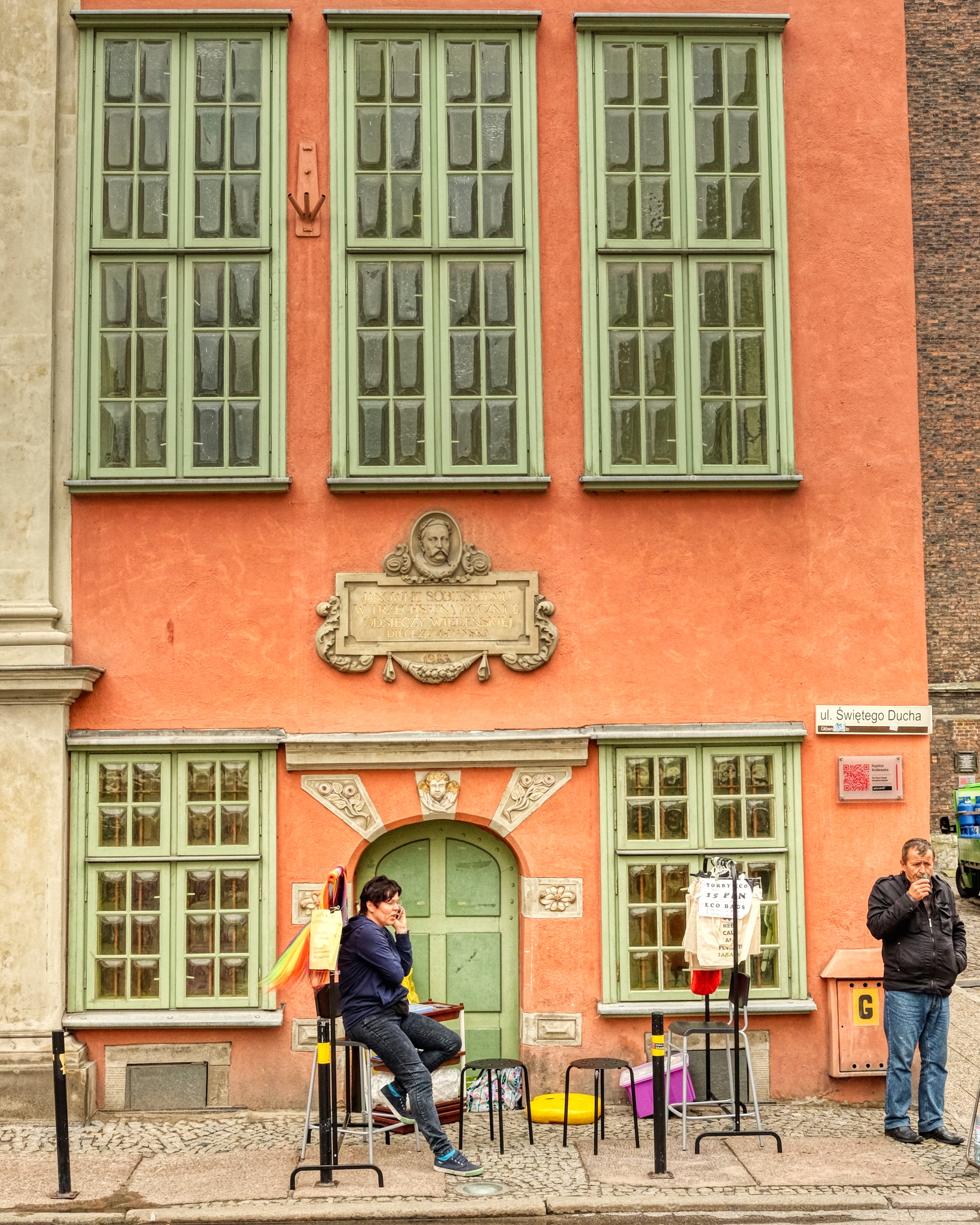 An old city filled with wonderful architecture.
An old city filled with wonderful architecture.
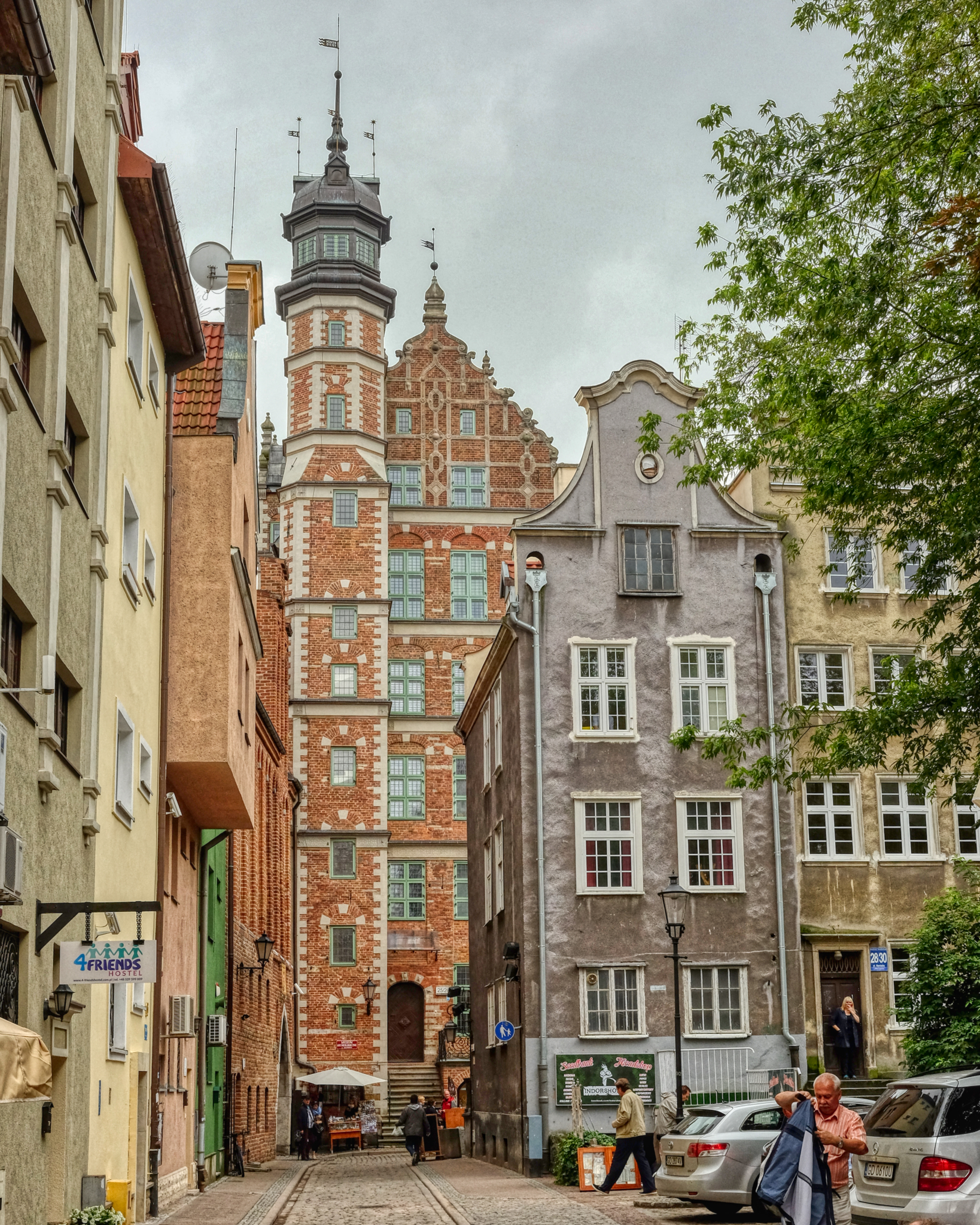 The architecture of Gdańsk tells a story: "Parts of the historic old city of Gdańsk, which had suffered large-scale destruction during the war, were rebuilt during the 1950s and 1960s. The reconstruction was not tied to the city's pre-war appearance, but instead was politically motivated as a means of culturally cleansing and destroying all traces of German influence from the city. Any traces of German tradition were ignored by the communists, suppressed, or regarded as Prussian barbarism only worthy of demolition, while communist and Flemish/Dutch, Italian and French influences were used to replace the historically accurate Germanic architecture which the city was built upon since the 14th century. [Citation]
The architecture of Gdańsk tells a story: "Parts of the historic old city of Gdańsk, which had suffered large-scale destruction during the war, were rebuilt during the 1950s and 1960s. The reconstruction was not tied to the city's pre-war appearance, but instead was politically motivated as a means of culturally cleansing and destroying all traces of German influence from the city. Any traces of German tradition were ignored by the communists, suppressed, or regarded as Prussian barbarism only worthy of demolition, while communist and Flemish/Dutch, Italian and French influences were used to replace the historically accurate Germanic architecture which the city was built upon since the 14th century. [Citation]
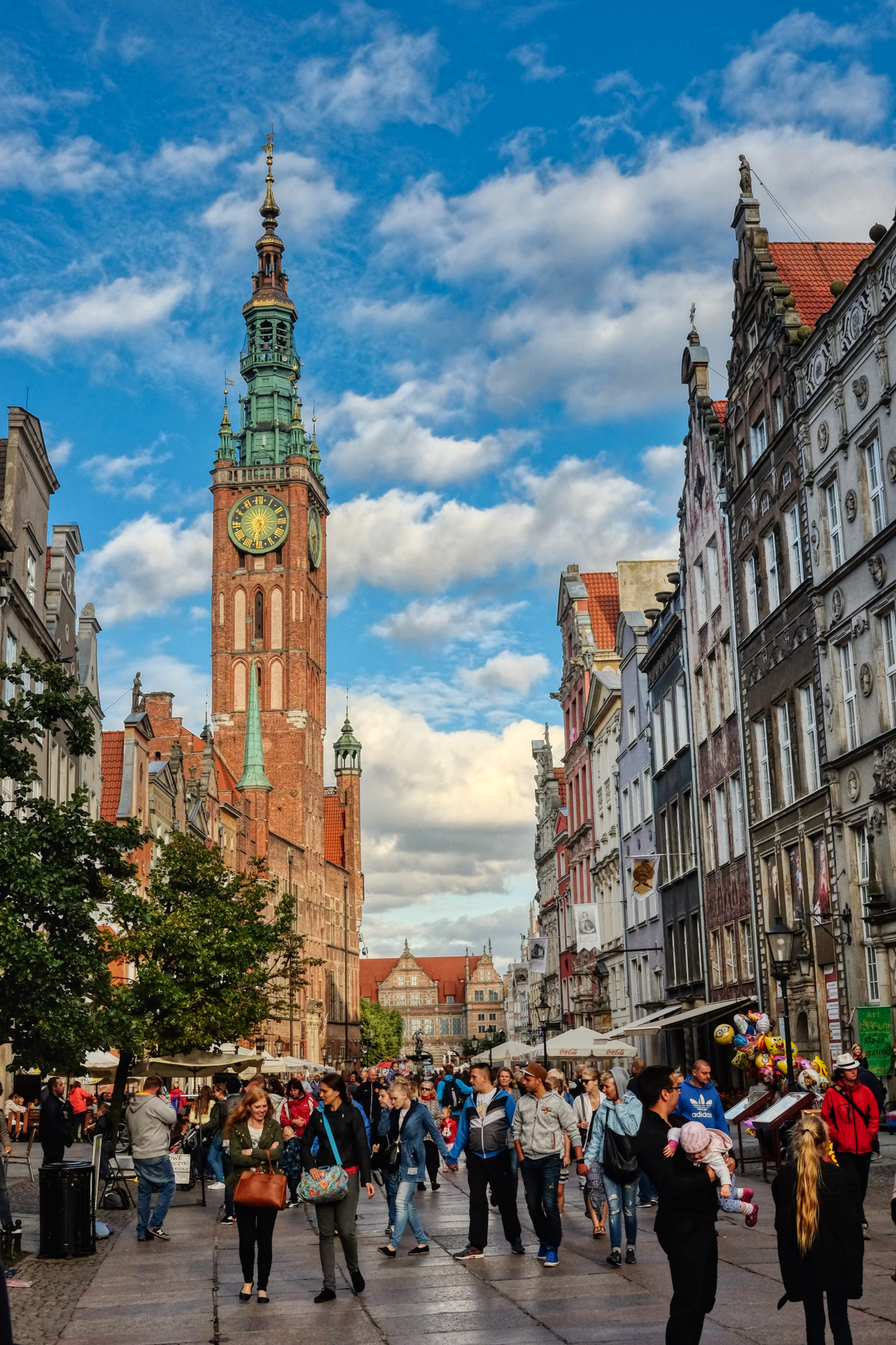 The Long Street with the old (circa 1327) City Hall towering over it.
The Long Street with the old (circa 1327) City Hall towering over it.
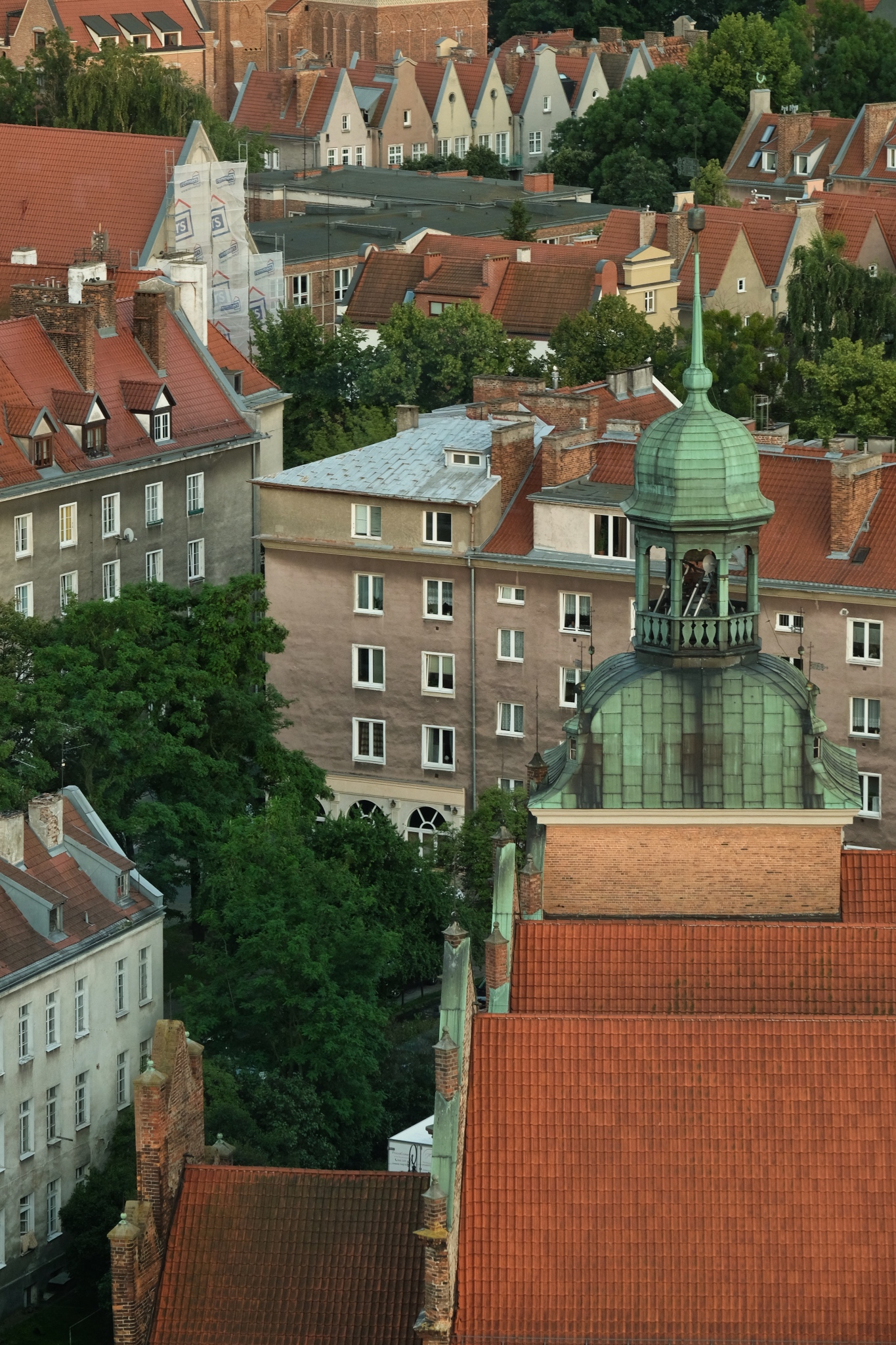 Although I would have preferred to stay at an old 'boutique hotel,' we instead stayed at a modern 25 story hotel. The plus side of the modern hotel were the views over the city.
Although I would have preferred to stay at an old 'boutique hotel,' we instead stayed at a modern 25 story hotel. The plus side of the modern hotel were the views over the city.
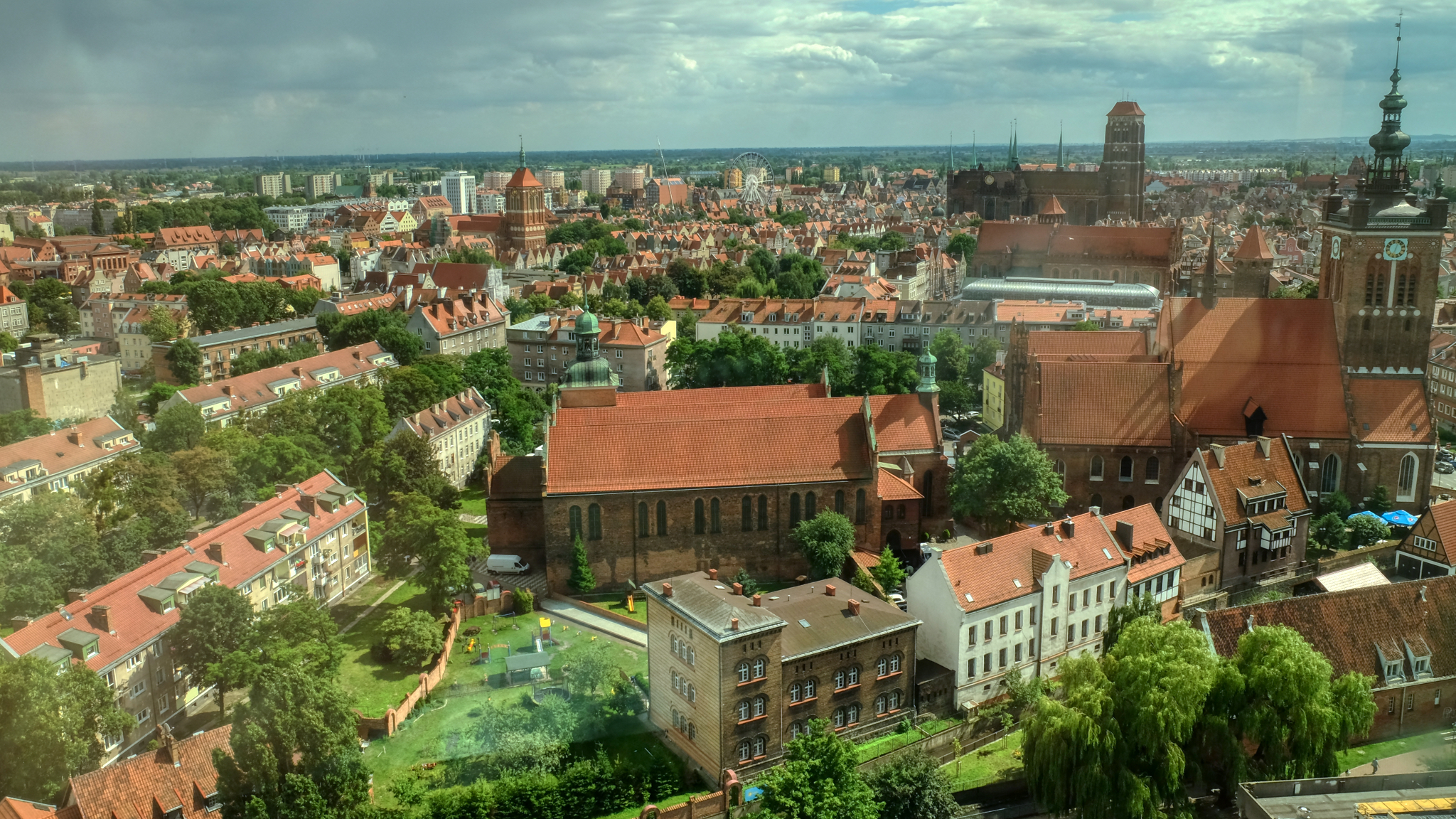
Gdańsk was reduced to piles of stone and brick during WWII by Allied and Soviet bombers. Almost all of what you see here was reconstructed during the 1950s and 1960s.
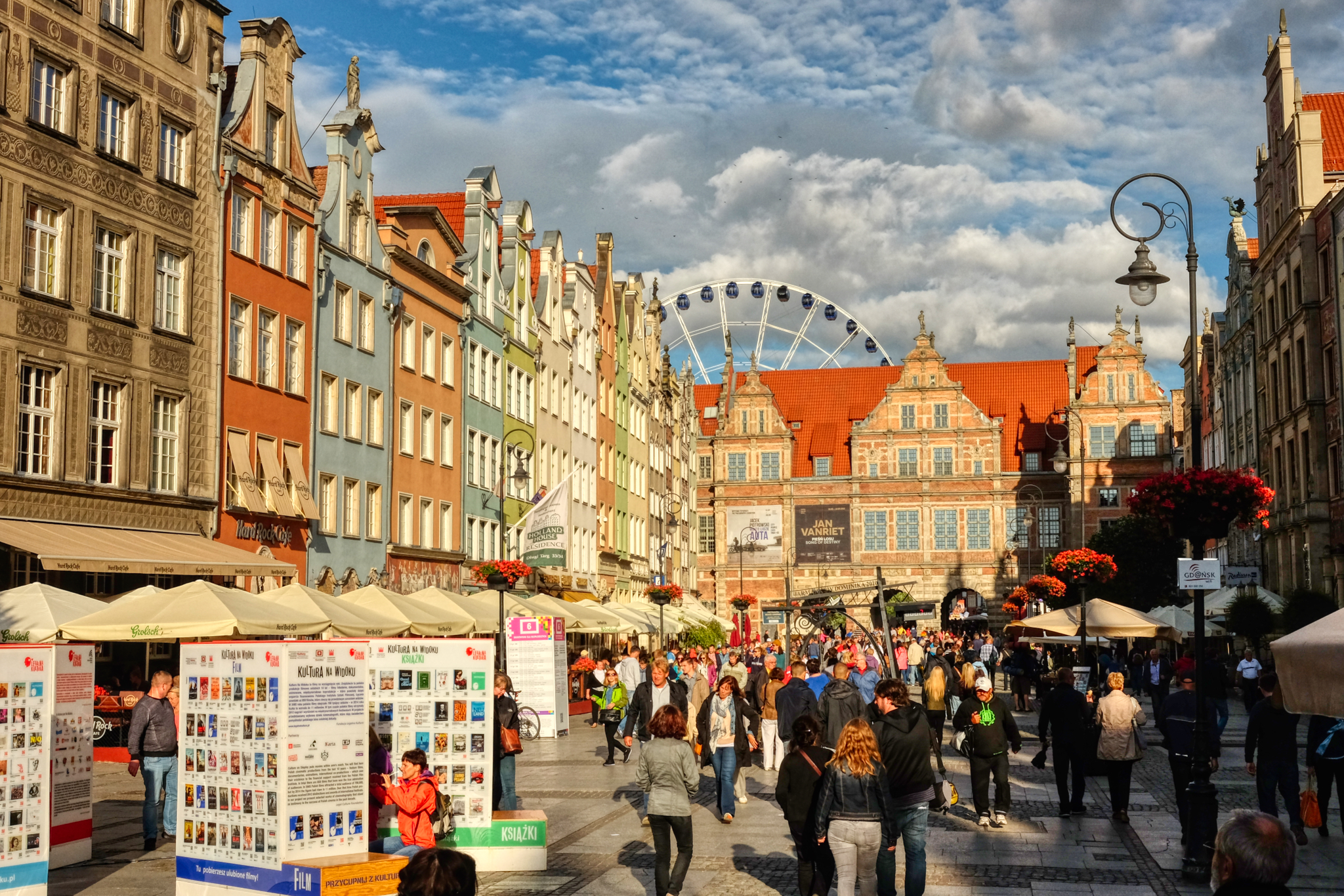 As luck would have it, we arrived in Gdańsk right in the middle of the annual St. Dominic's Fair. With 750 years of successful tradition, the history of the Fair goes back to the year 1260, when it was established by the decree of Pope Alexander IV.
As luck would have it, we arrived in Gdańsk right in the middle of the annual St. Dominic's Fair. With 750 years of successful tradition, the history of the Fair goes back to the year 1260, when it was established by the decree of Pope Alexander IV.
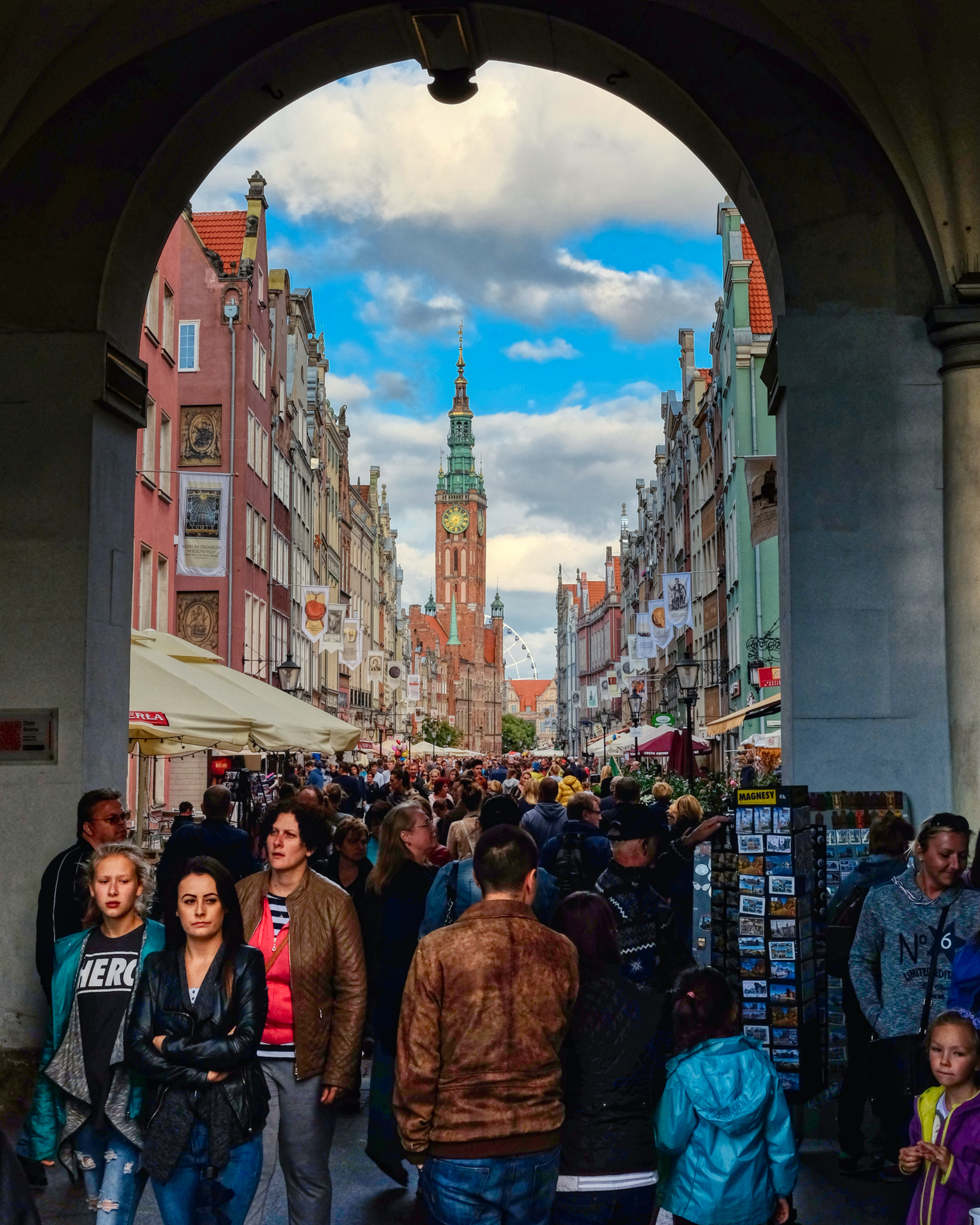 St. Dominic's Fair brought tourists from all over Poland, Europe, and the Far East.
St. Dominic's Fair brought tourists from all over Poland, Europe, and the Far East.
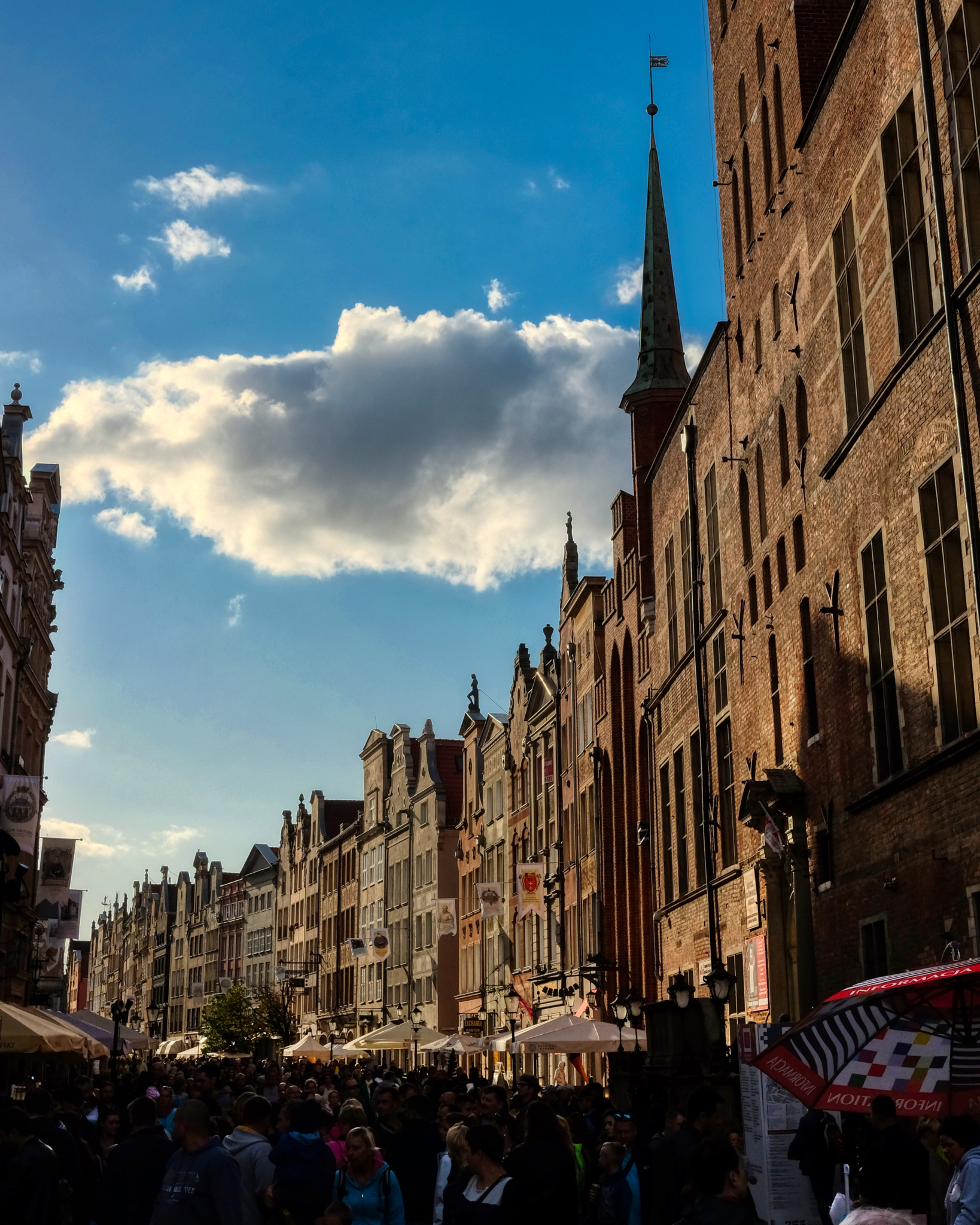 Every street in the city was set up with stalls selling food and crafts. It was the biggest street food and crafts fair I have ever seen!
Every street in the city was set up with stalls selling food and crafts. It was the biggest street food and crafts fair I have ever seen!
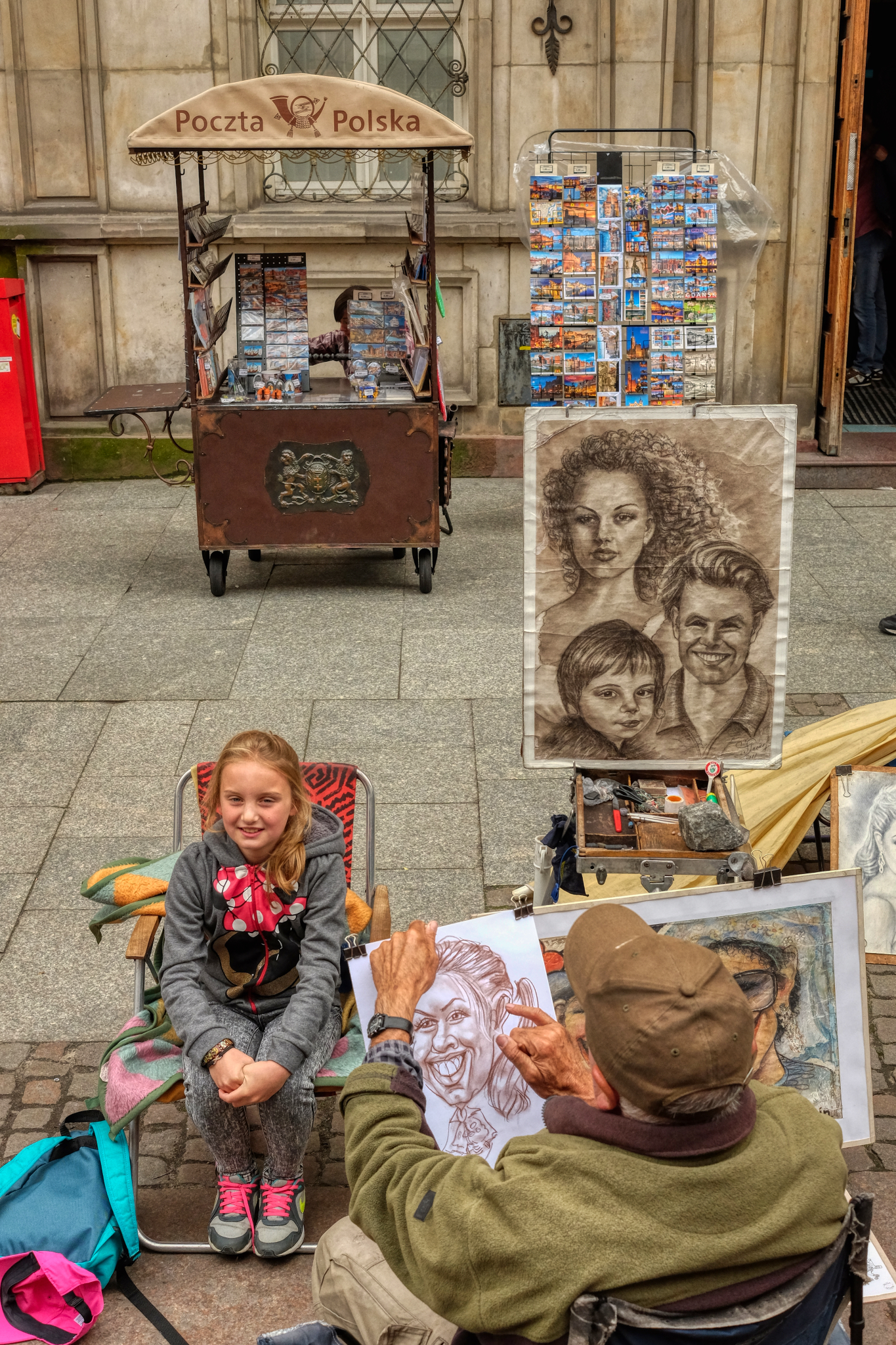
In addition to the street stalls, the fair attracted artists . . .
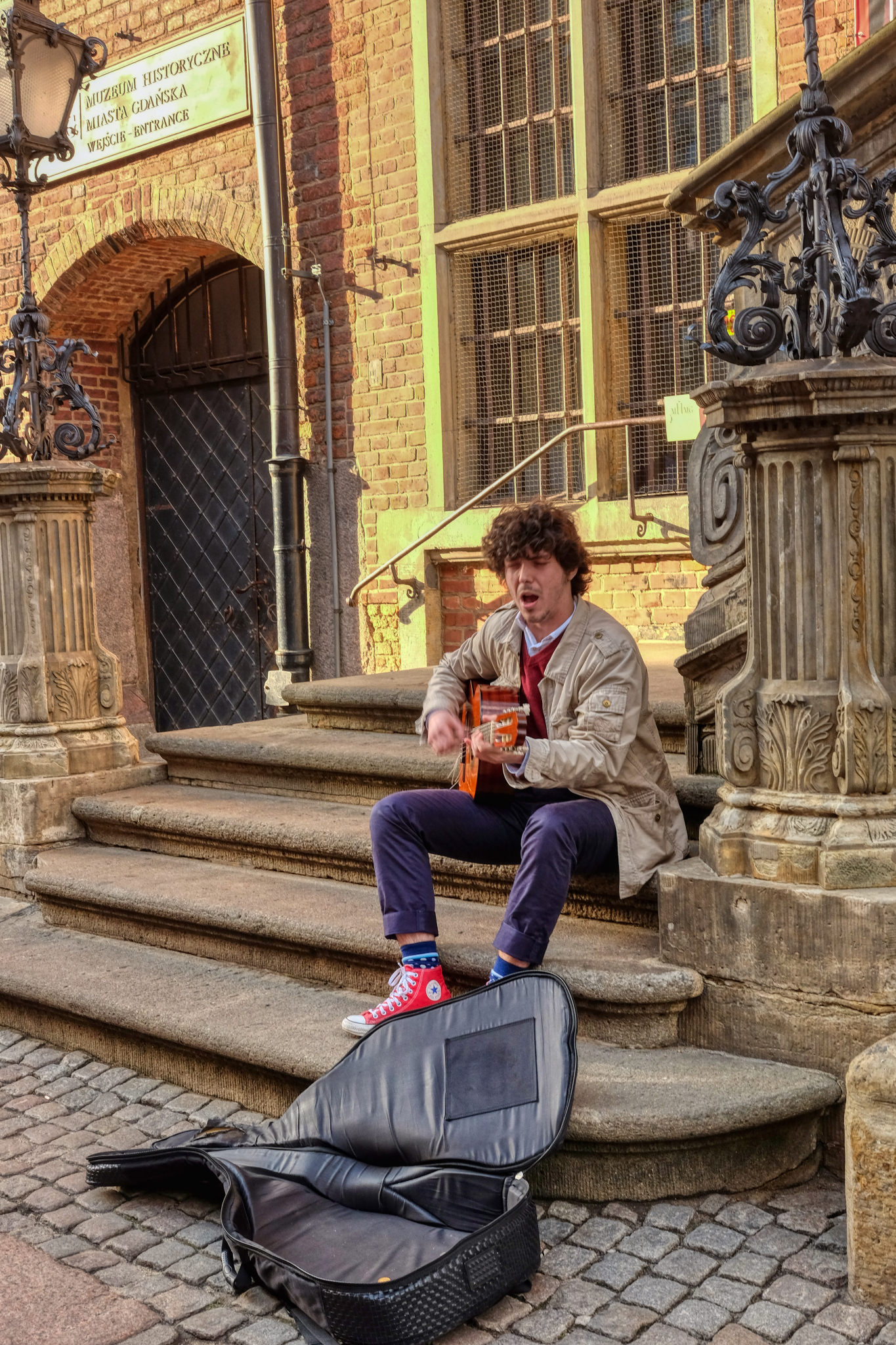
. . . buskers . . .
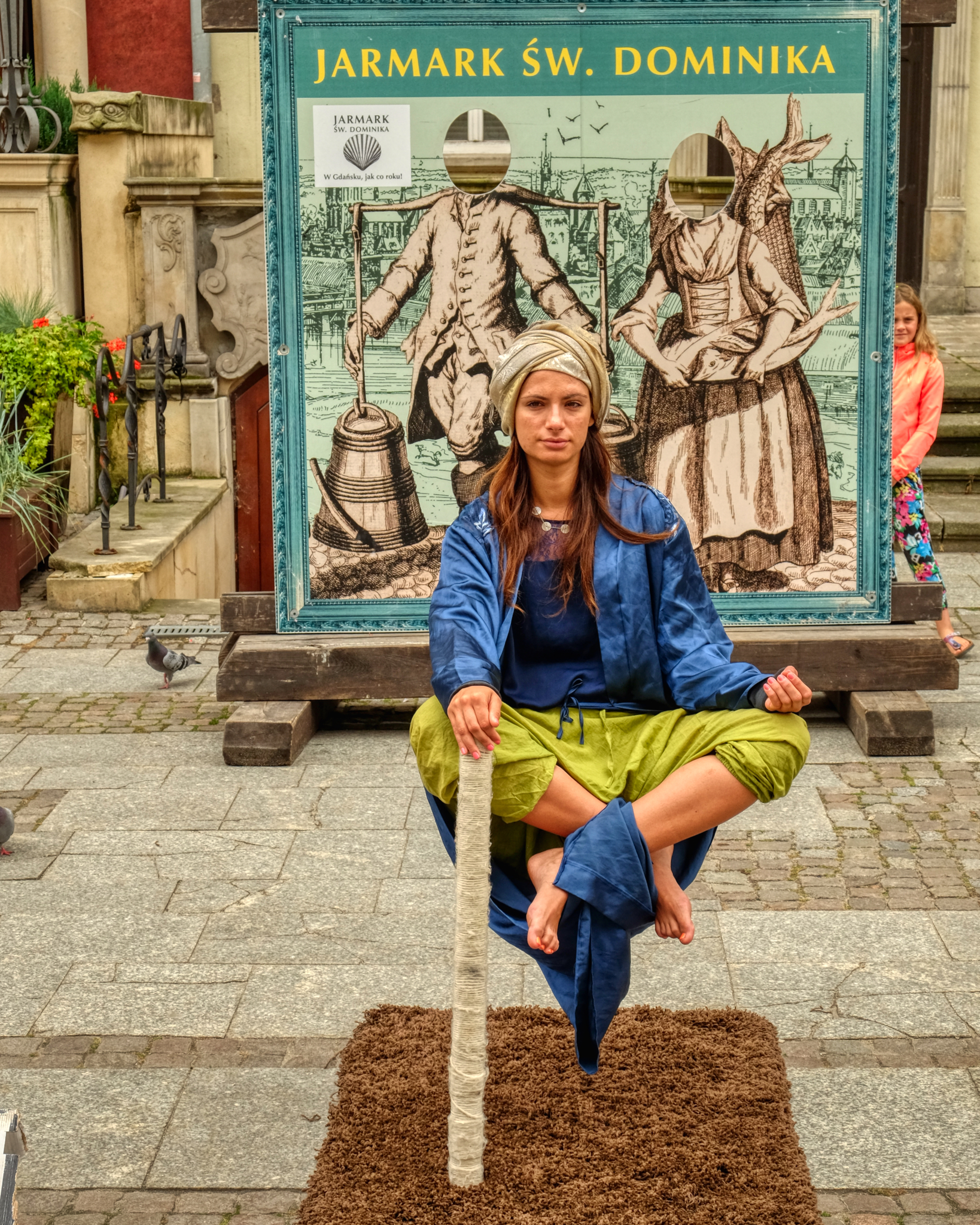 . . . street performers . . .
. . . street performers . . .
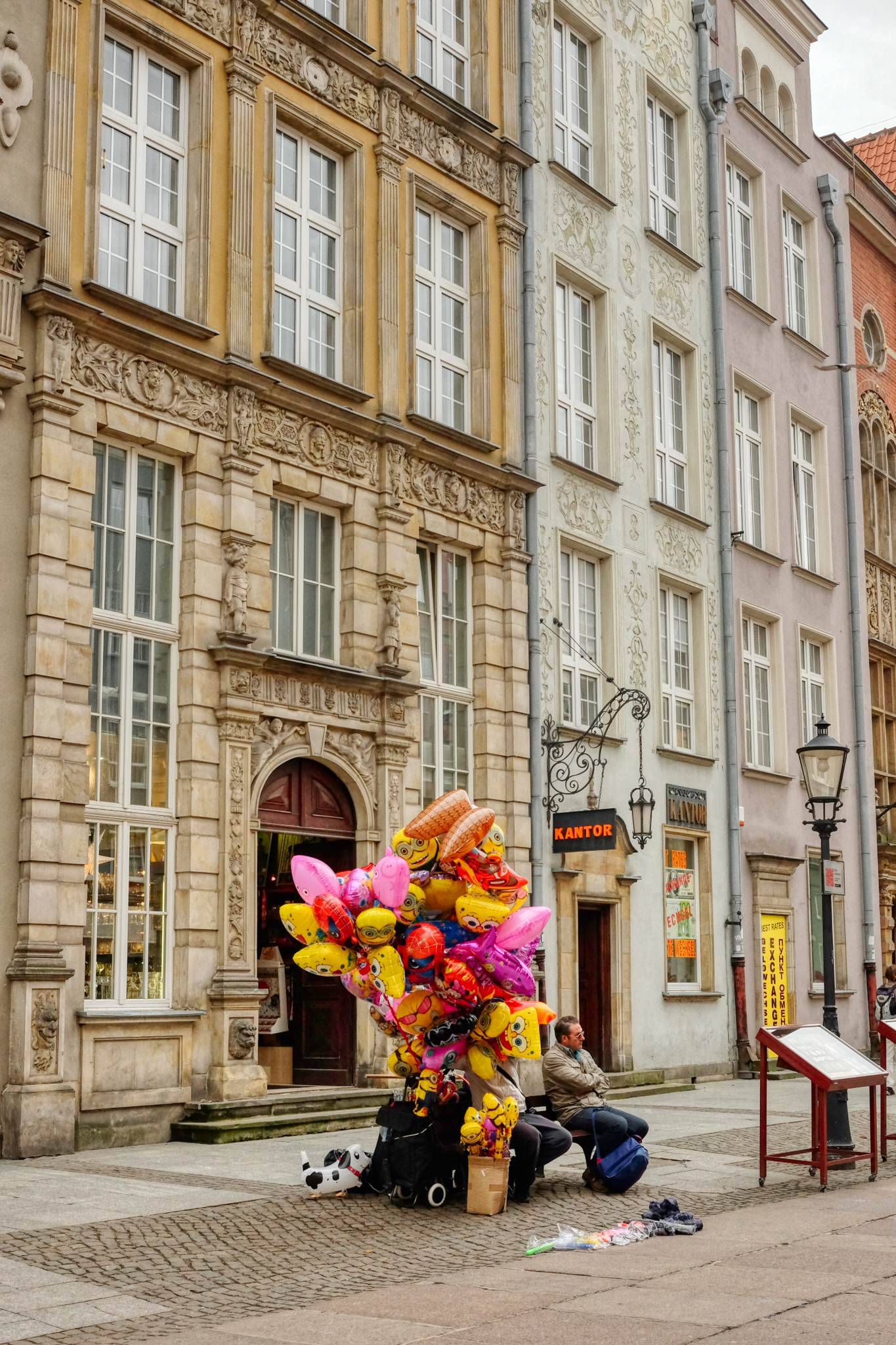 . . . morose balloon salesperson . . .
. . . morose balloon salesperson . . .
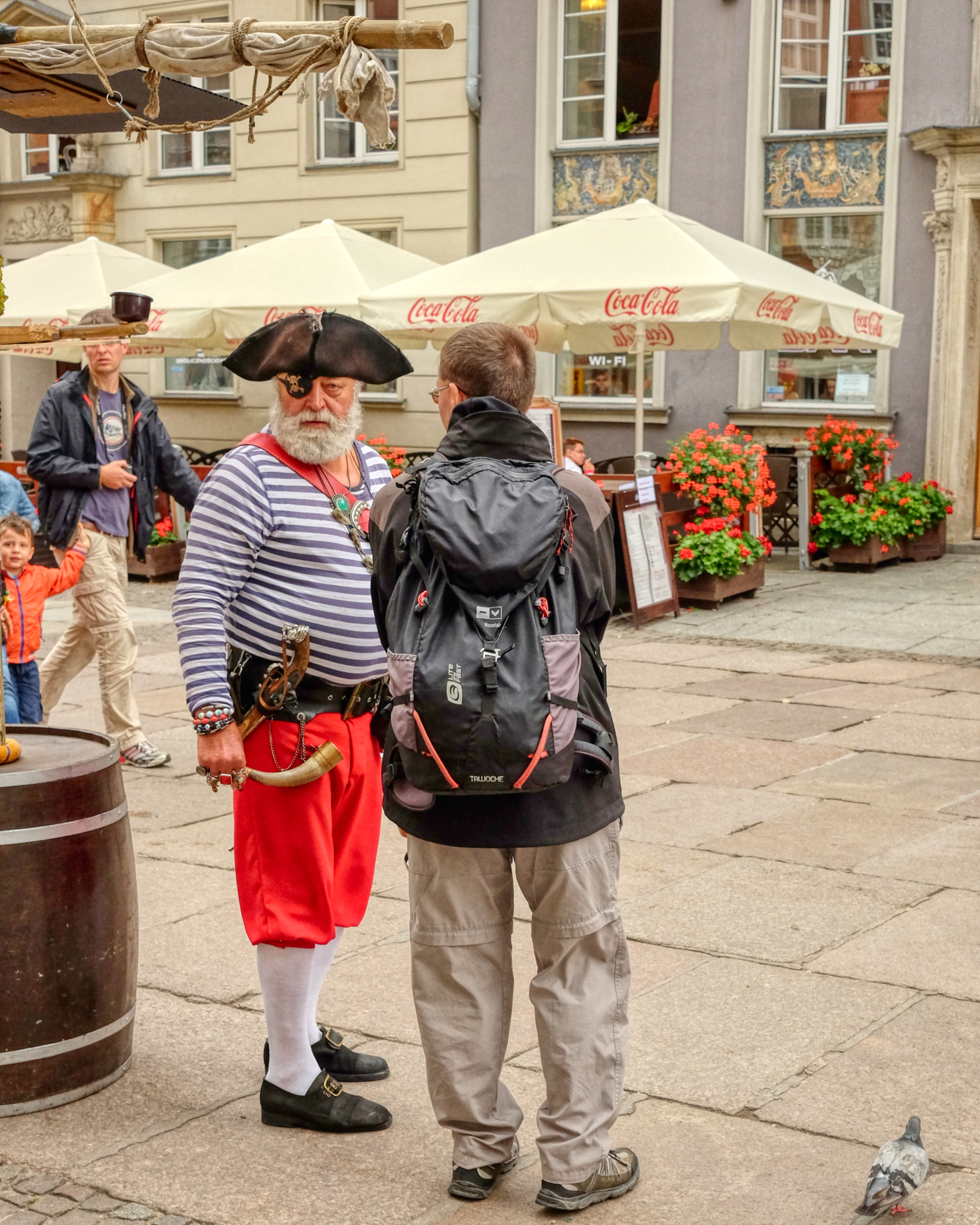 . . . historically costumed information givers . . . giving me the Evil Eye! YAR!
. . . historically costumed information givers . . . giving me the Evil Eye! YAR!
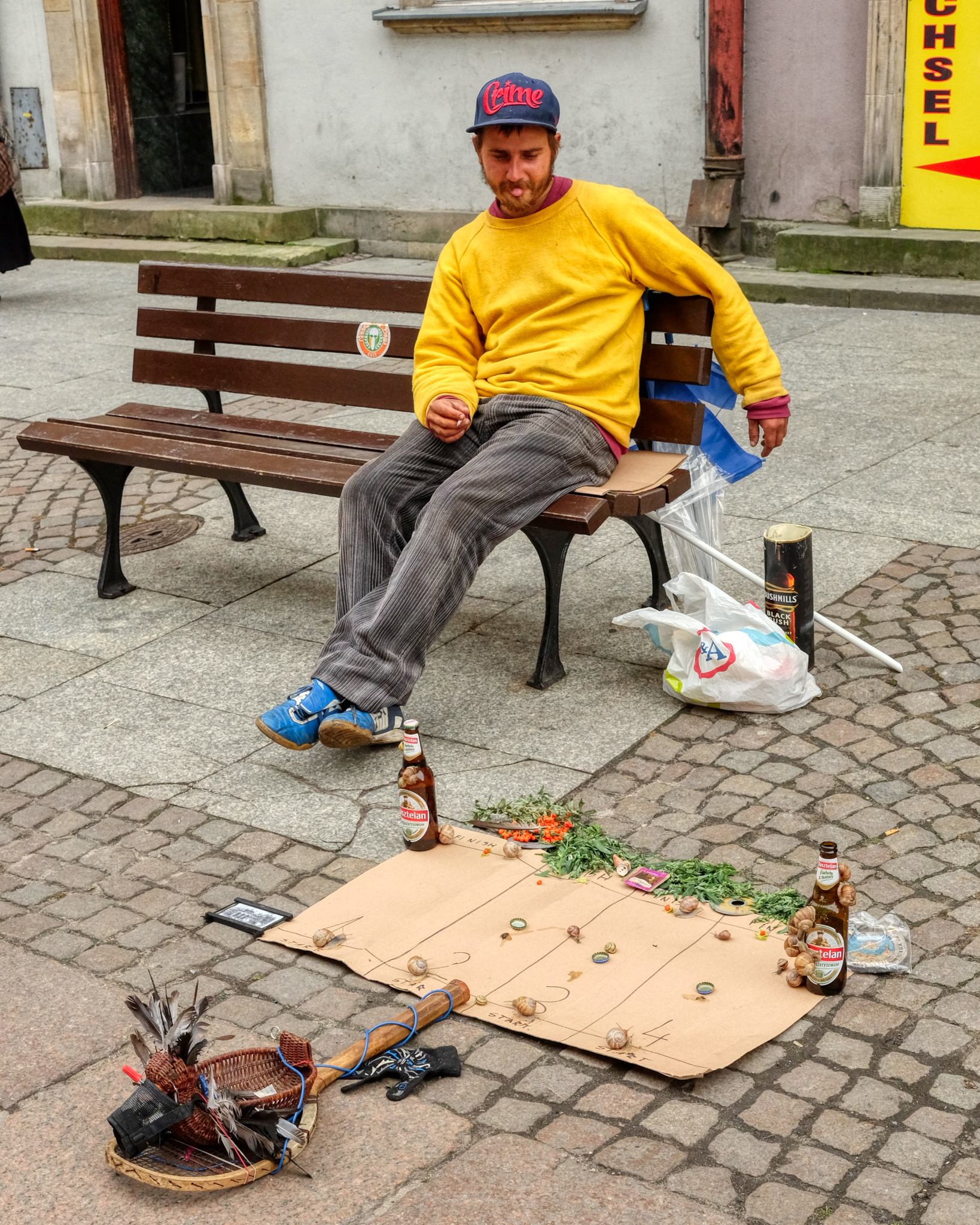 . . . and this guy (wearing a hat that said Crime!) who tried to entice the tourists to wager on his 'snail races.' The street fair was, in many ways, still like its medieval origins.
. . . and this guy (wearing a hat that said Crime!) who tried to entice the tourists to wager on his 'snail races.' The street fair was, in many ways, still like its medieval origins.
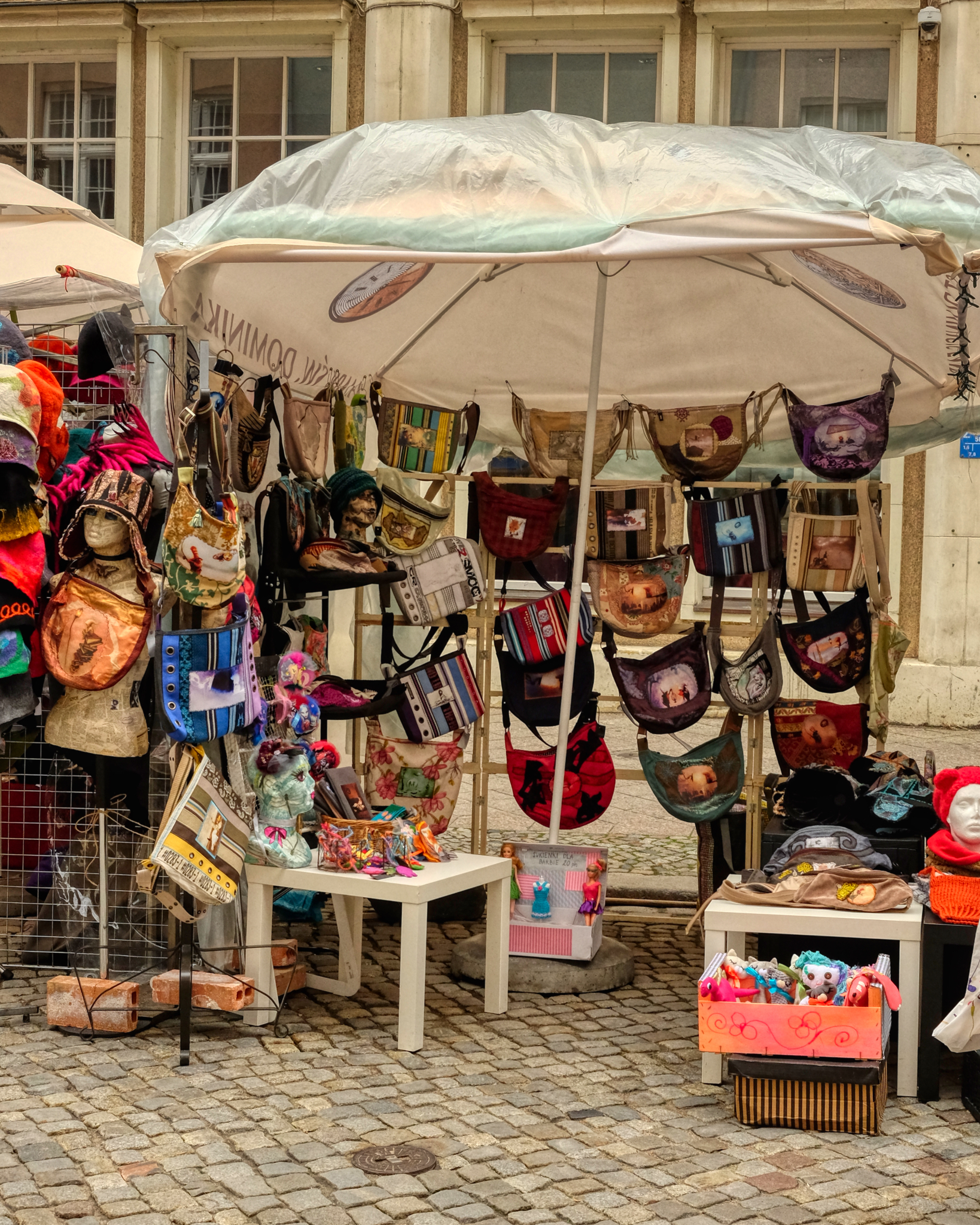 We enjoyed shopping at the many interesting crafts stalls.
We enjoyed shopping at the many interesting crafts stalls.
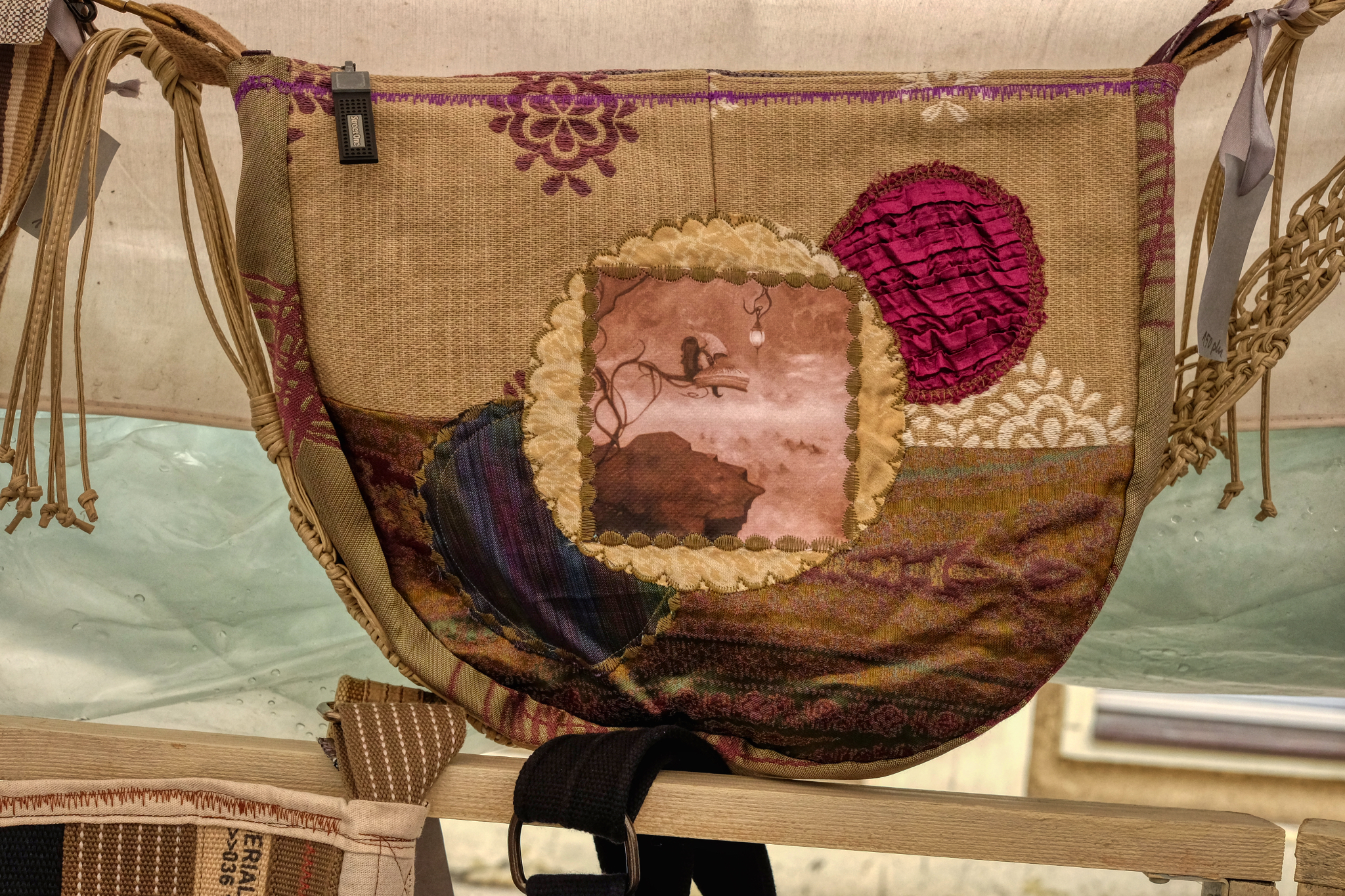 Interesting bags . . .
Interesting bags . . .
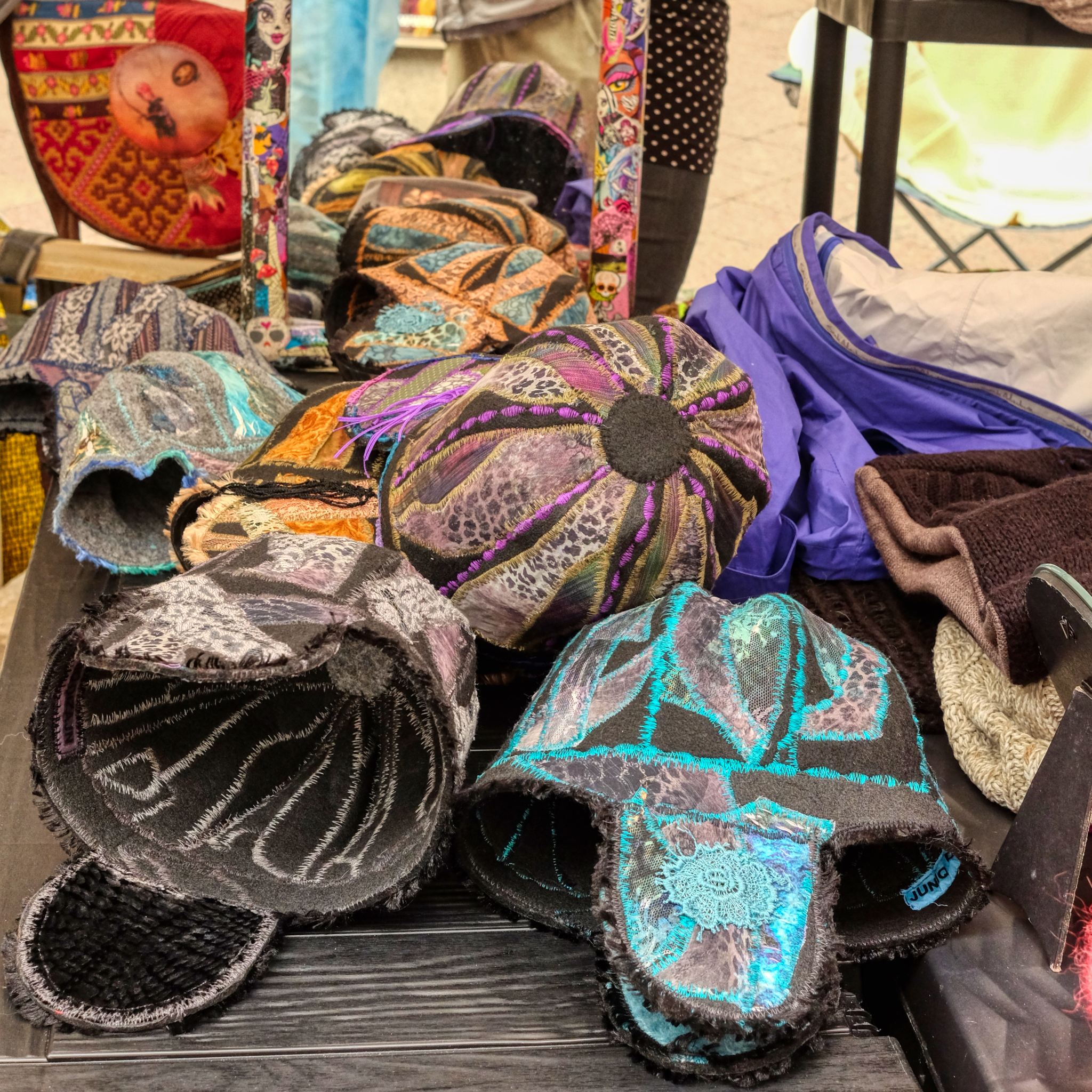 . . . very cool hats . . .
. . . very cool hats . . .
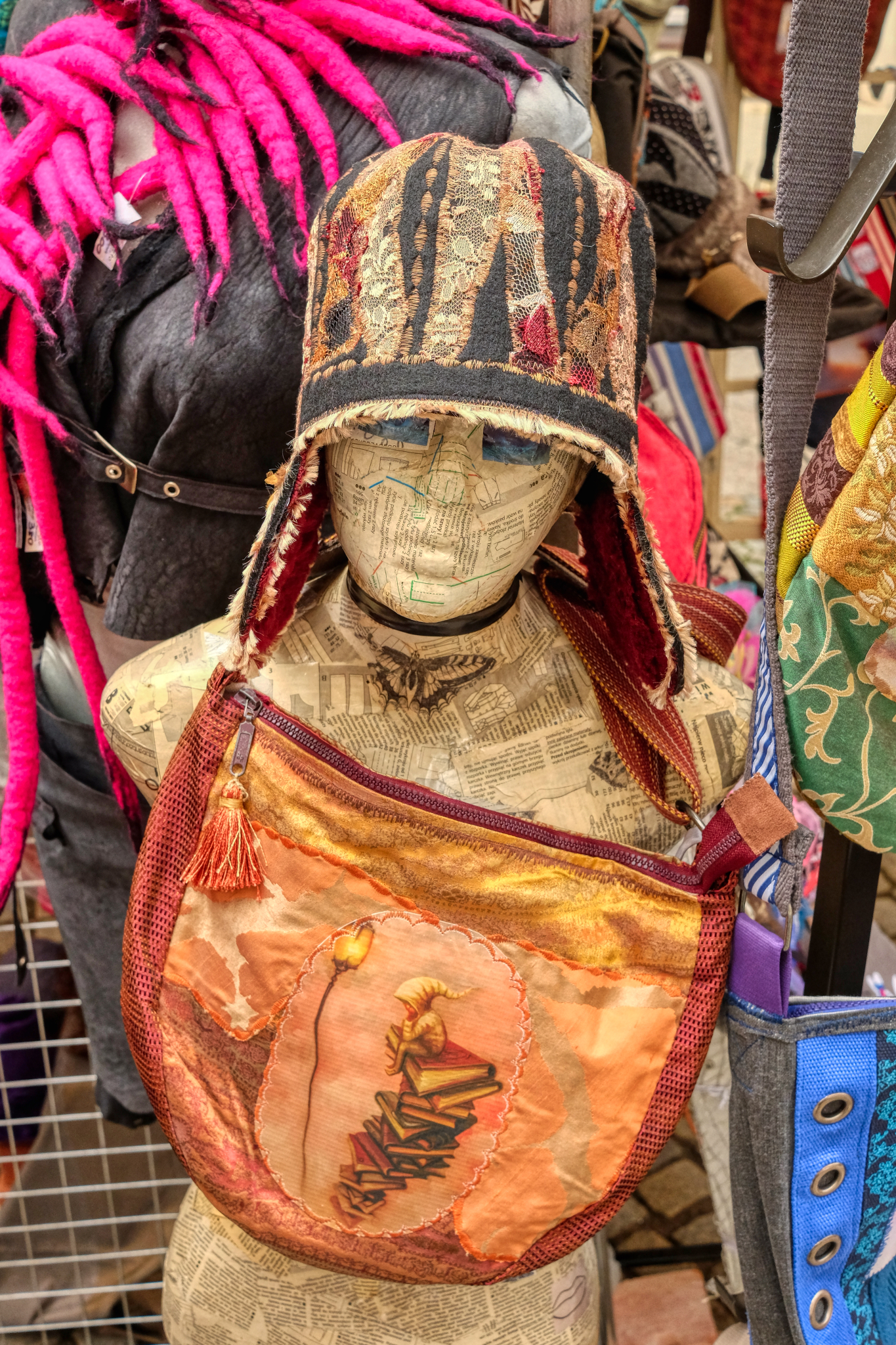 . . . very cool hat and bag! There were some very unusual arts at the fair.
. . . very cool hat and bag! There were some very unusual arts at the fair.
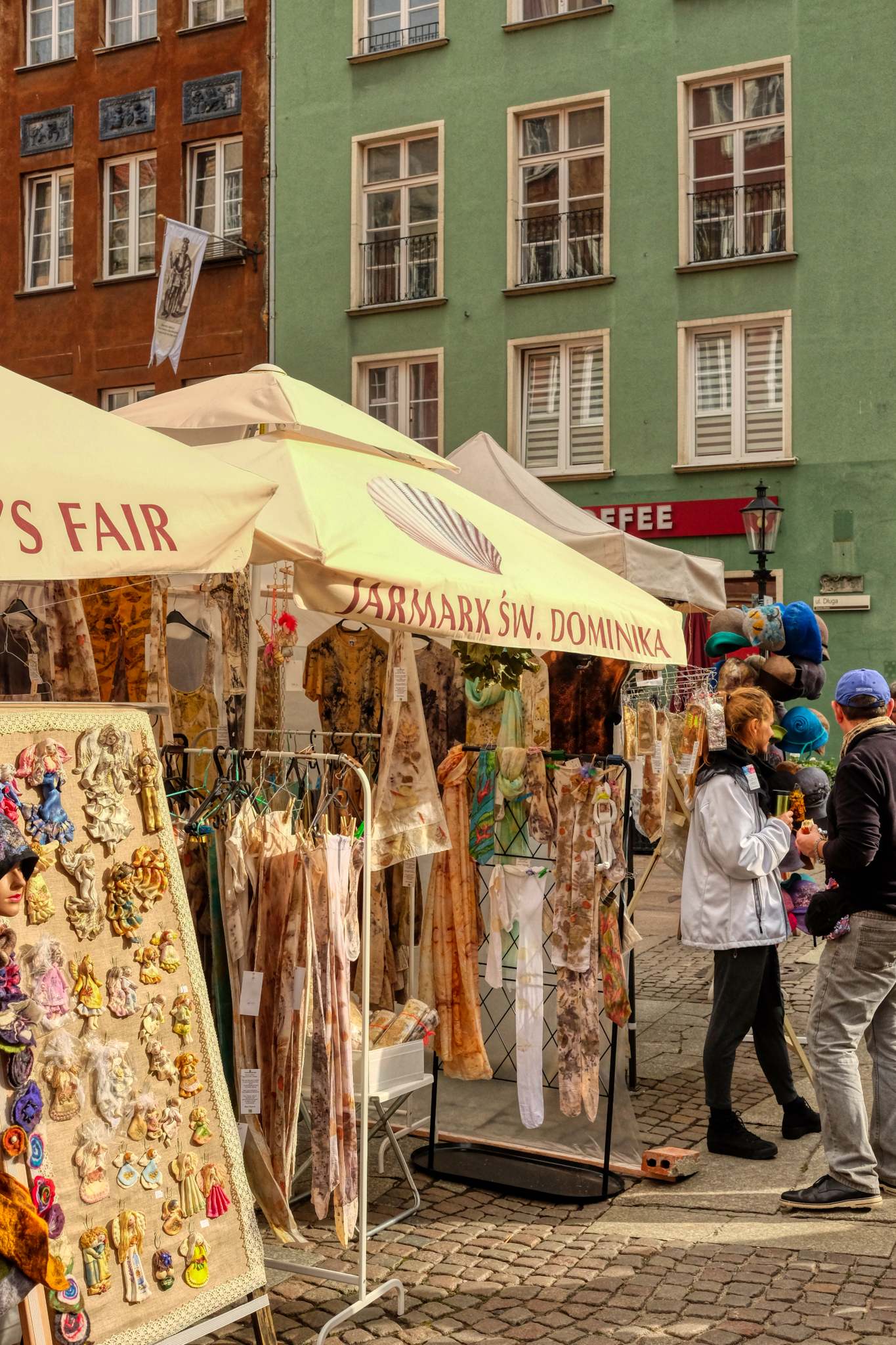 Many beautiful textiles on sale. We bought many things at the these stalls to take back home to Scotland with us. I bought a hat!
Many beautiful textiles on sale. We bought many things at the these stalls to take back home to Scotland with us. I bought a hat!
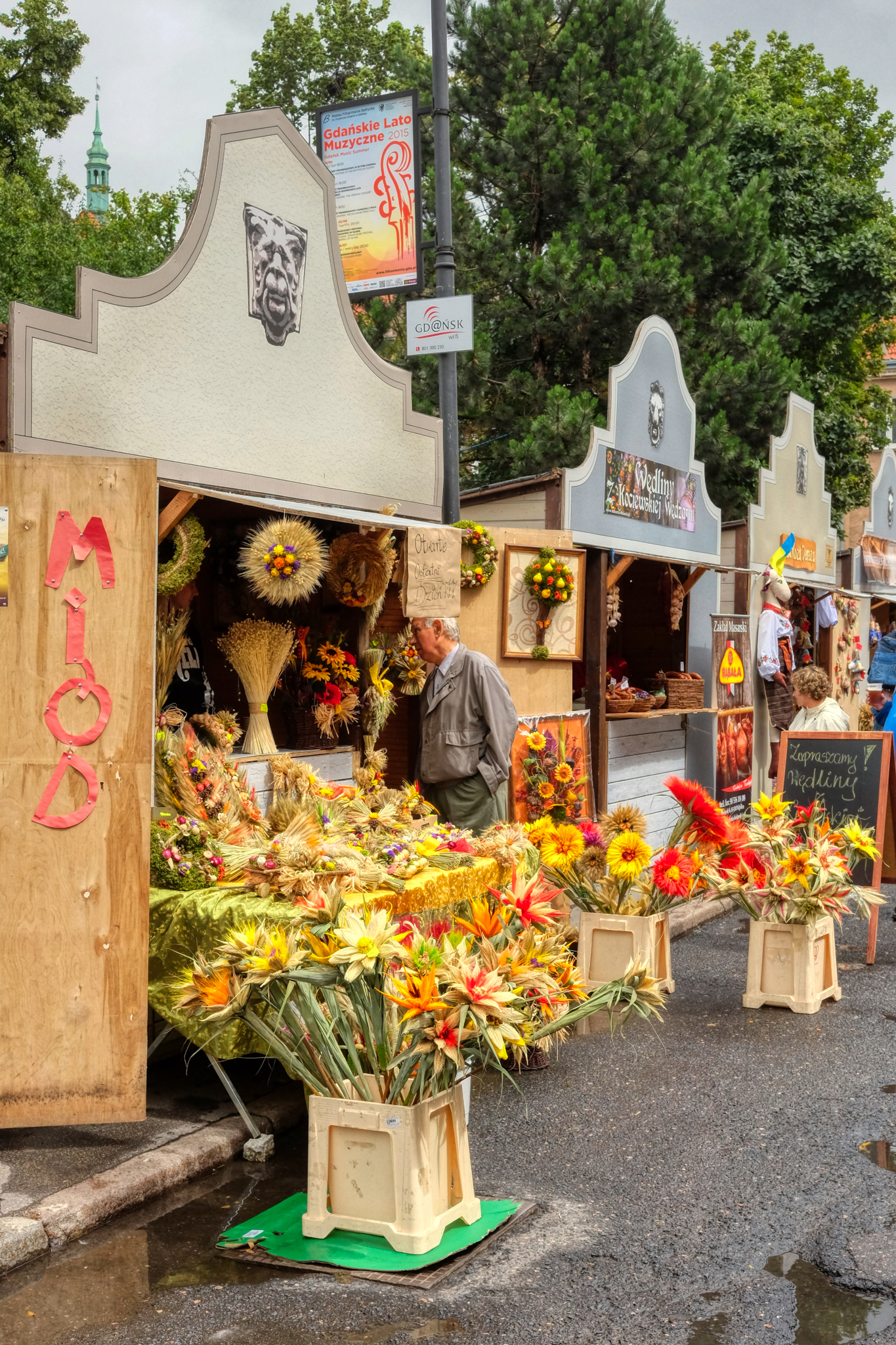 These street stalls were so cute: they mimicked the style of the Gdańsk buildings.
These street stalls were so cute: they mimicked the style of the Gdańsk buildings.
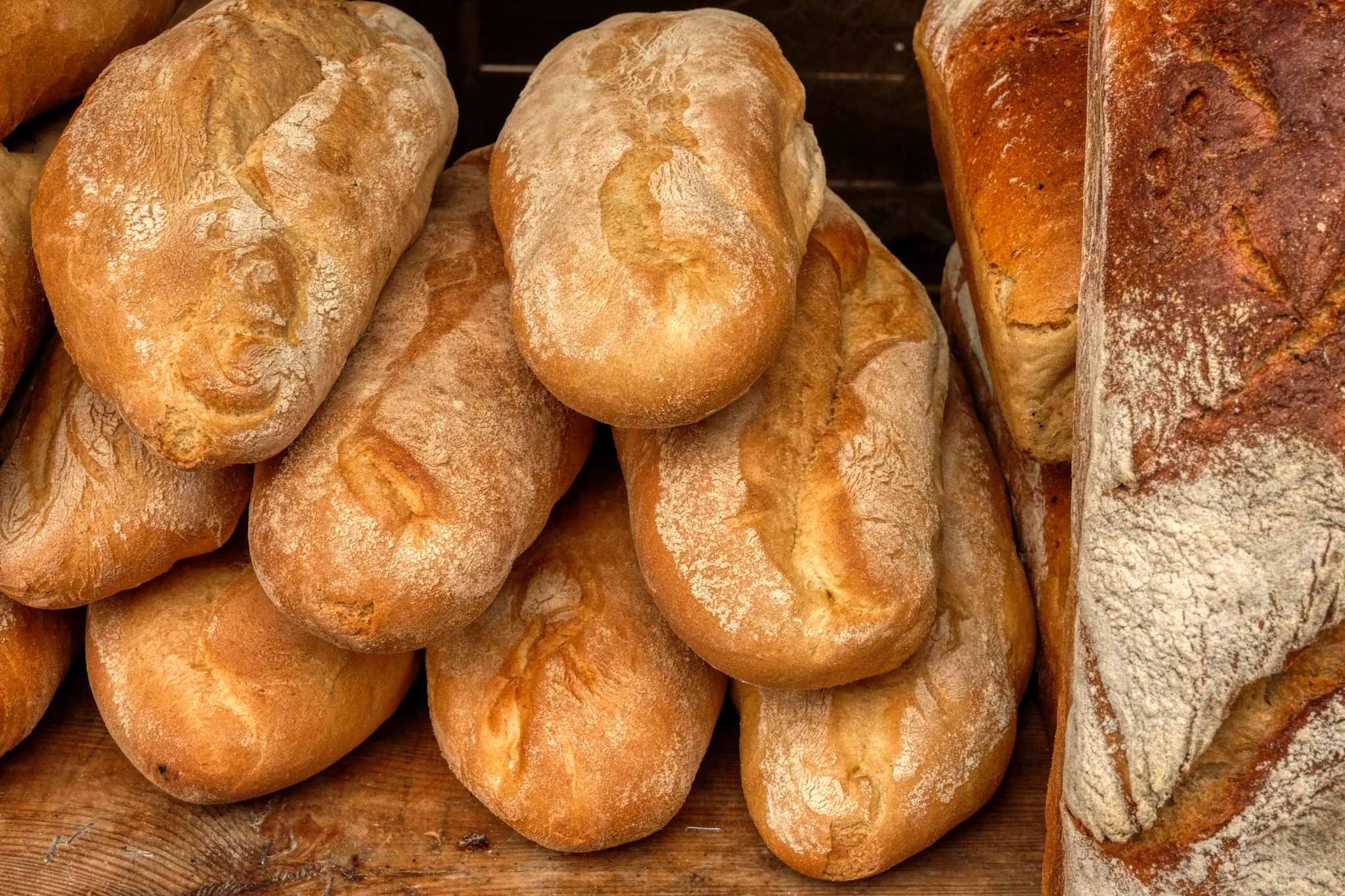 The textiles, hats, and bags were nice . . . but the variety of FOOD at the festival was incredible!!!
The textiles, hats, and bags were nice . . . but the variety of FOOD at the festival was incredible!!!
The breads were fantastic!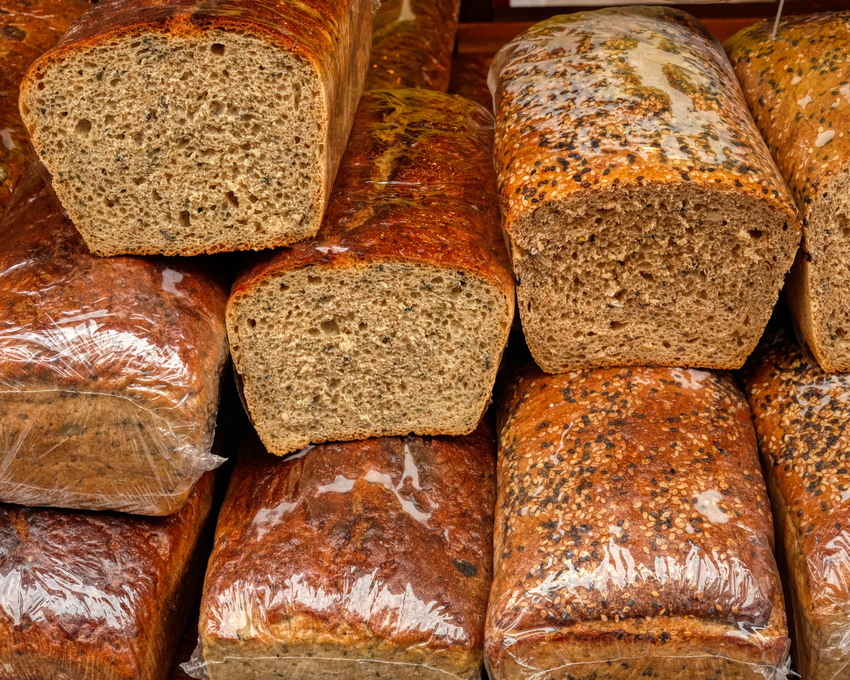
The breads were fantastic!
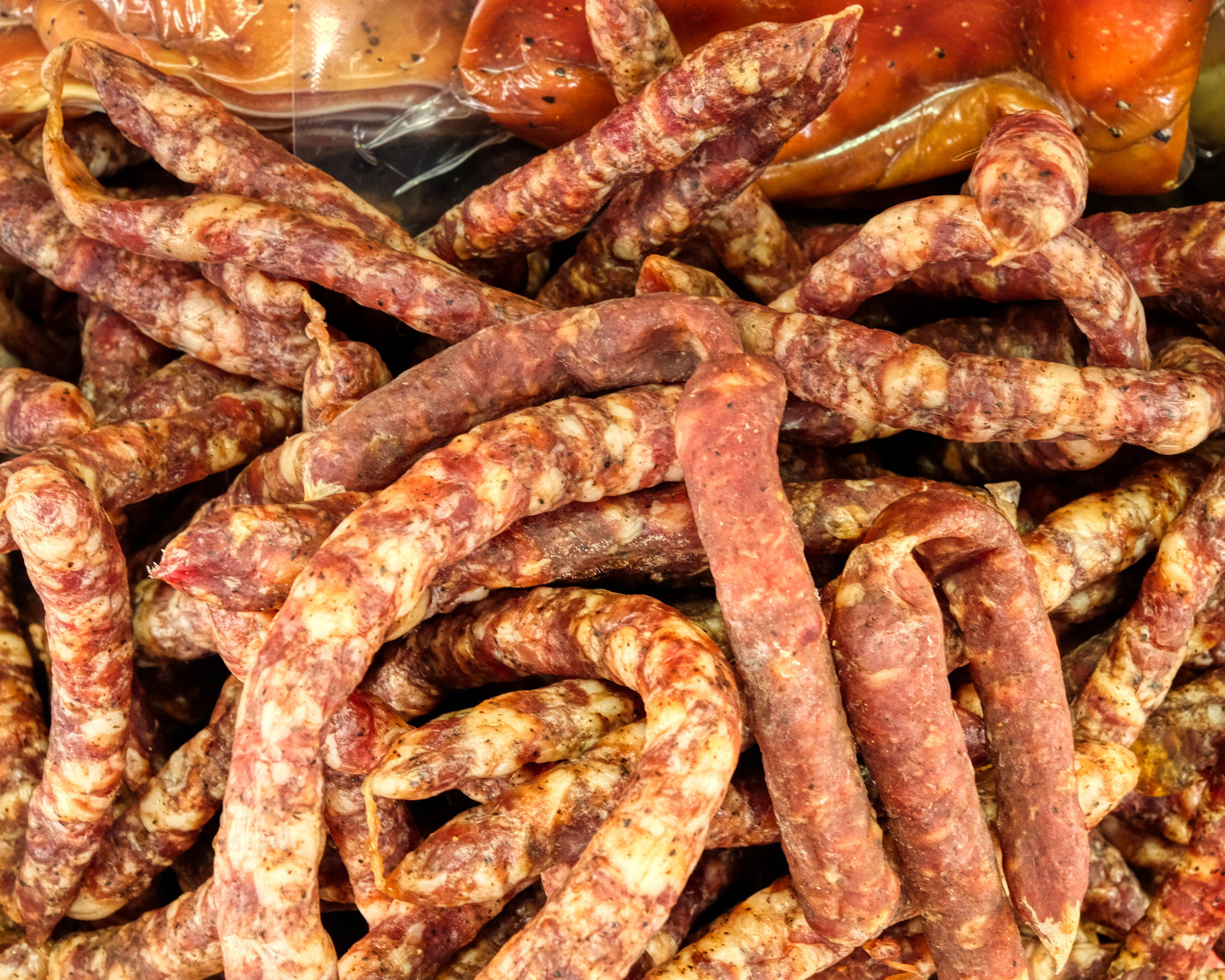 I was in pig heaven for sausage lovers like me!
I was in pig heaven for sausage lovers like me!
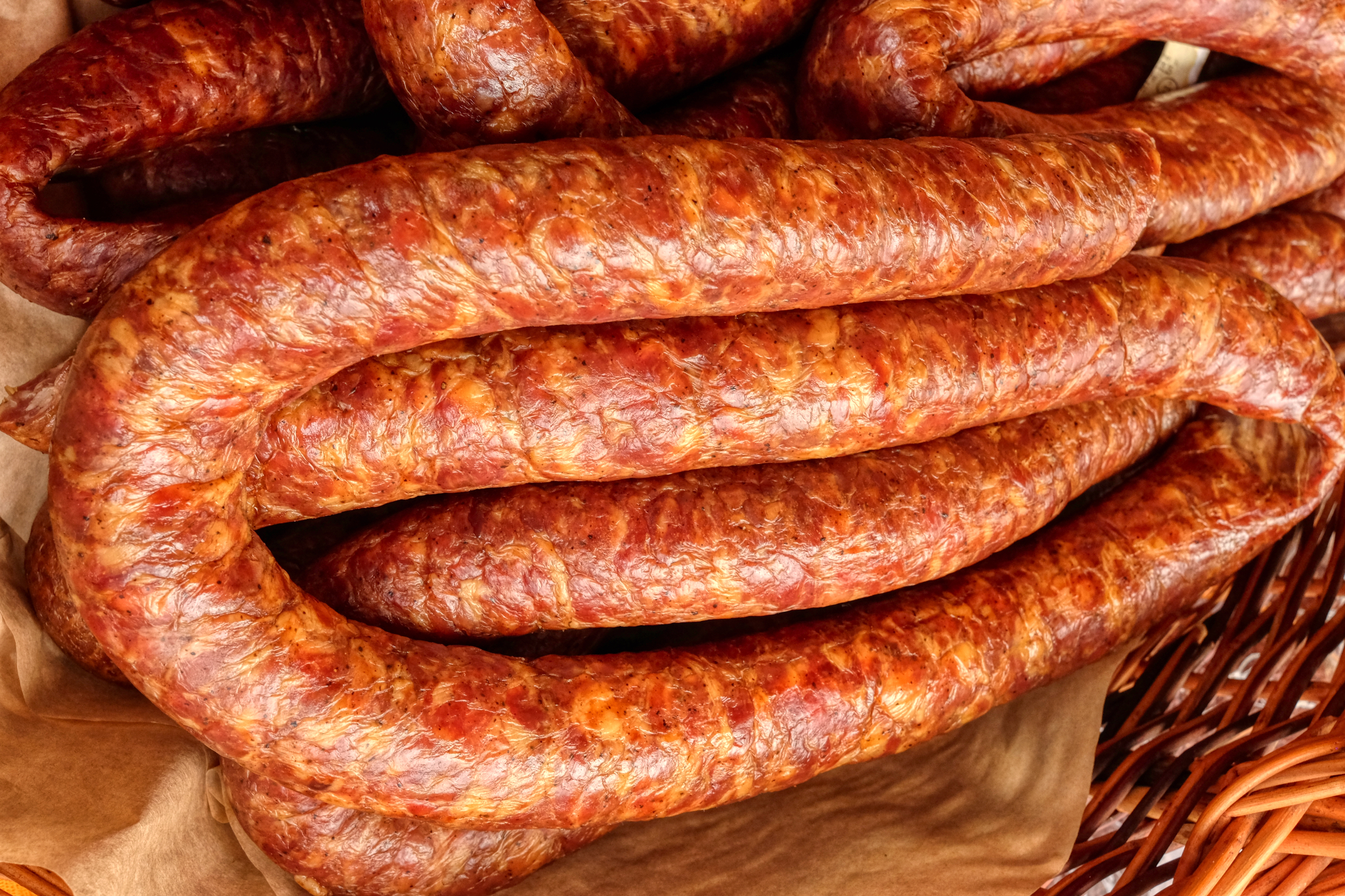 SAUSAGE!!!!
SAUSAGE!!!!
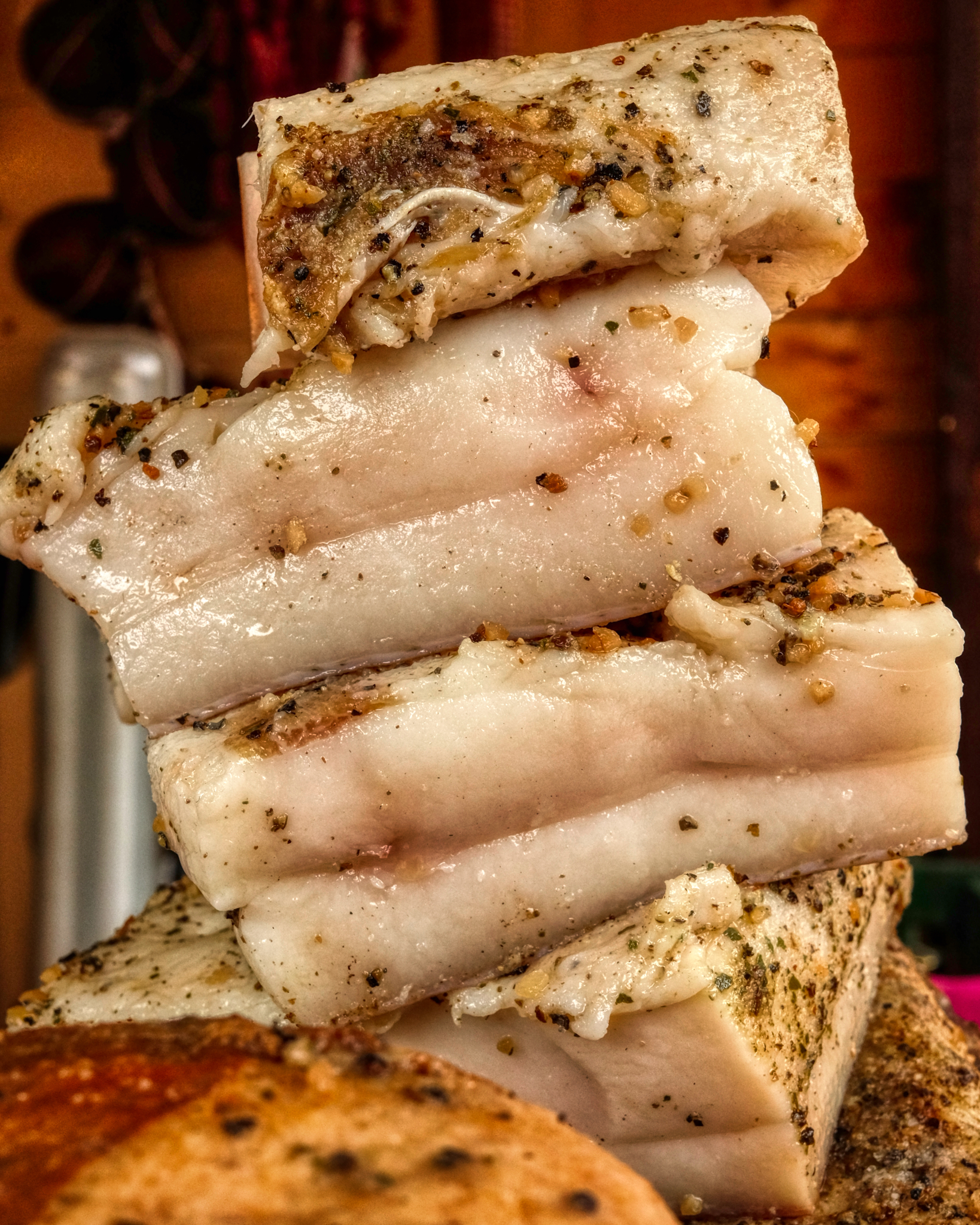 I loved cured and smoked pork fat as a child . . . a few thin slabs on a piece of peasant bread . . . mmmmmm! But I resisted!
I loved cured and smoked pork fat as a child . . . a few thin slabs on a piece of peasant bread . . . mmmmmm! But I resisted!
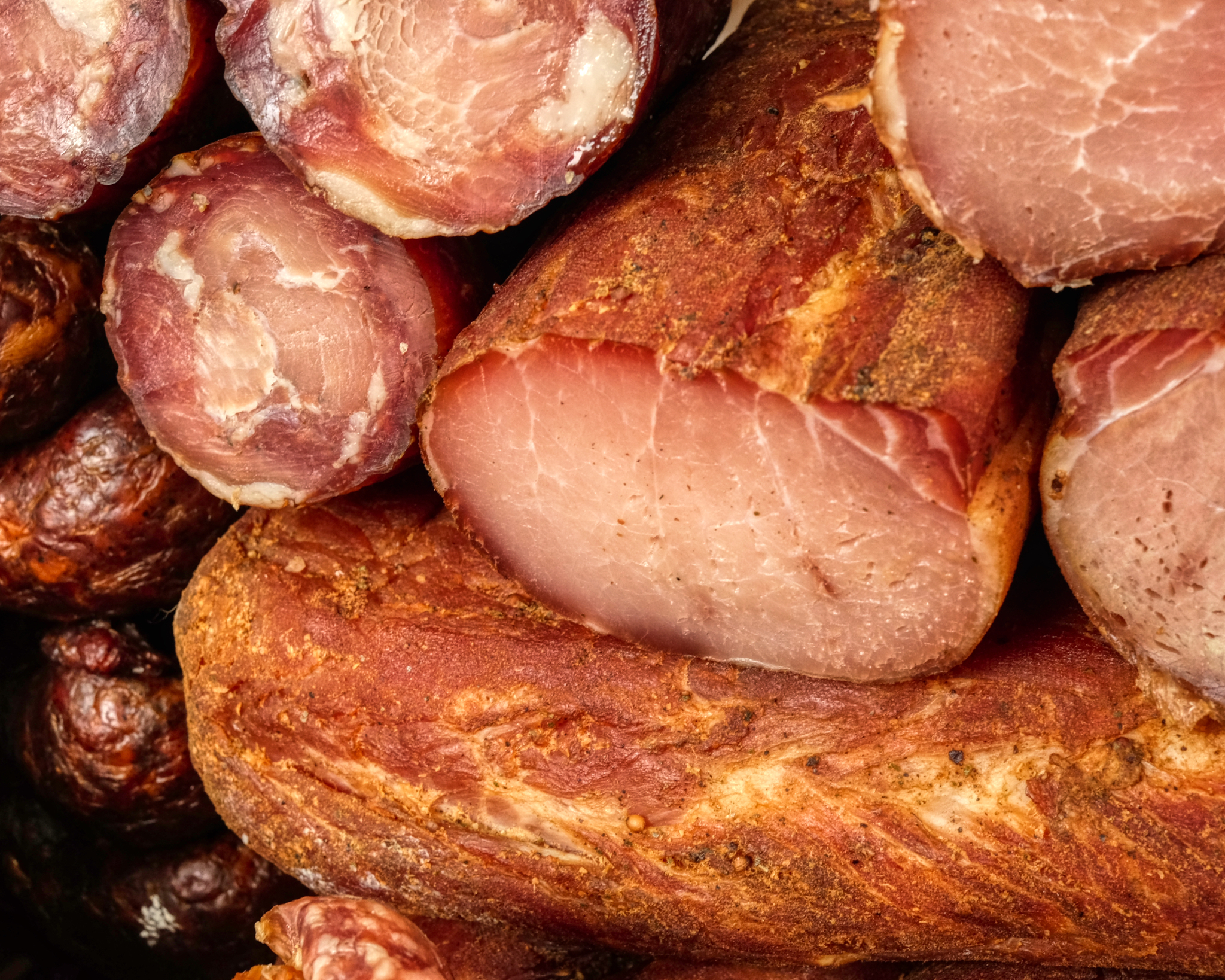 Cures and smoked meats . . . a very Eastern European way of eating . . . and so very tasty!
Cures and smoked meats . . . a very Eastern European way of eating . . . and so very tasty!
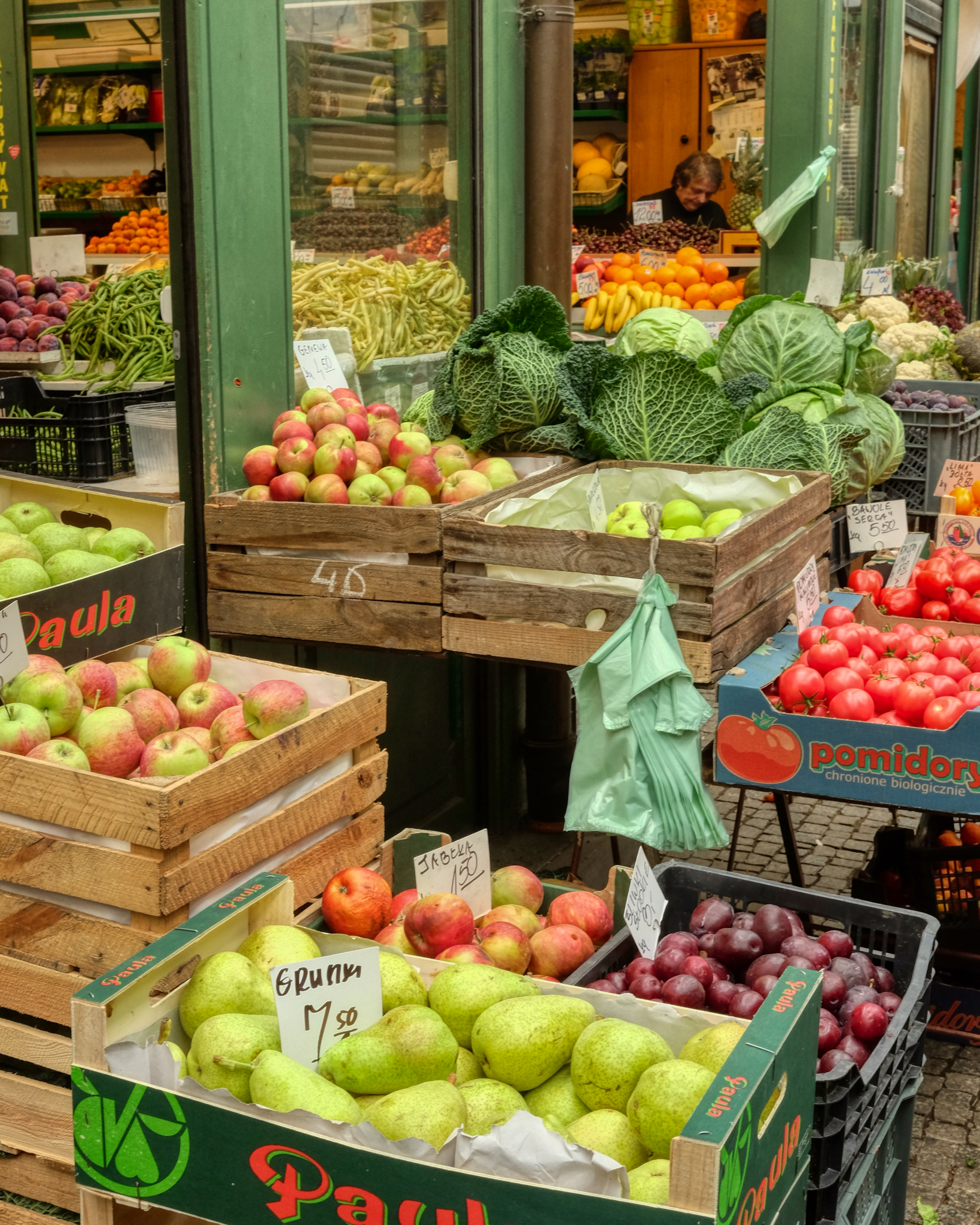 Many of the shops put their fruits and vegetables out on the street.
Many of the shops put their fruits and vegetables out on the street.
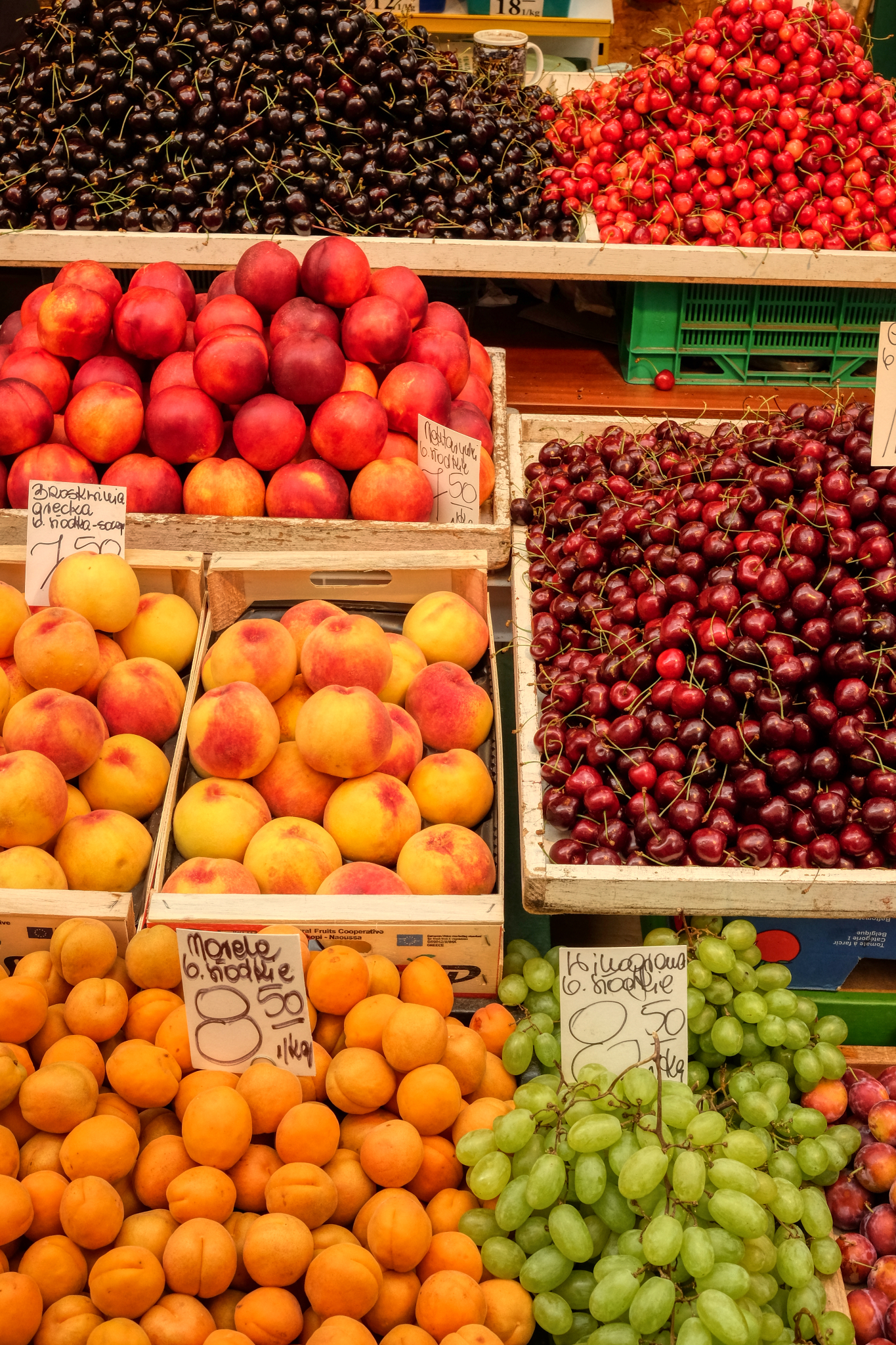 Temperate climate fruits are a real treat for us. These kinds of fruit in Bangkok cost a small fortune, so we went crazy living in Europe for a few years.
Temperate climate fruits are a real treat for us. These kinds of fruit in Bangkok cost a small fortune, so we went crazy living in Europe for a few years.
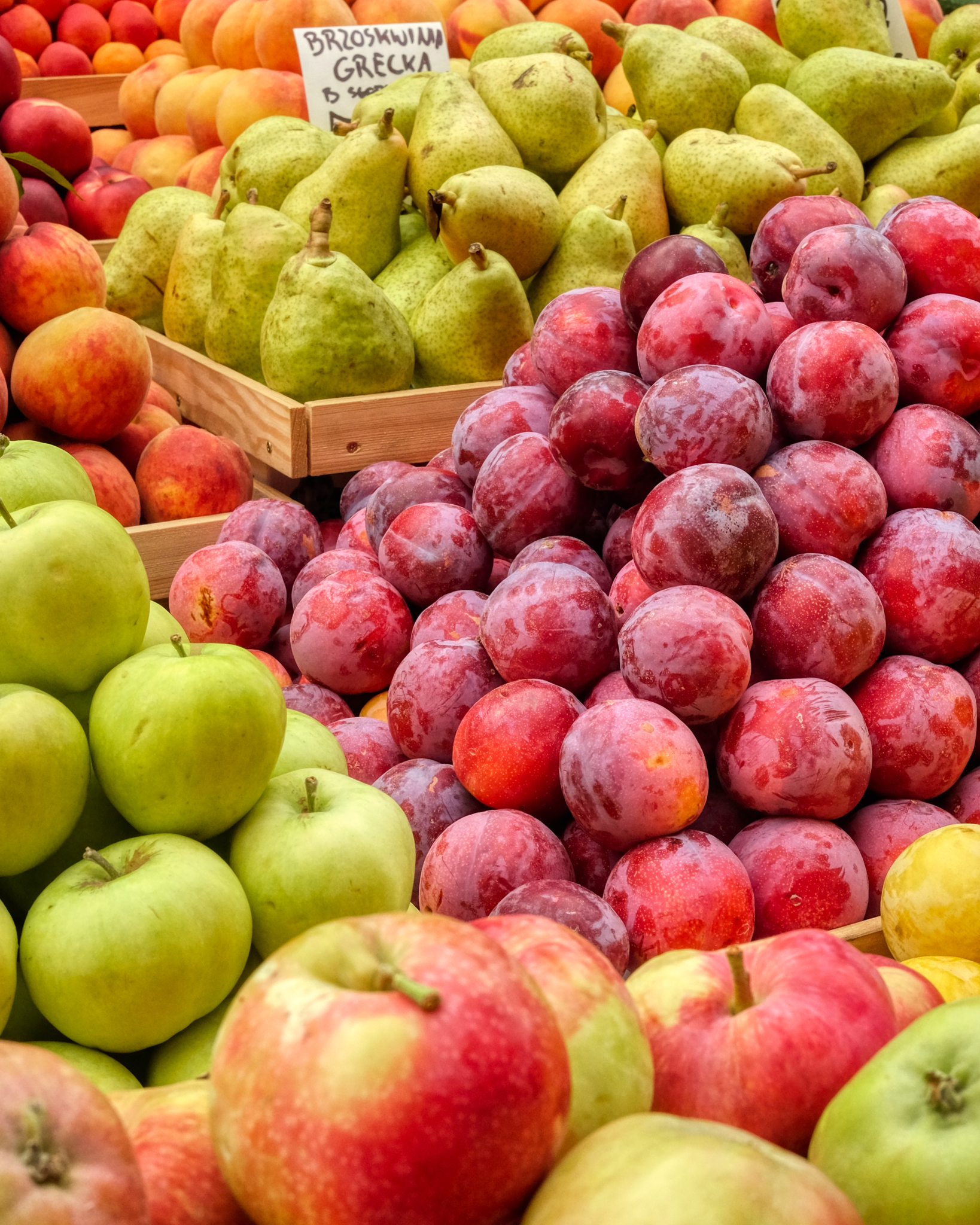 Lovely fruit.
Lovely fruit.
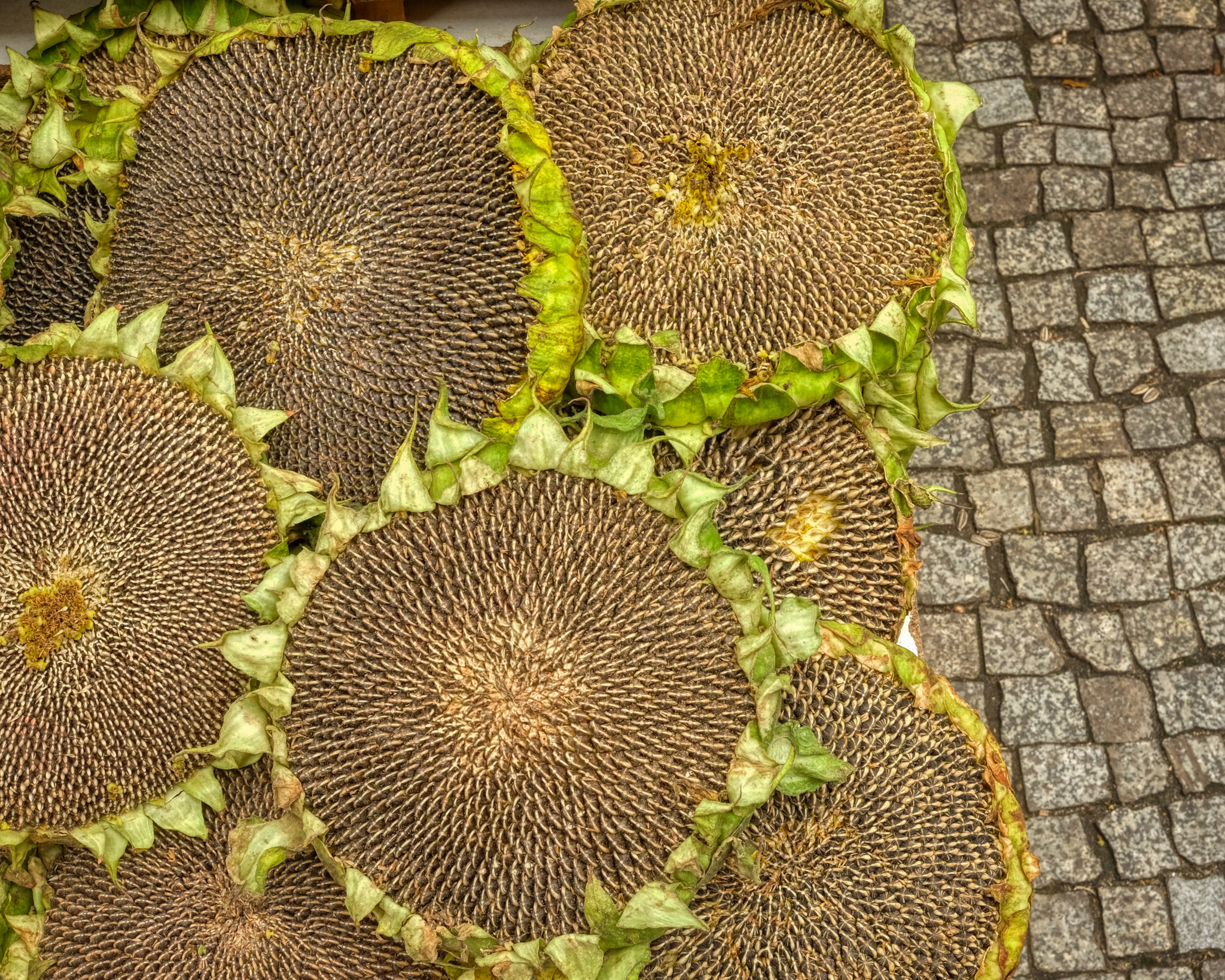 Whole heads of sunflowers . . . that's the way to sell sunflower seeds!
Whole heads of sunflowers . . . that's the way to sell sunflower seeds!
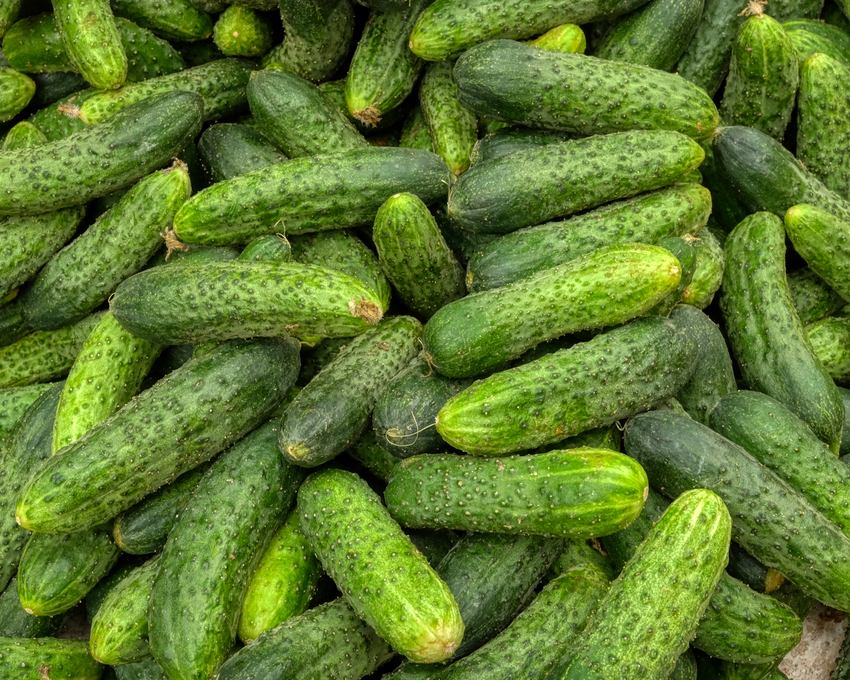 Fresh, crispy cucumbers!
Fresh, crispy cucumbers!
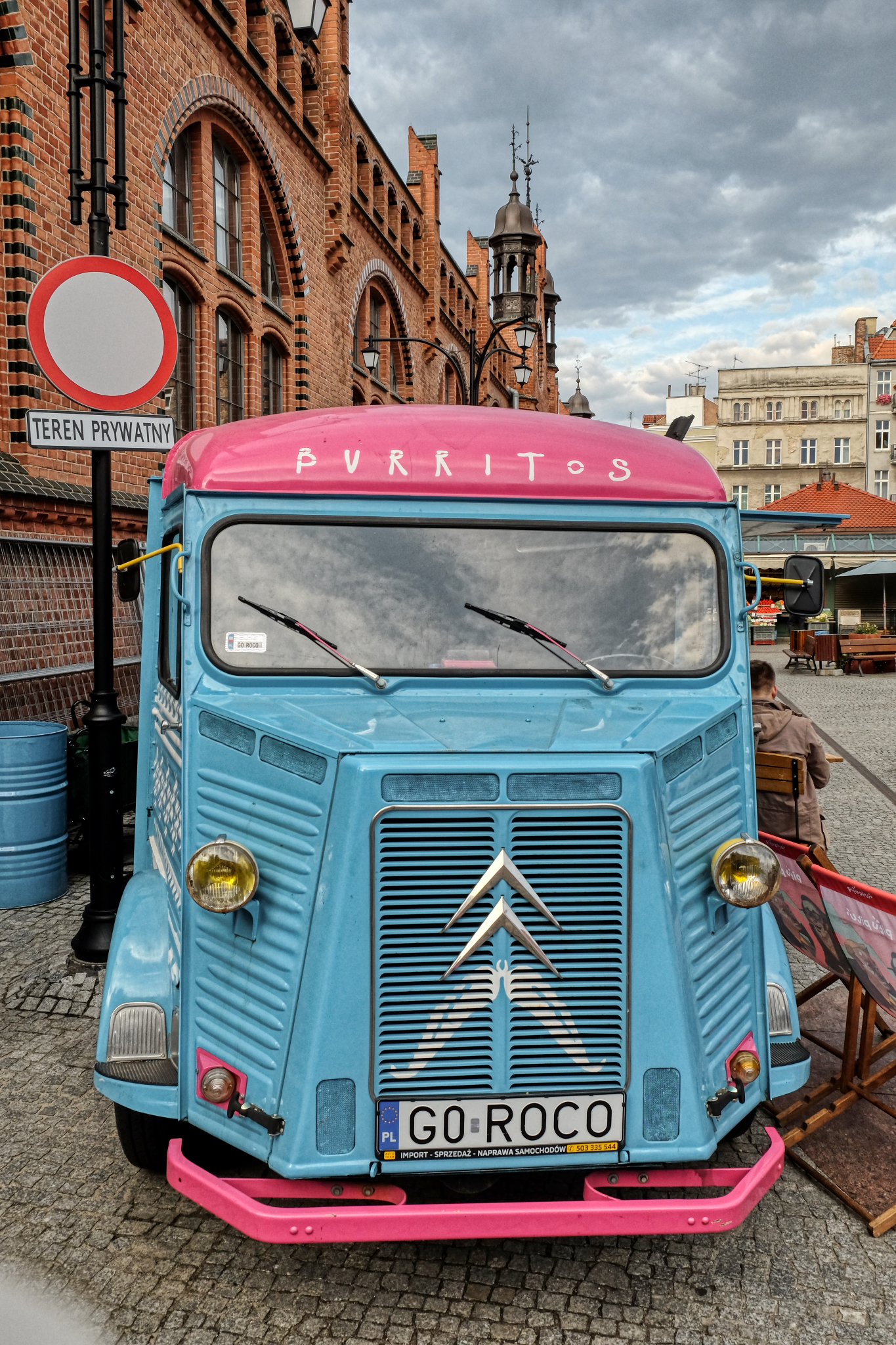 They had every kind of street food at the fair, including this actual Burrito Truck! Amazing! (I didn't buy one, and immediately regreted it!)
They had every kind of street food at the fair, including this actual Burrito Truck! Amazing! (I didn't buy one, and immediately regreted it!)
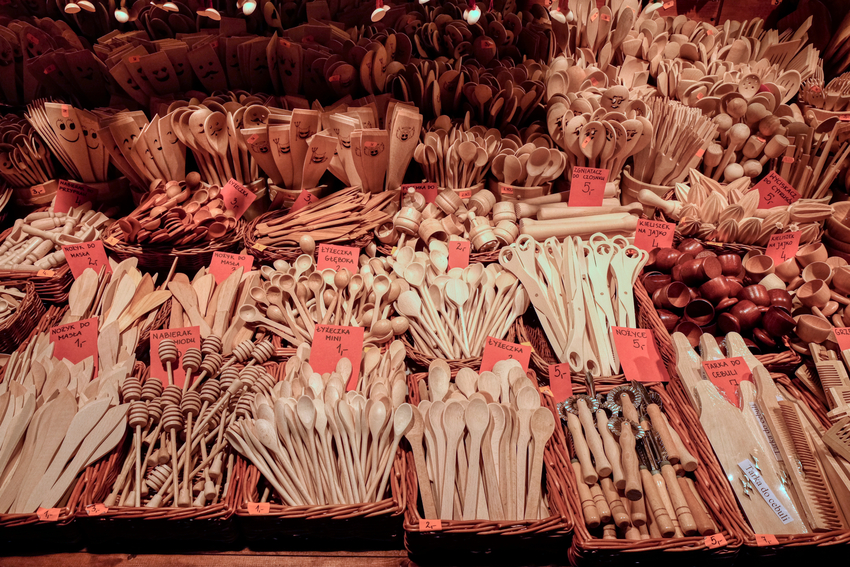 We bought a lot at the wooden spoon stand to take back home to our cottage in Scotland.
We bought a lot at the wooden spoon stand to take back home to our cottage in Scotland.
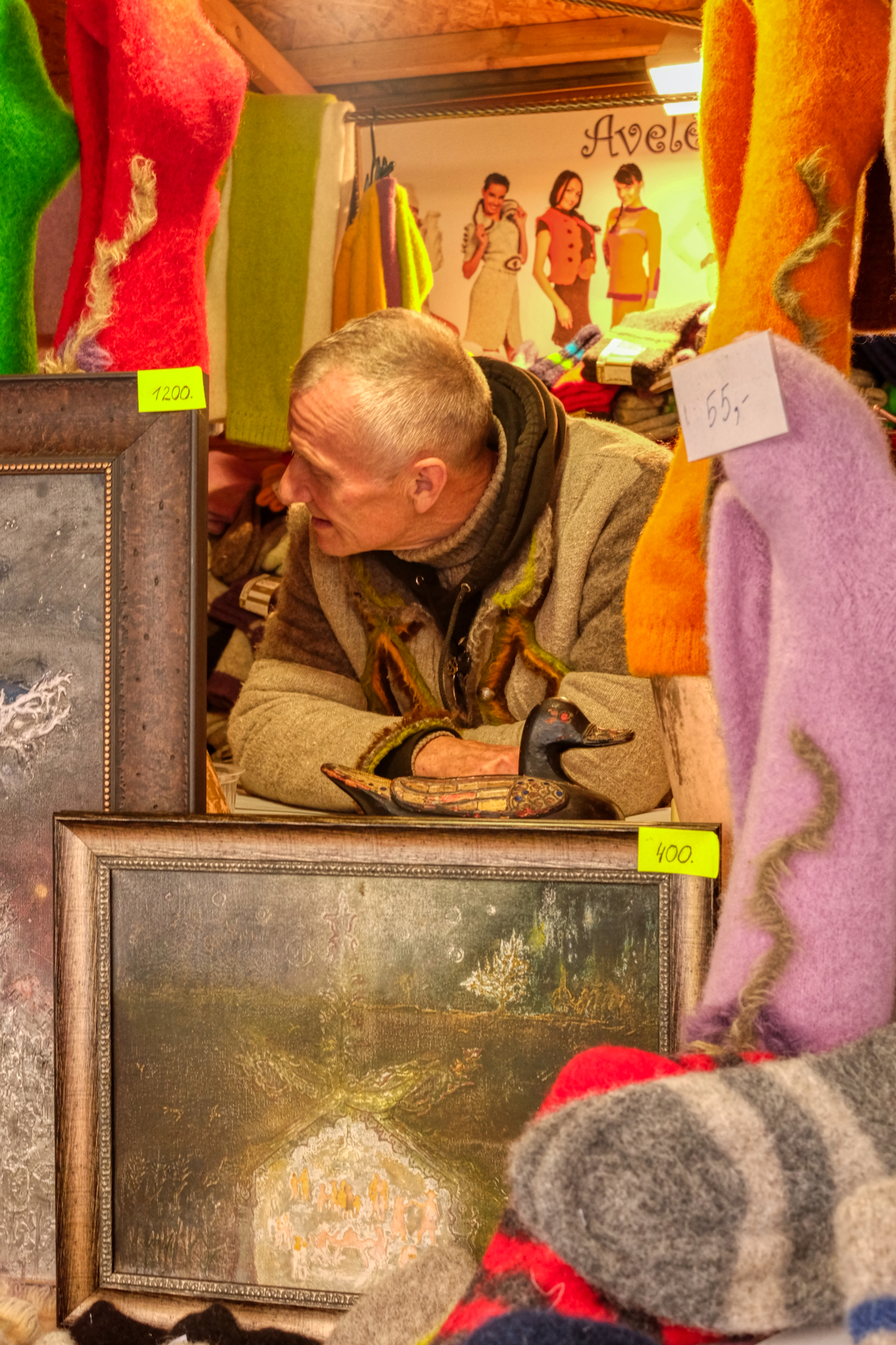 A dealer of art and socks . . .
A dealer of art and socks . . .
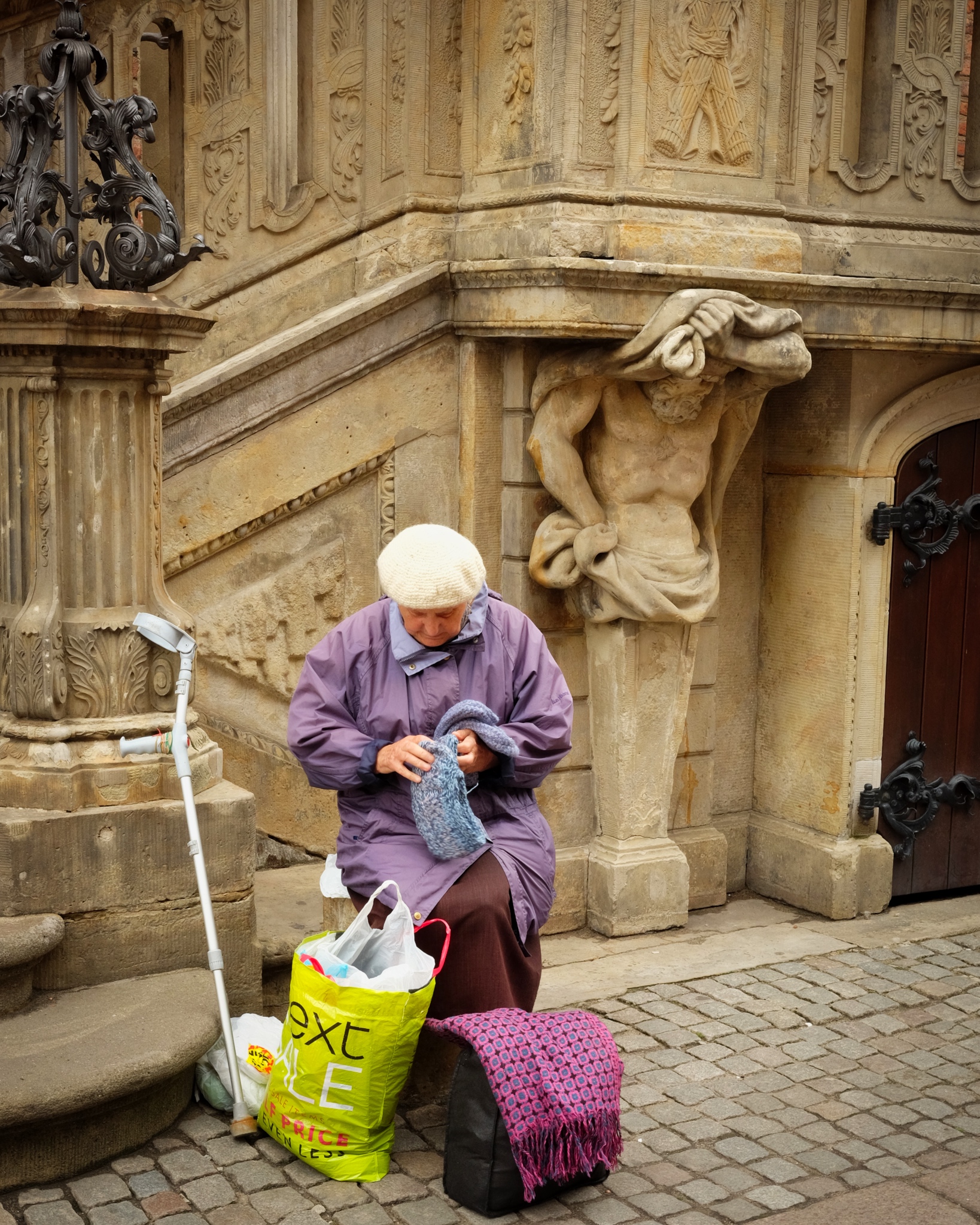 A woman set up her stool and sold her own crocheted items. Sweet.
A woman set up her stool and sold her own crocheted items. Sweet.
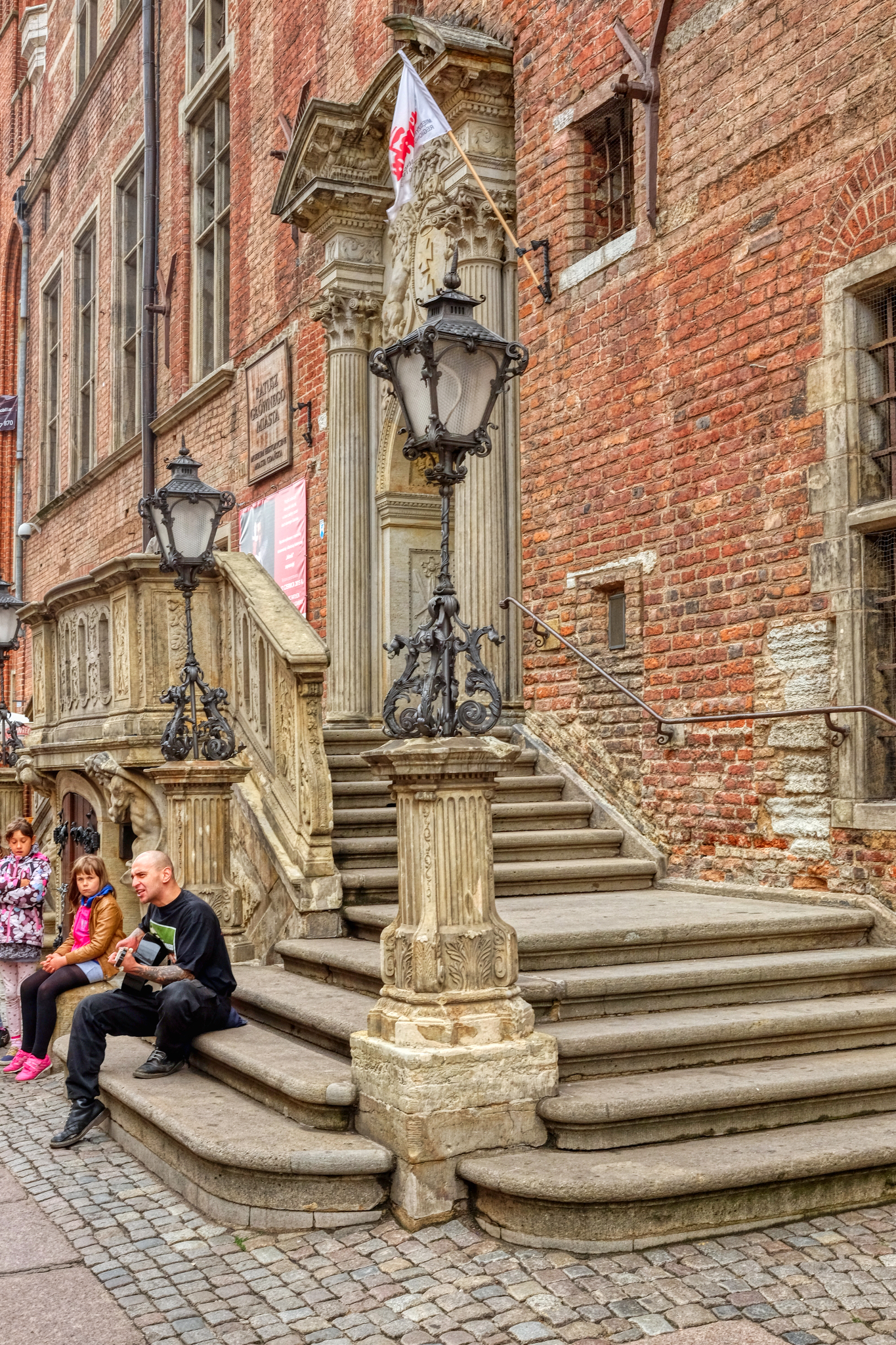 There were many buskers, but this guy was exceptionally good.
There were many buskers, but this guy was exceptionally good.
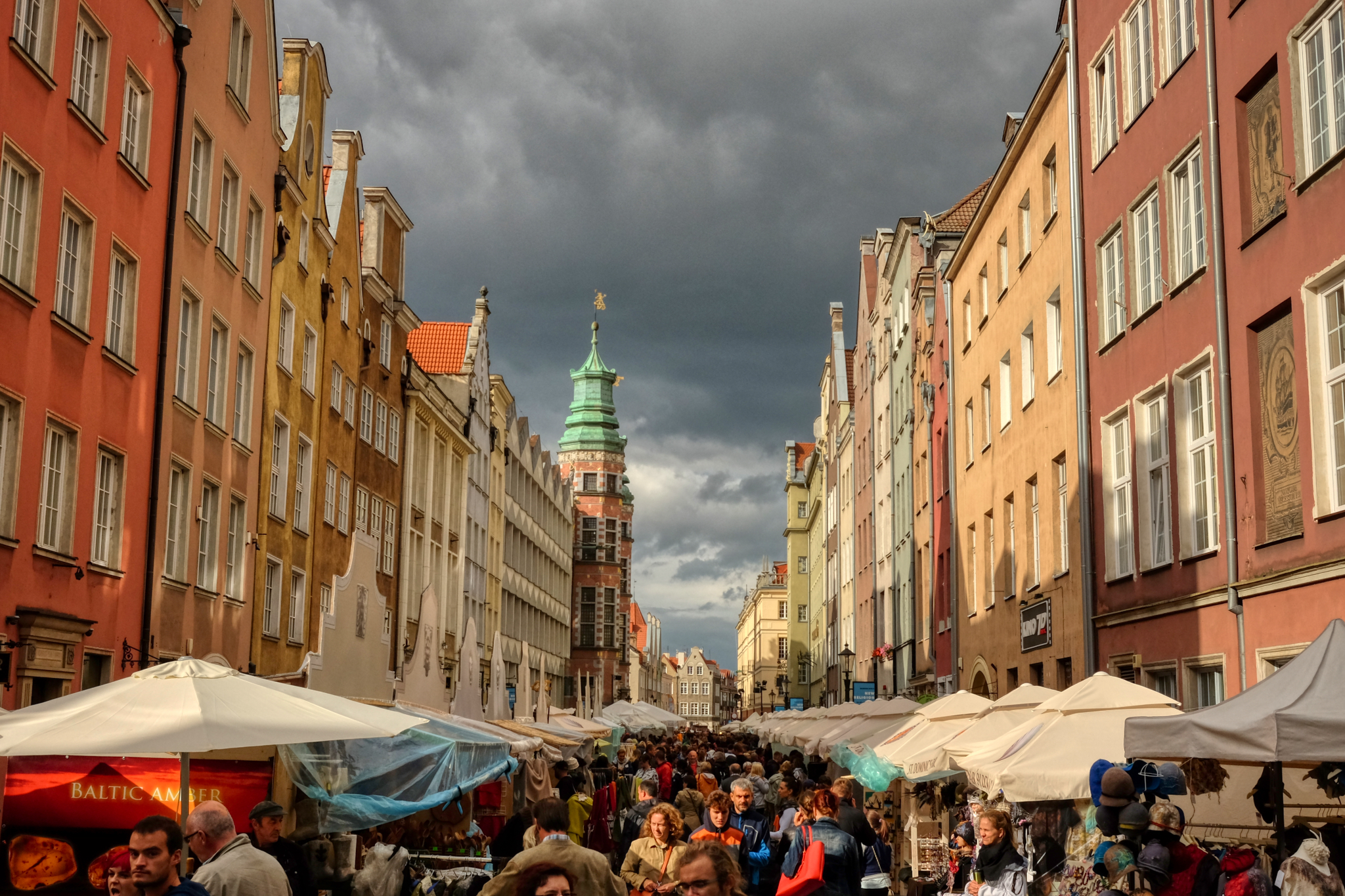 The weather varied from bright sunshine to dark clouds and sudden bursts of rain.
The weather varied from bright sunshine to dark clouds and sudden bursts of rain.
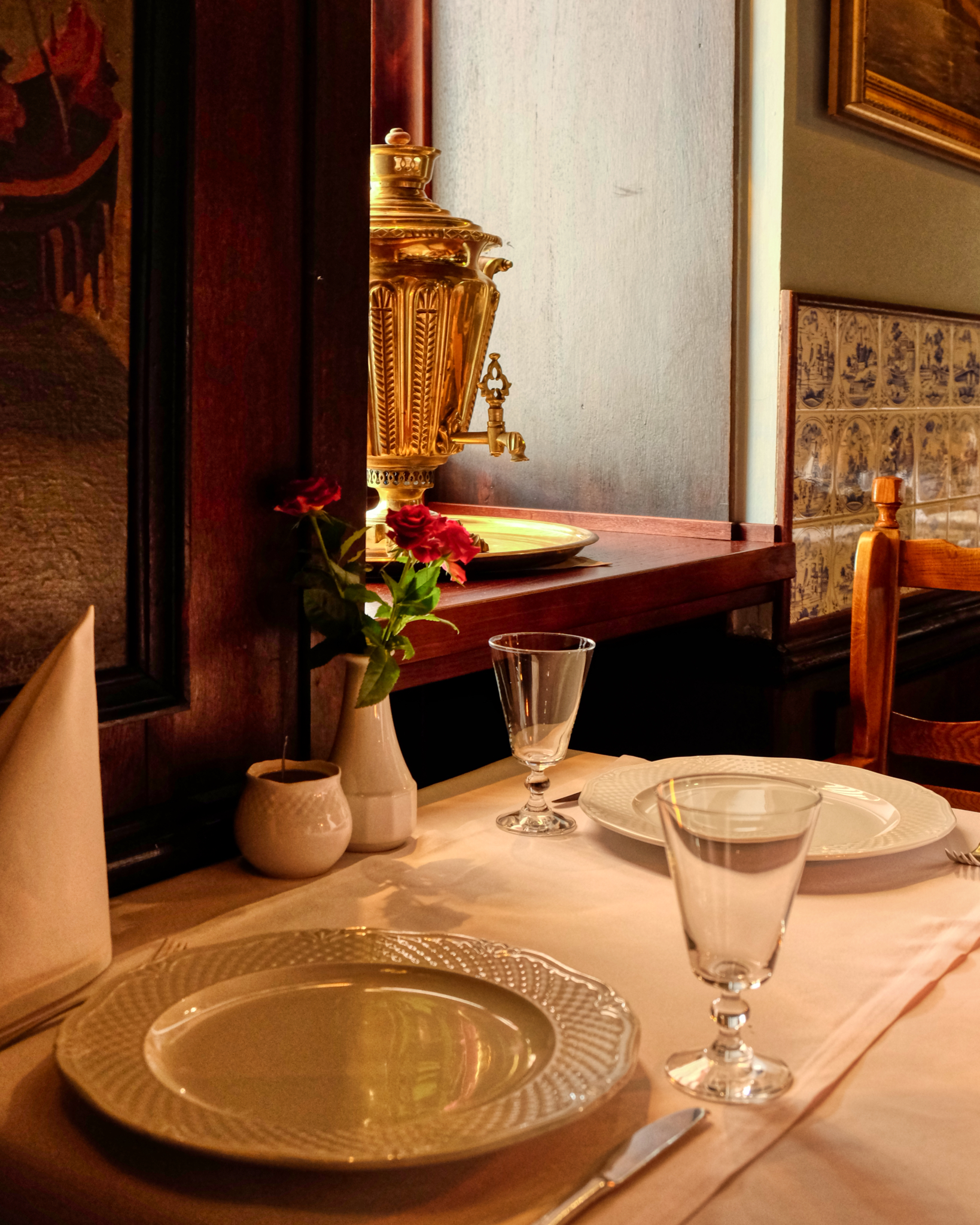 We found thee perfect Old Europe restaurant . . .
We found thee perfect Old Europe restaurant . . .
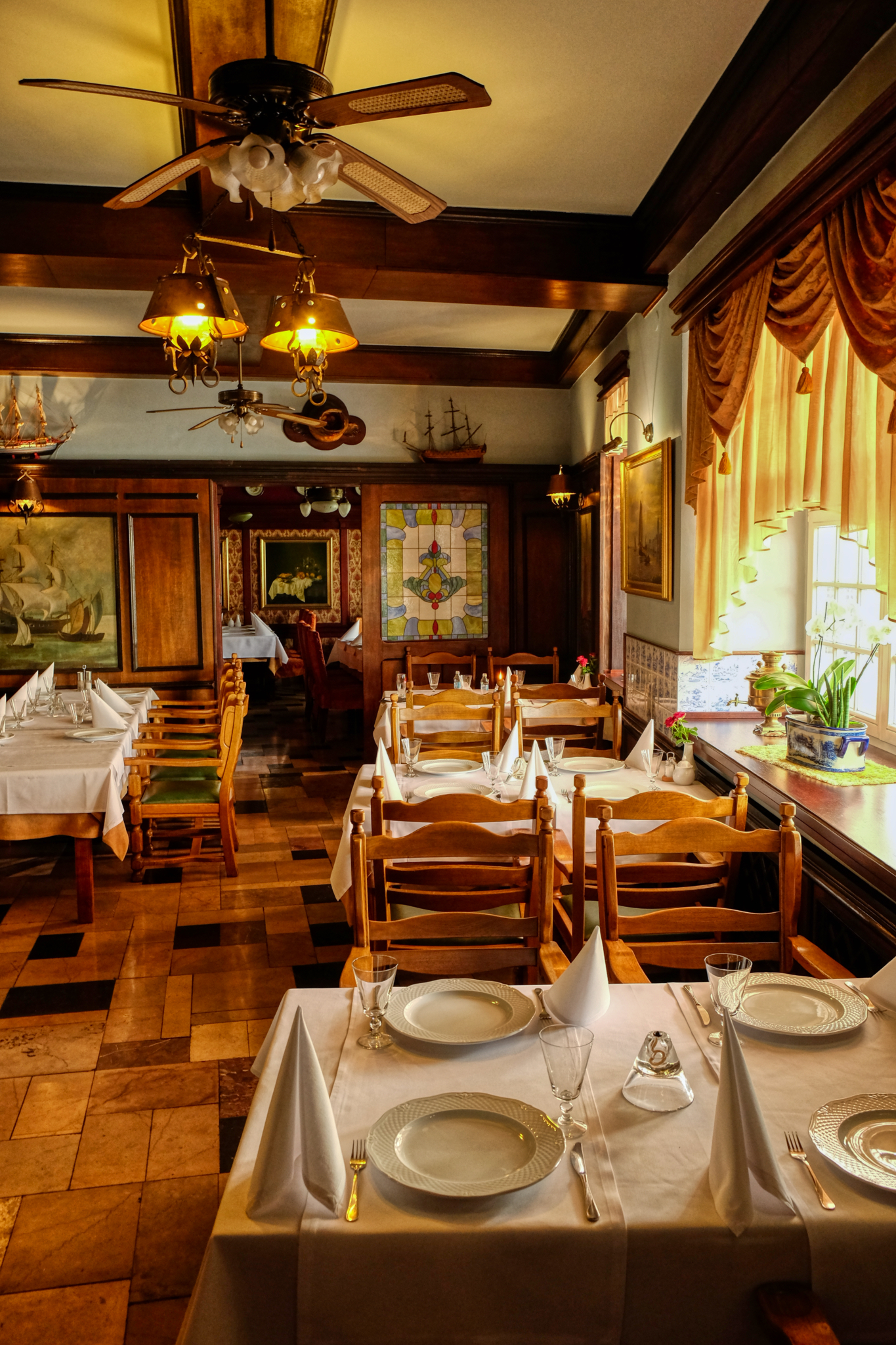 We were hungry for lunch and found this charming old restaurant.
We were hungry for lunch and found this charming old restaurant.
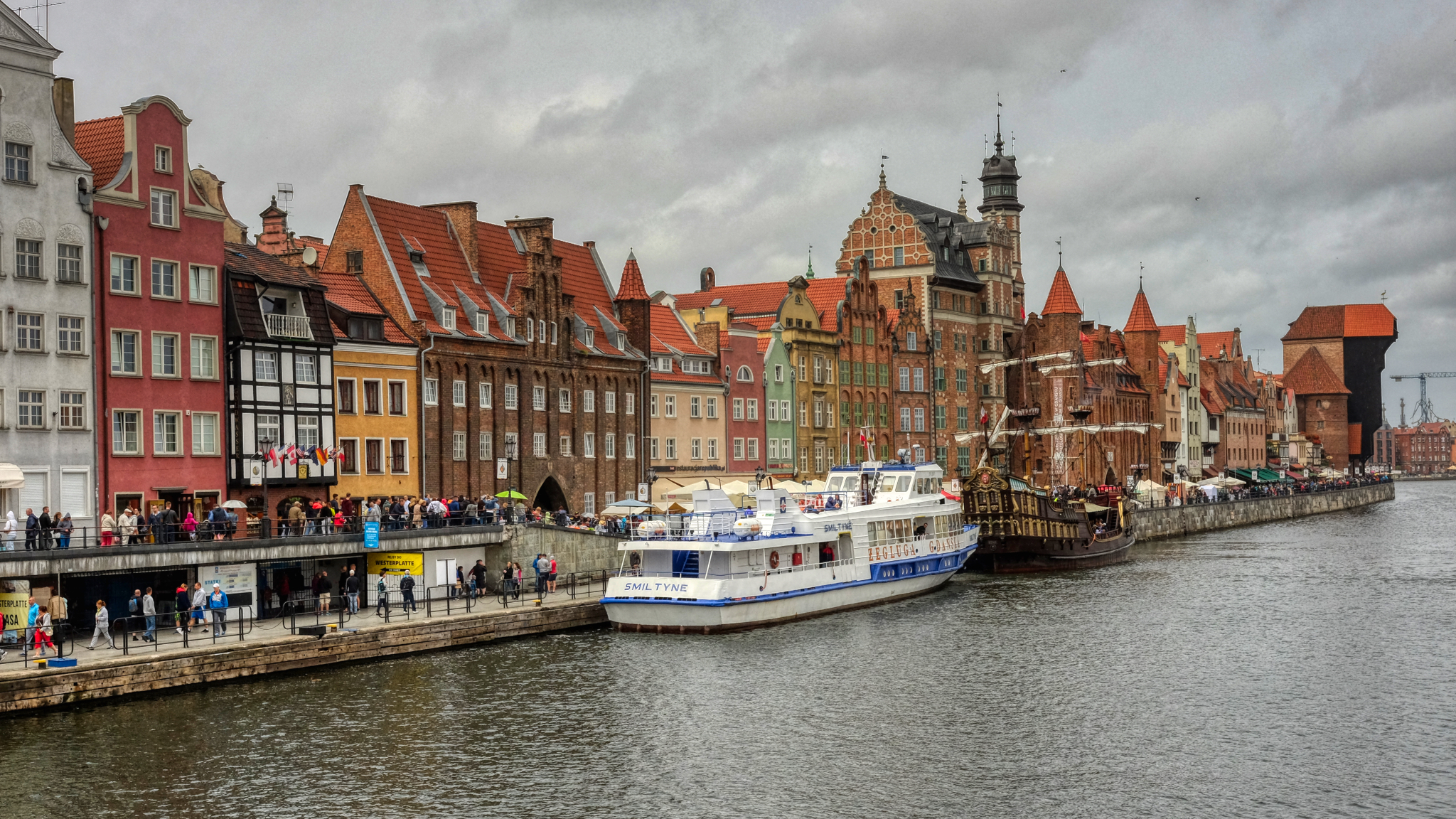 Down along the river quay. A fine medieval dock crane on the far left.
Down along the river quay. A fine medieval dock crane on the far left.
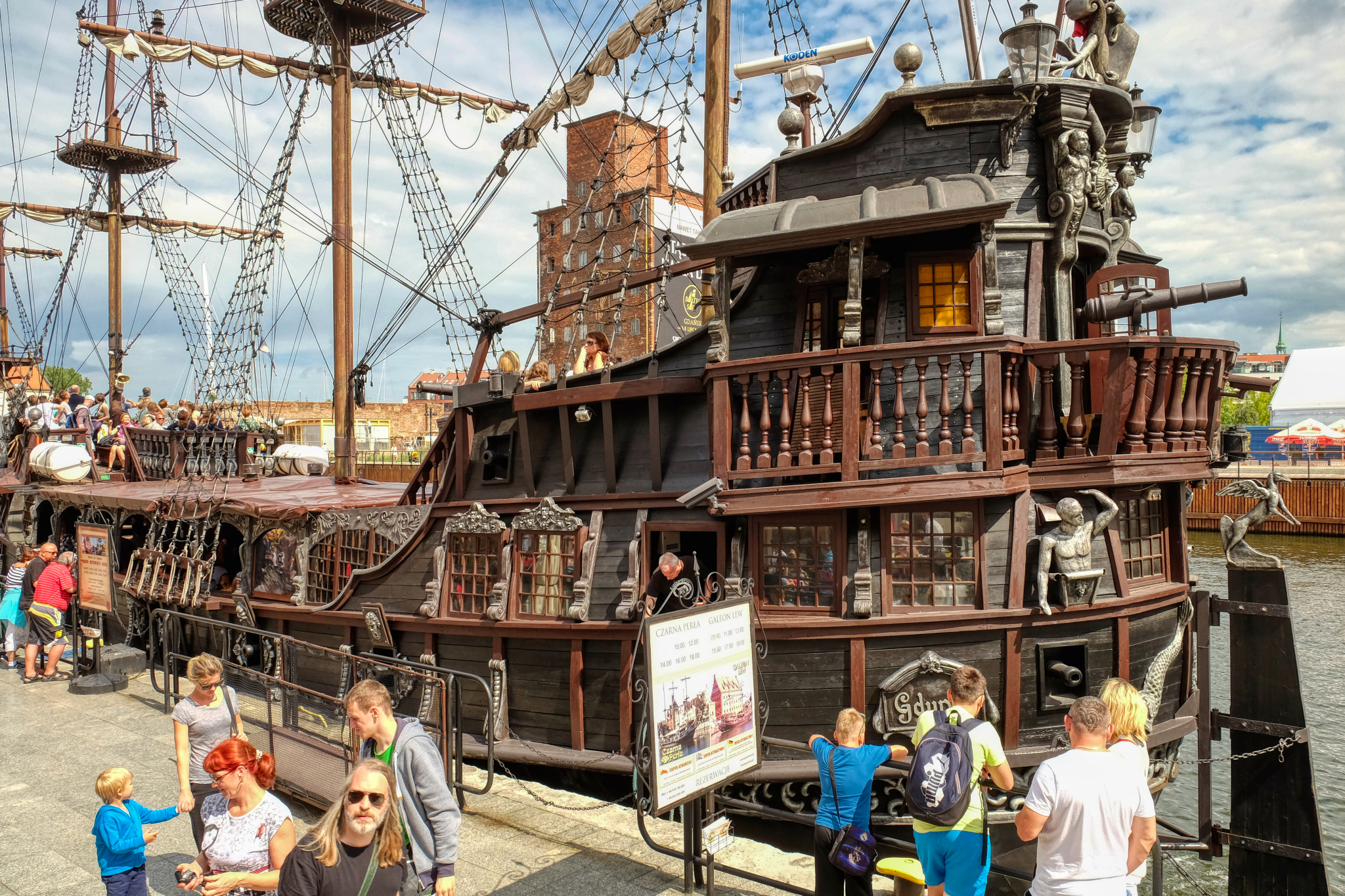 River cruise ship for the tourists . . .
River cruise ship for the tourists . . .
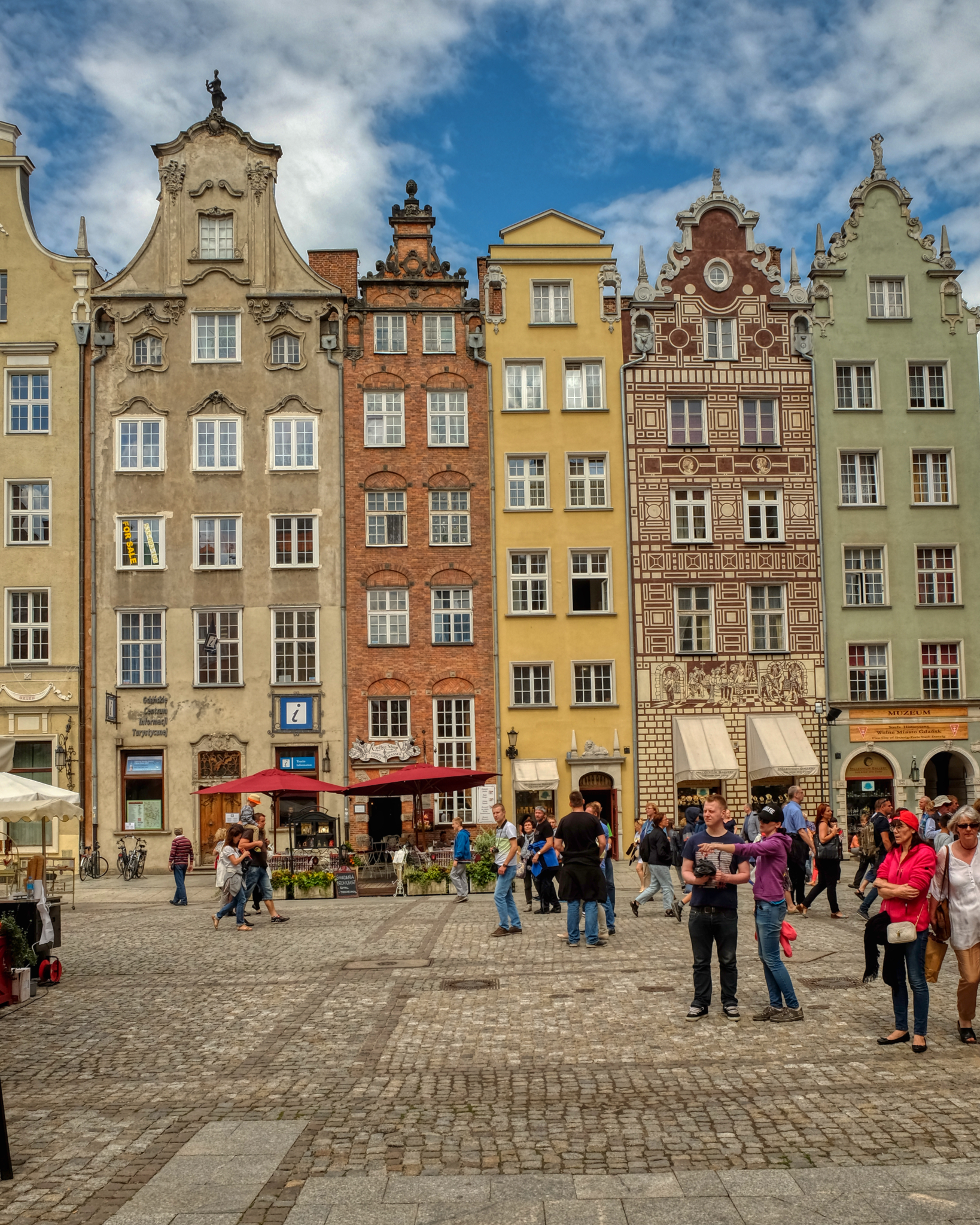 For me, the lure of Gdańsk was the marvelous array of fascinating architecture.
For me, the lure of Gdańsk was the marvelous array of fascinating architecture.
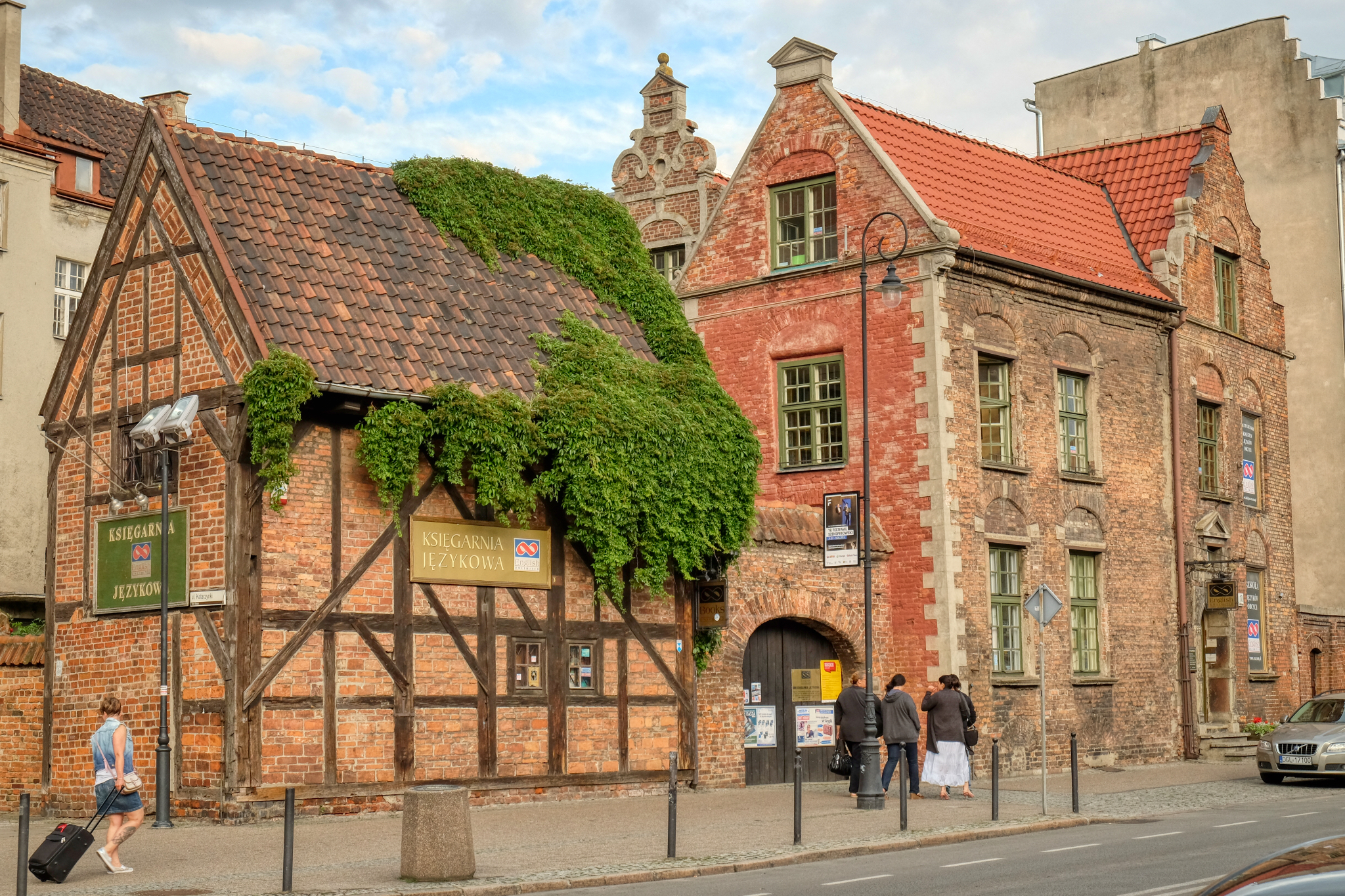 A few of the old buildings survived the carpet bombing.
A few of the old buildings survived the carpet bombing.
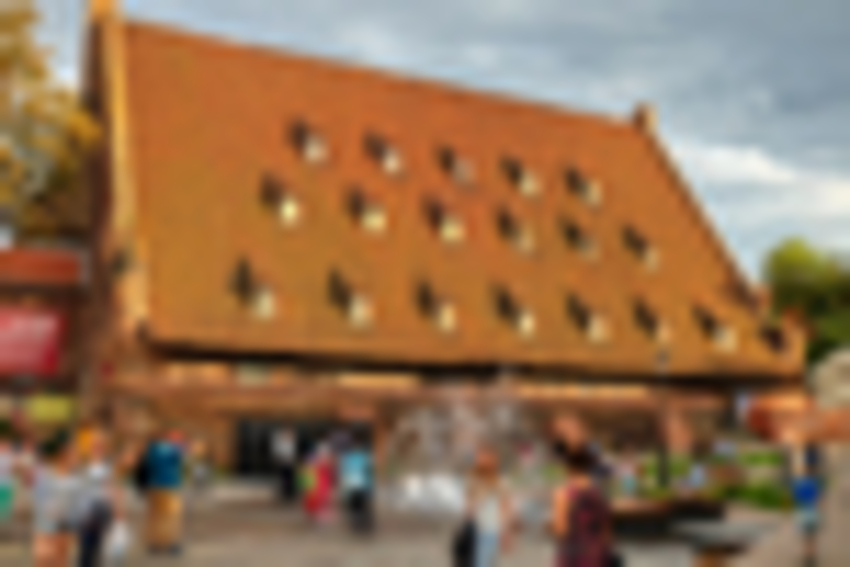 Such an odd building . . . all roof and dormers . . .
Such an odd building . . . all roof and dormers . . .
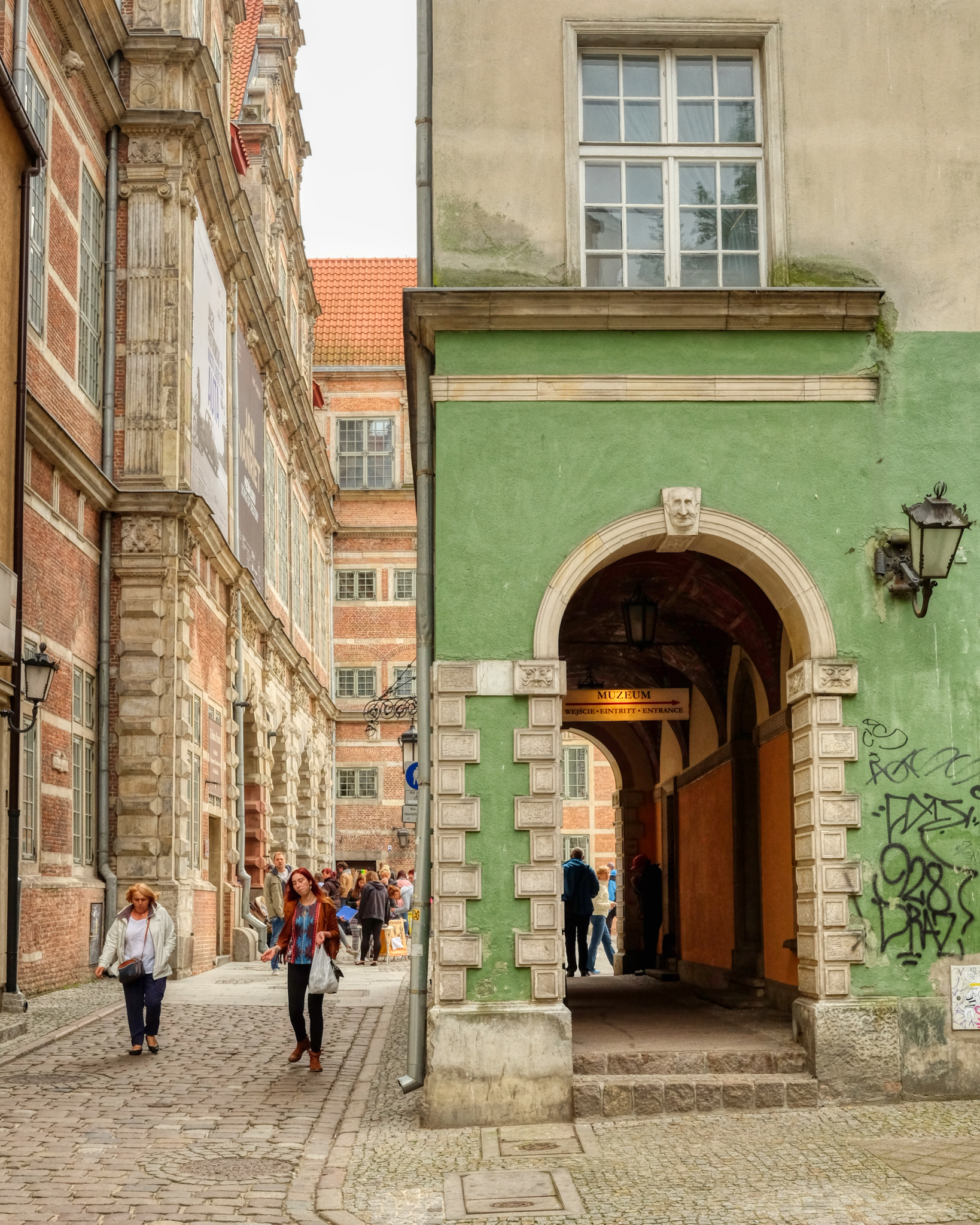 Narrow alleys, cobbles streets, ancient buildings . . . the charms of old Europe.
Narrow alleys, cobbles streets, ancient buildings . . . the charms of old Europe.
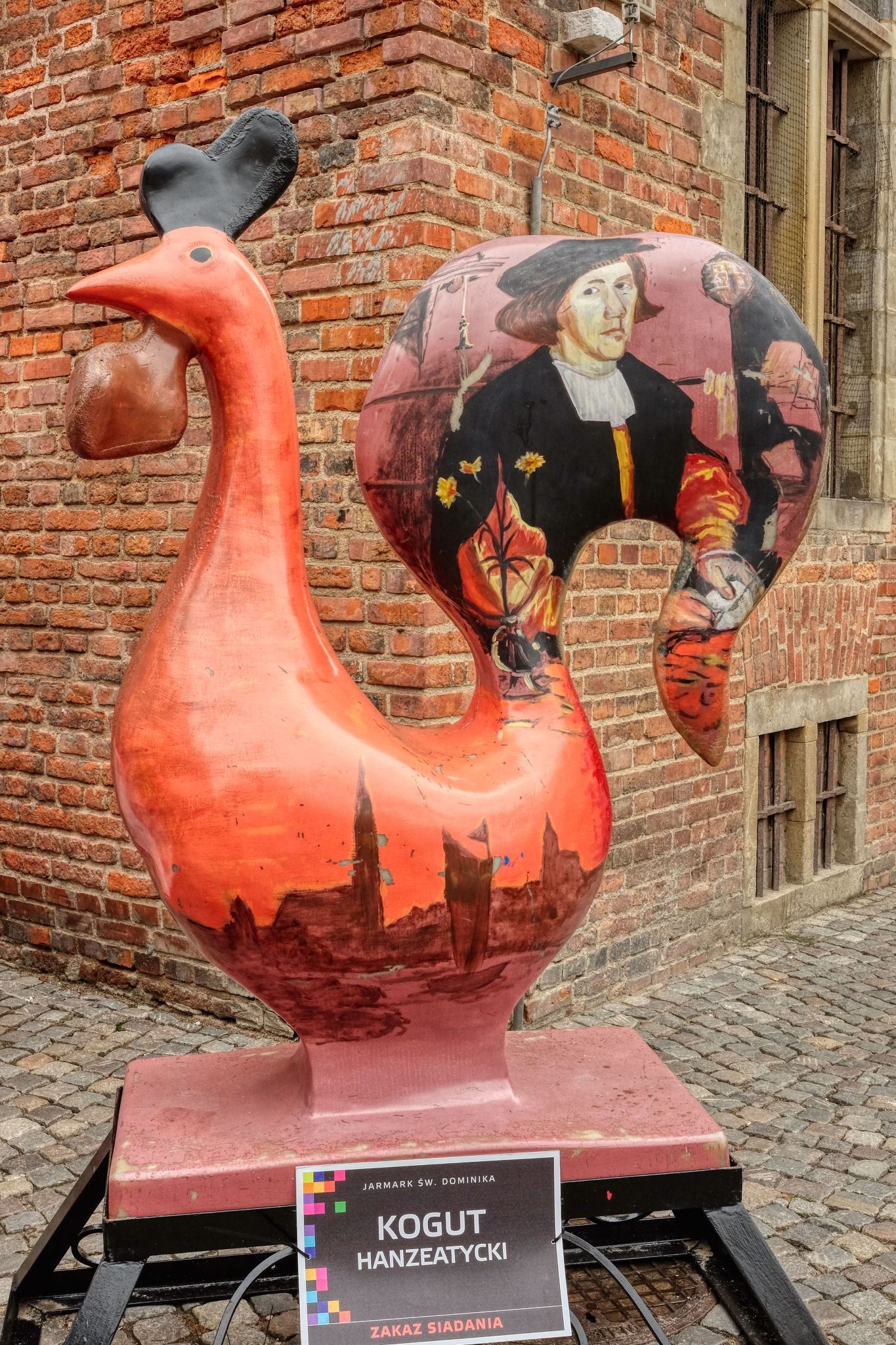 Here and there . . . public art . . .
Here and there . . . public art . . .
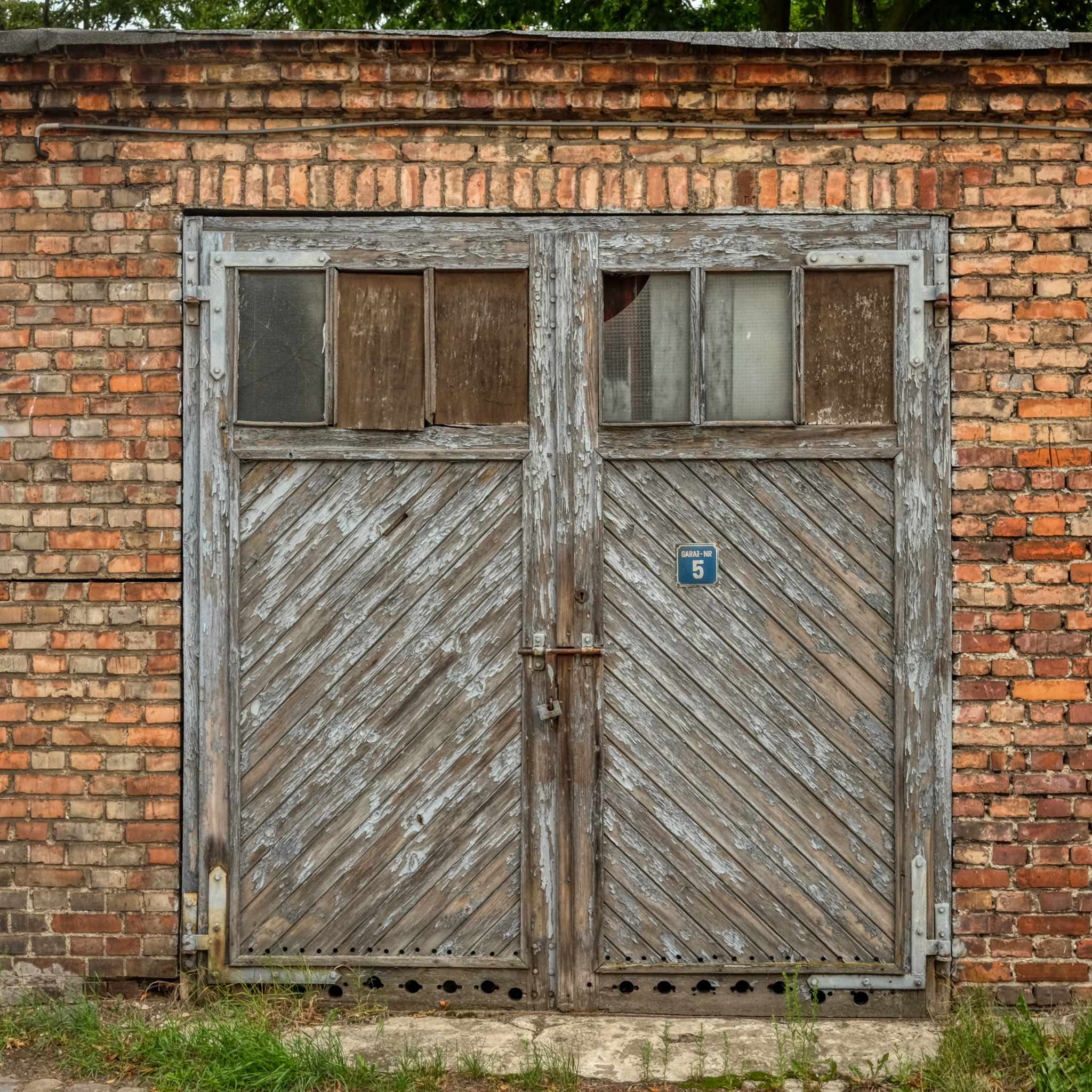 My love of old doors, walls and windows was satisfied in a big way in Gdańsk!
My love of old doors, walls and windows was satisfied in a big way in Gdańsk!
 I was told by a shopkeeper that some of these grand old doors and their stone casings were pulled from the rubble after the bombings and restored and reused. Marvelous.
I was told by a shopkeeper that some of these grand old doors and their stone casings were pulled from the rubble after the bombings and restored and reused. Marvelous.
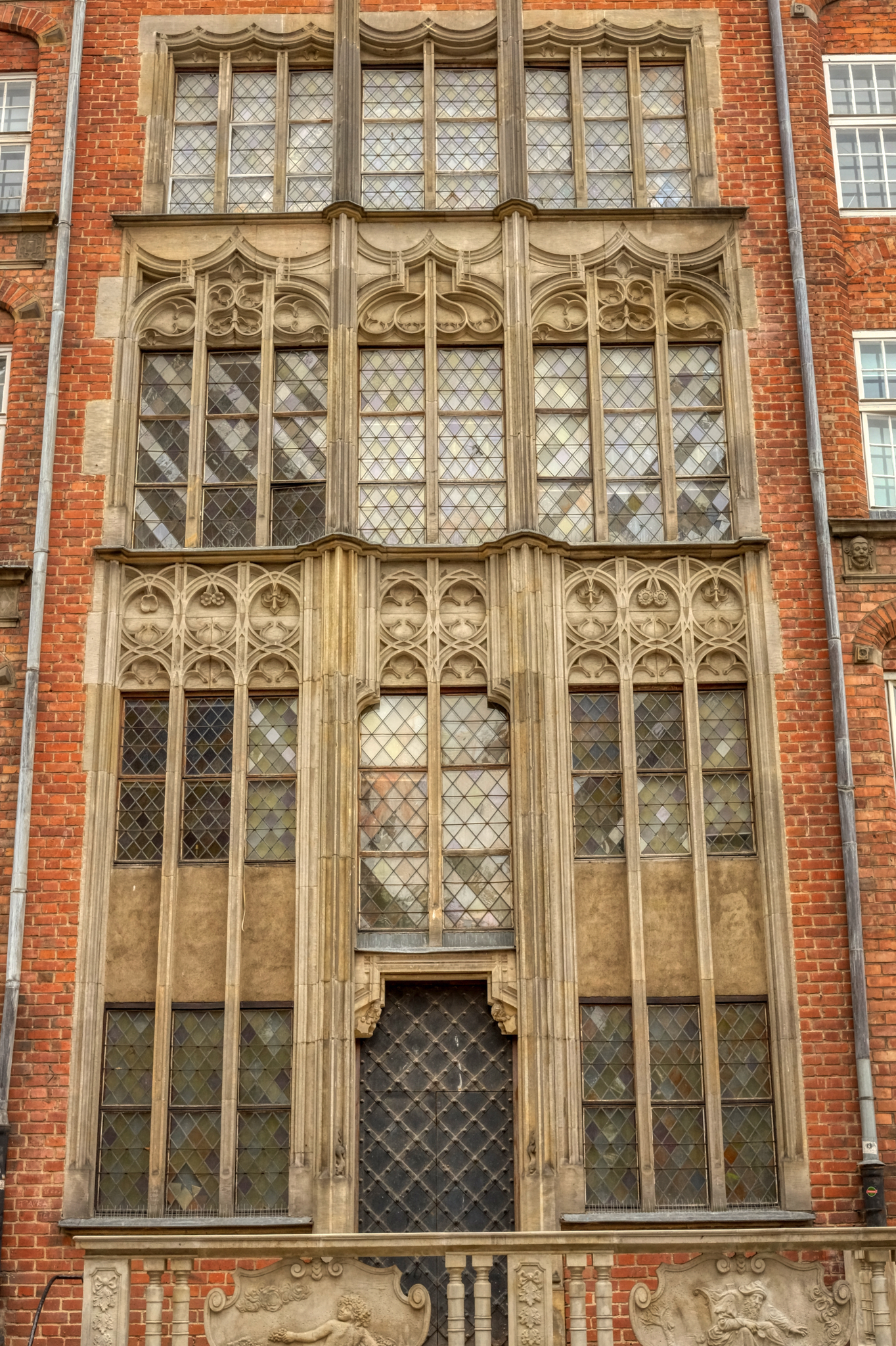 I marveled at these windows . . . exquisite!
I marveled at these windows . . . exquisite!
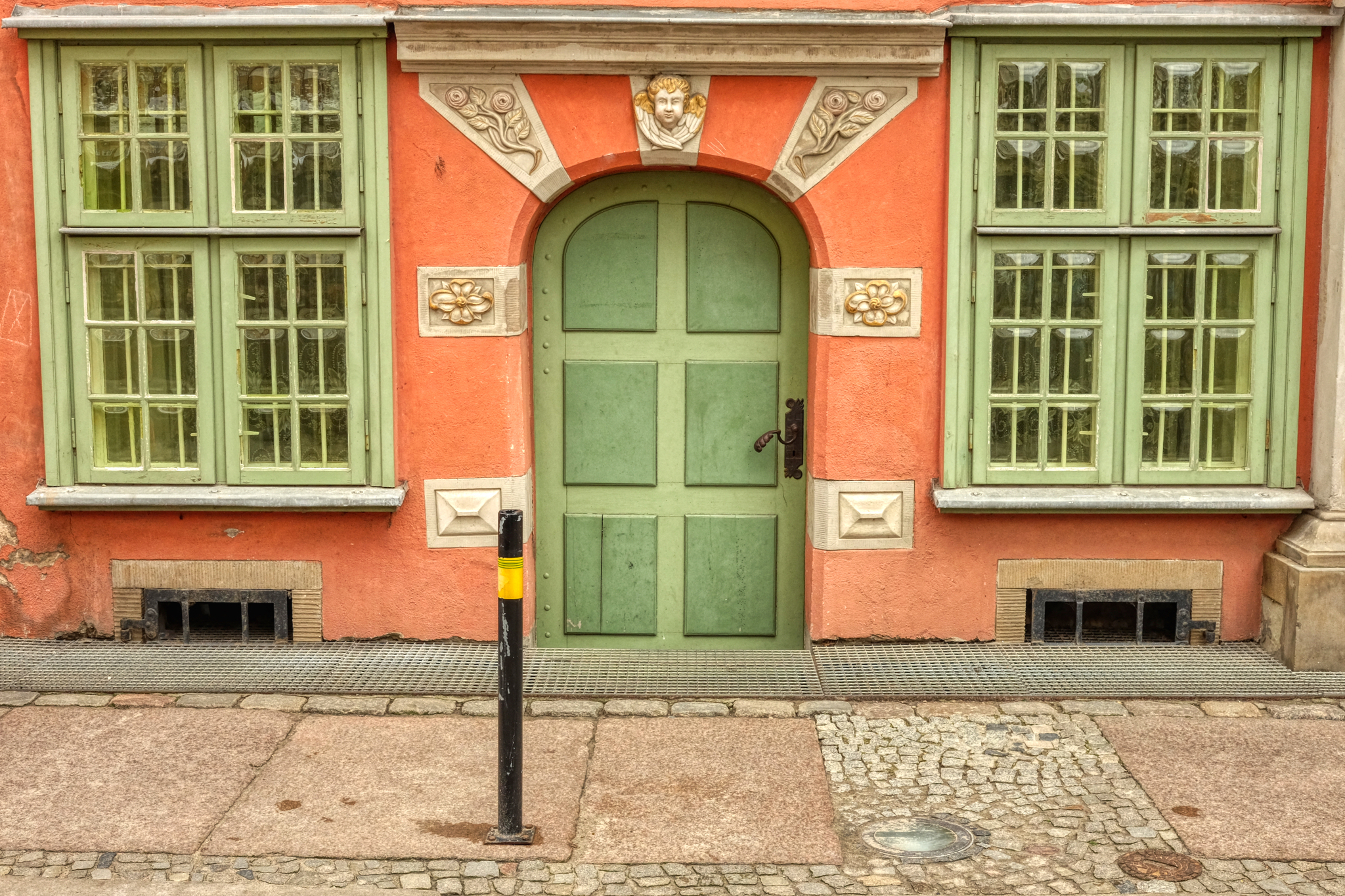 Such lovely symmetry, color, shape . . .
Such lovely symmetry, color, shape . . .
 A gate from the time of horse drawn carriages . . .
A gate from the time of horse drawn carriages . . .
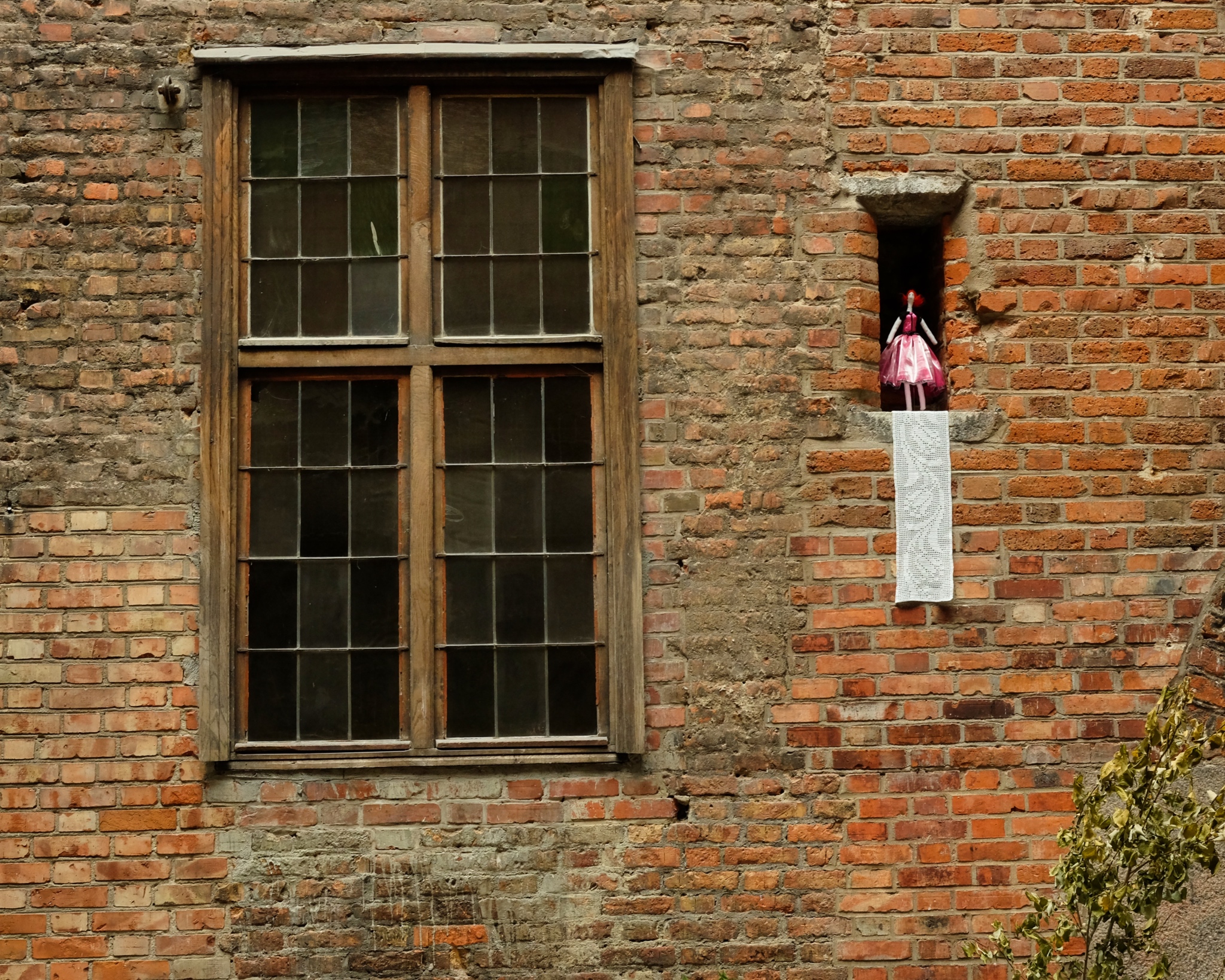 I loved the whimsical display.
I loved the whimsical display.
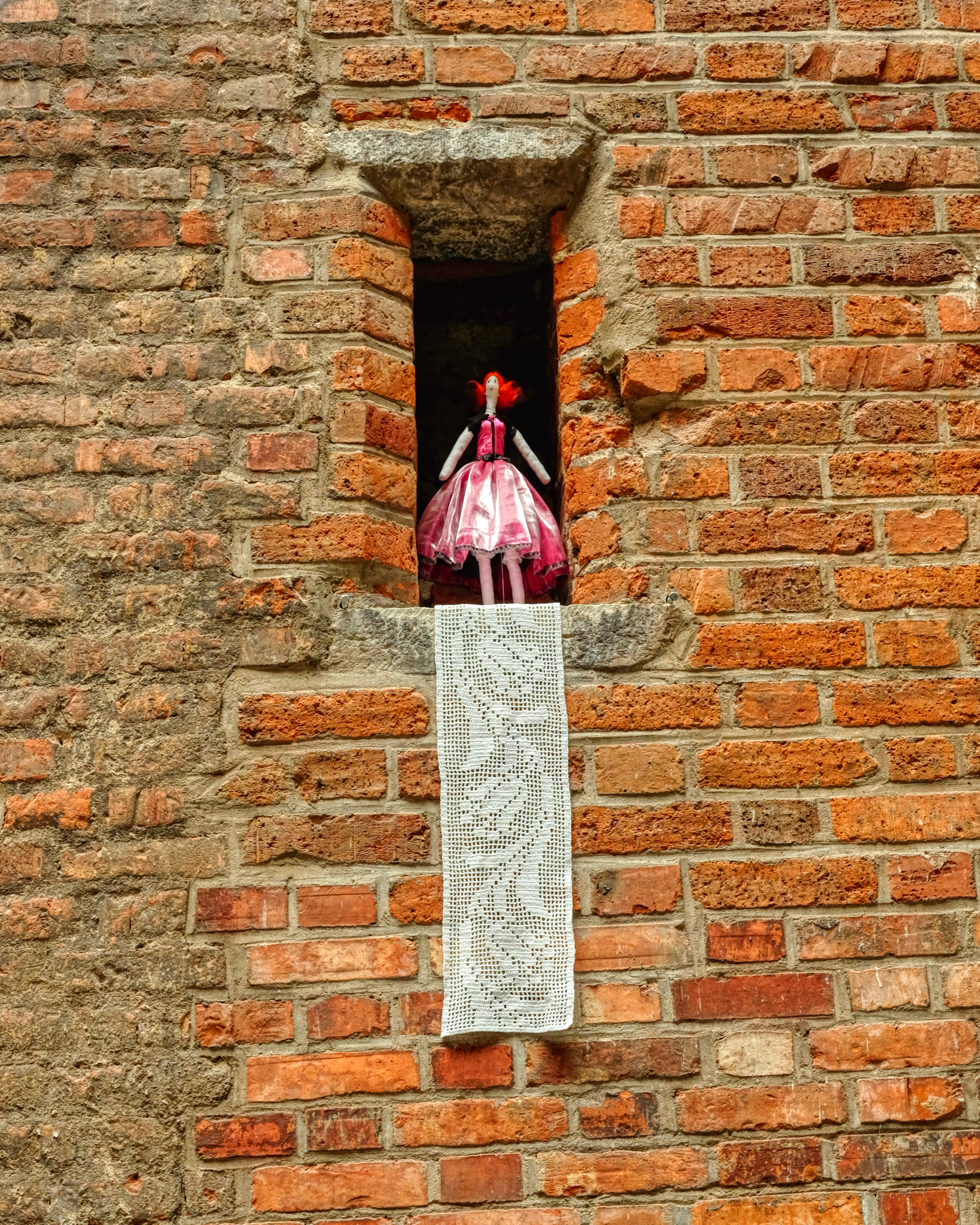 So sweet.
So sweet.
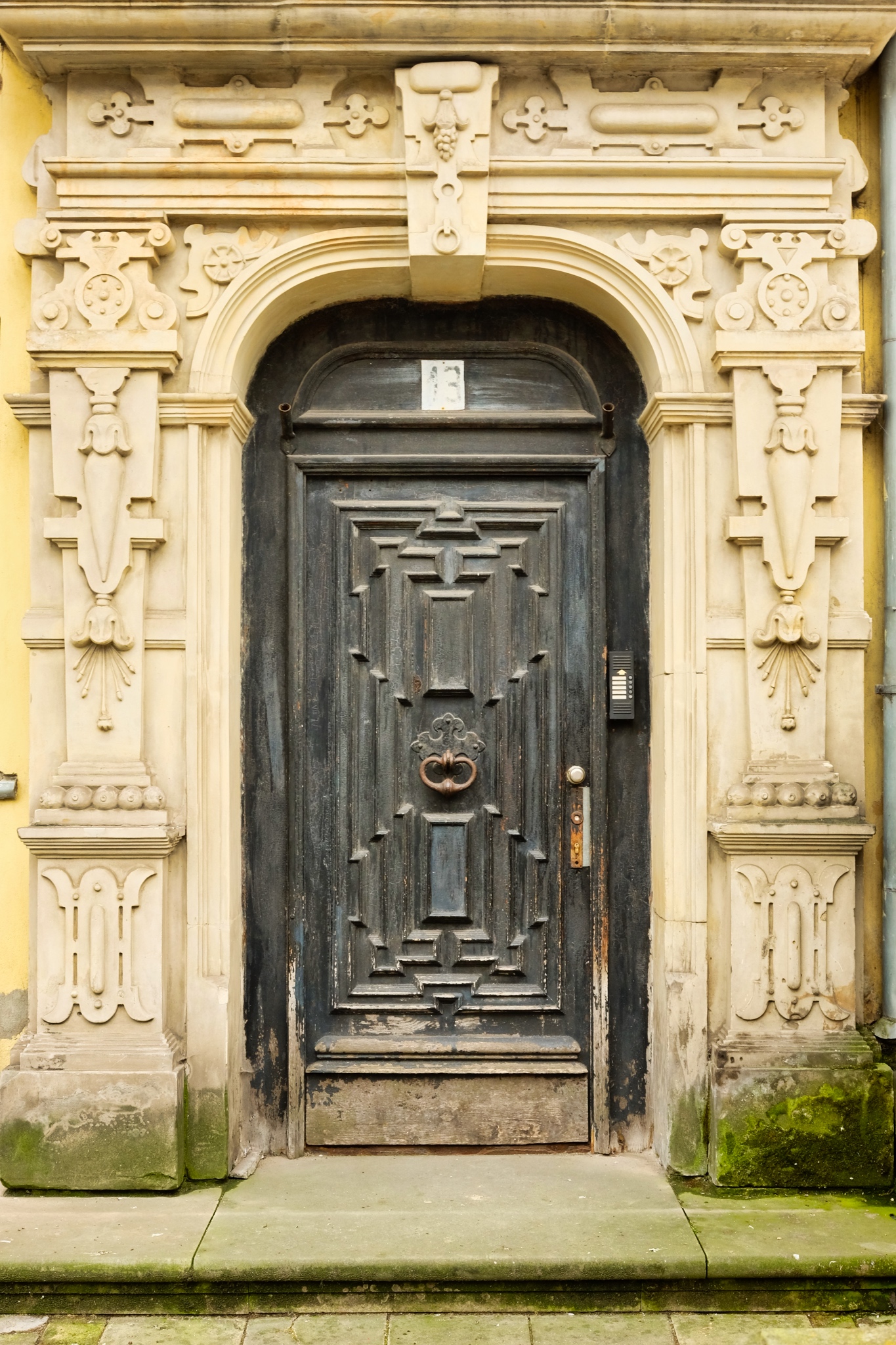 A weathered door . . . and . . .
A weathered door . . . and . . .
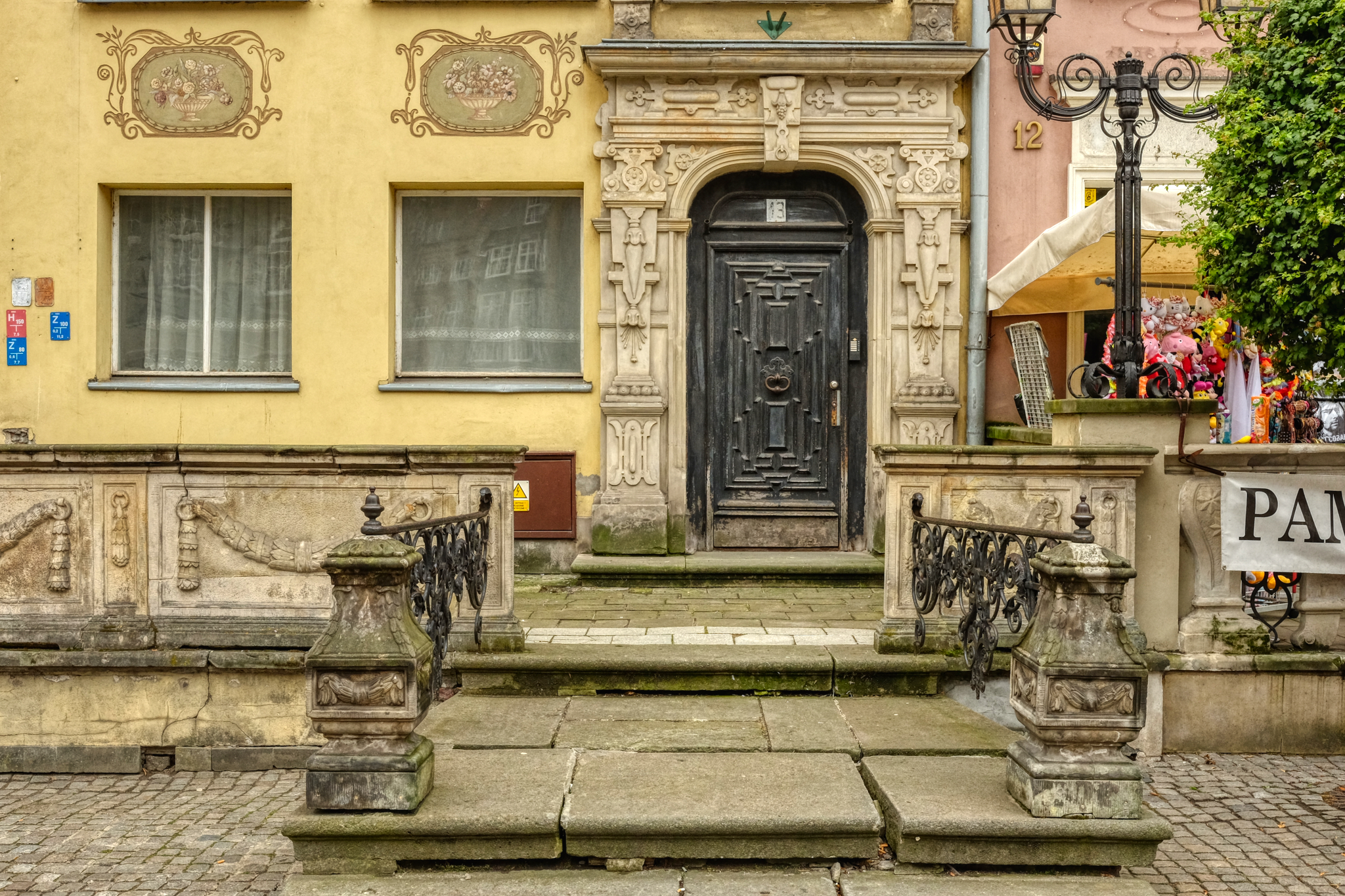 . . . and its context.
. . . and its context.
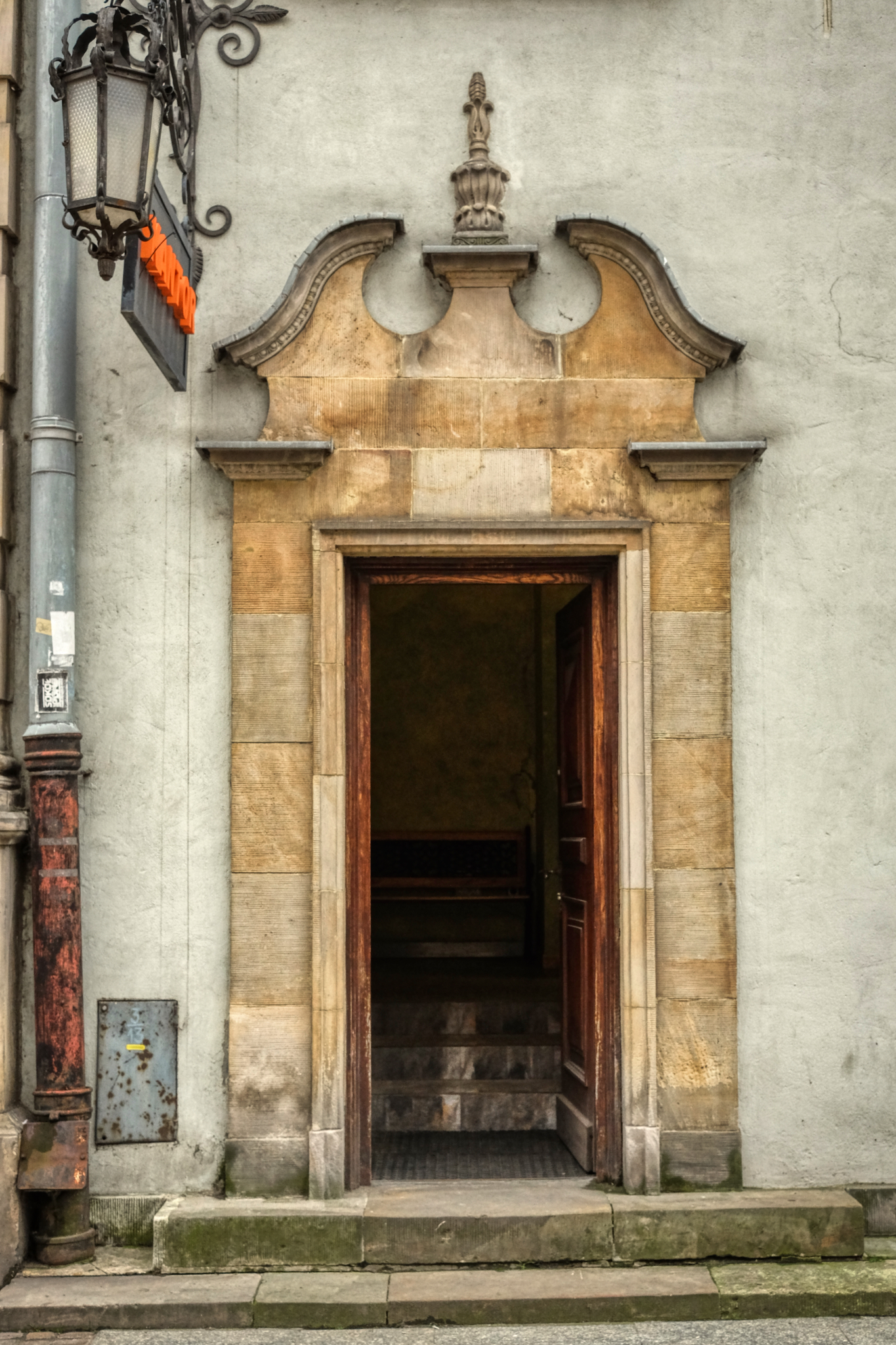 A fine, formal marble doorway.
A fine, formal marble doorway.
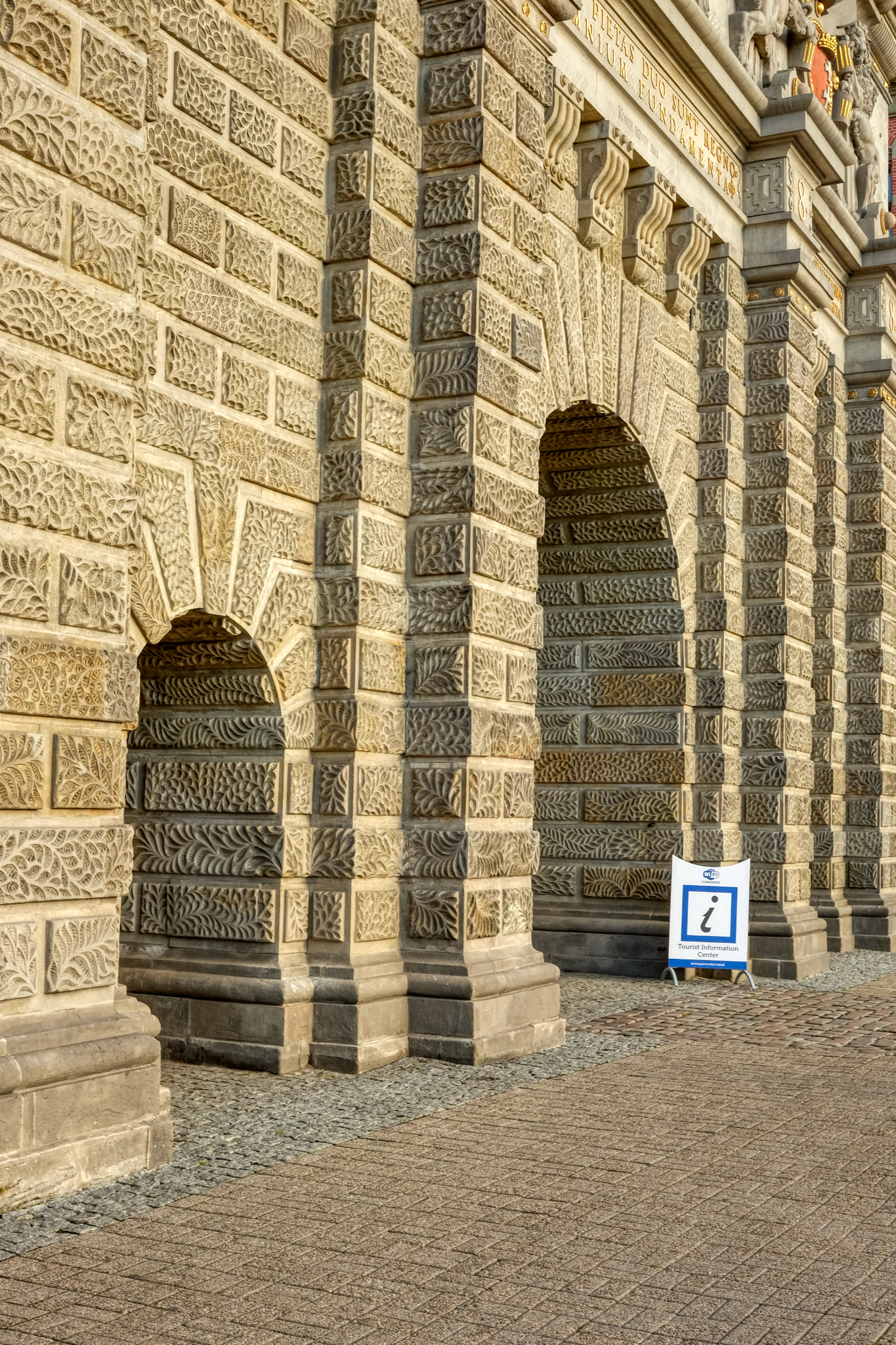 High relief stonework. Nice.
High relief stonework. Nice.
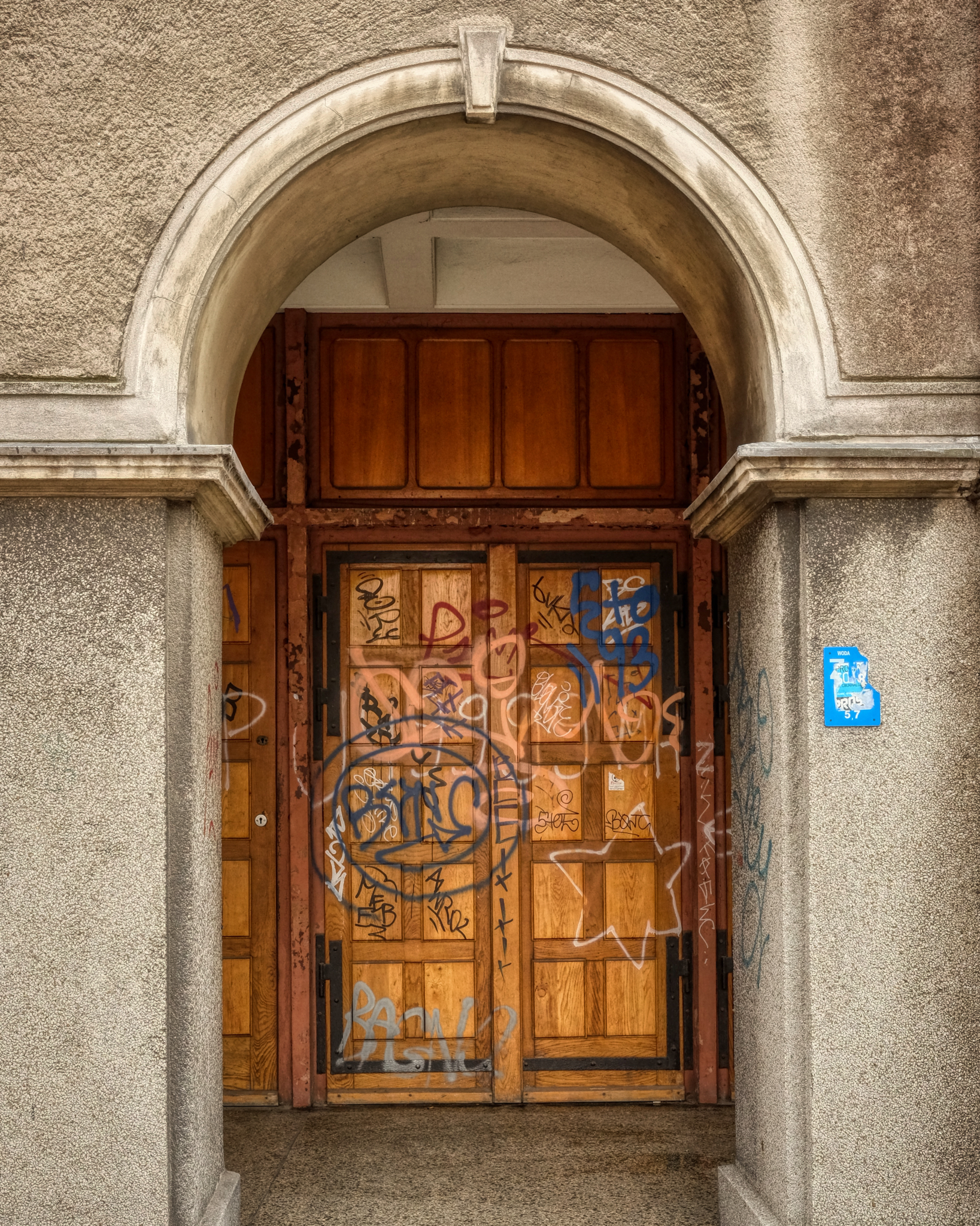 Not all of Gdańsk's doors were as appreciated as I would like to have seen.
Not all of Gdańsk's doors were as appreciated as I would like to have seen.
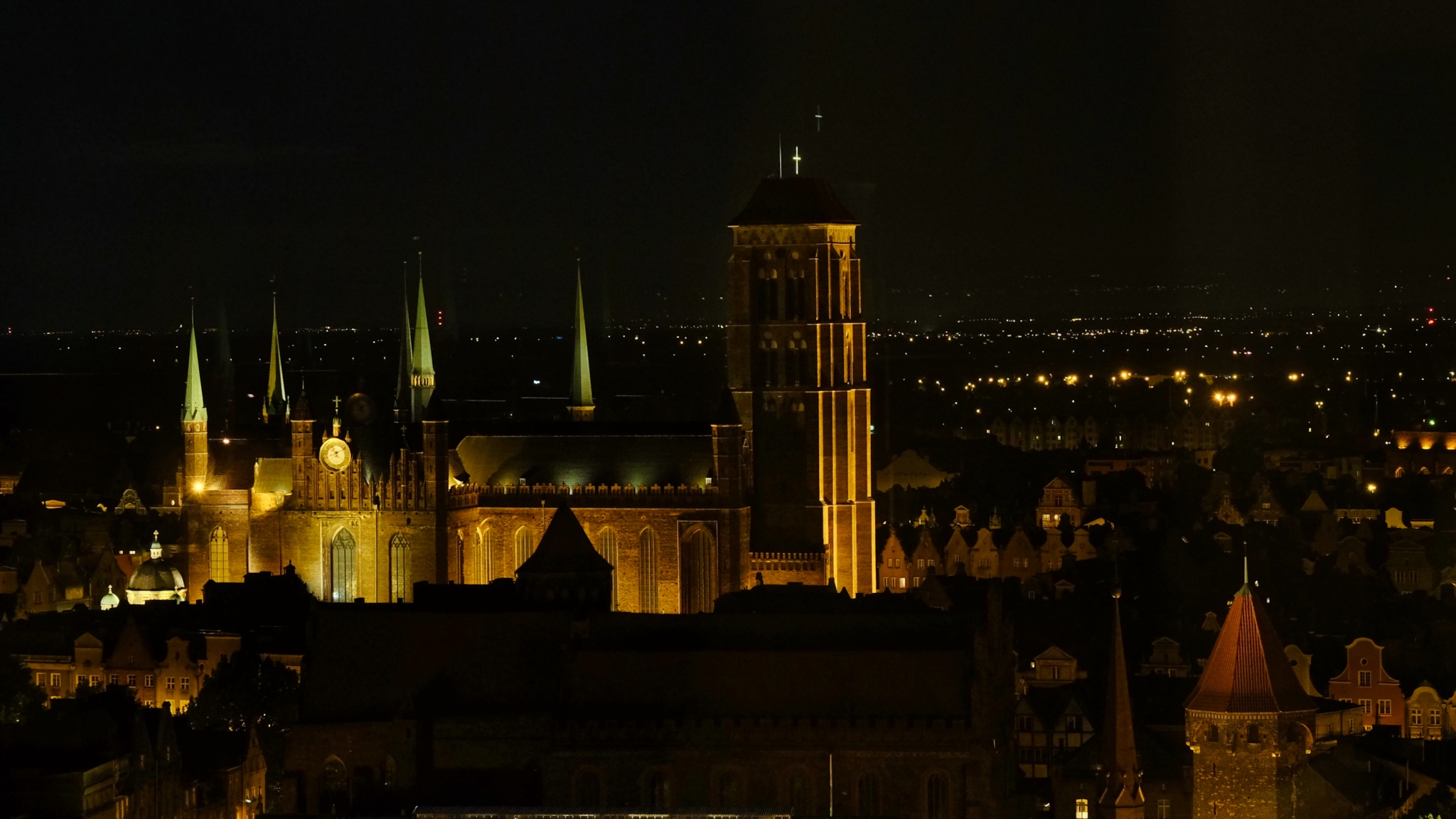 The views out over Gdańsk at night from our high rise hotel room were wonderful.
The views out over Gdańsk at night from our high rise hotel room were wonderful.
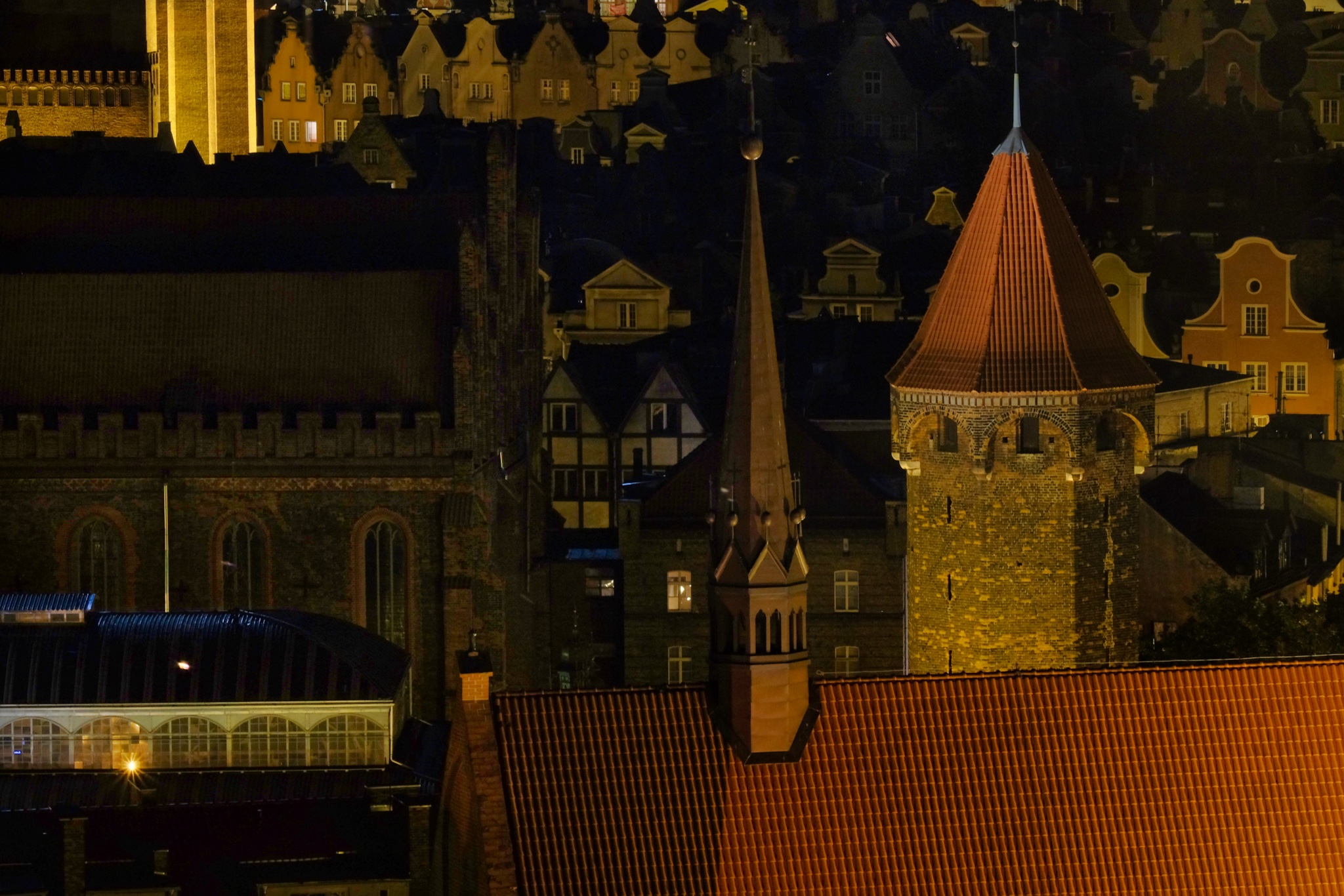 Making this photo blog about this wonderful city has made me very homesick for living in Europe . . .
Making this photo blog about this wonderful city has made me very homesick for living in Europe . . .
 I don't know if I will ever return to Gdańsk, but I know I will always have fond memories of it.
I don't know if I will ever return to Gdańsk, but I know I will always have fond memories of it.
